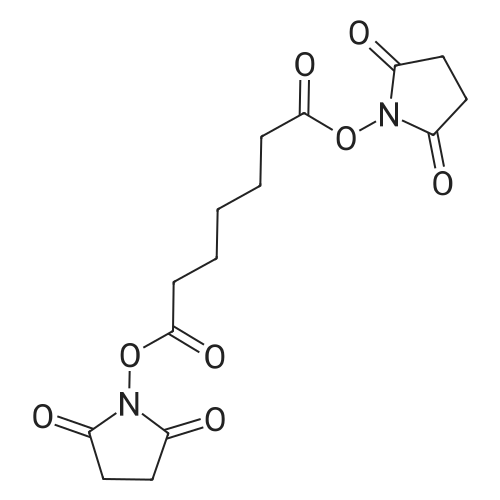Heterocyclic Building Blocks
Aliphatic Heterocycles (11786)
(1r,5s)-3-azabicyclo[3.1.0]hexane (11)1,2-dithiolane (7)1,4-diazepan-2-one (5)1,4-diazepan-5-one (9)1,4-dioxane (17)1,4-oxazepane (8)10,11-dihydro-5h-dibenzo[b,f]azepine (9)11,12-didehydro-5,6-dihydrodibenz[b,f]azocine (14)3-((((9h-fluoren-9-yl)methoxy)carbonyl)glycyl)-2,2-dimethyloxazolidine-4-carboxylic acid (8)3h-diazirine (11)4-benzyl-1,4-oxazepane (5)Tetrahydro-2h-thiopyran 1,1-dioxide (6)Benzazepin (2)Benzoxaphosphole (28)
Azetidines (2992)
1-(azetidin-1-yl)-2-bromoethan-1-one (3)1-(azetidin-3-yl)-1h-pyrazole (7)1-(phenylsulfonyl)azetidine (7)1-benzhydrylazetidine (13)1-benzylazetidine (6)1-methylazetidine (6)1-phenylazetidine (8)2,7-diazaspiro[3.5]nonane (7)2-azaspiro[3.3]heptane (11)2-imino-n-((6r,7r)-8-oxo-5-thia-1-azabicyclo[4.2.0]oct-2-en-7-yl)-2-(thiazol-4-yl)acetamide (3)3-bromoazetidine (3)3-methylazetidin-3-ol (3)3-methyleneazetidine (8)3-phenylazetidine (5)4-(azetidin-1-yl)piperidine (6)Azetidin-2-one (11)Azetidin-2-ylmethanol (6)Azetidin-3-amine (4)Azetidin-3-ol (10)Azetidin-3-yl acetate (3)Azetidin-3-ylmethanamine (3)Azetidine-2-carboxylic acid (6)Azetidine-3-carboxylic acid (5)Benzyl azetidine-1-carboxylate (9)Methyl azetidine-2-carboxylate (3)N-((6r,7r)-8-oxo-5-thia-1-azabicyclo[4.2.0]oct-2-en-7-yl)-2-phenylacetamide (5)Tert-butyl azetidine-1-carboxylate (64)
Benzimidazoles (4426)
(1h-benzo[d]imidazol-2-yl)methanamine (6)(1h-benzo[d]imidazol-2-yl)methanol (13)1,2-diphenyl-1h-benzo[d]imidazole (7)1-benzyl-1h-benzo[d]imidazole (6)1-ethyl-1h-benzo[d]imidazole (4)1-methyl-1h-benzo[d]imidazole (37)1-phenyl-1h-benzo[d]imidazole (4)1h-benzo[d]imidazol-2-amine (7)1h-benzo[d]imidazol-5-amine (4)1h-benzo[d]imidazol-6-amine (6)1h-benzo[d]imidazole-2-carbaldehyde (4)1h-benzo[d]imidazole-2-carboxylic acid (7)1h-benzo[d]imidazole-2-thiol (10)1h-benzo[d]imidazole-4-carboxylic acid (6)1h-benzo[d]imidazole-5-carboxylic acid (4)2-((pyridin-2-ylmethyl)thio)-1h-benzo[d]imidazole (7)2-(1h-benzo[d]imidazol-2-yl)ethan-1-amine (5)2-(chloromethyl)-1h-benzo[d]imidazole (9)2-benzyl-1h-benzo[d]imidazole (7)2-bromo-1h-benzo[d]imidazole (3)2-chloro-1h-benzo[d]imidazole (17)2-methyl-1h-benzo[d]imidazole (19)4-bromo-1h-benzo[d]imidazole (10)4-methyl-1h-benzo[d]imidazole (7)5,6-dichloro-1h-benzo[d]imidazole (4)5-bromo-1h-benzo[d]imidazole (10)5-chloro-1h-benzo[d]imidazole (6)5-methoxy-1h-benzo[d]imidazole (2)5-methyl-1h-benzo[d]imidazole (6)6-chloro-1h-benzo[d]imidazole (15)Methyl (1h-benzo[d]imidazol-2-yl)carbamate (5)Methyl 1h-benzo[d]imidazole-2-carboxylate (3)Tert-butyl 1h-benzo[d]imidazole-1-carboxylate (5)Benzimidazol-amine (21)Benzimidazole-carboxylate (6)Benzimidazole-carboxylic acid (43)Benzimidazole-hydrochloride (4)Benzoimidazol-methanol (3)Benzoimidazol-one (41)Benzoimidazole-thione (3)Bromo-benzimidazole (73)Chloro-benzimidazole (5)Dimethyl-benzoimidazole (19)Dioxaborolane-benzimidazole (1)Hydroxy-benzimidazole (17)Methylbenzimidazole (2)Phenyl-benzoimidazole (64)Piperidine-benzimidazole (4)Trifluoromethyl-benzimidazole (3)
Benzofurans (3710)
1-(benzofuran-2-yl)ethan-1-one (3)2,2-dimethyl-2,3-dihydrobenzofuran (7)2,3-dihydrobenzofuran-3-amine (11)2,3-dihydrobenzofuran-5-amine (3)2,3-dihydrobenzofuran-7-amine (5)2-(benzofuran-3-yl)acetic acid (3)2-bromodibenzo[b,d]furan (6)2-ethylbenzofuran (3)2-methylbenzofuran (5)3-methylbenzofuran (4)4-bromobenzofuran (3)4-phenyldibenzo[b,d]furan (8)5,7,8-trimethylchromane (3)5-bromo-2,3-dihydrobenzofuran (6)5-chloro-2,3-dihydrobenzofuran (5)5-fluoro-2,3-dihydrobenzofuran (5)5-methoxyisobenzofuran-1(3h)-one (5)6-bromo-2,3-dihydrobenzofuran (7)6-fluoro-2,3-dihydrobenzofuran (6)6-methoxybenzofuran (4)7-bromo-2,3-dihydrobenzofuran (6)7-bromobenzofuran (6)7-fluoro-2,3-dihydrobenzofuran (6)Benzofuran-2(3h)-one (7)Benzofuran-2-carbaldehyde (5)Benzofuran-2-carboxylic acid (21)Benzofuran-2-ylboronic acid (8)Benzofuran-3(2h)-one (15)Benzofuran-3-carboxylic acid (6)Benzofuran-3-yl(phenyl)methanone (11)Methyl benzofuran-2-carboxylate (6)Aminobenzofuran (5)Benzofuran-carboxylate (5)Benzofuran-carboxylic acid (67)Benzofuran-hydrochloride (30)Benzofuran-methanol (2)Benzofuran-one (63)Benzofuranopyrimidine (3)Bromobenzofuran (10)Chlorobenzofuran (6)Chloroisobenzofuran (9)Dihydrobenzofuran (81)Dihydroisobenzofuran (7)Dimethoxyisobenzofuran (4)Epoxyisobenzofuran (3)Ethylbenzofuran (3)Fluorobenzofuran (19)Fluoroisobenzofuran (5)Hexahydroisobenzofuran (4)Hydroxy-benzofuran (7)Hydroxybenzofuran (7)Hydroxyisobenzofuran (2)Iodo-benzofuran (12)Iodoisobenzofuran (2)Isobenzofuran (25)Methoxybenzofuran (14)Methoxyisobenzofuran (4)Methylbenzofuran (25)Methylbenzofuro (12)Nitrobenzofuran (7)Nitroisobenzofuran (3)Phenyl-benzofuran (3)Piperidine-benzofuran (4)Tetrahydrobenzofuran (4)
Benzothiazoles (2415)
2-(methylthio)benzo[d]thiazole (6)2-bromobenzo[d]thiazole (28)2-chlorobenzo[d]thiazole (21)2-methylbenzo[d]thiazole (26)4-bromobenzo[d]thiazole (9)4-chlorobenzo[d]thiazole (7)4-fluorobenzo[d]thiazole (6)4-methylbenzo[d]thiazole (10)5-chlorobenzo[d]thiazole (5)5-nitrobenzo[d]thiazole (3)6-bromobenzo[d]thiazole (7)6-chlorobenzo[d]thiazole (6)6-fluorobenzo[d]thiazole (5)6-methoxybenzo[d]thiazole (6)6-methylbenzo[d]thiazole (6)6-nitrobenzo[d]thiazole (3)7-bromobenzo[d]thiazole (8)7-chlorobenzo[d]thiazole (6)7-fluorobenzo[d]thiazole (9)Benzo[d]thiazol-2-amine (30)Benzo[d]thiazol-5-amine (3)Benzo[d]thiazol-6-amine (3)Benzo[d]thiazol-6-ol (2)Benzo[d]thiazole-2-carbonitrile (11)Benzo[d]thiazole-2-thiol (11)Benzo[d]thiazole-6-carboxylic acid (5)Methyl benzo[d]thiazole-6-carboxylate (5)Benzothiazol-amine (5)Benzothiazole-carboxylate (15)Benzothiazole-carboxylic acid (27)Benzothiazole-chloride (28)Benzothiazole-nitrile (14)Benzothiazole-thione (9)Benzothiazolyl-bromide (4)Bromobenzothiazole (7)Chlorobenzothiazole (1)Dichlorobenzothiazole (10)Hydroxy-benzothiazole (15)Methoxybenzothiazole (4)Methylbenzothiazole (7)Nitrobenzothiazole (1)Trifluoromethyl-benzothiazole (13)
Benzothiophenes (1109)
2-(benzo[b]thiophen-2-yl)-4,5-dihydrooxazole (10)2-methylbenzo[b]thiophene (4)3-bromobenzo[b]thiophene (5)3-chlorobenzo[b]thiophene (6)3-methylbenzo[b]thiophene (4)4,5,6,7-tetrahydrobenzo[b]thiophene (21)5-bromobenzo[b]thiophene (3)5-chlorobenzo[b]thiophene (4)6-bromobenzo[b]thiophene (4)7-bromobenzo[b]thiophene (5)Benzo[b]thiophen-2-amine (5)Benzo[b]thiophen-2-ylboronic acid (5)Benzo[b]thiophene-2-carbaldehyde (6)Benzo[b]thiophene-2-carbonitrile (3)Benzo[b]thiophene-2-carboxylic acid (32)Benzo[b]thiophene-3-carbaldehyde (6)Ethyl benzo[b]thiophene-2-carboxylate (9)Methyl benzo[b]thiophene-2-carboxylate (27)Benzothiophene-amine (4)Benzothiophene-bromide (29)Benzothiophene-carboxylate (29)Benzothiophene-carboxylic acid (58)Benzothiophene-dioxaborolane (8)Benzothiophene-nitrile (2)Benzothiophene-piperazine (4)
Benzoxazoles (2793)
2-chlorobenzo[d]oxazole (11)2-methylbenzo[d]oxazole (26)2-phenylbenzo[d]oxazole (22)3-phenylbenzo[d]oxazol-3-ium (8)5-bromobenzo[d]oxazole (3)5-chlorobenzo[d]oxazole (5)5-methylbenzo[d]oxazole (3)6-chlorobenzo[d]oxazole (4)Benzo[d]oxazol-2-amine (16)Benzo[d]oxazole-2-thiol (6)Methyl benzo[d]oxazole-2-carboxylate (3)Amino-benzoxazole (20)Benzoxazol-amine (9)Benzoxazol-one (3)Benzoxazole-carboxylate (1)Benzoxazole-carboxylic acid (25)Benzoxazole-chloride (4)Benzoxazole-methanol (2)Dioxaborolane-benzoxazole (3)Methyl-benzoxazole (87)Phenyl-benzoxazole (4)Trifluoromethyl-benzoxazole (1)
Carbazole Series (494)
1-methyl-9h-carbazole (7)2,3,4,9-tetrahydro-1h-carbazol-1-one (7)2-bromo-9h-carbazole (4)3,9-diphenyl-9h-carbazole (7)3-(tert-butyl)-9h-carbazole (3)3-bromo-9-phenyl-9h-carbazole (16)3-bromo-9h-carbazole (4)3-chloro-9h-carbazole (2)3-methyl-9h-carbazole (3)7h-benzo[c]carbazole (5)9-([1,1'-biphenyl]-4-yl)-9h-carbazole (9)9-(p-tolyl)-9h-carbazole (5)9-benzyl-9h-carbazole (7)9-ethyl-9h-carbazole (11)Carbazole-carboxylic acid (8)Carbazolyl-phenyl-boronic acid (13)Carbazolyl-phenyl-boronic acid/ester (7)
Dioxolanes (1577)
(3as,6as)-tetrahydrofuro[3,4-d][1,3]dioxole (6)1,3-dioxolan-2-one (11)2,2-difluorobenzo[d][1,3]dioxole (24)2,2-dimethyl-1,3-dioxolane (28)2,2-dimethylbenzo[d][1,3]dioxole (7)2-phenyl-1,3-dioxolane (18)4-bromobenzo[d][1,3]dioxole (6)4-methyl-1,3-dioxolane (5)5,6-dihydro-[1,3]dioxolo[4,5-g]isoquinolino[3,2-a]isoquinolin-7-ium (4)5-bromobenzo[d][1,3]dioxole (12)5-chlorobenzo[d][1,3]dioxole (5)5-nitrobenzo[d][1,3]dioxole (4)9-((3as,4r,6ar)-tetrahydrofuro[3,4-d][1,3]dioxol-4-yl)-9h-purine (7)Benzo[d][1,3]dioxol-5-amine (3)Benzothiophene-dioxaborolane (8)Dioxaborolane-benzyl (1)Dioxaborolane-indazole-carboxylate (3)Dioxaborolane-indoline (1)Dioxaborolane-phenol (36)
Furans (6964)
2,3-dihydrofuran-3-one (9)2-(bromomethyl)furan (3)2-(chloromethyl)furan (3)2-(furan-2-yl)-4,4,5,5-tetramethyl-1,3,2-dioxaborolane (6)2-bromofuran (21)2-chlorofuran (3)2-methylfuran (29)2-nitrofuran (9)3-bromofuran (11)4-methylisobenzofuran-1(3h)-one (3)5-nitro-2,3-dihydrobenzofuran (3)5-phenylfuran-2-carbaldehyde (9)5-phenylfuran-2-carboxylic acid (6)6-chloro-2,3-dihydrobenzofuran (3)6-fluoroisobenzofuran-1(3h)-one (3)7-chloro-2,3-dihydrobenzofuran (3)Ethyl furan-2-carboxylate (6)Furan-2,5-dione (8)Furan-2-carbaldehyde (20)Furan-2-carbonitrile (4)Furan-2-carboxylic acid (28)Furan-2-ylmethanol (6)Furan-3-carboxylic acid (9)Furo[3,2-b]pyridine (7)Furo[3,2-c]pyridine (7)Methyl furan-2-carboxylate (15)N-(furan-2-ylmethyl)aniline (5)Aminodihydrofuran (7)Aminofuran (6)Aminofuro (1)Bromo-naphtho-benzofuran (2)Bromofuran (32)Chlorofuran (2)Chlorofuro (11)Cyanofuran (54)Dibromofuran (5)Dichlorofuro (3)Dihydrofuran (31)Dihydrofuro (15)Dihydroxydihydrofuran (8)Dimethylfuran (10)Formylfuran (10)Furan-one (180)Furanopyrimidine (12)Furochromen (3)Furopyridine (27)Furopyrrole (5)Hexahydrofuro (6)Hydroxydihydrofuran (34)Methyldihydrofuran (11)Methylfuran (58)Nitrofuran (10)Trifluoromethyl-furan (17)
Imidazoles (3886)
1,1'-diphenyl-4,4',5,5'-tetrahydro-1h,1'h-2,2'-biimidazole (11)1,2-dimethyl-1h-imidazole (6)1,3-diphenyl-1h-imidazol-3-ium (14)1,3-diphenyl-4,5-dihydro-1h-imidazol-3-ium (5)1-(imidazo[1,2-a]pyridin-3-yl)ethan-1-one (3)1-(phenylsulfonyl)-1h-imidazole (5)1-benzyl-1h-imidazole (20)1-decyl-3-methyl-1h-imidazol-3-ium (14)1-ethyl-1h-imidazole (3)1-isopropyl-1h-imidazole (5)1-phenyl-1h-imidazole-4-carboxylic acid (5)1-trityl-1h-imidazole (15)1h-imidazo[4,5-b]pyridine (14)1h-imidazo[4,5-c]pyridine (12)1h-imidazol-2-amine (6)1h-imidazole-2-carboxylic acid (7)1h-imidazole-4-carbonitrile (2)1h-imidazole-4-carboxylic acid (4)2-(pyridin-2-yl)-1h-benzo[d]imidazole (5)2-bromo-1h-imidazole (13)2-bromoimidazo[1,2-a]pyridine (5)2-ethyl-1h-imidazole (3)2-methyl-1-phenyl-1h-imidazole (10)2-methylimidazo[1,2-a]pyridine (8)2-phenyl-1h-benzo[d]imidazole (26)2-phenyl-1h-imidazole (24)2-phenylimidazo[1,2-a]pyridine (12)2-propyl-1h-imidazole (5)3-bromoimidazo[1,2-a]pyrazine (6)3-bromoimidazo[1,2-a]pyridine (26)3-bromoimidazo[1,2-a]pyrimidine (6)3-iodoimidazo[1,2-a]pyridine (10)3-methylimidazo[1,2-a]pyridine (3)4,5,6,7-tetrahydro-3h-imidazo[4,5-c]pyridine (5)4-(1h-imidazol-1-yl)benzaldehyde (7)4-bromo-1-phenyl-1h-imidazole (9)4-methyl-1-phenyl-1h-imidazole (6)4-methyl-1h-imidazole (6)4-phenyl-1h-imidazole (8)5,6,7,8-tetrahydroimidazo[1,2-a]pyrazine (15)5,6,7,8-tetrahydroimidazo[1,2-a]pyridine (12)5,6,7,8-tetrahydroimidazo[1,5-a]pyrazine (11)5-benzyl-1h-imidazole (1)5-bromoimidazo[1,2-a]pyridine (6)5-chloro-1h-imidazole (2)5-fluoro-1h-benzo[d]imidazole (7)5-iodo-1h-imidazole (4)5-methylimidazo[1,2-a]pyridine (4)5-phenyl-1h-imidazole (6)6,7-dihydro-5h-pyrrolo[1,2-a]imidazole (9)6-bromoimidazo[1,2-a]pyrazine (11)6-bromoimidazo[1,2-a]pyridine (14)6-bromoimidazo[1,2-a]pyrimidine (5)6-chloroimidazo[1,2-a]pyridine (4)6-chloroimidazo[1,2-b]pyridazine (30)7-methylimidazo[1,2-a]pyridine (3)8-bromoimidazo[1,2-a]pyrazine (7)8-bromoimidazo[1,2-a]pyridine (15)8-chloroimidazo[1,2-a]pyrazine (8)8-chloroimidazo[1,2-a]pyridine (7)8-fluoroimidazo[1,2-a]pyridine (3)8-methylimidazo[1,2-a]pyridine (9)Ethyl 1h-imidazole-2-carboxylate (6)Ethyl 2-(imidazo[1,2-a]pyridin-3-yl)acetate (3)Ethyl imidazo[1,2-a]pyridine-2-carboxylate (25)Ethyl imidazo[1,2-a]pyridine-3-carboxylate (13)Imidazo[1,2-a]pyridin-3-amine (7)Imidazo[1,2-a]pyridin-8-amine (7)Imidazo[1,2-a]pyridin-8-ol (3)Imidazo[1,2-a]pyridine-2-carbaldehyde (8)Imidazo[1,2-a]pyridine-2-carboxylic acid (21)Imidazo[1,2-a]pyridine-3-carbaldehyde (9)Imidazo[1,2-a]pyridine-3-carboxylic acid (14)Imidazo[1,2-a]pyridine-7-carboxylic acid (3)Imidazo[1,2-a]pyridine-8-carboxylic acid (6)Imidazo[1,2-a]pyrimidine-3-carboxylic acid (5)Imidazo[1,2-c]pyrimidine (6)Imidazo[1,5-a]pyrazine (9)Imidazo[2,1-b]thiazole (14)Methyl 1h-imidazole-2-carboxylate (4)Methyl 1h-imidazole-5-carboxylate (6)Methyl imidazo[1,2-a]pyridine-8-carboxylate (3)Tert-butyl 1h-imidazole-1-carboxylate (6)Amino-imidazole (65)Aminoimidazole-carboxylate (15)Benzyl-methyl-imidazole (2)Biimidazole (5)Bromo-imidazole (72)Bromo-imidazopyridine (62)Bromo-methyl-imidazole (75)Bromoimidazo (102)Bromoimidazole carboxylate (18)Chloro-imidazopyridine (63)Chloroimidazo (58)Dibromoimidazo (8)Dichloroimidazo (9)Dihydroimidazo (25)Dimethyl-imidazol (64)Dimethylimidazo (7)Dimethylimidazolium (6)Fluoroimidazo (20)Hydroxy-imidazopyridine (3)Imidazol-amine (77)Imidazol-ethanol (10)Imidazol-hydrochloride (49)Imidazol-methanol (17)Imidazol-pyridine (80)Imidazole-carboxylate (57)Imidazole-carboxylic acid (38)Imidazolyl-ethanol (2)Imidazolyl-nitrile (28)Imidazolyl-pyrimidine (2)Imidazopyrazine (76)Imidazopyridazine (57)Imidazopyridin-amine (31)Imidazopyridin-one (22)Imidazopyridine (491)Imidazopyridine-carbonitrile (5)Imidazopyridine-carboxylate (60)Imidazopyridine-carboxylic acid (49)Imidazopyrimidine (71)Imidazoquinoline (2)Imidazothiazole (36)Iodoimidazo (15)Iodomethyl-imidazole (8)Methoxyimidazo (13)Methyl-imidazopyridine (67)Methyl-nitro-imidazole (35)Methylimidazo (121)Methylimidazole (4)Methylimidazolium (26)Nitro-imidazole-carboxylate (4)Nitroimidazole (16)Phenylimidazo (6)Phenylimidazole (5)Piperidin-imidazolyl (28)Pyrroloimidazole (9)Tetrahydroimidazo (40)Trifluoromethyl-imidazole (30)Trifluoromethyl-imidazopyridine (25)
Imidazolidines (1145)
(3ar,6as)-tetrahydro-1h-thieno[3,4-d]imidazol-2(3h)-one (18)1-phenylimidazolidin-2-one (8)3-phenyl-2-thioxoimidazolidin-4-one (6)3-phenylimidazolidine-2,4-dione (4)Imidazolidin-2-one (16)Imidazolidine-2,4-dione (17)Benzylimidazolidine (7)Dioxoimidazolidin (2)Imidazolidin-one (25)Methylimidazolidine (3)Oxoimidazolidine (8)Thioxoimidazolidin (9)
Indazoles (3078)
(1h-indazol-4-yl)boronic acid (3)(1h-indazol-6-yl)boronic acid (4)1-(1h-indazol-1-yl)ethan-1-one (7)1-(tetrahydro-2h-pyran-2-yl)-1h-indazole (17)1-benzyl-1h-indazole (7)1-ethyl-1h-indazole (7)1h-indazol-3-amine (23)1h-indazol-3-ol (10)1h-indazol-4-amine (12)1h-indazol-4-ol (4)1h-indazol-5-amine (3)1h-indazol-6-amine (5)1h-indazol-6-ol (6)1h-indazol-7-amine (6)1h-indazole-3-carbaldehyde (19)1h-indazole-3-carbonitrile (9)1h-indazole-3-carboxylic acid (25)1h-indazole-4-carboxylic acid (9)1h-indazole-5-carboxylic acid (4)1h-indazole-7-carboxylic acid (5)2,3-dimethyl-2h-indazole (4)2-methyl-2h-indazole (34)3-(piperidin-4-yl)-1h-indazole (5)3-chloro-1h-indazole (13)4,5,6,7-tetrahydro-1h-indazole (12)4-chloro-1h-indazole (18)4-fluoro-1h-indazole (22)4-methoxy-1h-indazole (7)4-methyl-1h-indazole (12)4-nitro-1h-indazole (10)5-bromo-1h-indazole (14)5-chloro-1h-indazole (9)5-methoxy-1h-indazole (5)5-nitro-1h-indazole (5)6-(trifluoromethyl)-1h-indazole (6)6-bromo-1h-indazole (23)6-chloro-1h-indazole (14)6-fluoro-1h-indazole (15)6-methoxy-1h-indazole (14)6-methyl-1h-indazole (9)6-nitro-1h-indazole (9)7-bromo-1h-indazole (18)7-chloro-1h-indazole (7)7-fluoro-1h-indazole (12)7-methoxy-1h-indazole (5)7-nitro-1h-indazole (11)Methyl 1h-indazole-3-carboxylate (23)Methyl 1h-indazole-4-carboxylate (10)Methyl 1h-indazole-5-carboxylate (3)Methyl 1h-indazole-6-carboxylate (9)Methyl 1h-indazole-7-carboxylate (8)Methyl 2-methyl-2h-indazole-3-carboxylate (3)Tert-butyl 1h-indazole-1-carboxylate (29)Amino-indazole (14)Amino-indazole-carboxylate (7)Bromo-fluoro-indazole (32)Bromo-indazol-amine (4)Bromo-indazole (132)Bromo-indazole-carboxylate (22)Bromo-methoxy-indazole (12)Bromo-nitro-indazole (10)Bromomethyl-indazole (17)Chlorindazole-carboxylic-acid (5)Chloro-indazole (36)Chloro-indazole-amine (1)Chloro-indazole-carboxylate (2)Chloro-methyl-indazole (19)Dimethyl-indazole (11)Dioxaborolan-indazole (23)Dioxaborolane-indazole-carboxylate (3)Fluoro-indazol-amine (19)Fluoro-indazole-carboxylate (17)Fluoro-indazole-carboxylic-acid (2)Fluoro-methyl-indazole (59)Indazol-amide (3)Indazol-amine (67)Indazol-boronic acid (29)Indazol-one (7)Indazole-benzene (25)Indazole-carbonitrile (19)Indazole-carboxylate (29)Indazole-carboxylic acid (48)Indazole-hydrochloride (2)Indazole-hydroxyl (6)Indazole-methanol (5)Iodo-indazol-amine (2)Iodo-indazole (52)Iodo-indazole-carboxylate (3)Iodomethyl-indazole (19)Methoxy-indazole-carboxylate (1)Methoxyindazole-carboxylic-acid (1)Methyl-indazolamide (9)Methyl-nitro-indazole (23)Methylindazole (5)Nitro-indazol-amine (2)Tetrahydropyran-indazole (4)Trifluoromethyl-indazole (8)
Indoles (7659)
(1-(tert-butoxycarbonyl)-1h-indol-2-yl)boronic acid (17)(1h-indol-2-yl)boronic acid (3)(1h-indol-2-yl)methanol (7)(3as,7as)-octahydro-1h-indole (5)(9h-fluoren-9-yl)methyl (2-(1h-indol-3-yl)ethyl)carbamate (12)1,2,3,4-tetrahydrocyclopenta[b]indole (5)1,2-dimethyl-1h-indole (4)1-(1h-indol-1-yl)ethan-1-one (9)1-(1h-indol-3-yl)ethan-1-one (6)1-(phenylsulfonyl)-1h-indole (26)1-(triisopropylsilyl)-1h-pyrrolo[2,3-b]pyridine (8)1-benzyl-1h-indole (10)1-ethyl-1h-indole (7)1-methyl-1h-indole (50)1-methyl-1h-indole-2-carboxylic acid (8)1-methyl-1h-indole-3-carbaldehyde (9)1-methyl-1h-pyrrolo[2,3-b]pyridine (14)1-phenyl-1h-indole (5)1h-indol-3-ol (5)1h-indol-3-yl acetate (5)1h-indol-4-amine (9)1h-indol-4-ol (7)1h-indol-5-ol (4)1h-indol-6-amine (16)1h-indol-6-ol (6)1h-indol-7-amine (10)1h-indole-2-carbaldehyde (18)1h-indole-2-carbonitrile (9)1h-indole-3-carbonitrile (17)1h-indole-3-carboxylic acid (27)1h-indole-4-carboxylic acid (9)1h-indole-5-carbonitrile (5)1h-indole-5-carboxylic acid (4)1h-indole-6-carbonitrile (4)1h-indole-6-carboxylic acid (5)1h-indole-7-carbonitrile (6)1h-indole-7-carboxylic acid (7)1h-pyrrolo[2,3-b]pyridine-3-carbaldehyde (7)1h-pyrrolo[2,3-b]pyridine-5-carbaldehyde (5)2,3,4,5-tetrahydro-1h-pyrido[4,3-b]indole (12)2,3,4,9-tetrahydro-1h-pyrido[3,4-b]indole (13)2,3-dimethyl-1h-indole (9)2-(1,3,2-dioxaborolan-2-yl)-1-methyl-1h-indole (6)2-(1h-indol-1-yl)acetic acid (5)2-(1h-indol-3-yl)acetic acid (26)2-(1h-indol-3-yl)ethan-1-amine (4)2-(1h-indol-3-yl)ethan-1-ol (10)2-(2-methyl-1h-indol-3-yl)acetic acid (5)2-(4-fluorophenyl)-1h-indole (4)2-methyl-1h-indole-3-carbaldehyde (3)2-methyl-1h-pyrrolo[2,3-b]pyridine (12)3-(1-oxoisoindolin-2-yl)piperidine-2,6-dione (21)3-(1h-indol-3-yl)propanoic acid (4)3-(piperidin-4-yl)-1h-indole (8)3-iodo-1h-pyrrolo[2,3-b]pyridine (11)3-methyl-1h-indole (30)3h-indole (8)4-bromo-1h-indole (25)4-chloro-1h-indole (21)4-fluoro-1h-indole (24)4-fluoro-1h-pyrrolo[2,3-b]pyridine (6)4-fluoroindoline-2,3-dione (3)4-methoxy-1h-indole (11)4-methyl-1h-indole (14)4-nitro-1h-indole (6)5-(4,4,5,5-tetramethyl-1,3,2-dioxaborolan-2-yl)-1h-indole (5)5-(benzyloxy)-1h-indole (8)5-bromo-1-methyl-1h-indole (4)5-chloro-1h-indole (36)5-chloro-1h-indole-2-carboxylic acid (6)5-chloro-1h-pyrrolo[2,3-b]pyridine (13)5-fluoro-1h-indole (26)5-fluoro-1h-pyrrolo[2,3-b]pyridine (9)5-fluoroindolin-2-one (4)5-methoxy-1h-indole (11)5-methoxy-2-methyl-1h-indole (5)5-methyl-1h-indole (20)5-nitro-1h-indole (6)6-(trifluoromethyl)-1h-indole (5)6-bromo-1-methyl-1h-indole (3)6-bromo-1h-indole (15)6-bromo-1h-pyrrolo[2,3-b]pyridine (6)6-chloro-1h-indole (19)6-chloro-1h-pyrrolo[2,3-b]pyridine (13)6-fluoro-1h-indole (17)6-methoxy-1h-indole (12)6-methyl-1h-indole (19)6-methyl-1h-pyrrolo[2,3-b]pyridine (8)6-nitro-1h-indole (8)7-bromo-1h-indole (24)7-bromoindoline-2,3-dione (3)7-chloro-1h-indole (23)7-fluoro-1h-indole (18)7-fluoro-1h-indole-2-carboxylic acid (5)7-methoxy-1h-indole (8)7-methyl-1h-indole (30)7-nitro-1h-indole (11)9h-pyrido[3,4-b]indole (5)Benzo[cd]indol-2(1h)-one (5)Ethyl 1h-indole-3-carboxylate (6)Ethyl 5-chloro-1h-indole-2-carboxylate (5)Ethyl 5-fluoro-1h-indole-2-carboxylate (5)Ethyl 6-chloro-1h-indole-2-carboxylate (5)Ethyl 7-chloro-1h-indole-2-carboxylate (5)Methyl 1h-indole-3-carboxylate (21)Methyl 1h-indole-4-carboxylate (9)Methyl 1h-indole-5-carboxylate (7)Methyl 1h-indole-6-carboxylate (9)Methyl 1h-indole-7-carboxylate (7)Methyl 2-(1h-indol-3-yl)acetate (3)N-(2-(1h-indol-3-yl)ethyl)acetamide (5)Spiro[indoline-3,4'-piperidin]-2-one (18)Tert-butyl 1h-indole-1-carboxylate (18)Tert-butyl 1h-pyrrolo[2,3-b]pyridine-1-carboxylate (9)Tert-butyl 2-(1,3,2-dioxaborolan-2-yl)-1h-indole-1-carboxylate (6)Tert-butyl 3-(hydroxymethyl)-1h-indole-1-carboxylate (10)Tert-butyl 3-bromo-1h-indole-1-carboxylate (9)Tert-butyl 3-iodo-1h-indole-1-carboxylate (7)Tert-butyl 5-methoxy-1h-indole-1-carboxylate (6)Tryptophan (23)Aminoindole (5)Azaindole (44)Benzoindole (7)Benzyloxyindole (1)Biindolinylidene (1)Bromo-indole-carboxylate (43)Bromo-indole-carboxylic acid (28)Bromo-methyl-indole (2)Bromoindole (4)Chlorindole-carboxylic-acid (2)Chloro-indole-carboxylate (33)Chloro-methyl indole (89)Chloroindole (4)Cyanoindole (5)Dihydroindolo (14)Dimethyl-indole (83)Dioxaborolan-indole (73)Fluorindole-carboxylic acid (23)Fluorindole-carboxylic-acid (4)Fluoro-indole-carboxylate (43)Fluoroindole (5)Fluoromethyl-indole (88)Formyl-indole-carboxylate (14)Formylindole (44)Hydroxyindole (7)Hydroxyisoindoline (2)Hydroxymethy-indole-carboxylate (2)Indol-amine (73)Indol-methanamine (12)Indol-methanol (5)Indol-one (194)Indole-boronic acid (73)Indole-carbonitrile (24)Indole-ethanol (4)Indole-ethylamine (3)Indole-hydrochloride (83)Indole-hydroxyl (104)Indolecarboxylate (2)Indolecarboxylic (169)Iodo-indole (37)Isoindole (26)Methoxy-indole-carboxylate (23)Methoxy-methyl-indole (74)Methoxyindole (9)Methyl-nitro-indole (4)Methylindole (11)Nitro-indole-carboxylate (13)Nitroindole (6)Phenyl-indole (145)Piperidine-indole (91)Pyridinoindole (22)Pyrimido-indole (3)Trifluoromethyl-indole (36)
Indolines (4462)
(e)-[3,3'-biindolinylidene]-2,2'-dione (5)(z)-3-((1h-pyrrol-2-yl)methylene)indolin-2-one (8)(z)-3-(phenyl(phenylamino)methylene)indolin-2-one (5)(z)-3-benzylideneindolin-2-one (7)1-(indolin-1-yl)ethan-1-one (9)1-benzylindoline-2,3-dione (5)1-methylindolin-2-one (14)1-methylindoline (3)1-methylindoline-2,3-dione (8)2-(1,3-dioxoisoindolin-2-yl)propanoic acid (3)2-methylindoline (7)2-methylisoindolin-1-one (7)3,3-dimethylindolin-2-one (5)3,3-dimethylindoline (7)4-bromoindoline (4)4-chloroindoline-2,3-dione (6)4-methylindoline (3)5-(4,4,5,5-tetramethyl-1,3,2-dioxaborolan-2-yl)indoline (5)5-bromoindolin-2-one (5)5-bromoindoline (8)5-bromoisoindoline-1,3-dione (3)5-chloroindolin-2-one (3)5-fluoroindoline (3)5-methoxyindoline (4)5-methylindolin-2-one (3)5-methylindoline (3)6-bromoindolin-2-one (8)6-bromoindoline-2,3-dione (4)6-chloroindolin-2-one (5)6-chloroindoline (3)6-chloroindoline-2,3-dione (5)6-fluoroindolin-2-one (5)6-fluoroindoline-2,3-dione (3)7-bromoindoline (3)7-fluoroindolin-2-one (3)7-fluoroindoline-2,3-dione (6)7-methylindoline-2,3-dione (7)Indoline-2-carboxylic acid (3)Methyl indoline-6-carboxylate (3)Spiro[cyclopropane-1,3'-indolin]-2'-one (6)Tert-butyl indoline-1-carboxylate (24)Aminoindoline (10)Aminoisoindoline (4)Bromoindoline (17)Bromoisoindolin (5)Bromoisoindoline (6)Chloroindolin (4)Chloroisoindoline (3)Dibromoindoline (12)Dichloroindoline (16)Difluoroindoline (1)Dimethylindoline (21)Dioxaborolane-indoline (1)Dioxoindoline (8)Dioxoisoindolin (72)Fluoroindolin (9)Fluoroindoline (9)Fluoroisoindoline (10)Hydroxy-indoline (1)Hydroxyindolin (5)Hydroxyisoindolin (33)Indolin-one (150)Indoline-carboxylate (43)Indoline-carboxylic acid (18)Indoline-nitrile (4)Indoline-oxazine (3)Isoindolin (12)Isoindoline (20)Methoxyindoline (12)Methoxyisoindoline (9)Methylindoline (46)Methylisoindoline (18)Nitroindolin (6)Nitroindoline (11)Nitroisoindoline (8)Oxoindoline (32)Oxoisoindoline (16)Spiro-indoline-piperidine (34)Trifluoromethyl-indoline (14)
Isoquinolines (2696)
1,3-dichloroisoquinoline (14)1-bromoisoquinoline (20)1-chloroisoquinoline (20)1-methylisoquinoline (9)1h-benzo[de]isoquinoline-1,3(2h)-dione (14)2-methyl-3,4-dihydroisoquinolin-1(2h)-one (6)3-bromoisoquinoline (10)3-chloroisoquinoline (20)3-methylisoquinoline (8)4-bromoisoquinolin-1(2h)-one (3)4-bromoisoquinoline (33)4-chloroisoquinoline (11)4-fluoroisoquinoline (6)5,6-dihydro-[1,3]dioxolo[4,5-g]isoquinolino[3,2-a]isoquinolin-7-ium (4)5-bromoisoquinoline (17)5-chloroisoquinoline (6)5-methoxyisoquinoline (6)5-nitroisoquinoline (7)6-bromo-3,4-dihydroisoquinolin-1(2h)-one (4)6-bromoisoquinoline (9)6-methoxy-3,4-dihydroisoquinolin-1(2h)-one (3)7-bromo-3,4-dihydroisoquinolin-1(2h)-one (5)7-bromoisoquinoline (6)7-chloroisoquinoline (6)7-fluoroisoquinoline (3)7-methoxyisoquinoline (5)8-bromoisoquinoline (17)8-chloroisoquinoline (7)8-fluoroisoquinolin-1(2h)-one (3)8-fluoroisoquinoline (10)8-methoxyisoquinoline (7)Isoquinolin-1-amine (18)Isoquinolin-1-ol (8)Isoquinolin-3-amine (13)Isoquinolin-3-ol (6)Isoquinolin-4-amine (16)Isoquinolin-4-ol (9)Isoquinolin-4-ylboronic acid (3)Isoquinolin-5-amine (9)Isoquinolin-5-ol (7)Isoquinolin-8-amine (6)Isoquinoline-1-carbonitrile (7)Isoquinoline-1-carboxylic acid (10)Isoquinoline-3-carboxylic acid (7)Isoquinoline-4-carboxylic acid (12)Isoquinoline-5-carboxylic acid (5)Isoquinoline-5-sulfonyl chloride (3)Isoquinoline-6-carboxylic acid (3)Methyl isoquinoline-3-carboxylate (3)Methyl isoquinoline-4-carboxylate (6)Tert-butyl 3,4-dihydroisoquinoline-2(1h)-carboxylate (19)Aminoisoquinoline (9)Aminoisoquinoline-carboxylic-acid (3)Bromoisoquinoline (69)Chloroisoquinoline (101)Dibromoisoquinoline (9)Dichloroisoquinoline (14)Dihydroisoquinoline (107)Ethynylisoquinoline (2)Fluoroisoquinoline (78)Hydroxyisoquinoline (10)Iodo-isoquinoline (9)Isoquinolin-boronic-acid (4)Isoquinolin-one (88)Isoquinoline-benzene (23)Isoquinoline-hydrochloride (7)Isoquinoline-methanol (5)Isoquinolinecarboxylate (4)Isoquinolinecarboxylic (2)Methoxyisoquinoline (59)Methylisoquinoline (59)Nitroisoquinoline (23)Phenoxyisoquinoline (3)Trifluoromethyl-isoquinoline (6)
Isoxazoles (3403)
(3-phenylisoxazol-5-yl)methanol (7)3-bromoisoxazole (7)3-methyl-5-phenylisoxazole (6)3-methylisoxazole (30)3-phenylisoxazol-5-amine (8)5-(thiophen-2-yl)isoxazole (5)5-cyclopropylisoxazole (5)5-methyl-3-phenylisoxazole (4)5-methylisoxazole (16)5-phenylisoxazole-3-carboxylic acid (15)Ethyl isoxazole-3-carboxylate (8)Ethyl isoxazole-4-carboxylate (5)Isoxazol-3-amine (7)Isoxazol-3-ylmethanol (3)Isoxazol-5-amine (15)Isoxazol-5-ylmethanol (5)Isoxazole-3-carboxylic acid (8)Isoxazole-5-carboxylic acid (7)Methyl 5-phenylisoxazole-3-carboxylate (6)N-((5r,6r)-7-oxo-4-thia-1-azabicyclo[3.2.0]heptan-6-yl)-3-phenylisoxazole-4-carboxamide (1)Aminoisoxazole (7)Bromoisoxazole (5)Dihydroisoxazol (2)Dimethylisoxazole (17)Ethylisoxazol (2)Isoxazole (2)Isoxazole-carboxylate (37)Isoxazolecarboxylic (40)Methylisoxazole (44)Phenylisoxazole (28)
Morpholines (4971)
(r)-3-phenylmorpholine (7)(s)-3-phenylmorpholine (10)2,2-dimethylmorpholine (5)2,6-dimethylmorpholine (5)2-(methoxymethyl)morpholine (4)2-(morpholin-2-yl)acetic acid (5)2-ethylmorpholine (3)2-isopropylmorpholine (4)2-methylmorpholine (7)2-phenylmorpholine (8)3-(4-morpholinophenyl)oxazolidin-2-one (4)3-(methoxymethyl)morpholine (4)3-ethylmorpholine (4)3-isopropylmorpholine (5)3-methylmorpholine (13)3-phenylmorpholine (8)4-(2-fluorophenyl)morpholine (8)4-(3-phenoxypropyl)morpholine (7)4-(o-tolyl)morpholine (6)4-(pyrazin-2-yl)morpholine (5)4-(pyridin-4-yl)morpholine (5)4-(pyrimidin-2-yl)morpholine (9)4-benzylmorpholin-3-one (6)4-morpholinoaniline (4)4-morpholinobenzaldehyde (8)4-morpholinobenzoic acid (5)4-phenylmorpholin-3-one (6)6,6-dimethylmorpholine-3-carboxylic acid (5)Benzyl morpholine-4-carboxylate (5)Ethyl morpholine-2-carboxylate (4)Methyl 2-(morpholin-3-yl)acetate (3)Methyl morpholine-2-carboxylate (4)Methyl morpholine-3-carboxylate (10)Morpholin-2-ylmethanamine (8)Morpholin-2-ylmethanol (12)Morpholin-3-ylmethanol (14)Morpholine-2-carbonitrile (4)Morpholine-2-carboxylic acid (12)Morpholine-3-carboxylic acid (10)Morpholino(phenyl)methanone (11)Tert-butyl (morpholin-2-ylmethyl)carbamate (3)Tert-butyl 2-(bromomethyl)morpholine-4-carboxylate (3)Tert-butyl morpholine-4-carboxylate (23)Benzylmorpholine (25)Cyanomorpholine (6)Dimorpholine (3)Dioxaborolane-morpholine (31)Diphenylmorpholine (3)Ethylmorpholine (9)Hydroxyethyl-morpholine (3)Hydroxymethylmorpholine (10)Isopropylmorpholine (9)Methylmorpholine (68)Morpholin-hydrochloride (103)Morpholin-methanol (18)Morpholine-carboxylic acid (34)Morpholine-nitrile (19)Morpholinecarboxylate (10)Morpholinobenzaldehyde (11)Morpholinobenzo (13)Morpholinobenzoic (8)Morpholinobenzonitrile (6)Morpholinoethanamine (3)Morpholinoethanone (5)Morpholinoethoxy (1)Morpholinoethyl (5)Morpholinomethyl (16)Morpholinone (3)Morpholinophenyl (14)Morpholinopropoxy (6)Morpholinopyridine (9)Morpholinopyrimidin (6)Morpholinosulfonyl (7)Oxomorpholine (6)Phenylmorpholine (13)Pyrazo-morpholine (12)Pyrimidine-morpholine (53)Trifluoromethyl-phenyl-morpholine (11)
Naphthyridines (947)
1,5-naphthyridine-3-carboxylic acid (6)1,6-naphthyridine (22)1,7-naphthyridine (23)2,7-naphthyridine (5)3-bromo-1,5-naphthyridine (8)4-bromo-1,5-naphthyridine (5)4-chloro-1,5-naphthyridine (6)5,6,7,8-tetrahydro-1,6-naphthyridine (22)5,6,7,8-tetrahydro-1,7-naphthyridine (6)Bromo-naphthyridin-one (4)Bromo-naphthyridine (50)Chloro-naphthyridin-one (4)Chloro-naphthyridine (63)Fluoro-naphthyridine (2)Hydroxy-naphthyridine (13)Methoxy-naphthyridine (4)Methyl-naphthyridine (48)Naphthyridin-amine (11)Naphthyridin-one (47)Naphthyridine hydrochloride (16)Naphthyridine-carboxylate (27)Naphthyridine-carboxylic acid (28)Tetrahydronaphthyridin (16)
Oxadiazoles (3550)
1,2,4-oxadiazole (19)1,2,5-oxadiazole (12)1,3,4-oxadiazole (25)2,5-diphenyl-1,3,4-oxadiazole (6)2-phenyl-1,3,4-oxadiazole (26)3-phenyl-1,2,4-oxadiazole (23)Benzo[c][1,2,5]oxadiazole (18)Methyl-oxadiazole (80)Oxadiazo-pyridine (3)Oxadiazol-amide (2)Oxadiazole-carboxylic acid (2)Phenyl-oxadiazole (85)
Oxazines (239)
2,2-dimethyl-2h-benzo[b][1,4]oxazin-3(4h)-one (3)2-methyl-2h-benzo[b][1,4]oxazin-3(4h)-one (3)2h-pyrido[3,2-b][1,4]oxazin-3(4h)-one (8)3,4-dihydro-2h-pyrido[3,2-b][1,4]oxazine (5)6-amino-2h-benzo[b][1,4]oxazin-3(4h)-one (3)6-bromo-2h-benzo[b][1,4]oxazin-3(4h)-one (7)6-bromo-3,4-dihydro-2h-benzo[b][1,4]oxazine (5)6-chloro-2h-benzo[b][1,4]oxazin-3(4h)-one (8)6-chloro-3,4-dihydro-2h-benzo[b][1,4]oxazine (5)7-bromo-3,4-dihydro-2h-benzo[b][1,4]oxazine (7)Spiro[benzo[d][1,3]oxazine-4,4'-piperidin]-2(1h)-one (5)Amino-benzooxazine (4)Benzoxazin-one (39)Benzoxazine (9)Benzoxazine-carboxylate (8)Bromo-benzooxazin-one (9)Dimethyl-pyridooxazin (21)Hydroxy-benzooxazine (2)Indenotriazolooxazine (4)Indoline-oxazine (3)Methy-pyrazolooxazine (4)Methyl-benzooxazine (4)Nitro-benzooxazin (4)Phenoxazine (5)Pyrazolooxazine (16)Pyridooxazin-one (1)Pyridoxazine (28)Triazol-oxazine (5)
Oxazoles (2024)
2-bromooxazole (7)2-chlorooxazole (7)2-methyloxazole (19)2-phenyloxazole (16)3,4-diphenylisoxazole (8)4,5-diphenyloxazole (7)4-(oxazol-5-yl)aniline (3)4-methyloxazole (9)5-(4-nitrophenyl)oxazole (3)5-methyloxazole (5)6-bromobenzo[d]oxazole (3)Ethyl oxazole-4-carboxylate (8)Ethyl oxazole-5-carboxylate (3)Methyl oxazole-4-carboxylate (9)Oxazol-2-amine (8)Oxazole-4-carboxylic acid (4)Oxazolo[4,5-b]pyridine (7)Oxazolo[5,4-b]pyridine (5)Aminooxazole (3)Bioxazole (12)Bromooxazole (3)Bromooxazolo (1)Chlorooxazole (4)Chlorooxazolo (6)Dimethyloxazole (4)Diphenyloxazole (6)Indenoxazole (54)Methyloxazole (23)Methyloxazolo (2)Oxazole-carboxylate (85)Oxazole-carboxylic acid (89)Oxazolooxazole (2)Phenyloxazole (16)Trifluoromethyl-oxazole (55)
Oxazolidines (1298)
(r)-4-benzyloxazolidin-2-one (5)(s)-4-benzyloxazolidin-2-one (11)3-(4-morpholinophenyl)oxazolidin-2-one (4)3-phenyloxazolidin-2-one (4)4-isopropyloxazolidine (6)Oxazolidine (21)Oxazolidine-2,5-dione (9)Benzyloxazolidine (1)Dimethyloxazolidin (6)Dimethyloxazolidine (6)Dioxooxazolidin (2)Isopropyloxazolidine (1)Methyloxazolidin (6)Oxazolidinone (5)Oxazolopyrazin-one-hydrochloride (3)Phenyloxazolidin (9)Phenyloxazolidine (2)Propionyloxazolidin (5)
Oxazolines (1579)
(3ar,8as)-2-(pyridin-2-yl)-3a,8a-dihydro-8h-indeno[1,2-d]oxazole (6)(3as,8ar)-2-(pyridin-2-yl)-3a,8a-dihydro-8h-indeno[1,2-d]oxazole (7)(4r,5s)-4,5-diphenyl-2-(pyridin-2-yl)-4,5-dihydrooxazole (5)(r)-4-benzyl-2-(pyridin-2-yl)-4,5-dihydrooxazole (7)(r)-4-phenyl-2-(pyridin-2-yl)-4,5-dihydrooxazole (7)(s)-4-benzyl-2-(pyridin-2-yl)-4,5-dihydrooxazole (8)(s)-4-phenyl-2-(pyridin-2-yl)-4,5-dihydrooxazole (6)1,3-bis(4,5-dihydrooxazol-2-yl)benzene (8)2,2'-(1,3-diphenylpropane-2,2-diyl)bis(4,5-dihydrooxazole) (5)2,2'-(2-phenylethane-1,1-diyl)bis(4,5-dihydrooxazole) (5)2,3-dihydropyrazolo[5,1-b]oxazole (7)2,6-bis(4,5-dihydrooxazol-2-yl)pyridine (12)2-(6-benzhydrylpyridin-2-yl)-4,5-dihydrooxazole (10)2-(6-cyclopropylpyridin-2-yl)-4,5-dihydrooxazole (10)2-(benzo[b]thiophen-2-yl)-4,5-dihydrooxazole (10)2-(pyridin-2-ylmethyl)-4,5-dihydrooxazole (14)2-(quinolin-2-yl)-4,5-dihydrooxazole (7)2-phenyl-4,5-dihydrooxazole (18)4,4',5,5'-tetrahydro-2,2'-bioxazole (10)4-(tert-butyl)-2-(pyridin-2-yl)-4,5-dihydrooxazole (16)4-isopropyl-2-(pyridin-2-yl)-4,5-dihydrooxazole (16)Bis((3ar,8as)-3a,8a-dihydro-8h-indeno[1,2-d]oxazol-2-yl)methane (5)Bis((3as,8ar)-3a,8a-dihydro-8h-indeno[1,2-d]oxazol-2-yl)methane (5)Bis(4,5-dihydrooxazol-2-yl)methane (22)Dihydrooxazole (467)
Piperazines (7423)
(9h-fluoren-9-yl)methyl piperazine-1-carboxylate (7)(r)-2-benzylpiperazine (5)1,4-diphenylpiperazine (7)1-(2-chlorophenyl)piperazine (4)1-(2-fluorophenyl)piperazine (8)1-(3-methoxyphenyl)piperazine (4)1-(4-(4,4,5,5-tetramethyl-1,3,2-dioxaborolan-2-yl)phenyl)piperazine (10)1-(5-(4,4,5,5-tetramethyl-1,3,2-dioxaborolan-2-yl)pyridin-2-yl)piperazine (6)1-(methylsulfonyl)piperazine (5)1-(phenylsulfonyl)piperazine (16)1-(piperidin-4-yl)piperazine (6)1-(pyridin-3-yl)piperazine (13)1-(pyridin-3-ylmethyl)piperazine (6)1-benzhydryl-4-benzylpiperazine (1)1-benzhydrylpiperazine (9)1-benzyl 4-(tert-butyl) piperazine-1,4-dicarboxylate (10)1-benzyl-4-methylpiperazine (10)1-ethyl-4-phenylpiperazine (4)1-ethylpiperazine (5)1-isopropylpiperazine (4)1-methyl-4-(pyridin-2-yl)piperazine (5)1-methyl-4-phenylpiperazine (22)1-methylpiperazin-2-one (6)1-methylpiperazine (21)10-(3-(piperazin-1-yl)propyl)-10h-phenothiazine (2)2-(4-(benzyloxy)phenyl)-4,4,5,5-tetramethyl-1,3,2-dioxaborolane (10)2-(piperazin-1-yl)benzonitrile (6)2-(piperazin-1-yl)ethan-1-amine (6)2-(piperazin-1-yl)ethan-1-ol (9)2-(piperazin-1-yl)pyrazine (9)2-(piperazin-1-yl)pyrimidine (11)2-phenylpiperazine (17)3-(piperazin-1-yl)aniline (3)3-(piperazin-1-yl)benzoic acid (3)3-(piperazin-1-yl)pyridazine (7)3-methylpiperazin-2-one (7)4-(piperazin-1-yl)benzaldehyde (5)4-(piperazin-1-yl)pyrimidine (13)Benzyl 2-methylpiperazine-1-carboxylate (7)Benzyl 3-(hydroxymethyl)piperazine-1-carboxylate (6)Benzyl 3-methylpiperazine-1-carboxylate (5)Phenyl(piperazin-1-yl)methanone (20)Piperazine-2,5-dione (9)Tert-butyl 3-oxopiperazine-1-carboxylate (7)Tert-butyl 4-(pyridin-2-yl)piperazine-1-carboxylate (12)Tert-butyl 4-benzylpiperazine-1-carboxylate (13)Tert-butyl 4-phenylpiperazine-1-carboxylate (23)Tert-butyl piperazine-1-carboxylate (30)Benzothiophene-piperazine (4)Benzylpiperazine (12)Butylpiperazine (2)Cyanopiperazine (2)Dimethylpiperazine (29)Dioxaborolane-piperazine (25)Ethylpiperazine (9)Hydroxymethyl-piperazine-carboxylate (10)Isobutylpiperazine (6)Isopropylpiperazine (7)Methylpiperazine (134)Oxopiperazine (10)Phenylpiperazine (15)Piperazin-amine (43)Piperazin-pyrimidin (5)Piperazine-carboxylate (38)Piperazine-carboxylic acid (30)Piperazine-hydrochloride (163)Piperazine-hydroxyl (58)Piperazine-methanol (4)Piperazine-pyrazine (14)Piperazine-pyridine (126)Piperazine-quinoline (42)Propylpiperazine (10)Pyrazol-piperazine (35)Trifluoromethyl-phenyl-piperazin (23)Trifluoromethyl-piperazine (43)Trimethylpiperazine (4)
Piperidines (21835)
(9h-fluoren-9-yl)methyl piperidine-1-carboxylate (16)(e)-n-(3-oxo-1-phenyl-3-(piperidin-1-yl)prop-1-en-2-yl)benzamide (6)(r)-2-phenylpiperidine (10)(r)-3-aminopiperidin-2-one (3)(r)-n-(piperidin-3-yl)-7h-pyrrolo[2,3-d]pyrimidin-4-amine (5)(s)-2-phenylpiperidine (11)(s)-n-phenylpiperidine-2-carboxamide (1)1,3-dihydrospiro[indene-2,4'-piperidine] (5)1,4'-bipiperidine (8)1-((benzyloxy)carbonyl)piperidine-2-carboxylic acid (5)1-((benzyloxy)carbonyl)piperidine-3-carboxylic acid (3)1-(methylsulfonyl)piperidine (6)1-(phenylsulfonyl)piperidine (23)1-(piperidin-1-yl)ethan-1-one (13)1-(piperidin-4-yl)piperazine (6)1-benzyl 3-methyl piperidine-1,3-dicarboxylate (3)1-benzyl-n-methylpiperidin-3-amine (6)1-benzylpiperidin-3-one (5)1-benzylpiperidin-4-amine (8)1-benzylpiperidin-4-one (8)1-isopropylpiperidine (5)1-methyl-4-phenylpiperidine (4)1-methylpiperidin-2-one (3)1-oxa-8-azaspiro[4.5]decane (5)1-phenylpiperidin-2-one (8)2,2-dimethylpiperidin-4-one (5)2,2-dimethylpiperidine (21)2,7-diazaspiro[3.5]nonane (7)2,8-diazaspiro[4.5]decan-3-one (6)2,8-diazaspiro[4.5]decane (5)2-(piperidin-1-yl)ethan-1-amine (8)2-(piperidin-1-yl)ethan-1-ol (10)2-(piperidin-1-yl)pyridine (11)2-(piperidin-1-yl)pyrimidine (16)2-(piperidin-2-yl)ethan-1-ol (8)2-(piperidin-4-yl)ethan-1-ol (5)2-(piperidin-4-yl)pyridine (5)2-methylpiperidin-4-one (6)2-methylpiperidine (14)2-phenylpiperidine (14)3,3-difluoropiperidin-4-one (3)3,3-difluoropiperidine (29)3,3-dimethylpiperidin-4-one (3)3,3-dimethylpiperidine (5)3-(1-oxoisoindolin-2-yl)piperidine-2,6-dione (21)3-(piperidin-1-yl)pyridine (5)3-(piperidin-4-yl)-1h-indazole (5)3-(piperidin-4-yl)-1h-indole (8)3-(piperidin-4-yl)pyridine (5)3-fluoropiperidin-4-one (3)3-fluoropiperidine (26)3-methoxypiperidine (7)3-methylpiperidin-4-one (3)3-methylpiperidine (10)3-phenylpiperidine (6)4,4-difluoropiperidine (5)4-(1h-pyrazol-1-yl)piperidine (11)4-(4,4,5,5-tetramethyl-1,3,2-dioxaborolan-2-yl)-1,2,3,6-tetrahydropyridine (11)4-(azetidin-1-yl)piperidine (6)4-(benzyloxy)piperidine (1)4-(piperidin-1-yl)pyrimidine (9)4-(pyrrolidin-1-yl)piperidine (6)4-benzylpiperidine (18)4-hydrazineylpiperidine (5)4-hydroxypiperidin-2-one (3)4-methyl-1-phenylpiperidine (6)4-methylenepiperidine (14)4-oxopiperidine-2-carboxylic acid (3)4-phenylpiperidin-4-ol (10)5-hydroxypiperidin-2-one (3)6-azaspiro[2.5]octane (10)6-oxopiperidine-2-carboxylic acid (3)7-azaspiro[3.5]nonane (7)Azepane (25)Benzyl 3-hydroxypiperidine-1-carboxylate (7)Benzyl 4-oxopiperidine-1-carboxylate (12)Benzyl piperidin-4-ylcarbamate (7)Benzyl piperidine-1-carboxylate (50)Benzyl-3-aminopiperidine-1-carboxylate (6)Ethyl piperidine-1-carboxylate (5)Ethyl piperidine-2-carboxylate (9)Ethyl piperidine-3-carboxylate (13)Ethyl piperidine-4-carboxylate (9)Methyl 4-oxopiperidine-2-carboxylate (3)Methyl piperidine-2-carboxylate (12)Methyl piperidine-3-carboxylate (19)N-benzylpiperidin-4-amine (3)N-methylpiperidin-3-amine (5)N-phenylpiperidine-2-carboxamide (2)Phenyl(piperidin-1-yl)methanone (21)Phenyl(piperidin-4-yl)methanone (21)Piperidin-2-ylmethanamine (6)Piperidin-2-ylmethanol (11)Piperidin-3-amine (17)Piperidin-3-ol (27)Piperidin-3-one (13)Piperidin-3-ylmethanamine (5)Piperidin-3-ylmethanol (15)Piperidin-4-amine (14)Piperidin-4-ol (36)Piperidin-4-ylmethanamine (7)Piperidin-4-ylmethanol (8)Piperidine-2,4-dione (5)Piperidine-2,6-dione (13)Piperidine-2-carboxylic acid (26)Piperidine-3-carboxamide (5)Piperidine-3-carboxylic acid (13)Piperidine-4-carboxylic acid (12)Quinuclidine (9)Spiro[benzo[d][1,3]oxazine-4,4'-piperidin]-2(1h)-one (5)Spiro[chromane-2,4'-piperidin]-4-one (6)Spiro[indene-2,4'-piperidin]-1(3h)-one (5)Spiro[indoline-3,4'-piperidin]-2-one (18)Spiro[indoline-3,4'-piperidine] (5)Tert-butyl (2-oxopiperidin-3-yl)carbamate (4)Tert-butyl (6-oxopiperidin-3-yl)carbamate (3)Tert-butyl (piperidin-3-ylmethyl)carbamate (5)Tert-butyl 2-oxopiperidine-1-carboxylate (3)Tert-butyl 3-bromopiperidine-1-carboxylate (4)Tert-butyl 4-oxopiperidine-1-carboxylate (16)Tert-butyl 4-phenoxypiperidine-1-carboxylate (12)Tert-butyl 4-phenylpiperidine-1-carboxylate (16)Tert-butyl piperidin-3-ylcarbamate (9)Acetylpiperidine (3)Aminopiperidine (24)Benzoylpiperidine (22)Benzylpiperidine (23)Bipiperidine (12)Bromopiperidine (5)Carbamoylpiperidine (2)Chloropiperidine (6)Cyanopiperidine (11)Difluoropiperidine (13)Dimethylpiperidine (46)Dioxaborolane-piperidine (4)Dioxopiperidine (13)Ethylpiperidine (12)Ethynylpiperidine (5)Fluoropiperidine (33)Formylpiperidine (9)Hydroxyethyl-piperidine-carboxylate (2)Hydroxymethyl-piperidine-carboxylate (21)Hydroxypiperidine (36)Isopropylpiperidine (11)Methoxypiperidine (8)Methylenepiperidine (4)Methylpiperidine (150)Oxoethyl-piperidine-carboxylate (4)Oxopiperidine (44)Pentamethylpiperidin (1)Phenoxypiperidine (49)Phenylpiperidine (21)Piperidin-amine (1)Piperidin-imidazolyl (28)Piperidine-benzimidazole (4)Piperidine-benzofuran (4)Piperidine-carboxylate (436)Piperidine-carboxylate-hydrochloride (41)Piperidine-carboxylic acid (133)Piperidine-ethanol (12)Piperidine-hydrochloride (31)Piperidine-indole (91)Piperidine-pyrimidine (153)Piperidine-triazole (17)Piperidineacetic (5)Piperidinecarboxylate (5)Piperidinecarboxylic (6)Piperidinemethanol (4)Piperidinone (8)Piperidinyl-phenyl-boronic acid (26)Piperidinyl-phenyl-boronic acid/ester (14)Propylpiperidine (8)Pyrazole-piperidine (56)Pyridin-piperidine (147)Tetrahydropyrazolopyridine (8)Tetramethylpiperidine (5)Trifluoromethyl-phenyl-piperidine (23)Trifluoromethyl-piperidine (74)
Purines (2022)
(r)-n-(9-(tetrahydrofuran-2-yl)-9h-purin-6-yl)benzamide (5)2-(acetoxymethyl)-5-(9h-purin-9-yl)tetrahydrofuran-3,4-diyl diacetate (6)2-(hydroxymethyl)-5-(9h-purin-9-yl)tetrahydrofuran-3,4-diol (28)2-chloro-7h-purine (3)2-chloro-9h-purine (5)7h-purin-2-amine (6)7h-purin-6-amine (9)9-((3as,4r,6ar)-tetrahydrofuro[3,4-d][1,3]dioxol-4-yl)-9h-purine (7)9-(tetrahydrofuran-2-yl)-9h-purin-6-amine (30)9-(tetrahydrofuran-2-yl)-9h-purin-6-ol (6)9-(tetrahydrofuran-2-yl)-9h-purine (2)9h-purin-6-amine (3)Amino-purin (130)Chloro-purine (26)Purin-one (36)
Pyrans (1092)
(s)-2-phenylchroman-4-one (17)1-(tetrahydro-2h-pyran-2-yl)-1h-indazole (17)2,2-dimethylchromane (5)2-(2-oxo-2h-chromen-4-yl)acetic acid (4)2-oxo-2h-chromene-3-carbonitrile (4)2-oxo-2h-chromene-3-carboxylic acid (14)2h-chromene (16)3,4-dihydro-2h-pyran (11)3,6-dihydro-2h-pyran (8)3-acetyl-2h-chromen-2-one (3)3-hydroxy-2-phenyl-4h-chromen-4-one (20)4-(trifluoromethyl)-2h-chromen-2-one (6)4-hydroxy-2h-chromen-2-one (10)4-methyl-2h-chromen-2-one (24)5-fluorochroman-4-one (3)5-fluorochromane (6)5-hydroxy-2-phenyl-4h-chromen-4-one (36)5-methoxy-2-phenyl-4h-chromen-4-one (10)6-bromochroman-4-one (6)6-chlorochroman-4-one (6)6-chlorochromane (6)6-fluorochroman-4-one (5)6-fluorochromane (6)6-methoxychromane (5)7-(diethylamino)-2h-chromen-2-one (8)7-bromochroman-4-one (4)7-bromochromane (7)7-chlorochromane (5)7-fluorochroman-4-one (5)7-hydroxy-2h-chromen-2-one (21)7-methoxy-2h-chromen-2-one (12)7-methoxychroman-4-one (3)8-bromochroman-4-one (4)8-bromochromane (6)8-chlorochromane (5)8-fluorochromane (5)8-methylchroman-4-one (4)8-methylchromane (10)Chroman-2-one (5)Chroman-2-ylmethanamine (3)Chroman-3-amine (3)Chroman-4-amine (20)Chroman-4-ol (4)Chromane-2-carboxylic acid (6)Chromane-3-carboxylic acid (4)Dihydro-2h-pyran-2,6(3h)-dione (5)Ethyl 2-oxo-2h-chromene-3-carboxylate (5)Isochromane (11)Spiro[chromane-2,4'-piperidin]-4-one (6)Tetrahydro-2h-pyran-2-one (15)Tetrahydro-2h-thiopyran (10)Tetrahydro-4h-pyran-4-one (12)Thiochroman-4-one (10)Amino-chromen (33)Benzopyran (3)Benzopyran-carboxylate (3)Benzopyran-nitrile (1)Bromo-chromen (30)Chlorochroman (8)Chroman-carboxylate (4)Chroman-carboxylic (21)Chroman-one (93)Chromen-one (30)Chromene-carbonitrile (2)Chromene-carboxylic acid (21)Furochromen (3)Hydroxychroman-one (4)Methoxy-chromen-one (4)Methoxy-pyran (117)Methyl-chromen (4)Methyl-pyran (5)Phenyl-chromen-one (114)Phenylchroman (4)Pyran-carboxylic acid (42)Pyran-one (122)Pyranopyridine (4)Pyranoquinoline (5)Pyranyl-carboxylate (6)Thioglucopyranoside (4)Trifluoromethyl-chroman (3)
Pyrazines (3349)
1,2,3,4-tetrahydropyrido[2,3-b]pyrazine (5)1-(pyrazin-2-yl)ethan-1-one (5)1h-pyrazolo[3,4-b]pyrazine (5)2,3-diphenylpyrazine (5)2,5-dibromopyrazine (4)2,5-dichloropyrazine (4)2,6-dibromopyrazine (9)2,6-dichloropyrazine (14)2-(piperazin-1-yl)pyrazine (9)2-(trifluoromethyl)pyrazine (6)2-bromo-3-methoxypyrazine (5)2-bromo-3-methylpyrazine (5)2-bromo-5-chloropyrazine (6)2-bromo-6-chloropyrazine (5)2-bromo-6-methylpyrazine (5)2-bromopyrazine (15)2-chloro-3-methylpyrazine (7)2-chloro-6-methylpyrazine (12)2-chloropyrazine (24)2-ethoxypyrazine (3)2-ethylpyrazine (9)2-fluoropyrazine (7)2-iodopyrazine (25)2-methoxypyrazine (32)2-methylpyrazine (16)2-phenylpyrazine (12)3-chloropyrazin-2-amine (6)3-chloropyrazine-2-carbonitrile (6)4,5,6,7-tetrahydropyrazolo[1,5-a]pyrazine (7)4-(pyrazin-2-yl)morpholine (5)5,6,7,8-tetrahydro-[1,2,4]triazolo[4,3-a]pyrazine (11)5,6,7,8-tetrahydroimidazo[1,2-a]pyrazine (15)5,6,7,8-tetrahydroimidazo[1,5-a]pyrazine (11)5-bromopyrazin-2-amine (13)5-bromopyrazin-2-ol (5)5-chloropyrazin-2-amine (9)5h-pyrrolo[2,3-b]pyrazine (14)6-bromopyrazin-2-amine (5)6-chloropyrazin-2-amine (11)[1,2,4]triazolo[1,5-a]pyrazine (9)[1,2,4]triazolo[4,3-a]pyrazine (11)Ethyl pyrazine-2-carboxylate (10)Imidazo[1,5-a]pyrazine (9)Methyl 3-bromopyrazine-2-carboxylate (5)Methyl 6-bromopyrazine-2-carboxylate (7)Methyl 6-chloropyrazine-2-carboxylate (5)Methyl pyrazine-2-carboxylate (19)Pyrazin-2-amine (22)Pyrazin-2-ol (7)Pyrazin-2-ylmethanamine (11)Pyrazine derivatives (78)Pyrazine-2-carbaldehyde (16)Pyrazine-2-carbohydrazide (3)Pyrazine-2-carbonitrile (15)Pyrazine-2-carboxamide (9)Pyrazine-2-carboxylic acid (34)Pyrazolo[1,5-a]pyrazine (5)Pyrido[2,3-b]pyrazine (12)Pyrido[3,4-b]pyrazine (11)Tert-butyl pyrazin-2-ylcarbamate (8)Aminopyrazine (7)Bromopyrazine (20)Chloropyrazine (30)Cyanopyrazine (1)Dibromopyrazine (7)Dichloropyrazine (21)Dihydropyrazine (6)Dimethylpyrazine (30)Ethoxypyrazine (5)Ethylpyrazine (7)Fluoropyrazine (6)Hydrazinylpyrazine (4)Hydroxypyrazine (4)Imidazopyrazine (76)Iodopyrazine (17)Methoxypyrazine (36)Methylpyrazine (51)Octahydropyrazino (2)Oxazolopyrazin-one-hydrochloride (3)Phenylpyrazin (5)Piperazine-pyrazine (14)Pyrazin-amine (72)Pyrazin-one (43)Pyrazine-nitrile (34)Pyrazinecarboxylate (77)Pyrazinecarboxylic (49)Pyrazino (5)Pyrazino-nitrile (28)Pyrazolopyrazine (28)Pyridopyrazine (36)Pyrrolopyrazine (39)Triazolopyrazine (35)Trifluoromethyl-phenyl-pyrazin (1)Trifluoromethyl-pyrazine (29)Trimethylpyrazine (2)
Pyrazoles (16094)
(1-methyl-1h-pyrazol-3-yl)methanol (7)(1-phenyl-1h-pyrazol-4-yl)boronic acid (4)1,3-dimethyl-1h-pyrazole (28)1,3-diphenyl-1h-pyrazole (6)1,4,5,6-tetrahydropyrrolo[3,4-c]pyrazole (6)1,5-diphenyl-1h-pyrazole (13)1-(2-chlorophenyl)-1h-pyrazole (3)1-(3-chlorophenyl)-1h-pyrazole (3)1-(4-methoxybenzyl)-1h-pyrazole (5)1-(azetidin-3-yl)-1h-pyrazole (7)1-(tetrahydro-2h-pyran-2-yl)-1h-pyrazole (9)1-(tetrahydro-2h-pyran-4-yl)-1h-pyrazole (6)1-benzyl-1h-pyrazolo[3,4-b]pyridine (9)1-benzyl-4-bromo-1h-pyrazole (5)1-benzyl-4-iodo-1h-pyrazole (5)1-cyclopentyl-1h-pyrazole (5)1-cyclopropyl-1h-pyrazole (9)1-methyl-1h-pyrazol-3-amine (14)1-methyl-3-phenyl-1h-pyrazole (21)1-methyl-4-(4,4,5,5-tetramethyl-1,3,2-dioxaborolan-2-yl)-1h-pyrazole (6)1-methyl-5-phenyl-1h-pyrazole (7)1-phenyl-1h-pyrazol-3-amine (3)1-phenyl-1h-pyrazol-3-ol (3)1-phenyl-1h-pyrazol-5-amine (4)1-phenyl-1h-pyrazole-3-carboxylic acid (9)1-phenyl-1h-pyrazole-4-carbaldehyde (4)1-phenyl-1h-pyrazole-4-carbonitrile (15)1-phenyl-1h-pyrazole-4-carboxylic acid (17)1-phenyl-1h-pyrazole-5-carboxylic acid (3)1-phenyl-3-(trifluoromethyl)-1h-pyrazole (5)1-trityl-1h-pyrazole (5)1h-pyrazol-4-amine (6)1h-pyrazol-4-ol (3)1h-pyrazol-5-amine (19)1h-pyrazole-4-carbaldehyde (19)1h-pyrazole-4-carbonitrile (5)1h-pyrazole-4-carboxylic acid (6)1h-pyrazole-4-sulfonyl chloride (8)1h-pyrazole-5-carboxamide (3)1h-pyrazole-5-carboxylic acid (10)1h-pyrazolo[3,4-b]pyrazine (5)1h-pyrazolo[3,4-b]pyridin-5-amine (3)1h-pyrazolo[3,4-d]pyrimidin-4-amine (5)1h-pyrazolo[4,3-d]pyrimidine (5)2,3-dihydropyrazolo[5,1-b]oxazole (7)2,4-dihydro-3h-pyrazol-3-one (10)2,6-di(1h-pyrazol-1-yl)pyridine (5)2-(1h-pyrazol-1-yl)pyridine (16)2-(1h-pyrazol-1-yl)pyrimidine (6)2-(1h-pyrazol-3-yl)pyridine (5)2-phenyl-2,4-dihydro-3h-pyrazol-3-one (23)3-(tert-butyl)-1-phenyl-1h-pyrazole (4)3-bromo-1-methyl-1h-pyrazole (16)3-bromopyrazolo[1,5-a]pyridine (6)3-bromopyrazolo[1,5-a]pyrimidine (11)3-chloro-1-methyl-1h-pyrazole (7)3-cyclopropyl-1h-pyrazole (5)3-iodo-1-methyl-1h-pyrazole (6)3-iodo-1h-pyrazolo[3,4-b]pyridine (4)3-methyl-1-phenyl-1h-pyrazole (23)3-phenyl-1h-pyrazol-5-amine (11)4,5,6,7-tetrahydro-1h-pyrazolo[3,4-c]pyridine (7)4,5,6,7-tetrahydro-1h-pyrazolo[4,3-c]pyridine (14)4,5,6,7-tetrahydropyrazolo[1,5-a]pyrazine (7)4,5,6,7-tetrahydropyrazolo[1,5-a]pyridine (6)4-(1h-pyrazol-1-yl)benzoic acid (3)4-(1h-pyrazol-1-yl)piperidine (11)4-bromo-1-methyl-1h-pyrazole (14)4-bromo-1-phenyl-1h-pyrazole (11)4-bromo-1h-pyrazolo[3,4-b]pyridine (4)4-bromopyrazolo[1,5-a]pyridine (8)4-chloro-1h-pyrazole (10)4-chloro-1h-pyrazolo[3,4-b]pyridine (5)4-chloro-1h-pyrazolo[3,4-d]pyrimidine (5)4-iodo-1h-pyrazole (9)4-methyl-1-phenyl-1h-pyrazole (6)4-methyl-1h-pyrazole (11)4-nitro-1h-pyrazole (8)4-phenyl-1h-pyrazole (18)5,6-dihydro-4h-pyrrolo[1,2-b]pyrazole (8)5-(difluoromethyl)-1h-pyrazole (6)5-bromo-1h-pyrazole (11)5-bromo-1h-pyrazolo[3,4-b]pyridine (11)5-bromo-1h-pyrazolo[3,4-c]pyridine (5)5-chloro-1h-pyrazole (8)5-chloro-1h-pyrazolo[3,4-b]pyridine (3)5-chloropyrazolo[1,5-a]pyrimidine (24)5-cyclopropyl-1h-pyrazole (6)5-iodo-1h-pyrazole (4)5-nitro-1h-pyrazole (9)5-nitro-1h-pyrazolo[3,4-b]pyridine (3)5-phenyl-1h-pyrazole-3-carboxylic acid (13)6,7-dihydro-5h-pyrazolo[5,1-b][1,3]oxazine (13)6-bromopyrazolo[1,5-a]pyridine (8)6-bromopyrazolo[1,5-a]pyrimidine (7)6-chloro-1h-pyrazolo[3,4-d]pyrimidine (12)7-chloropyrazolo[1,5-a]pyrimidine (8)Ethyl 1-phenyl-1h-pyrazole-3-carboxylate (4)Ethyl 1-phenyl-1h-pyrazole-4-carboxylate (13)Ethyl 1h-pyrazole-4-carboxylate (11)Ethyl pyrazolo[1,5-a]pyridine-3-carboxylate (11)Ethyl pyrazolo[1,5-a]pyrimidine-3-carboxylate (6)Methyl 1h-pyrazole-4-carboxylate (10)Methyl 1h-pyrazolo[3,4-b]pyridine-5-carboxylate (3)Methyl pyrazolo[1,5-a]pyridine-3-carboxylate (16)Pyrazolo[1,5-a]pyrazine (5)Pyrazolo[1,5-a]pyridine-2-carboxylic acid (5)Pyrazolo[1,5-a]pyridine-3-carboxylic acid (12)Pyrazolo[1,5-a]pyrimidine-3-carboxylic acid (7)Tert-butyl 1h-pyrazolo[3,4-b]pyridine-1-carboxylate (7)Tert-butyl 4-(4,4,5,5-tetramethyl-1,3,2-dioxaborolan-2-yl)-1h-pyrazole-1-carboxylate (3)Amino-pyrazole-carboxylate (57)Amino-pyrazolopyridine (12)Aminopyrazolo (4)Benzylpyrazol-amide (3)Bipyrazole (5)Bromo-methyl-pyrazole (145)Bromo-pyrazol-amide (7)Bromo-pyrazole-carboxylate (47)Bromo-pyrazolopyridine (98)Bromo-pyrazolopyrimidine (29)Bromo-trifluoromethyl-pyrazole (7)Bromopyrazolo (26)Chloro-methyl-pyrazole (133)Chloro-pyrazolamide (1)Chloro-pyrazole (20)Chloro-pyrazole-carboxylate (29)Chloro-pyrazolopyridine (29)Chloro-pyrazolopyrimidine (61)Chloropyrazolo (33)Dichloropyrazolo (11)Difluoromethyl-pyrazole (26)Difluoromethyl-pyrazole-carboxylate (4)Dihydropyrazolo (28)Dimethyl-pyrazol-amide (33)Dimethyl-pyrazole-carboxylate (13)Dimethyl-pyrazole-carboxylic acid (10)Dimethylpyrazole (3)Dimethylpyrazolo (6)Dioxaborolan-pyrazole (127)Ethyl-pyrazol-amide (4)Ethylpyrazole (7)Fluoropyrazolo (9)Hydroxy-pyrazole (59)Hydroxy-pyrazolopyrimidine (6)Hydroxypyrazolo (10)Iodo-methyl-pyrazole (32)Iodo-pyrazole-carboxylate (17)Iodopyrazolo (3)Isopropyl-pyrazol-amide (3)Methoxy-pyrazolo-pyridine (25)Methoxypyrazolo (16)Methy-pyrazolooxazine (4)Methyl-hydrox-ypyrazole (6)Methyl-nitro-pyrazole (42)Methyl-pyrazol-one (62)Methyl-pyrazole-carboxylic acid (147)Methyl-pyrazolone (58)Methyl-pyrazolopyridine (119)Methylpyrazole (5)Methylpyrazolo (32)Nitro-pyrazole-carboxylate (5)Phenyl-pyrazol-amide (74)Phenyl-pyrazole-carboxylate (32)Phenylpyrazole (3)Pyrazo-morpholine (12)Pyrazol-amine (36)Pyrazol-boronic acid (51)Pyrazol-methanol (26)Pyrazol-one (33)Pyrazol-piperazine (35)Pyrazol-pyridine (419)Pyrazole-carbonitrile (26)Pyrazole-carboxylate (28)Pyrazole-carboxylic acid (223)Pyrazole-ethanol (7)Pyrazole-hydrochloride (67)Pyrazole-methamine (3)Pyrazole-phenyl-boronic-acid (2)Pyrazole-piperidine (56)Pyrazolo-pyrimidine (206)Pyrazolooxazine (16)Pyrazolopyrazine (28)Pyrazolopyridin-ol (4)Pyrazolopyridin-one (22)Pyrazolopyridine (3)Pyrazolopyridine-carbonitrile (15)Pyrazolopyridine-carboxylate (54)Pyrazolopyridine-carboxylic acid (48)Pyrazolopyrimid-one (24)Pyrazolopyrimidine (205)Pyrazolotriazine (2)Pyridine-pyrazole (419)Pyrrolopyrazole (47)Tetrahydropyran-pyrazole (5)Tetrahydropyranopyrazole (3)Tetrahydropyrazolo (23)Trifluoromethyl-pyrazol-amide (19)Trifluoromethyl-pyrazole (30)Trifluoromethyl-pyrazolone (3)
Pyridazines (2753)
2-methylpyridazin-3(2h)-one (7)3,6-dichloropyridazine (20)3-(piperazin-1-yl)pyridazine (7)3-(trifluoromethyl)pyridazine (3)3-bromopyridazine (25)3-chloro-4-methylpyridazine (7)3-chloropyridazine (44)3-iodopyridazine (5)3-methoxypyridazine (14)3-methylpyridazine (6)3-phenylpyridazine (8)4-aminopyridazin-3(2h)-one (4)4-bromopyridazin-3(2h)-one (3)4-bromopyridazine (5)4-chloropyridazin-3(2h)-one (4)4-chloropyridazine (16)4-methoxypyridazine (6)4-methylpyridazine (3)6-chloropyridazin-3(2h)-one (5)6-chloropyridazin-3-amine (5)[1,2,4]triazolo[4,3-b]pyridazine (10)Ethyl pyridazine-3-carboxylate (6)Methyl pyridazine-3-carboxylate (7)Pyridazin-3-amine (18)Pyridazin-3-ol (3)Pyridazin-4-amine (10)Pyridazine-3-carboxylic acid (7)Aminopyridazine (12)Bromopyridazine (6)Chloropyridazine (24)Dichloropyridazine (14)Dihydropyridazine (26)Dimethylpyridazine (9)Ethoxypyridazine (2)Hexahydropyridazine (6)Hexahydropyridazines (7)Hydroxypyridazine (1)Imidazopyridazine (57)Methoxypyridazine (15)Methylpyridazine (24)Phenylpyridazin (12)Pyridazin-amine (43)Pyridazin-one (61)Pyridazine-carboxylate (52)Pyridazinecarboxylic (26)Pyrrolopyridazine (3)Triazolopyridazine (10)Trifluoromethyl-pyridazine (18)
Pyridines (70471)
(2-chloropyridin-4-yl)boronic acid (6)(3-bromopyridin-2-yl)methanol (7)(3-chloropyridin-2-yl)methanamine (6)(3-fluoropyridin-2-yl)methanamine (5)(3-methylpyridin-2-yl)methanamine (5)(3-methylpyridin-2-yl)methanol (10)(3ar,8as)-2-(pyridin-2-yl)-3a,8a-dihydro-8h-indeno[1,2-d]oxazole (6)(3as,8ar)-2-(pyridin-2-yl)-3a,8a-dihydro-8h-indeno[1,2-d]oxazole (7)(4r,5s)-4,5-diphenyl-2-(pyridin-2-yl)-4,5-dihydrooxazole (5)(5-(trifluoromethyl)pyridin-3-yl)boronic acid (4)(5-bromopyridin-2-yl)methanamine (5)(5-bromopyridin-2-yl)methanol (5)(5-chloropyridin-2-yl)methanamine (5)(6-methylpyridin-2-yl)methanamine (6)(6-methylpyridin-2-yl)methanol (5)(6-phenoxypyridin-3-yl)boronic acid (5)(r)-3-(pyrrolidin-2-yl)pyridine (9)(r)-4-benzyl-2-(pyridin-2-yl)-4,5-dihydrooxazole (7)(r)-4-phenyl-2-(pyridin-2-yl)-4,5-dihydrooxazole (7)(s)-4-benzyl-2-(pyridin-2-yl)-4,5-dihydrooxazole (8)(s)-4-phenyl-2-(pyridin-2-yl)-4,5-dihydrooxazole (6)1,1'-diphenyl-[4,4'-bipyridine]-1,1'-diium (7)1,10-phenanthrolin-4-ol (3)1,2,3,4-tetrahydropyrido[2,3-b]pyrazine (5)1,2,3,6-tetrahydropyridine (21)1,3-dihydro-2h-pyrrolo[2,3-b]pyridin-2-one (19)1,3-dihydro-2h-pyrrolo[2,3-c]pyridin-2-one (5)1,3-dihydro-2h-pyrrolo[3,2-b]pyridin-2-one (11)1,4-di(pyridin-4-yl)benzene (5)1-(5-bromopyridin-2-yl)piperazine (6)1-(phenylsulfonyl)-1h-pyrrolo[2,3-b]pyridine (30)1-(pyridin-2-yl)ethan-1-amine (15)1-(pyridin-2-yl)ethan-1-one (36)1-(pyridin-2-yl-l2-azaneyl)ethan-1-one (12)1-(pyridin-3-yl)ethan-1-amine (17)1-(pyridin-3-yl)ethan-1-one (29)1-(pyridin-3-yl)piperazine (13)1-(pyridin-3-ylmethyl)piperazine (6)1-(pyridin-4-yl)ethan-1-amine (23)1-(pyridin-4-yl)ethan-1-one (14)1-benzyl-1,2,3,6-tetrahydropyridine (9)1-benzyl-1h-pyrazolo[3,4-b]pyridine (9)1-methyl-4-(pyridin-2-yl)piperazine (5)1-methylpyridin-1-ium iodide (5)1-phenyl-3-(4-(pyridin-4-yloxy)phenyl)urea (8)1h-imidazo[4,5-b]pyridine (14)1h-imidazo[4,5-c]pyridine (12)1h-pyrazolo[3,4-b]pyridin-5-amine (3)1h-pyrrolo[2,3-c]pyridin-7-ol (3)1h-pyrrolo[2,3-c]pyridine-2-carboxylic acid (4)1h-pyrrolo[3,2-b]pyridine-3-carboxylic acid (6)2,2':6',2''-terpyridine (15)2,2-dimethyl-1-(pyridin-2-yl-l2-azaneyl)propan-1-one (7)2,3'-bipyridine (11)2,3,4,5-tetrahydro-1h-pyrido[4,3-b]indole (12)2,3,4,9-tetrahydro-1h-pyrido[3,4-b]indole (13)2,3,5-trichloropyridine (13)2,3,6-trichloropyridine (16)2,3-dibromopyridine (21)2,3-dichloropyridine (38)2,3-difluoropyridine (13)2,3-dihydro-1h-pyrrolo[2,3-b]pyridine (10)2,3-dihydro-1h-pyrrolo[2,3-c]pyridine (5)2,3-dihydro-1h-pyrrolo[3,2-c]pyridine (7)2,3-dihydro-1h-pyrrolo[3,4-c]pyridine (6)2,3-dihydro-[1,4]dioxino[2,3-b]pyridine (5)2,3-dihydropyridin-2-one (5)2,3-dimethoxypyridine (7)2,3-dimethylpyridine (8)2,4,6-trichloropyridine (5)2,4,6-triphenylpyridine (7)2,4-dibromopyridine (5)2,4-dichloro-6-methylpyridine (8)2,4-dichloropyridine (50)2,4-dimethylpyridine (5)2,5-dibromopyridine (26)2,5-dichloropyridine (32)2,5-difluoropyridine (8)2,6-bis(4,5-dihydrooxazol-2-yl)pyridine (12)2,6-di(1h-pyrazol-1-yl)pyridine (5)2,6-dibromo-3-fluoropyridine (3)2,6-dibromopyridin-4-amine (3)2,6-dibromopyridine (28)2,6-dichloro-3-fluoropyridine (10)2,6-dichloro-3-methylpyridine (5)2,6-dichloro-3-nitropyridine (6)2,6-dichloro-4-iodopyridine (4)2,6-dichloro-4-methylpyridine (5)2,6-dichloronicotinonitrile (8)2,6-dichloropyridin-3-amine (11)2,6-dichloropyridine (49)2,6-difluoropyridine (29)2,6-dimethoxypyridine (11)2,6-dimethylpyridin-4-ol (4)2,6-dimethylpyridine (26)2-(1h-pyrazol-1-yl)pyridine (16)2-(1h-pyrazol-3-yl)pyridine (5)2-(2,2,2-trifluoroethoxy)pyridine (8)2-(2-chlorophenyl)pyridine (3)2-(4,4,5,5-tetramethyl-1,3,2-dioxaborolan-2-yl)pyridine (6)2-(4-fluorophenyl)pyridine (12)2-(6-benzhydrylpyridin-2-yl)-4,5-dihydrooxazole (10)2-(6-cyclopropylpyridin-2-yl)-4,5-dihydrooxazole (10)2-(benzyloxy)pyridine (18)2-(bromomethyl)pyridine (27)2-(chloromethyl)-3-methylpyridine (12)2-(chloromethyl)pyridine (12)2-(chloromethyl)pyridine 1-oxide (4)2-(difluoromethyl)pyridine (21)2-(methylsulfonyl)pyridine (11)2-(methylthio)pyridine (5)2-(p-tolyl)pyridine (6)2-(phenoxymethyl)pyridine (5)2-(piperidin-1-yl)pyridine (11)2-(piperidin-4-yl)pyridine (5)2-(pyridin-2-yl)-1h-benzo[d]imidazole (5)2-(pyridin-2-yl)acetonitrile (8)2-(pyridin-2-yl)pyrimidine (8)2-(pyridin-2-ylmethyl)-4,5-dihydrooxazole (14)2-(pyridin-3-yl)acetic acid (8)2-(pyridin-3-yl)acetonitrile (6)2-(pyrrolidin-2-yl)pyridine (5)2-(thiophen-2-yl)pyridine (5)2-(trifluoromethoxy)pyridine (6)2-(trifluoromethyl)pyridine (6)2-aminonicotinonitrile (6)2-benzylpyridine (12)2-bromo-3-(trifluoromethyl)pyridine (4)2-bromo-3-chloropyridine (25)2-bromo-3-fluoropyridine (26)2-bromo-3-iodopyridine (6)2-bromo-3-methoxypyridine (7)2-bromo-3-methylpyridine (25)2-bromo-3-nitropyridine (5)2-bromo-4-chloropyridine (7)2-bromo-4-methylpyridine (6)2-bromo-5-(trifluoromethyl)pyridine (6)2-bromo-5-chloropyridine (22)2-bromo-5-fluoropyridine (33)2-bromo-5-methoxypyridine (11)2-bromo-5-methylpyridine (19)2-bromo-5-nitropyridine (11)2-bromo-6-(trifluoromethyl)pyridine (6)2-bromo-6-chloropyridine (23)2-bromo-6-fluoropyridine (21)2-bromo-6-iodopyridine (5)2-bromo-6-methoxypyridine (15)2-bromo-6-methylpyridine (17)2-bromo-6-phenylpyridine (4)2-bromonicotinic acid (5)2-bromopyridin-3-amine (10)2-bromopyridin-3-ol (7)2-bromopyridine (10)2-bromopyridine 1-oxide (6)2-chloro-3,6-dimethylpyridine (4)2-chloro-3-(4,4,5,5-tetramethyl-1,3,2-dioxaborolan-2-yl)pyridine (4)2-chloro-3-(trifluoromethyl)pyridine (12)2-chloro-3-fluoropyridin-4-amine (3)2-chloro-3-fluoropyridine (20)2-chloro-3-iodopyridin-4-amine (3)2-chloro-3-iodopyridine (13)2-chloro-3-methoxypyridine (12)2-chloro-3-methylpyridine (17)2-chloro-3-nitropyridine (10)2-chloro-4,6-dimethylpyridine (7)2-chloro-4-(4,4,5,5-tetramethyl-1,3,2-dioxaborolan-2-yl)pyridine (14)2-chloro-4-(trifluoromethyl)pyridine (9)2-chloro-4-ethoxypyridine (5)2-chloro-4-fluoropyridine (10)2-chloro-4-iodopyridine (19)2-chloro-4-methoxypyridine (22)2-chloro-4-methylpyridine (31)2-chloro-5-(4,4,5,5-tetramethyl-1,3,2-dioxaborolan-2-yl)pyridine (6)2-chloro-5-(trifluoromethyl)pyridine (4)2-chloro-5-fluoropyridin-4-amine (3)2-chloro-5-fluoropyridine (16)2-chloro-5-iodopyridine (18)2-chloro-5-methylpyridine (11)2-chloro-5-nitropyridine (8)2-chloro-6-(trifluoromethyl)pyridine (16)2-chloro-6-fluoropyridine (14)2-chloro-6-iodopyridine (9)2-chloro-6-methoxypyridine (24)2-chloro-6-methyl-3-nitropyridine (4)2-chloro-6-methylnicotinonitrile (10)2-chloro-6-methylpyridine (49)2-chloroisonicotinaldehyde (15)2-chloroisonicotinic acid (17)2-chloroisonicotinonitrile (7)2-chloronicotinic acid (7)2-chloronicotinonitrile (9)2-chloropyridin-3-amine (11)2-chloropyridin-3-ol (9)2-chloropyridin-4-amine (28)2-chloropyridine 1-oxide (10)2-cyclopropyl-4-phenylquinoline (12)2-cyclopropylpyridine (20)2-ethoxypyridine (20)2-ethylpyridine (9)2-ethynylpyridine (29)2-fluoro-3-(4,4,5,5-tetramethyl-1,3,2-dioxaborolan-2-yl)pyridine (7)2-fluoro-3-iodopyridine (8)2-fluoro-3-methylpyridine (14)2-fluoro-4-methylpyridine (6)2-fluoro-5-methoxypyridine (4)2-fluoro-5-methylpyridine (6)2-fluoro-6-methoxypyridine (6)2-fluoro-6-methylpyridine (20)2-fluoropyridine (15)2-hydrazineylpyridine (32)2-iodo-6-methylpyridine (5)2-iodopyridine (27)2-isopropoxypyridine (16)2-isopropylpyridine (14)2-methoxy-3-(4,4,5,5-tetramethyl-1,3,2-dioxaborolan-2-yl)pyridine (7)2-methoxy-3-(trifluoromethyl)pyridine (6)2-methoxy-4-methylpyridine (5)2-methoxy-5-(4,4,5,5-tetramethyl-1,3,2-dioxaborolan-2-yl)pyridine (5)2-methoxy-5-(trifluoromethyl)pyridine (4)2-methoxy-5-methylpyridine (5)2-methoxy-5-nitropyridine (8)2-methoxy-6-methylpyridine (14)2-methoxyisonicotinic acid (9)2-methoxypyridin-3-amine (6)2-methoxypyridine (252)2-methyl-1,10-phenanthroline (3)2-methyl-3-(4,4,5,5-tetramethyl-1,3,2-dioxaborolan-2-yl)pyridine (5)2-methyl-3-nitropyridine (9)2-methyl-5-(4,4,5,5-tetramethyl-1,3,2-dioxaborolan-2-yl)pyridine (3)2-methylimidazo[1,2-a]pyridine (8)2-methylpyridin-3-ol (9)2-methylpyridin-4-amine (7)2-methylpyridine 1-oxide (9)2-nitropyridine (40)2-phenoxy-5-(trifluoromethyl)pyridine (7)2-phenylimidazo[1,2-a]pyridine (12)2-propoxypyridine (9)2h-pyrido[3,2-b][1,4]oxazin-3(4h)-one (8)3,3'-bipyridine (7)3,4-dihydro-2h-pyrido[3,2-b][1,4]oxazine (5)3,5-dibromopyridine (12)3,5-dichloropyridine (16)3,5-difluoropyridine (12)3,5-dimethoxypyridine (4)3,5-dimethylpyridine (8)3,5-diphenylpyridine (5)3-(4,4,5,5-tetramethyl-1,3,2-dioxaborolan-2-yl)-5-(trifluoromethyl)pyridine (3)3-(4,4,5,5-tetramethyl-1,3,2-dioxaborolan-2-yl)pyridine (74)3-(benzyloxy)pyridine (19)3-(bromomethyl)pyridine (18)3-(chloromethyl)pyridine (22)3-(cyclopropylmethyl)pyridine (6)3-(difluoromethyl)pyridine (5)3-(methylsulfonyl)pyridine (5)3-(piperidin-1-yl)pyridine (5)3-(piperidin-4-yl)pyridine (5)3-(pyrrolidin-2-yl)pyridine (6)3-(tert-butyl)pyridine (5)3-(trifluoromethyl)-1h-pyrrolo[2,3-b]pyridine (3)3-(trifluoromethyl)pyridin-2-ol (3)3-(trifluoromethyl)pyridine (52)3-bromo-1h-pyrrolo[3,2-b]pyridine (6)3-bromo-2-chloropyridin-4-amine (3)3-bromo-2-chloropyridine (20)3-bromo-2-fluoropyridine (21)3-bromo-2-methoxypyridine (20)3-bromo-2-methylpyridine (27)3-bromo-4-methylpyridine (13)3-bromo-5-chloropyridine (14)3-bromo-5-fluoropyridine (18)3-bromo-5-methylpyridine (14)3-bromo-5-nitropyridine (10)3-bromopicolinic acid (9)3-bromopicolinonitrile (13)3-bromopyrazolo[1,5-a]pyridine (6)3-bromopyridin-2-amine (30)3-bromopyridin-2-ol (15)3-bromopyridine 1-oxide (8)3-chloro-2-fluoropyridine (13)3-chloro-2-methoxypyridine (16)3-chloro-2-methylpyridine (4)3-chloro-5-(4,4,5,5-tetramethyl-1,3,2-dioxaborolan-2-yl)pyridine (5)3-chloro-5-fluoropyridine (10)3-chloro-5-methylpyridine (7)3-chloro-5-nitropyridine (5)3-chloroimidazo[1,2-a]pyridine (3)3-chloropicolinic acid (9)3-chloropicolinonitrile (6)3-chloropyridin-2-amine (17)3-chloropyridin-2-ol (9)3-cyclopropylpyridine (28)3-ethoxypyridine (12)3-ethylpyridine (11)3-ethynylpyridine (21)3-fluoro-2-methoxypyridine (14)3-fluoro-2-methylpyridine (15)3-fluoro-5-(4,4,5,5-tetramethyl-1,3,2-dioxaborolan-2-yl)pyridine (7)3-fluoropicolinic acid (6)3-fluoropicolinonitrile (5)3-fluoropyridin-2-amine (12)3-fluoropyridin-4-amine (4)3-hydrazineylpyridine (8)3-iodo-1h-pyrazolo[3,4-b]pyridine (4)3-iodo-1h-pyrrolo[3,2-b]pyridine (6)3-iodo-1h-pyrrolo[3,2-c]pyridine (4)3-iodopyridin-2-amine (12)3-iodopyridin-2-ol (4)3-iodopyridin-4-amine (6)3-iodopyridin-4-ol (4)3-iodopyridine (37)3-methoxypyridin-2-amine (5)3-methoxypyridine (52)3-methyl-1h-pyrrolo[2,3-b]pyridine (5)3-methyl-2-phenylpyridine (3)3-methyl-5-(4,4,5,5-tetramethyl-1,3,2-dioxaborolan-2-yl)pyridine (6)3-methyl-5-nitropyridine (4)3-methylimidazo[1,2-a]pyridine (3)3-methylpicolinic acid (9)3-methylpyridin-2-amine (7)3-methylpyridine (50)3-methylpyridine 1-oxide (7)3-nitropyridin-2-ol (9)3-nitropyridin-4-amine (5)3-nitropyridine (54)3-phenoxypyridine (12)4'-phenyl-2,2':6',2''-terpyridine (13)4,4'-bipyridine (10)4,5,6,7-tetrahydro-1h-pyrazolo[3,4-c]pyridine (7)4,5,6,7-tetrahydro-1h-pyrazolo[4,3-c]pyridine (14)4,5,6,7-tetrahydro-3h-imidazo[4,5-c]pyridine (5)4,5,6,7-tetrahydrothiazolo[5,4-c]pyridine (10)4,5,6,7-tetrahydrothieno[2,3-c]pyridine (10)4,5,6,7-tetrahydrothieno[3,2-c]pyridine (9)4,6-dichloropyridin-2-amine (6)4,6-dichloropyridin-3-amine (4)4,7-diphenyl-1,10-phenanthroline (5)4-(2,4-diphenyl-1h-imidazol-5-yl)pyridine (5)4-(benzyloxy)pyridine (8)4-(bromomethyl)pyridine (8)4-(pyridin-2-yl)morpholine (21)4-(pyridin-3-yl)pyrimidine (5)4-(pyridin-4-yl)morpholine (5)4-(tert-butyl)-2-(pyridin-2-yl)-4,5-dihydrooxazole (16)4-(tert-butyl)pyridine (5)4-(trifluoromethyl)nicotinic acid (3)4-(trifluoromethyl)pyridine (14)4-bromo-2-chloropyridine (29)4-bromo-2-fluoropyridine (4)4-bromo-2-methoxypyridine (4)4-bromo-3-methylpyridine (5)4-bromopyrazolo[1,5-a]pyridine (8)4-bromopyridine (31)4-chloro-1h-pyrazolo[4,3-c]pyridine (7)4-chloro-1h-pyrrolo[2,3-b]pyridine (13)4-chloro-1h-pyrrolo[3,2-c]pyridine (10)4-chloro-2,6-dimethylpyridine (4)4-chloro-2-methoxypyridine (6)4-chloro-3-methylpyridine (7)4-chloronicotinic acid (4)4-chloropyridin-2-amine (6)4-chloropyridine (31)4-cyclopropylpyridine (7)4-ethoxypyridine (7)4-ethynylpyridine (9)4-iodopyridine (17)4-isopropyl-2-(pyridin-2-yl)-4,5-dihydrooxazole (16)4-methoxypyridine (83)4-methyl-2,2'-bipyridine (8)4-methyl-2-phenylpyridine (3)4-methyl-3-(4,4,5,5-tetramethyl-1,3,2-dioxaborolan-2-yl)pyridine (5)4-methyl-3-nitropyridine (8)4-methylnicotinic acid (5)4-methylpyridine (24)4-nitropyridine (11)4-phenoxypyridine (7)4-phenyl-1,2,3,6-tetrahydropyridine (7)4-phenyl-1,4-dihydropyridine (10)5,6,7,8-tetrahydroimidazo[1,2-a]pyridine (12)5,6,7,8-tetrahydropyrido[3,4-d]pyrimidine (7)5,6,7,8-tetrahydropyrido[4,3-d]pyrimidine (17)5,6-dichloropyridin-2-amine (4)5-(4,4,5,5-tetramethyl-1,3,2-dioxaborolan-2-yl)nicotinonitrile (4)5-(4,4,5,5-tetramethyl-1,3,2-dioxaborolan-2-yl)pyridin-2-amine (5)5-(trifluoromethyl)pyridin-2-amine (5)5-(trifluoromethyl)pyridin-2-ol (6)5-benzyl-4,5,6,7-tetrahydrothieno[3,2-c]pyridine (7)5-bromo-2-chloro-4-methylpyridine (5)5-bromo-2-chloropyridine (40)5-bromo-2-fluoropyridine (22)5-bromo-2-iodopyridine (5)5-bromo-2-methoxypyridine (29)5-bromo-2-methylpyridine (23)5-bromo-2-phenylpyridine (3)5-bromo-4-methylpyridin-2-amine (5)5-bromo-6-chloropyridin-2-amine (3)5-bromonicotinaldehyde (7)5-bromonicotinic acid (6)5-bromonicotinonitrile (6)5-bromopicolinic acid (11)5-bromopicolinonitrile (13)5-bromopyridin-2-amine (35)5-bromopyridin-2-ol (12)5-bromopyridin-3-amine (10)5-bromopyridin-3-ol (6)5-chloro-1h-pyrazolo[3,4-b]pyridine (3)5-chloro-1h-pyrazolo[4,3-b]pyridine (6)5-chloro-1h-pyrrolo[2,3-c]pyridine (5)5-chloro-1h-pyrrolo[3,2-b]pyridine (6)5-chloro-2-fluoropyridine (13)5-chloro-2-methoxypyridine (10)5-chloro-2-methylpyridine (10)5-chloroimidazo[1,2-a]pyridine (3)5-chloropicolinic acid (7)5-chloropicolinonitrile (6)5-chloropyridin-2-amine (26)5-chloropyridin-2-ol (12)5-chloropyridin-3-amine (7)5-fluoro-2-methoxypyridine (15)5-fluoro-2-methylpyridine (8)5-fluoropicolinonitrile (5)5-fluoropyridin-2-amine (15)5-iodopyridin-2-amine (17)5-iodopyridin-2-ol (7)5-methoxy-1h-pyrrolo[2,3-c]pyridine (4)5-methoxypyridin-3-amine (4)5-methylimidazo[1,2-a]pyridine (4)5-methylpyridin-2-amine (7)5-methylpyridin-3-amine (4)5-nitronicotinic acid (5)5-nitropyridin-2-amine (6)5-phenylpicolinic acid (4)6,7-dihydro-5h-cyclopenta[b]pyridine (18)6,7-dihydro-5h-cyclopenta[c]pyridine (7)6,7-dihydro-5h-pyrrolo[3,4-b]pyridine (5)6-(trifluoromethyl)pyridin-2-amine (11)6-(trifluoromethyl)pyridin-3-amine (5)6-bromo-1h-pyrazolo[4,3-b]pyridine (4)6-bromo-1h-pyrrolo[3,2-b]pyridine (7)6-bromo-1h-pyrrolo[3,2-c]pyridine (5)6-bromoimidazo[1,2-a]pyridine (14)6-bromonicotinaldehyde (8)6-bromonicotinic acid (9)6-bromonicotinonitrile (7)6-bromopicolinic acid (5)6-bromopyrazolo[1,5-a]pyridine (8)6-bromopyridin-2-amine (8)6-bromopyridin-3-amine (12)6-bromopyridin-3-ol (13)6-chloro-1h-pyrazolo[4,3-c]pyridine (8)6-chloro-1h-pyrrolo[3,2-c]pyridine (13)6-chloro-3-nitropyridin-2-amine (4)6-chloro-5-(trifluoromethyl)pyridin-2-amine (3)6-chloro-5-iodopyridin-2-amine (3)6-chloroimidazo[1,2-a]pyridine (4)6-chloronicotinaldehyde (13)6-chloronicotinic acid (4)6-chloropicolinic acid (12)6-chloropicolinonitrile (9)6-chloropyridin-2-amine (21)6-chloropyridin-2-ol (9)6-chloropyridin-3-amine (4)6-chloropyridine-3-sulfonyl chloride (5)6-fluoro-1h-pyrrolo[2,3-b]pyridine (3)6-fluoropyridin-2-amine (8)6-fluoropyridin-3-amine (4)6-methoxy-1h-pyrrolo[2,3-b]pyridine (3)6-methoxynicotinaldehyde (4)6-methoxypicolinic acid (7)6-methoxypyridin-2-amine (14)6-methoxypyridin-3-amine (8)6-methylnicotinic acid (6)6-methylnicotinonitrile (7)6-methylpicolinic acid (12)6-methylpicolinonitrile (10)6-methylpyridin-2-amine (46)6-methylpyridin-2-ol (23)6-methylpyridin-3-amine (5)6-methylpyridin-3-ol (7)6-phenoxypyridin-3-amine (5)6-phenylnicotinic acid (7)6-phenylpicolinic acid (3)7-bromo-1h-pyrrolo[2,3-c]pyridine (4)7-chloro-1h-pyrrolo[2,3-c]pyridine (5)7-methoxy-1h-pyrrolo[2,3-c]pyridine (5)7-methylimidazo[1,2-a]pyridine (3)9h-pyrido[3,4-b]indole (5)Bis(pyridin-2-ylmethyl)amine (6)Dimethyl pyridine-2,6-dicarboxylate (7)Dimethyl(pyridin-2-yl)phosphine oxide (8)Dimethyl(pyridin-3-yl)phosphine oxide (7)Ethyl 2-(pyridin-2-yl)acetate (11)Ethyl 2-methylnicotinate (6)Ethyl 4,6-dichloronicotinate (4)Ethyl 6-chloropicolinate (7)Ethyl isonicotinate (12)Ethyl nicotinate (25)Ethyl picolinate (41)Ethyl pyrazolo[1,5-a]pyridine-3-carboxylate (11)Furo[3,2-b]pyridine (7)Furo[3,2-c]pyridine (7)Imidazo[1,2-a]pyridin-2-ylmethanol (3)Imidazo[1,2-a]pyridine-5-carboxylic acid (3)Imidazo[1,2-a]pyridine-6-carbonitrile (3)Isonicotinaldehyde (40)Isonicotinamide (12)Isonicotinic acid (23)Isonicotinohydrazide (7)Isonicotinonitrile (16)Methyl 1h-pyrazolo[3,4-b]pyridine-5-carboxylate (3)Methyl 1h-pyrrolo[2,3-b]pyridine-2-carboxylate (3)Methyl 2-(pyridin-2-yl)acetate (9)Methyl 2-chloroisonicotinate (11)Methyl 2-chloronicotinate (6)Methyl 3-bromopicolinate (9)Methyl 3-chloropicolinate (9)Methyl 5-(4,4,5,5-tetramethyl-1,3,2-dioxaborolan-2-yl)nicotinate (4)Methyl 5-hydroxypicolinate (5)Methyl 6-bromonicotinate (6)Methyl 6-chloropicolinate (11)Methyl 6-fluoronicotinate (4)Methyl 6-methoxynicotinate (4)Methyl isonicotinate (16)Methyl nicotinate (52)Methyl pyrazolo[1,5-a]pyridine-3-carboxylate (16)N,n-dimethylpyridin-2-amine (10)N,n-dimethylpyridin-4-amine (6)N-(pyridin-2-yl)benzamide (9)N-benzylpyridin-2-amine (9)N-methylpicolinamide (10)N-methylpyridin-2-amine (47)N-methylpyridin-3-amine (15)N-phenyl-4-(pyridin-3-yl)pyrimidin-2-amine (5)N-phenylpicolinamide (8)N-phenylpyridin-2-amine (9)Nicotinaldehyde (111)Nicotinamide (63)Nicotinic acid (53)Nicotinonitrile (82)Oxazolo[4,5-b]pyridine (7)Oxazolo[5,4-b]pyridine (5)Phenyl(pyridin-2-yl)methanone (10)Phenyl(pyridin-3-yl)methanone (8)Picolinaldehyde (83)Picolinamide (36)Picolinic acid (22)Picolinimidamide (13)Picolinohydrazide (5)Pyrazolo[1,5-a]pyridine-2-carboxylic acid (5)Pyrazolo[1,5-a]pyridine-3-carboxylic acid (12)Pyridin-2-amine (28)Pyridin-2-ol (114)Pyridin-2-ylboronic acid (9)Pyridin-2-ylmethanamine (38)Pyridin-2-ylmethanol (65)Pyridin-3-amine (21)Pyridin-3-ol (13)Pyridin-3-ylboronic acid (49)Pyridin-3-ylmethanamine (29)Pyridin-3-ylmethanol (39)Pyridin-4-amine (22)Pyridin-4-ol (16)Pyridin-4-ylboronic acid (21)Pyridin-4-ylmethanamine (12)Pyridin-4-ylmethanol (16)Pyridine 1-oxide (59)Pyridine-2,3-diamine (5)Pyridine-2,6-diamine (12)Pyridine-2,6-dicarboxylic acid (9)Pyridine-2,6-diol (6)Pyridine-2-sulfonamide (6)Pyridine-2-sulfonyl chloride (9)Pyridine-2-thiol (8)Pyridine-3-sulfonic acid (6)Pyridine-3-sulfonyl chloride (25)Pyrido[2,3-b]pyrazine (12)Pyrido[2,3-d]pyrimidine (8)Pyrido[3,2-d]pyrimidine (14)Pyrido[3,4-b]pyrazine (11)Pyrido[3,4-d]pyrimidine (10)Tert-butyl (2-chloropyridin-4-yl)carbamate (4)Tert-butyl 1h-pyrazolo[3,4-b]pyridine-1-carboxylate (7)Tert-butyl 4-(pyridin-2-yl)piperazine-1-carboxylate (12)Tert-butyl pyridin-2-ylcarbamate (37)Tert-butyl pyridin-3-ylcarbamate (16)Tert-butyl pyridin-4-ylcarbamate (6)Thiazolo[4,5-b]pyridine (12)Thiazolo[5,4-b]pyridine (13)Thiazolo[5,4-c]pyridine (5)Thieno[2,3-b]pyridine (22)Thieno[2,3-c]pyridine (14)Thieno[3,2-b]pyridine (18)Thieno[3,2-c]pyridine (13)2-pyridone derivatives (156)Acetylpyridin (5)Aminopicolinate (8)Aminopicolinic (17)Aminopyridine (46)Benzyloxypyridine (36)Bipyridine (202)Bromo-picolin-amide (7)Bromopicolinaldehyde (15)Bromopicolinate (19)Bromopicolinic (4)Bromopicolinic acid (5)Bromopicolinonitrile (6)Bromopyridine (161)Bromopyrido (13)Bromotriazolopyridine (18)Butylpyridine (5)Carbazo-pyridine (4)Chloro-pyrrolopyridine-carboxylate (15)Chloro-triazolopyridine (26)Chloroisonicotinic (8)Chloroisonicotinic acid (1)Chloronicotinaldehyde (23)Chloronicotinamide (11)Chloronicotinate (45)Chloronicotinic (41)Chloropyridine (195)Cyanopicolinate (7)Cyanopicolinic (6)Cyanopyridine (34)Cyclopropoxypyridine (6)Cyclopropylpyridine (30)Dibromopicolinate (4)Dibromopicolinic (4)Dibromopicolinic acid (3)Dibromopyridine (36)Dichloropicolinate (9)Dichloropicolinic (3)Dichloropicolinonitrile (4)Dichloropyridine (120)Difluoromethyl-pyridine (4)Difluoronicotinic (3)Difluoropicolinic (4)Difluoropyridine (58)Dihydropyridine (92)Dihydropyrido (27)Dihydroxy-pyridine (10)Dihydroxypyridine (2)Diiodopyridine (13)Dimethoxypicolinic (8)Dimethoxypyridine (33)Dimethylpyridine (143)Diphenylpyridine (6)Dipicolinamide (3)Dipyridine (28)Ethoxypicolinic (7)Ethoxypicolinic acid (2)Ethoxypyridine (35)Ethylpyridine (36)Ethynylpicolinate (3)Ethynylpyridine (14)Fluoro-pyridine--boronate (39)Fluoro-pyridine-borolane (55)Fluoro-triazolopyridine (3)Fluoro-trifluoromethyl-pyridine (497)Fluoropicolinaldehyde (8)Fluoropicolinamide (8)Fluoropicolinate (22)Fluoropyridine (288)Fluoropyrido (3)Formylpicolinate (3)Formylpyridine (23)Furopyridine (27)Hexahydropyrido (7)Hydrazinylpyridine (22)Hydroxymethylpyridine (27)Hydroxypicolinate (13)Hydroxypicolinic (9)Hydroxypicolinonitrile (7)Hydroxypyridine (27)Imidazol-pyridine (80)Imidazopyridin-amine (31)Imidazopyridine (491)Iodo-pyrazolopyridine (26)Iodopicolinate (5)Iodopicolinic (8)Iodopicolinic acid (4)Iodopyridine (167)Isonicotinic (8)Isopropoxypyridine (20)Isopropylpyridine (32)Methoxy-pyridine-boronate (32)Methoxy-pyrrolopyridine (32)Methoxy-trifluoromethyl-pyridine (30)Methoxyisonicotinaldehyde (10)Methoxynicotinaldehyde (18)Methoxypicolinaldehyde (13)Methoxypicolinamide (13)Methoxypicolinate (21)Methoxypicolinic (19)Methoxypicolinic acid (7)Methoxypicolinimidamide (5)Methoxypicolinonitrile (13)Methoxypyridine (342)Methyl-imidazopyridine (67)Methyl-pyrazolopyridine (119)Methyl-pyrrolopyridine (166)Methyl-triazolopyridine (5)Methylisonicotinamide (8)Methylisonicotinate (11)Methylnicotinaldehyde (30)Methylnicotinamide (13)Methylpicolinaldehyde (16)Methylpicolinamide (15)Methylpicolinate (27)Methylpicolinic (23)Methylpicolinonitrile (28)Methylpyridine (497)Methylpyrido (13)Nitropyridine (393)Oxadiazo-pyridine (3)Oxopyridin (2)Phenoxypyridin (52)Phenylpicolinate (3)Phenylpyridine (40)Picolinate (42)Picoline-boronate (5)Picolinic (24)Piperazine-pyridine (126)Pyranopyridine (4)Pyrazol-pyridine (419)Pyrazolopyridin-ol (4)Pyrazolopyridine (3)Pyridin-benzene (456)Pyridin-ethanamine (81)Pyridin-methanamine (104)Pyridin-piperidine (147)Pyridin-pyrimidin (100)Pyridinamine (4)Pyridine-boronate (149)Pyridine-hydrochloride (22)Pyridine-propylamine (6)Pyridine-pyrazole (419)Pyridine-pyrrole (32)Pyridine-pyrrolidine (92)Pyridine-thiazol-amide (22)Pyridine-thiazole (116)Pyridineboronic acid (3)Pyridinecarbonitrile (50)Pyridinecarboxylate (11)Pyridinecarboxylic (16)Pyridinemethanol (5)Pyridinoindole (22)Pyridinone (4)Pyridooxazin-one (1)Pyridopyrazine (36)Pyridopyrimidin (149)Pyridoxazine (28)Pyridyl-benzene-boronic acid (24)Pyridyl-benzene-boronic acid/ester (4)Pyridyl-ethanol (41)Pyridyl-phenyl-boronate (2)Pyridylmethyl (6)Pyrrolopyridine (33)Pyrrolopyridine-carboxylate (49)Pyrrolopyrimidin-amine (60)Terpyridine (32)Tetrachloropyridine (5)Tetrafluoropyridine (21)Tetrahydropyrazolopyridine (8)Tetrahydropyridine (49)Tetrahydropyrido (32)Thiazolopyridine (56)Thienopyridine (102)Triazol-pyridine (4)Triazolopyridin-amine (31)Triazolopyridine (42)Triazolopyridine-carboxylate (14)Triazolopyridine-carboxylic (5)Tribromopyridine (9)Trichloropyridine (17)Trichloropyrido (1)Trifluoromethyl-pyridin-amine (106)Trifluoromethyl-pyridine-ethylamine (2)Trifluoromethylpyridine (4)Trifluoropyridine (8)Trimethylpyridine (5)
Pyrimidines (14553)
(r)-7-(tetrahydrofuran-2-yl)-7h-pyrrolo[2,3-d]pyrimidine (8)(r)-n-(piperidin-3-yl)-7h-pyrrolo[2,3-d]pyrimidin-4-amine (5)1,4,5,6-tetrahydropyrimidine (4)1-(3-fluorotetrahydrofuran-2-yl)pyrimidin-2(1h)-one (7)1-(5-(hydroxymethyl)tetrahydrofuran-2-yl)pyrimidine-2,4(1h,3h)-dione (31)1-(pyrimidin-2-yl)ethan-1-one (5)1-(pyrimidin-4-yl)ethan-1-one (6)1-(tetrahydrofuran-2-yl)pyrimidin-2(1h)-one (46)1h-pyrazolo[3,4-d]pyrimidin-4-amine (5)1h-pyrazolo[4,3-d]pyrimidine (5)2,4,5-trichloropyrimidine (6)2,4,6-trichloropyrimidine (14)2,4,6-triphenylpyrimidine (9)2,4-dichloro-6-methylpyrimidine (7)2,4-dichloropyrimidin-5-amine (6)2,4-dimethoxypyrimidine (13)2,4-dimethylpyrimidine (7)2-(1h-pyrazol-1-yl)pyrimidine (6)2-(chloromethyl)pyrimidine (5)2-(methylsulfonyl)pyrimidine (25)2-(methylthio)pyrimidin-4-amine (10)2-(methylthio)pyrimidine (19)2-(piperazin-1-yl)pyrimidine (11)2-(piperidin-1-yl)pyrimidine (16)2-(propylthio)pyrimidine (5)2-(pyridin-2-yl)pyrimidine (8)2-(pyrrolidin-1-yl)pyrimidine (8)2-(trifluoromethyl)pyrimidine (27)2-aminopyrimidin-4(3h)-one (11)2-bromopyrimidine (22)2-chloro-4-(trifluoromethyl)pyrimidine (6)2-chloro-4-methoxypyrimidine (14)2-chloro-4-methylpyrimidine (16)2-chloro-4-phenylpyrimidine (7)2-chloro-5-fluoropyrimidine (6)2-chloro-5-methylpyrimidine (5)2-chloro-5-nitropyrimidine (5)2-chloro-7h-pyrrolo[2,3-d]pyrimidine (13)2-chloropyrimidin-4-amine (22)2-cyclopropylpyrimidine (10)2-ethoxypyrimidine (7)2-ethylpyrimidine (6)2-fluoropyrimidine (9)2-hydrazineylpyrimidine (6)2-iodopyrimidine (8)2-methoxypyrimidin-4-amine (6)2-methoxypyrimidine (45)2-methylpyrimidin-4-amine (22)2-methylpyrimidin-4-ol (11)2-phenoxypyrimidine (8)2-phenylpyrimidin-5-amine (5)3-methylpyrimidin-4(3h)-one (6)4,5-dichloropyrimidine (7)4,6-dichloro-2-(methylthio)pyrimidine (9)4,6-dichloro-2-methylpyrimidine (7)4,6-dichloropyrimidin-2-amine (9)4,6-dichloropyrimidine (14)4,6-diphenylpyrimidine (7)4-(dimethoxymethyl)pyrimidine (5)4-(piperazin-1-yl)pyrimidine (13)4-(piperidin-1-yl)pyrimidine (9)4-(pyridin-3-yl)pyrimidine (5)4-(pyrimidin-2-yl)morpholine (9)4-(pyrimidin-4-yl)morpholine (13)4-(trifluoromethyl)pyrimidin-2-amine (6)4-(trifluoromethyl)pyrimidine (12)4-amino-1-(tetrahydrofuran-2-yl)pyrimidin-2(1h)-one (21)4-bromopyrimidine (24)4-chloro-2-(methylthio)pyrimidine (29)4-chloro-2-methoxypyrimidine (12)4-chloro-2-phenylpyrimidine (5)4-chloro-5-fluoro-2-methylpyrimidine (5)4-chloro-5-iodopyrimidine (6)4-chloro-5-methoxypyrimidine (7)4-chloro-5-methylpyrimidine (8)4-chloro-6-methoxypyrimidine (5)4-chloropyrimidin-2-amine (23)4-chloropyrimidin-5-amine (7)4-chloropyrimidine-5-carbonitrile (6)4-ethoxypyrimidine (6)4-fluoropyrimidine (8)4-iodopyrimidine (9)4-methoxy-2-methylpyrimidine (8)4-methoxypyrimidin-2-amine (6)4-methoxypyrimidine (62)4-methyl-2-(methylthio)pyrimidine (7)4-methylpyrimidin-2-amine (9)4-methylpyrimidine (22)4-phenoxypyrimidine (5)4-phenylpyrimidin-2-amine (15)5,6,7,8-tetrahydropyrido[3,4-d]pyrimidine (7)5,6,7,8-tetrahydropyrido[4,3-d]pyrimidine (17)5-(4,4,5,5-tetramethyl-1,3,2-dioxaborolan-2-yl)pyrimidine (27)5-(benzyloxy)pyrimidine (5)5-benzylpyrimidine (7)5-bromo-1-(tetrahydrofuran-2-yl)pyrimidine-2,4(1h,3h)-dione (4)5-bromo-2-(methylthio)pyrimidine (6)5-bromo-2-chloropyrimidine (6)5-bromo-2-methylpyrimidine (5)5-bromo-4-chloropyrimidine (4)5-bromo-7h-pyrrolo[2,3-d]pyrimidine (3)5-bromopyrimidin-4(3h)-one (3)5-chloropyrimidin-4(3h)-one (4)5-chloropyrimidine (8)5-chloropyrimidine-2,4(1h,3h)-dione (3)5-ethylpyrimidine (5)5-fluoro-1-(tetrahydrofuran-2-yl)pyrimidin-2(1h)-one (6)5-fluoro-1-(tetrahydrofuran-2-yl)pyrimidine-2,4(1h,3h)-dione (3)5-fluoropyrimidin-4(3h)-one (3)5-fluoropyrimidine (11)5-fluoropyrimidine-2,4(1h,3h)-dione (3)5-iodo-7h-pyrrolo[2,3-d]pyrimidine (4)5-iodopyrimidine (5)5-methylpyrimidine (3)5-phenylpyrimidine (16)5h-pyrrolo[3,2-d]pyrimidine (16)6,7-dihydro-5h-cyclopenta[d]pyrimidine (5)6,7-dihydro-5h-pyrrolo[3,4-d]pyrimidine (8)6-chloro-1h-pyrazolo[3,4-d]pyrimidine (12)6-chloropyrimidin-4-amine (8)7-(phenylsulfonyl)-7h-pyrrolo[2,3-d]pyrimidine (6)7h-pyrrolo[2,3-d]pyrimidin-2-amine (5)7h-pyrrolo[2,3-d]pyrimidin-4-amine (3)[1,2,4]triazolo[1,5-a]pyrimidine (14)Ethyl 4-chloropyrimidine-5-carboxylate (5)Ethyl pyrazolo[1,5-a]pyrimidine-3-carboxylate (6)Ethyl pyrimidine-4-carboxylate (7)Ethyl pyrimidine-5-carboxylate (5)Imidazo[1,2-c]pyrimidine (6)Methyl pyrimidine-2-carboxylate (10)Methyl pyrimidine-4-carboxylate (11)Methyl pyrimidine-5-carboxylate (5)N,n-dimethylpyrimidin-2-amine (10)N-(9-((2r,5s)-5-((trityloxy)methyl)tetrahydrofuran-2-yl)-9h-purin-6-yl)benzamide (5)N-benzyl-9h-purin-6-amine (6)N-cyclopropylpyrimidin-2-amine (5)N-methyl-n-(4-phenylpyrimidin-2-yl)methanesulfonamide (7)N-methylpyrimidin-2-amine (10)N-methylpyrimidin-4-amine (10)N-phenyl-4-(pyridin-3-yl)pyrimidin-2-amine (5)N-phenylpyrimidin-2-amine (5)N-phenylpyrimidin-4-amine (7)N2,n4-diphenylpyrimidine-2,4-diamine (5)Pyrido[2,3-d]pyrimidine (8)Pyrido[3,2-d]pyrimidine (14)Pyrido[3,4-d]pyrimidine (10)Pyrimidin-2-ol (21)Pyrimidin-2-ylmethanamine (7)Pyrimidin-2-ylmethanol (5)Pyrimidin-4-amine (29)Pyrimidin-4-ol (25)Pyrimidin-5-amine (6)Pyrimidin-5-ol (5)Pyrimidin-5-ylboronic acid (9)Pyrimidine-2,4-diamine (14)Pyrimidine-2-carbonitrile (14)Pyrimidine-2-carboxylic acid (11)Pyrimidine-2-thiol (6)Pyrimidine-4,6(1h,5h)-dione (3)Pyrimidine-4-carbonitrile (9)Pyrimidine-4-carboxylic acid (17)Pyrimidine-5-carbaldehyde (25)Pyrimidine-5-carbonitrile (6)Pyrimidine-5-carboxylic acid (7)Tetrahydropyrimidin-2(1h)-one (6)Thiazolo[5,4-d]pyrimidine (5)Thieno[2,3-d]pyrimidine (30)Thieno[3,2-d]pyrimidine (24)Allylpyrimidine (3)Amino-pyrazolopyrimidine (5)Amino-pyrrolopyrimidine (37)Amino-triazolopyrimidine (3)Aminopyrimidine (30)Benzofuranopyrimidine (3)Bipyrimidine (4)Bromo-pyrazolopyrimidine (29)Bromo-pyrrolopyrimidine (18)Bromo-trifluoromethyl-pyrimidine (12)Bromopyrimidine (40)Butylpyrimidine (46)Chloro-pyrazolopyrimidine (61)Chloro-pyrrolopyrimidine (81)Chloro-triazolopyrimidine (6)Chloro-trifluoromethyl-pyrimidine (32)Chloropyrimidine (64)Cyclopropylpyrimidine (16)Diaminopyrimidine (17)Dibromopyrimidine (15)Dichloropyrimidine (24)Difluoropyrimidine (4)Dihydropyrimidine (25)Dihydroxypyrimidine (5)Dimethoxypyrimidine (19)Dimethylpyrimidine (44)Dioxaborolan-pyrimidine (36)Diphenylpyrimidine (4)Ethoxypyrimidine (13)Ethylpyrimidine (14)Fluoropyrimidine (30)Furanopyrimidine (12)Hydrazinylpyrimidine (3)Hydroxy-pyrazolopyrimidine (6)Hydroxypyrimidine (13)Imidazolyl-pyrimidine (2)Imidazopyrimidine (71)Iodo-pyrrolopyrimidine (8)Iodopyrimidine (20)Isopropylpyrimidine (10)Methoxypyrimidine (107)Methyl-triazolopyrimidine (15)Methylpyrimidine (159)Methyluracil (2)Nitropyrimidine (16)Phenoxypyrimidine (35)Phenylpyrimidine (20)Piperazin-pyrimidin (5)Piperidine-pyrimidine (153)Propylpyrimidine (1)Pyrazolo-pyrimidine (206)Pyrazolopyrimid-one (24)Pyrazolopyrimidine (205)Pyridin-pyrimidin (100)Pyridopyrimidin (149)Pyrimidinamine (1)Pyrimidine-boronic acid (29)Pyrimidine-hydrochloride (82)Pyrimidine-methanol (36)Pyrimidine-morpholine (53)Pyrimidinecarbonitrile (8)Pyrimidinecarboxylate (4)Pyrimidinecarboxylic (3)Pyrimidinone (7)Pyrimido-indole (3)Pyrrolidine-pyrimidine (34)Pyrrolopyrimidin-one (17)Pyrrolopyrimidine (172)Pyrrolopyrimidine-carboxylate (16)Tetrahydrofuran-pyrimidine (69)Tetrahydropyrimidine (9)Tetraoxatetradecan (10)Thiazopyrimidine (39)Thienopyrimidine (105)Triazolopyrimidine (31)Trichloropyrimidine (11)Trifluoromethyl-phenyl-pyrimidin (30)Trifluoromethyl-pyrimidin-amine (49)Trifluoromethyl-pyrimidin-ol (3)Trifluoromethylpyrimidine (2)
Pyrroles (4962)
(9h-fluoren-9-yl)methyl pyrrolidine-1-carboxylate (26)(z)-3-((1h-pyrrol-2-yl)methylene)indolin-2-one (8)1,3-dihydro-2h-pyrrolo[2,3-b]pyridin-2-one (19)1,3-dihydro-2h-pyrrolo[3,2-b]pyridin-2-one (11)1,4,5,6-tetrahydropyrrolo[3,4-c]pyrazole (6)1-(1h-pyrrolo[2,3-b]pyridin-3-yl)ethan-1-one (4)1-(phenylsulfonyl)-1h-pyrrole (14)1-(phenylsulfonyl)-1h-pyrrolo[2,3-b]pyridine (30)1-benzylpyrrolidin-2-one (17)1-methyl-1h-pyrrole (33)1h-pyrrol-1-amine (6)1h-pyrrole-2-carbaldehyde (18)1h-pyrrole-2-carbonitrile (6)1h-pyrrole-2-carboxylic acid (28)1h-pyrrole-3-carbaldehyde (7)1h-pyrrole-3-carbonitrile (9)1h-pyrrolo[2,3-b]pyridin-6-amine (4)1h-pyrrolo[2,3-b]pyridine-3-carboxylic acid (5)1h-pyrrolo[2,3-c]pyridin-7-ol (3)2,3-dihydro-1h-pyrrolo[2,3-b]pyridine (10)2,3-dihydro-1h-pyrrolo[3,4-c]pyridine (6)2-bromo-1h-pyrrole (10)2-methyl-1h-pyrrole (35)2-nitro-1h-pyrrole (3)2-phenyl-1h-pyrrole (24)3,6-di(thiophen-2-yl)-2,5-dihydropyrrolo[3,4-c]pyrrole-1,4-dione (17)3-bromo-1h-pyrrole (9)3-bromo-1h-pyrrolo[2,3-b]pyridine (7)3-iodo-1h-pyrrolo[3,2-c]pyridine (4)3-methyl-1h-pyrrolo[2,3-b]pyridine (5)3-phenyl-1h-pyrrole (5)3-phenylpyrrolidine (26)4-bromo-1h-pyrrolo[2,3-b]pyridine (9)4-chloro-1h-pyrrolo[2,3-b]pyridine (13)4h-thieno[3,2-b]pyrrole (6)5-bromo-1h-pyrrolo[2,3-b]pyridine (13)5-chloro-1h-pyrrolo[2,3-c]pyridine (5)5-methoxy-1h-pyrrolo[2,3-c]pyridine (4)5h-pyrrolo[2,3-b]pyrazine (14)5h-pyrrolo[3,2-d]pyrimidine (16)7-(phenylsulfonyl)-7h-pyrrolo[2,3-d]pyrimidine (6)7-methoxy-1h-pyrrolo[2,3-c]pyridine (5)Ethyl 1h-pyrrole-2-carboxylate (24)Ethyl 1h-pyrrole-3-carboxylate (8)Methyl 1h-pyrrole-2-carboxylate (23)Methyl 1h-pyrrole-3-carboxylate (5)Methyl 1h-pyrrolo[2,3-b]pyridine-3-carboxylate (4)Methyl 1h-pyrrolo[2,3-b]pyridine-6-carboxylate (3)Pyrrolo[2,1-f][1,2,4]triazine (14)Tert-butyl 1h-pyrrole-1-carboxylate (8)Tert-butyl 1h-pyrrole-2-carboxylate (3)Amino-pyrrole-carboxylate (128)Amino-pyrrolopyrimidine (37)Bromo-pyrrolopyridine (135)Bromo-pyrrolopyridine-carboxylate (16)Bromopyrrole-carboxylate (51)Bromopyrrolo (8)Chloro-pyrrolopyridine (21)Chloro-pyrrolopyridine-carboxylate (15)Chloropyrrolo (10)Dihydropyrrolo (15)Dimethyl-pyrrole (206)Fluoro-pyrrolopyridine (51)Fluoropyrrolo (2)Formyl-pyrrole-carboxylate (12)Furopyrrole (5)Iodo-pyrrolopyridine (32)Iodo-pyrrolopyridine-carboxylate (1)Methoxy-pyrrolopyridine (32)Methyl-pyrrolopyridine (166)Methylpyrrole (3)Nitro-pyrrolopyridine (11)Octahydropyrrolo (6)Phenyl-pyrrole (54)Pyridine-pyrrole (32)Pyrrol-amine (125)Pyrrole-carbonitrile (62)Pyrrole-carboxylate (29)Pyrrole-carboxylic acid (34)Pyrrolizine-carboxylate (13)Pyrroloimidazole (9)Pyrrolopyrazine (39)Pyrrolopyrazole (47)Pyrrolopyridazine (3)Pyrrolopyridin-one (46)Pyrrolopyridine (33)Pyrrolopyridine-carbonitrile (22)Pyrrolopyridine-carboxylate (49)Pyrrolopyridine-carboxylic acid (31)Pyrrolopyridine-hydroxy (2)Pyrrolopyridine-methanamine (19)Pyrrolopyridine-methanol (3)Pyrrolopyridine-methylamine (3)Pyrrolopyrimidin-amine (60)Pyrrolopyrimidin-one (17)Pyrrolopyrimidine (172)Pyrrolopyrimidine-carboxylate (16)Pyrrolopyrimidine-carboxylic acid (11)Pyrrolopyrrole (32)Thieno-pyrrole (36)Trifluoromethyl-pyrrolo (21)
Pyrrolidines (14852)
(3ar,6as)-octahydrocyclopenta[c]pyrrole (5)(9h-fluoren-9-yl)methyl pyrrolidine-1-carboxylate (26)(r)-3-(pyrrolidin-2-yl)pyridine (9)(r)-3-benzylpyrrolidine (6)(r)-3-phenylpyrrolidine (8)(s)-3-phenylpyrrolidine (14)(s)-n-(((s)-tetrahydro-2h-pyran-2-yl)methyl)pyrrolidine-2-carboxamide (4)(s)-n-(4-(thiazol-5-yl)benzyl)pyrrolidine-2-carboxamide (7)(s)-n-phenethyl-3-(pyrrolidin-2-yl)propanamide (5)1-((benzyloxy)carbonyl)pyrrolidine-3-carboxylic acid (6)1-(3-chlorophenyl)pyrrolidine (3)1-(phenylsulfonyl)pyrrolidine (15)1-(pyrrolidin-1-yl)ethan-1-one (9)1-benzyl 2-methyl pyrrolidine-1,2-dicarboxylate (7)1-benzylpyrrolidin-2-one (17)1-benzylpyrrolidine (26)1-methylpyrrolidin-2-one (13)1-phenylpyrrolidin-2-one (18)2,2-dimethylpyrrolidine (3)2,5-dioxopyrrolidin-1-yl ((benzyloxy)carbonyl)glycinate (8)2,5-dioxopyrrolidin-1-yl benzoate (8)2,8-diazaspiro[4.5]decan-3-one (6)2-((3-phenylpropyl)amino)-1-(pyrrolidin-1-yl)ethan-1-one (2)2-(2-chlorophenyl)pyrrolidine (17)2-(2-fluorophenyl)pyrrolidine (16)2-(3-fluorophenyl)pyrrolidine (5)2-(methoxymethyl)pyrrolidine (6)2-(pyrrolidin-1-yl)benzoic acid (3)2-(pyrrolidin-1-yl)pyridine (11)2-(pyrrolidin-1-yl)pyrimidine (8)2-(pyrrolidin-2-yl)acetic acid (8)2-(pyrrolidin-2-yl)pyridine (5)2-(pyrrolidin-3-yl)acetic acid (6)2-amino-1-(pyrrolidin-1-yl)ethan-1-one (5)2-azabicyclo[2.2.1]heptane (6)2-methyl-1-phenyl-1h-pyrrole (8)2-methylpyrrolidine (20)3,3-difluoropyrrolidine (28)3-(pyrrolidin-2-yl)pyridine (6)3-aminopyrrolidin-2-one (5)3-bromopyrrolidine (6)3-hydroxypyrrolidin-2-one (4)3-phenoxypyrrolidine (5)3-phenyl-1-(pyrrolidin-1-yl)propan-1-one (5)3-phenylpyrrolidine (26)4-(hydroxymethyl)pyrrolidin-2-one (4)4-(pyrrolidin-1-yl)aniline (3)4-(pyrrolidin-1-yl)piperidine (6)4-hydroxypyrrolidin-2-one (7)4-phenylpyrrolidin-2-one (7)4h-thieno[3,4-c]pyrrole-4,6(5h)-dione (7)5-(aminomethyl)pyrrolidin-2-one (3)5-(hydroxymethyl)pyrrolidin-2-one (7)5-azaspiro[2.4]heptane (13)5-oxopyrrolidine-2-carboxylic acid (4)6-azaspiro[3.4]octane (4)Benzyl (s)-pyrrolidin-3-ylcarbamate (7)Benzyl 3-hydroxypyrrolidine-1-carboxylate (5)Benzyl-2-(hydroxymethyl)pyrrolidine-1-carboxylate (9)Benzyl-3-aminopyrrolidine-1-carboxylate (7)Ethyl 5-oxopyrrolidine-2-carboxylate (3)Hexahydro-1h-pyrrolizine (12)Methyl 5-oxopyrrolidine-2-carboxylate (3)Methyl prolinate (43)Methyl pyrrolidine-3-carboxylate (9)N,n-dimethylpyrrolidin-3-amine (7)N-methylpyrrolidin-3-amine (6)Octahydrocyclopenta[c]pyrrole (6)Phenyl(pyrrolidin-1-yl)methanone (12)Proline (13)Pyrrolidin-2-ylmethanamine (12)Pyrrolidin-2-ylmethanol (26)Pyrrolidin-3-ol (51)Pyrrolidin-3-ylmethanamine (6)Pyrrolidin-3-ylmethanol (13)Pyrrolidine-2-carbonitrile (9)Pyrrolidine-2-carboxamide (12)Pyrrolidine-3-carbonitrile (6)Pyrrolidine-3-carboxylic acid (14)Tert-butyl (2-oxopyrrolidin-3-yl)carbamate (3)Tert-butyl (5-oxopyrrolidin-3-yl)carbamate (3)Tert-butyl 2-oxopyrrolidine-1-carboxylate (15)Tert-butyl 3-((methylsulfonyl)oxy)pyrrolidine-1-carboxylate (5)Tert-butyl 3-hydroxypyrrolidine-1-carboxylate (20)Tert-butyl 3-methoxypyrrolidine-1-carboxylate (6)Tert-butyl pyrrolidin-3-ylcarbamate (12)Tert-butyl pyrrolidine-1-carboxylate (21)Acetylpyrrolidine (9)Aminopyrrolidine (24)Benzylpyrrolidine (33)Bipyrrolidine (40)Bromopyrrolidine (7)Carbamoylpyrrolidine (5)Cyanopyrrolidine (7)Difluoropyrrolidine (16)Dihydroxypyrrolidine (2)Dimethylpyrrolidine (31)Dioxaborolane-pyrrolidine (3)Dioxopyrrolidin (131)Ethylpyrrolidine (9)Fluoropyrrolidine (26)Formylpyrrolidine (10)Hydroxypyrrolidine (75)Mercaptopyrrolidine (4)Methoxypyrrolidine (19)Methylenepyrrolidine (2)Methylpyrrolidine (129)Phenoxypyrrolidine (3)Phenylpyrrolidine (18)Pyridine-pyrrolidine (92)Pyrrolidine-benzene-boronic acid (22)Pyrrolidine-benzene-boronic acid/ester (5)Pyrrolidine-carboxylate (24)Pyrrolidine-carboxylic acid (212)Pyrrolidine-hydrochloride (254)Pyrrolidine-methanol (14)Pyrrolidine-pyrimidine (34)Pyrrolidinone (46)Trifluoromethyl-phenyl-pyrrolidine (5)
Pyrrolines (1759)
1,3-dihydro-2h-pyrrolo[2,3-c]pyridin-2-one (5)1-phenyl-1h-pyrrole-2,5-dione (12)2,3-dihydro-1h-pyrrolo[2,3-c]pyridine (5)2,3-dihydro-1h-pyrrolo[3,2-c]pyridine (7)2,5-dihydro-1h-pyrrol-2-one (5)2,5-dihydro-1h-pyrrole (13)2-phenyl-2,5,6,7-tetrahydropyrrolo[2,1-c][1,2,4]triazol-4-ium (6)3,4-dihydro-2h-pyrrole (5)3-bromo-1h-pyrrole-2,5-dione (3)5,6-dihydro-4h-pyrrolo[1,2-b]pyrazole (8)6,7-dihydro-5h-pyrrolo[1,2-a]imidazole (9)6,7-dihydro-5h-pyrrolo[3,4-b]pyridine (5)6,7-dihydro-5h-pyrrolo[3,4-d]pyrimidine (8)
Quinazolines (3146)
2,4-dichloroquinazoline (19)2-(trifluoromethyl)quinazoline (4)2-bromoquinazoline (4)2-chloroquinazolin-4(3h)-one (4)2-cyclopropylquinazoline (5)2-mercaptoquinazolin-4(3h)-one (3)2-methylquinazoline (20)4-chloroquinazoline (39)4-methylquinazoline (4)5,6,7,8-tetrahydroquinazoline (8)5-chloroquinazoline (4)6-bromoquinazoline (7)7-bromoquinazolin-4(3h)-one (4)7-fluoroquinazolin-4(3h)-one (4)7-methoxy-n-phenylquinazolin-4-amine (12)8-bromoquinazoline (8)8-chloroquinazoline (5)8-fluoroquinazoline (4)8-methoxyquinazoline (3)8-methylquinazoline (3)Ethyl quinazoline-2-carboxylate (4)N-(3-chlorophenyl)quinazolin-4-amine (10)Quinazolin-2-amine (13)Quinazolin-2-ol (7)Quinazolin-4-amine (8)Quinazolin-4-ol (10)Amino-quinazoline (73)Bromoquinazoline (17)Chloroquinazoline (20)Dichloroquinazoline (14)Dihydroquinazoline (26)Dimethoxyquinazoline (14)Dimethylquinazoline (5)Fluoroquinazoline (14)Iodoquinazoline (10)Methoxyquinazoline (29)Methylquinazoline (46)Nitroquinazoline (20)Phenylquinazolin (4)Quinazolin-one (5)Quinazoline derivatives (99)Quinazoline-carboxylate (4)Quinazoline-carboxylic-acid (4)Tetrahydroquinazoline (3)Trichloroquinazoline (5)Trifluoromethyl-quinazoline (15)
Quinolines (11900)
1,2-dihydroquinoline (5)1-cyclopropyl-3-(4-(quinolin-4-yloxy)phenyl)urea (6)2,2'-biquinoline (4)2,3,6,7-tetrahydro-1h,5h-pyrido[3,2,1-ij]quinoline (7)2-(quinolin-2-yl)-4,5-dihydrooxazole (7)2-hydroxyquinolin-4(1h)-one (3)2-phenylquinoline (19)3,4-dihydroisoquinoline (11)4-oxo-1,4-dihydroquinoline-3-carboxylic acid (3)4-phenoxyquinoline (5)4-phenylquinoline (9)6-bromo-3,4-dihydroquinolin-2(1h)-one (4)7,8-dihydroquinolin-5(6h)-one (5)7-(benzyloxy)quinoline (6)7-methoxy-3,4-dihydroquinolin-2(1h)-one (3)N-phenyl-n-(4-(quinolin-4-yloxy)phenyl)cyclopropane-1,1-dicarboxamide (5)N-phenylquinolin-4-amine (11)Acetylquinoline (4)Aminoquinoline (31)Benzoquinoline (11)Biquinoline (2)Bromo-trifluoromethyl-quinoline (26)Bromoquinoline (102)Chloro-trifluoromethyl-quinoline (13)Chloroquinoline (105)Dibromoquinoline (1)Dichloroquinoline (9)Difluoroquinoline (8)Dihydroquinoline (100)Dihydroxyquinoline (10)Dimethoxyquinoline (7)Dimethylquinoline (15)Dioxaborolane-quinoline (25)Ethoxyquinoline (9)Ethylquinoline (6)Fluoroquinoline (89)Hydroxyquinoline (50)Imidazoquinoline (2)Iodoquinoline (32)Methoxyquinoline (126)Methylquinoline (143)Nitroquinoline (59)Phenylquinoline (12)Piperazine-quinoline (42)Pyranoquinoline (5)Quinolin-boronic acid (29)Quinoline-carbonitrile (75)Quinoline-carboxylate (229)Quinoline-carboxylic acid (296)Quinoline-ethylamine (4)Quinoline-hydrochloride (59)Quinolinone (3)Trifluoromethyl-hydroxy-quinoline (11)Trifluoromethyl-quinolin-amine (27)Trifluoromethylquinoline (142)
Quinoxalines (1413)
1,2,3,4-tetrahydroquinoxaline (6)2-chloroquinoxaline (39)2-methylquinoxaline (5)2-phenylquinoxaline (5)3,4-dihydroquinoxalin-2(1h)-one (6)5-bromoquinoxaline (6)6-bromoquinoxaline (9)6-chloroquinoxaline (3)6-methoxyquinoxaline (6)Quinoxalin-2-amine (3)Quinoxalin-2-ol (4)Bromoquinoxaline (7)Chloroquinoxaline (11)Dichloroquinoxaline (8)Dihydroquinoxalin (7)Dimethoxyquinoxaline (6)Methoxyquinoxaline (6)Methylquinoxaline (14)Nitroquinoxaline (7)Quinoxaline-carboxylate (4)Quinoxaline-carboxylic-acid (5)Tetrahydroquinoxaline (5)Trifluoromethyl-quinoxaline (2)
Spiroes (4719)
1,3-dihydrospiro[indene-2,4'-piperidine] (5)1,4-dioxaspiro[4.5]decane (17)2,8-diazaspiro[4.5]decane (5)2-oxa-8-azaspiro[4.5]decane (5)3-phenyloxetane (11)6-azaspiro[3.4]octane (4)7-azaspiro[3.5]nonane (7)9,9'-spirobi[fluorene] (19)Spiro[cyclopropane-1,3'-indolin]-2'-one (6)Spiro[indene-2,4'-piperidin]-1(3h)-one (5)Spiro[indoline-3,4'-piperidine] (5)Aminospiro (4)Azaspiro (246)Bromospiro (11)Diazaspiro (182)Dibromospiro (3)Dihydrospiro (18)Dioxaspiro (39)Fluorospiro (4)Oxospiro (22)Triazaspiro (13)
Tetrahydrofurans (2265)
(2r,3s)-2-((benzoyloxy)methyl)tetrahydrofuran-3-yl benzoate (8)(3ar,6ar)-hexahydrofuro[3,2-b]furan (5)(3as,6as)-tetrahydrofuro[3,4-d][1,3]dioxole (6)(r)-7-(tetrahydrofuran-2-yl)-7h-pyrrolo[2,3-d]pyrimidine (8)(r)-n-(9-(tetrahydrofuran-2-yl)-9h-purin-6-yl)benzamide (5)(tetrahydrofuran-2-yl)methanamine (4)(tetrahydrofuran-2-yl)methanol (6)(tetrahydrofuran-3-yl)methanamine (3)1,3-dihydrobenzo[c][1,2]oxaborole (20)1-(3-fluorotetrahydrofuran-2-yl)pyrimidin-2(1h)-one (7)1-(5-(hydroxymethyl)tetrahydrofuran-2-yl)pyrimidine-2,4(1h,3h)-dione (31)1-(tetrahydrofuran-2-yl)pyrimidin-2(1h)-one (46)1-oxa-8-azaspiro[4.5]decane (5)2-(acetoxymethyl)-5-(9h-purin-9-yl)tetrahydrofuran-3,4-diyl diacetate (6)2-(hydroxymethyl)-5-(9h-purin-9-yl)tetrahydrofuran-3,4-diol (28)2-oxa-8-azaspiro[4.5]decane (5)2-oxabicyclo[2.1.1]hexane (6)3-aminodihydrofuran-2(3h)-one (4)3-iodotetrahydrofuran (3)4-amino-1-(tetrahydrofuran-2-yl)pyrimidin-2(1h)-one (21)4-fluoro-2-(hydroxymethyl)-5-(9h-purin-9-yl)tetrahydrofuran-3-ol (4)4-hydroxydihydrofuran-2(3h)-one (14)5-(hydroxymethyl)dihydrofuran-2(3h)-one (7)5-bromo-1-(tetrahydrofuran-2-yl)pyrimidine-2,4(1h,3h)-dione (4)5-fluoro-1-(tetrahydrofuran-2-yl)pyrimidin-2(1h)-one (6)5-fluoro-1-(tetrahydrofuran-2-yl)pyrimidine-2,4(1h,3h)-dione (3)5-oxotetrahydrofuran-2-carboxylic acid (4)9-(tetrahydrofuran-2-yl)-9h-purin-6-amine (30)9-(tetrahydrofuran-2-yl)-9h-purin-6-ol (6)9-(tetrahydrofuran-2-yl)-9h-purine (2)Dihydrofuran-3(2h)-one (8)Tert-butyl (tetrahydrofuran-3-yl)carbamate (4)Tetrahydrofuran-2-carboxylic acid (4)Tetrahydrofuran-3-amine (6)Tetrahydrofuran-3-carboxylic acid (4)Tetrahydrofuran-3-ol (7)Aminotetrahydrofuran (7)Dihydroxytetrahydrofuran (28)Hydroxytetrahydrofuran (16)Iodotetrahydrofuran (3)Methoxytetrahydrofuran (11)Methyltetrahydrofuran (6)Oxotetrahydrofuran (26)Tetrahydrofuran-carboxylate (18)Tetrahydrofuran-carboxylic acid (14)Tetrahydrofuran-hydrochloride (11)Tetrahydrofuran-methanol (3)Tetrahydrofuran-methylamine (12)Tetrahydrofuran-pyrimidine (69)
Tetrahydroisoquinolines (1292)
(9h-fluoren-9-yl)methyl 3,4-dihydroisoquinoline-2(1h)-carboxylate (7)1,2,3,4-tetrahydroisoquinolin-5-amine (4)1,2,3,4-tetrahydroisoquinolin-5-ol (3)1,2,3,4-tetrahydroisoquinolin-6-amine (3)1,2,3,4-tetrahydroisoquinolin-6-ol (6)1,2,3,4-tetrahydroisoquinolin-7-amine (3)1,2,3,4-tetrahydroisoquinoline-1-carboxylic acid (19)1,2,3,4-tetrahydroisoquinoline-3-carboxylic acid (12)1,4-dihydroisoquinolin-3(2h)-one (5)1-methyl-1,2,3,4-tetrahydroisoquinoline (4)2-methyl-1,2,3,4-tetrahydroisoquinoline (13)4,4-dimethyl-1,2,3,4-tetrahydroisoquinoline (3)5,6,7,8-tetrahydroisoquinoline (5)5-bromo-1,2,3,4-tetrahydroisoquinoline (4)5-chloro-1,2,3,4-tetrahydroisoquinoline (3)5-fluoro-1,2,3,4-tetrahydroisoquinoline (3)5-methyl-1,2,3,4-tetrahydroisoquinoline (4)6-bromo-1,2,3,4-tetrahydroisoquinoline (4)6-chloro-1,2,3,4-tetrahydroisoquinoline (3)6-fluoro-1,2,3,4-tetrahydroisoquinoline (3)6-methoxy-1,2,3,4-tetrahydroisoquinoline (3)6-nitro-1,2,3,4-tetrahydroisoquinoline (3)7-bromo-1,2,3,4-tetrahydroisoquinoline (4)7-chloro-1,2,3,4-tetrahydroisoquinoline (5)7-fluoro-1,2,3,4-tetrahydroisoquinoline (3)7-methoxy-1,2,3,4-tetrahydroisoquinoline (6)7-nitro-1,2,3,4-tetrahydroisoquinoline (3)Isoquinoline-1,3(2h,4h)-dione (7)Hydroxy-tetrahydroisoquinolin (3)Methyl-tetrahydroisoquinoline (1)Other-tetrahydroisoquinoline (37)Phenyl-tetrahydroisoquinoline (14)Tetrahydroisoquinolin-amine (4)Tetrahydroisoquinoline-bromide (5)Tetrahydroisoquinoline-carboxylate (13)Tetrahydroisoquinoline-carboxylic acid (48)Tetrahydroisoquinoline-chloride (30)Tetrahydroisoquinoline-hydrochloride (42)Tetrahydroisoquinoline-methanol (1)Tetrahydroisoquinoline-nitro (4)Trifluoromethyl-tetrahydroisoquinoline (3)
Tetrahydropyrans (3341)
(1s,4ar,7ar)-1-(((s)-tetrahydro-2h-pyran-2-yl)oxy)-1,4a,5,7a-tetrahydrocyclopenta[c]pyran (4)(6-phenoxytetrahydro-2h-pyran-2-yl)methanol (17)(r)-2-phenoxytetrahydro-2h-pyran (9)(s)-2-(phenylthio)tetrahydro-2h-pyran (5)(s)-7-(((s)-tetrahydro-2h-pyran-2-yl)oxy)-7,8,9,10-tetrahydrotetracene-5,12-dione (5)(s)-n-(((s)-tetrahydro-2h-pyran-2-yl)methyl)pyrrolidine-2-carboxamide (4)1-(tetrahydro-2h-pyran-4-yl)-1h-pyrazole (6)2-(phenoxymethyl)tetrahydro-2h-pyran (5)2-phenoxytetrahydro-2h-pyran (6)2-phenoxytetrahydro-2h-pyran-4-yl acetate (6)4-phenoxytetrahydro-2h-pyran (5)9-bromoanthracene (5)Aminotetrahydropyran (9)Chroman-amine (54)Difluorochroman (16)Fluorochroman (17)Hydroxymethyl-tetrahydropyran (3)Tetrahydro-carboxylate (116)Tetrahydro-pyran-amine (134)Tetrahydro-pyran-phenyl (45)Tetrahydropyran-carboxylic-acid (2)Tetrahydropyran-hydrochloride (30)Tetrahydropyran-hydroxy (262)Tetrahydropyran-indazole (4)Tetrahydropyran-one (84)Tetrahydropyran-pyrazole (5)Tetrahydropyranopyrazole (3)
Tetrahydroquinolines (1464)
1-ethyl-1,2,3,4-tetrahydroquinoline (6)1-methyl-1,2,3,4-tetrahydroquinoline (6)2,3-dihydroquinolin-4(1h)-one (19)2-methyl-1,2,3,4-tetrahydroquinoline (3)4,4-dimethyl-1,2,3,4-tetrahydroquinoline (3)4-methyl-1,2,3,4-tetrahydroquinoline (2)5,6,7,8-tetrahydroquinoline (17)6-bromo-1,2,3,4-tetrahydroquinoline (6)6-chloro-1,2,3,4-tetrahydroquinoline (3)6-fluoro-1,2,3,4-tetrahydroquinoline (3)7-fluoro-1,2,3,4-tetrahydroquinoline (3)Tert-butyl 3,4-dihydroquinoline-1(2h)-carboxylate (11)Hydroxy-tetrahydroquinoline (6)Tetrahydroquinolin-amine (7)Tetrahydroquinoline-benzene (1)Tetrahydroquinoline-bromide (11)Tetrahydroquinoline-carbonitrile (1)Tetrahydroquinoline-carboxylate (3)Tetrahydroquinoline-carboxylic acid (18)Tetrahydroquinoline-chloride (5)Tetrahydroquinoline-fluoro (8)Tetrahydroquinoline-hydrochloride (17)Tetrahydroquinoline-methoxy (5)Tetrahydroquinoline-methyl (34)Tetrahydroquinoline-nitro (8)
Thiadiazoles (2120)
1,2,3-thiadiazole (8)1,2,4-thiadiazole (16)1,2,5-thiadiazole (6)1,3,4-thiadiazol-2-amine (9)2-bromo-1,3,4-thiadiazole (11)2-methyl-1,3,4-thiadiazole (12)2-phenyl-1,3,4-thiadiazole (19)4,7-diphenylbenzo[c][1,2,5]thiadiazole (6)4-bromobenzo[c][1,2,5]thiadiazole (14)Benzo[d][1,2,3]thiadiazole (7)Amino-thiadiazole (17)Benzothiadiazole (3)Bromo-thiadiazole (44)Chloro-thiadiazole (25)Methyl-thiadiazole (39)Thiadiazol-amine (33)Thiadiazole-carboxylate (10)Thiadiazole-carboxylic acid (5)Thiadiazole-methanol (3)
Thiazoles (6650)
1-(thiazol-2-yl)ethan-1-one (9)2,4-dibromothiazole (5)2,4-dichlorothiazole (4)2,4-dimethylthiazole (7)2,5-dibromothiazole (5)2,5-dimethylthiazole (4)2-(chloromethyl)thiazole (5)2-(methylthio)thiazole (5)2-(thiazol-4-yl)acetic acid (7)2-(trifluoromethyl)thiazole (11)2-bromo-4-methylthiazole (7)2-bromo-5-methylthiazole (7)2-chloro-4-methylthiazole (5)2-chloro-5-methylthiazole (5)2-chlorothiazole (32)2-imino-n-((6r,7r)-8-oxo-5-thia-1-azabicyclo[4.2.0]oct-2-en-7-yl)-2-(thiazol-4-yl)acetamide (3)2-isopropylthiazole (11)2-methyl-4-phenylthiazole (7)2-phenoxythiazole (5)2-phenylbenzo[d]thiazole (16)2-phenylthiazole-4-carbaldehyde (9)4,5,6,7-tetrahydrobenzo[d]thiazole (14)4,5,6,7-tetrahydrothiazolo[5,4-c]pyridine (10)4,5-dihydrothiazole (8)4-(4-fluorophenyl)thiazole (9)4-(trifluoromethyl)thiazole (7)4-bromothiazole (10)4-cyclopropylthiazole (6)4-methyl-2-phenylthiazole (6)4-methylthiazol-2-amine (7)4-methylthiazole (5)4-phenylthiazol-2-amine (33)5,6-dihydrobenzo[d]thiazol-7(4h)-one (5)5-(4,4,5,5-tetramethyl-1,3,2-dioxaborolan-2-yl)thiazole (7)5-bromothiazol-2-amine (6)5-bromothiazole (8)5-methyl-4-phenylthiazole (5)5-methylthiazol-2-amine (6)5-phenylthiazole (20)Ethyl 2-aminothiazole-4-carboxylate (6)Ethyl 2-aminothiazole-5-carboxylate (5)Ethyl 2-phenylthiazole-4-carboxylate (12)Ethyl 2-phenylthiazole-5-carboxylate (9)Ethyl thiazole-2-carboxylate (7)Ethyl thiazole-4-carboxylate (7)Ethyl thiazole-5-carboxylate (7)Methyl 2-aminothiazole-4-carboxylate (6)Methyl thiazole-2-carboxylate (6)Methyl thiazole-4-carboxylate (6)N-(thiazol-2-yl)acetamide (9)N-(thiazol-2-yl)benzamide (9)N-phenylthiazol-2-amine (9)Tert-butyl thiazol-2-ylcarbamate (22)Thiazol-2-ylmethanamine (5)Thiazol-2-ylmethanol (9)Thiazol-5-amine (6)Thiazole-2-carbaldehyde (8)Thiazole-2-carboxylic acid (9)Thiazole-4-carboxylic acid (5)Thiazole-5-carbaldehyde (14)Thiazole-5-carbonitrile (7)Thiazole-5-carboxylic acid (10)Thiazolo[4,5-b]pyridine (12)Thiazolo[5,4-b]pyridine (13)Thiazolo[5,4-c]pyridine (5)Thiazolo[5,4-d]pyrimidine (5)Acetylthiazole (7)Aminothiazole (19)Bromothiazole (24)Bromothiazolo (9)Chlorothiazole (32)Chlorothiazolo (18)Cyanothiazole (7)Cyclopropylthiazole (11)Dibromothiazole (7)Dichlorothiazole (8)Dihydrothiazole (16)Dihydrothiazolo (14)Dimethylthiazole (22)Ethylthiazole (8)Formylthiazole (7)Imidazothiazole (36)Methoxythiazole (36)Methylthiazole (109)Methylthiazolo (3)Nitrothiazol (8)Phenylthiazole (23)Phenylthiazolidine (32)Pyridine-thiazol-amide (22)Pyridine-thiazole (116)Tetrahydrothiazolo (8)Thiazol-amide-hydrochloride (15)Thiazol-ethanamine (2)Thiazole-carboxylic acid (94)Thiazole-hydrochloride (15)Thiazole-nitrile (37)Thiazolopyridine (56)Thiazopyrimidine (39)Trifluoromethyl-phenyl-thiazole (2)Trifluoromethyl-thiazol (53)
Thiophenes (1372)
(9h-fluoren-9-yl)methyl (2-(thiophen-2-yl)ethyl)carbamate (5)1-(thiophen-2-yl)ethan-1-one (17)2,2'-bithiophene (25)2,2':5',2''-terthiophene (9)2,3-dihydrothieno[3,4-b][1,4]dioxine (9)2,5-dibromothiophene (18)2,5-diphenylthiophene (5)2-(thiophen-2-yl)pyridine (5)2-(trifluoromethyl)thiophene (11)2-chlorothiophene (20)2-ethynylthiophene (8)2-iodothiophene (14)2-methoxythiophene (7)2-nitrothiophene (20)3-bromothiophene (6)3-chlorothiophene (17)3-fluorothiophene (6)3-methoxythiophene (7)3-methylthiophene (14)3-nitrothiophene (6)3-phenylthiophene (13)4,4,5,5-tetramethyl-2-(thiophen-2-yl)-1,3,2-dioxaborolane (23)4,4,5,5-tetramethyl-2-(thiophen-3-yl)-1,3,2-dioxaborolane (10)4,5,6,7-tetrahydrothieno[2,3-c]pyridine (10)4,5,6,7-tetrahydrothieno[3,2-c]pyridine (9)4,7-di(thiophen-2-yl)benzo[c][1,2,5]thiadiazole (9)4,8-di(thiophen-2-yl)benzo[1,2-b:4,5-b']dithiophene (8)4-phenyl-6h-thieno[3,2-f][1,2,4]triazolo[4,3-a][1,4]diazepine (5)4h-cyclopenta[2,1-b:3,4-b']dithiophene (9)4h-thieno[3,2-b]pyrrole (6)4h-thieno[3,4-c]pyrrole-4,6(5h)-dione (7)5,6-dihydro-4h-cyclopenta[b]thiophene (7)5-(thiophen-2-yl)isoxazole (5)5-benzyl-4,5,6,7-tetrahydrothieno[3,2-c]pyridine (7)5-phenylthiophen-2-amine (5)Benzo[1,2-b:4,5-b']dithiophene (7)Dibenzo[b,d]thiophene (22)Dihydrothiophen-3(2h)-one (4)Dithieno[3,2-b:2',3'-d]thiophene (5)Ethyl thiophene-2-carboxylate (19)Ethyl thiophene-3-carboxylate (11)Methyl thiophene-3-carboxylate (33)N,n-diphenyl-4-(thiophen-2-yl)aniline (5)Phenyl(thiophen-2-yl)methanone (6)Thieno[2,3-b]pyridine (22)Thieno[2,3-c]pyridine (14)Thieno[2,3-d]pyrimidine (30)Thieno[3,2-b]pyridine (18)Thieno[3,2-b]thiophene (19)Thieno[3,2-c]pyridine (13)Thieno[3,2-d]pyrimidine (24)Thieno[3,4-b]thiophene (5)Thiophen-2-ylboronic acid (20)Thiophen-2-ylmethanol (10)Thiophen-3-amine (18)Thiophen-3-ol (6)Thiophene-2-carbaldehyde (38)Thiophene-2-carbonitrile (23)Thiophene-3-carbaldehyde (13)Thiophene-3-carbonitrile (13)Thiophene-3-carboxamide (5)Thiophene-3-carboxylic acid (8)Acetylthiophene (5)Aminothiophene (23)Bromothieno (29)Chlorothieno (41)Chlorothiophene (61)Cyanothiophene (5)Dibromothieno (5)Dibromothiophene (17)Dichlorothieno (10)Dichlorothiophene (13)Dihydrothieno (24)Dihydrothiophene (1)Dihydroxythiophene (7)Dimethylthieno (10)Dimethylthiophene (21)Dithiophene (40)Fluorothiophene (18)Formylthiophene (16)Hydroxythiophene (7)Iodothieno (6)Iodothiophene (13)Methylthieno (27)Nitrothiophene (27)Terthiophene (10)Tetrahydrothieno (17)Thiophen-amine-hydrochloride (44)Thiophenecarboxaldehyde (10)Thiphen-amine-hydrochloride (36)Trithiophene (5)
Triazines (1391)
1,2,4-triazine (9)1,3,5-triazin-2-amine (3)2,4,6-triphenoxy-1,3,5-triazine (4)2,4,6-triphenyl-1,3,5-triazine (24)2,4-diphenyl-1,3,5-triazine (6)2-chloro-1,3,5-triazine (10)2-methoxy-1,3,5-triazine (10)2-phenyl-1,3,5-triazine (6)N2,n4,n6-triphenyl-1,3,5-triazine-2,4,6-triamine (4)Pyrrolo[2,1-f][1,2,4]triazine (14)Amino-triazine (25)Benzotriazine (5)Methyl-triazine (1)Phenyl-triazine (4)Pyrazolotriazine (2)Triazin-amine (48)Triazine-one (25)
Triazoles (7730)
(5as,10br)-2-phenyl-2,5a,6,10b-tetrahydro-4h-indeno[2,1-b][1,2,4]triazolo[4,3-d][1,4]oxazin-11-ium (6)1-(phenylsulfonyl)-1h-1,2,4-triazole (6)1-benzyl-1h-1,2,3-triazole (8)1-benzyl-1h-1,2,4-triazole (6)1-methyl-1h-1,2,3-triazole (9)1-methyl-1h-1,2,4-triazole (17)1-methyl-1h-benzo[d][1,2,3]triazole (10)1-phenethyl-1h-1,2,4-triazole (6)1-phenyl-1h-1,2,3-triazole (7)1-phenyl-1h-1,2,4-triazole (20)1h-1,2,4-triazol-3-amine (7)1h-1,2,4-triazol-5-amine (6)2-bromo-[1,2,4]triazolo[1,5-a]pyridine (6)2-phenyl-2,5,6,7-tetrahydropyrrolo[2,1-c][1,2,4]triazol-4-ium (6)2-phenyl-2h-1,2,3-triazole (7)2-phenyl-2h-benzo[d][1,2,3]triazole (8)2h-1,2,3-triazole (7)4-(4-cyclopropylnaphthalen-1-yl)-4h-1,2,4-triazole (7)4-phenyl-4h-1,2,4-triazole (6)4-phenyl-6h-thieno[3,2-f][1,2,4]triazolo[4,3-a][1,4]diazepine (5)4h-1,2,4-triazole (13)5-bromo-1h-1,2,4-triazole (6)5-bromo-1h-benzo[d][1,2,3]triazole (5)5-fluoro-1h-benzo[d][1,2,3]triazole (4)6-bromo-[1,2,4]triazolo[1,5-a]pyridine (12)6-bromo-[1,2,4]triazolo[4,3-a]pyridine (8)8-bromo-[1,2,4]triazolo[1,5-a]pyridine (6)[1,2,4]triazolo[1,5-a]pyrazine (9)[1,2,4]triazolo[1,5-a]pyridin-2-amine (17)[1,2,4]triazolo[4,3-a]pyridin-3-ylmethanamine (5)Ethyl 1h-1,2,4-triazole-3-carboxylate (3)Amino-triazole (44)Amino-triazolopyrimidine (3)Benzotriazole (2)Benzotriazole-ethylamine (1)Bromo-triazole (109)Bromotriazolopyridine (18)Chloro-triazolopyridine (26)Chloro-triazolopyrimidine (6)Fluoro-triazolopyridine (3)Indenotriazolooxazine (4)Methyl-triazole (51)Methyl-triazolopyridine (5)Methyl-triazolopyrimidine (15)Nitro-triazole (2)Phenyl-triazole (202)Piperidine-triazole (17)Triazol-amine (71)Triazol-benzene (173)Triazol-one (37)Triazol-oxazine (5)Triazol-pyridine (4)Triazole-carbonitrile (4)Triazole-carboxylate (29)Triazole-carboxylic (4)Triazole-methanol (5)Triazolopyrazine (35)Triazolopyridazine (10)Triazolopyridin-amine (31)Triazolopyridine (42)Triazolopyridine-carboxylate (14)Triazolopyridine-carboxylic (5)Triazolopyrimidine (31)
Organic Building Blocks
Alcohols (45686)
(1-methyl-1h-pyrazol-3-yl)methanol (7)(1-phenylcyclopropyl)methanol (3)(1h-benzo[d]imidazol-2-yl)methanol (13)(1h-indol-2-yl)methanol (7)(2-(trifluoromethyl)phenyl)methanol (7)(2-bromo-6-fluorophenyl)methanol (4)(2-bromophenyl)methanol (29)(2-chlorophenyl)methanol (35)(2-fluorophenyl)methanol (51)(2-iodophenyl)methanol (11)(2-nitrophenyl)methanol (21)(3-(4,4,5,5-tetramethyl-1,3,2-dioxaborolan-2-yl)phenyl)methanol (7)(3-(trifluoromethoxy)phenyl)methanol (3)(3-(trifluoromethyl)phenyl)methanol (11)(3-chlorophenyl)methanol (24)(3-fluorophenyl)methanol (42)(3-iodophenyl)methanol (7)(3-methylpyridin-2-yl)methanol (10)(3-nitrophenyl)methanol (18)(3-phenoxyphenyl)methanol (3)(3-phenylisoxazol-5-yl)methanol (7)(4-fluorophenyl)methanol (22)(4-nitrophenyl)methanol (13)(6-methylpyridin-2-yl)methanol (5)(tetrahydrofuran-2-yl)methanol (6)1,2-diphenylethan-1-ol (8)1-phenyl-1h-pyrazol-3-ol (3)1-phenylethan-1-ol (75)2,2,2-trifluoro-1-phenylethan-1-ol (17)2-(1h-indol-3-yl)ethan-1-ol (10)2-(2-chlorophenyl)ethan-1-ol (6)2-(piperazin-1-yl)ethan-1-ol (9)2-(piperidin-1-yl)ethan-1-ol (10)2-(piperidin-2-yl)ethan-1-ol (8)2-(piperidin-4-yl)ethan-1-ol (5)2-amino-2-(2-fluorophenyl)ethan-1-ol (5)2-amino-2-(anthracen-9-yl)ethan-1-ol (4)2-amino-2-phenylethan-1-ol (112)2-hydroxy-1,2-diphenylethan-1-one (4)2-hydroxy-1-phenylethan-1-one (6)2-hydroxyethyl benzoate (3)2-phenoxyethan-1-ol (12)2-phenylethan-1-ol (56)2-phenylpropan-2-ol (12)3-phenylpropan-1-ol (20)4-fluoro-2-(hydroxymethyl)-5-(9h-purin-9-yl)tetrahydrofuran-3-ol (4)4-phenylpiperidin-4-ol (10)Azetidin-2-ylmethanol (6)Azetidin-3-ol (10)Benzyl 3-(hydroxymethyl)piperazine-1-carboxylate (6)Benzyl-2-(hydroxymethyl)pyrrolidine-1-carboxylate (9)Bicyclo[1.1.1]pentan-1-ylmethanol (3)Cyclobutanol (37)Cyclobutylmethanol (11)Cyclohexanol (53)Cyclohexylmethanol (21)Cyclopentanol (46)Diphenylmethanol (18)Isoxazol-3-ylmethanol (3)Isoxazol-5-ylmethanol (5)M-tolylmethanol (16)Morpholin-2-ylmethanol (12)Morpholin-3-ylmethanol (14)Naphthalen-1-ylmethanol (7)O-tolylmethanol (23)Oxiran-2-ylmethanol (3)Piperidin-2-ylmethanol (11)Piperidin-3-ol (27)Piperidin-3-ylmethanol (15)Piperidin-4-ylmethanol (8)Pyridin-2-ylmethanol (65)Pyridin-3-ylmethanol (39)Pyridin-4-ylmethanol (16)Pyrimidin-2-ylmethanol (5)Pyrrolidin-2-ylmethanol (26)Pyrrolidin-3-ylmethanol (13)Quinazolin-2-ol (7)Tert-butyl 3-(hydroxymethyl)-1h-indole-1-carboxylate (10)Thiazol-2-ylmethanol (9)Thiophen-2-ylmethanol (10)Triphenylmethanol (13)(2-hydroxyethoxy)carbonyl (3)(r)-1-ethanol (23)(r)-2-amino-ethanol (56)(r)-2-amino-propan-1-ol (2)(r)-2-hydroxy-acetic acid (4)(r)-2-hydroxypropanoic acid (2)(r)-ethane-1,2-diol (8)(r)-tert-butyl 2-hydroxyethyl-carbamate (3)(s)-1-ethanol (17)(s)-2-amino-ethanol (65)(s)-2-amino-propan-1-ol (5)(s)-2-hydroxy-acetic acid (6)(s)-3-amino-propan-1-ol (1)(s)-tert-butyl (3-hydroxypropan-2-yl)carbamate (5)(s)-tert-butyl 2-hydroxyethyl-carbamate (4)1,1,1,3,3,3-hexafluoropropan-2-ol (4)1-ethanol (71)2,2,2-trifluoro ethanol (22)2,2-dihydroxy-ethanone (5)2-amino-propan-1-ol (7)2-aminoethanol (31)2-hydroxyacetic acid (13)2-hydroxyacetonitrile (5)2-hydroxyethanone (8)2-hydroxyethyl (2)2-hydroxypropanesulfonic acid (3)2-hydroxypropanoic acid (4)2-methylpropan-1-ol (5)2-methylpropan-2-ol (2)3-amino-1-propanol (6)Amino-2-methylpropan-2-ol (2)Amino-alcohol-hydrochloride (66)Amino-ethanol (17)Amino-methanol (3)Amino-methyl-butanol (6)Amino-propanol (6)Aminohydroxy (3)Aminomethyl-ol (4)Benzofuran-methanol (2)Benzoimidazol-methanol (3)Benzoxazole-methanol (2)Benzylaminoethanol (3)Bromo-hydroxy (256)Butan-1-ol (9)Carbazole-hydroxyl (5)Cyclobutyl-methanol (1)Cyclopropylethanol (6)Diethanol (23)Diethanol (23)Dihydroxy (6)Dihydroxy-amino (2)Dihydroxy-benzene (48)Dihydroxy-pyridine (10)Dihydroxybenzylidene (4)Dihydroxynaphthalene (7)Dihydroxypentan (2)Dihydroxypentan (2)Dihydroxypropanoate (7)Dihydroxypropyl-isophthalamide (4)Dihydroxypyrimidine (5)Dihydroxypyrrolidine (2)Dihydroxyterephthalic (1)Dihydroxyterephthalic acid (2)Dimethanol (7)Dioxaborolan-methanol (4)Ethane-1,2-diol (5)Ethanol (417)Ethoxyethanol (25)Ethyl-hydroxy (6)Ethylaminoethanol (3)Ethynyl-ol (5)Hydroxy-benzimidazole (17)Hydroxy-benzofuran (7)Hydroxy-benzothiazole (15)Hydroxy-carboxylic acid (6)Hydroxy-hydroxymethyl (5)Hydroxy-indoline (1)Hydroxy-naphthyridine (13)Hydroxy-pyrazole (59)Hydroxy-tetrahydroisoquinolin (3)Hydroxy-trifluoromethyl (7)Hydroxyacetamide (1)Hydroxyacetate (4)Hydroxyacetimidamide (3)Hydroxyadamantan (4)Hydroxyadamantan (4)Hydroxyazetidine (7)Hydroxybenzofuran (7)Hydroxybenzyl (18)Hydroxybenzylidene (5)Hydroxybicyclo (7)Hydroxybutan (4)Hydroxybutan (4)Hydroxybutanoate (36)Hydroxybutanoic (29)Hydroxybutyrate (20)Hydroxycarbamimidoyl (2)Hydroxycinnamic (3)Hydroxycinnamic acid (2)Hydroxycyclobutyl (3)Hydroxycyclohexyl (7)Hydroxycyclopentyl (1)Hydroxydiphenylmethyl (2)Hydroxyethoxy (22)Hydroxyethoxy (22)Hydroxyethyl-morpholine (3)Hydroxyethyl-piperidine-carboxylate (2)Hydroxyhexanoate (8)Hydroxyhexanoic (6)Hydroxyhexyl (7)Hydroxyhexyl (7)Hydroxyimino (11)Hydroxyisobenzofuran (2)Hydroxyisonicotinaldehyde (7)Hydroxyisonicotinate (5)Hydroxyisonicotinic (5)Hydroxyisonicotinic (5)Hydroxyisonicotinic acid (3)Hydroxyisoquinoline (10)Hydroxylethyl (3)Hydroxymethy-indole-carboxylate (2)Hydroxymethyl-phenyl-boronic acid (27)Hydroxymethyl-phenyl-boronic-acid (16)Hydroxymethyl-piperazine-carboxylate (10)Hydroxymethyl-piperidine-carboxylate (21)Hydroxymethyl-tetrahydropyran (3)Hydroxynaphthalene (29)Hydroxynicotinaldehyde (7)Hydroxynicotinate (13)Hydroxynicotinonitrile (6)Hydroxyoctadec (1)Hydroxyoctadec (1)Hydroxyoctadecanoic (7)Hydroxypentanedioate (1)Hydroxypentanoate (6)Hydroxypiperidine (36)Hydroxypropanoic (35)Hydroxypyridazine (1)Hydroxypyridine (27)Hydroxypyrimidine (13)Hydroxypyrrolidine (75)Hydroxyquinoline (50)Imidazol-methanol (17)Imidazolyl-ethanol (2)Indazole-hydroxyl (6)Indazole-methanol (5)Indol-methanol (5)Indole-ethanol (4)Indole-hydroxyl (104)Isoquinoline-methanol (5)Methanol-hydrochloride (31)Methyl 2-hydroxyacetate (5)Methyl hydroxycarboxylate (7)Methyl-butanediol (2)Methyl-butanol (5)Methyl-ol (38)Methylmethanol (8)Minodiethanol (7)Morpholin-methanol (18)Oxypropane-1,2-dio (6)Pentahydroxyhexan (1)Pentahydroxyhexan (1)Pentahydroxyhexanal (9)Phenyl-ethanol (57)Phenyl-methanol (317)Phenyl-propanol (9)Phenylhydroxyl (15)Piperazine-hydroxyl (58)Piperazine-methanol (4)Piperidine-ethanol (12)Piperidinemethanol (4)Prop-2-en-1-ol (4)Prop-2-yn-1-ol (4)Propan-1-ol (33)Propan-2-ol (39)Propane-1,2-diol (3)Propane-1,3-diol (2)Propanediol (8)Propanediol (8)Pyrazol-methanol (26)Pyrazole-ethanol (7)Pyridinemethanol (5)Pyridyl-ethanol (41)Pyrimidine-methanol (36)Pyrrolidine-methanol (14)Pyrrolopyridine-hydroxy (2)Pyrrolopyridine-methanol (3)Tert-butyl hydroxymethylcarbamate (2)Tetrahydrofuran-methanol (3)Tetrahydroisoquinoline-methanol (1)Tetrahydroxy (25)Tetrahydroxy (25)Tetrahydroxyhexanal (9)Tetrahydroxypentanal (5)Thiadiazole-methanol (3)Thioethanol (4)Triazole-methanol (5)Trifluoromethyl-phenyl-ethanol (16)Trifluoromethyl-phenyl-methanol (20)Trifluoromethyl-pyridin-methanol (10)Trihydroxy (246)Trihydroxy (246)
Aldehydes (18787)
1-methyl-1h-indole-3-carbaldehyde (9)1-naphthaldehyde (23)1-phenyl-1h-pyrazole-4-carbaldehyde (4)1h-benzo[d]imidazole-2-carbaldehyde (4)1h-indazole-3-carbaldehyde (19)1h-indole-2-carbaldehyde (18)1h-pyrazole-4-carbaldehyde (19)1h-pyrrole-2-carbaldehyde (18)1h-pyrrole-3-carbaldehyde (7)1h-pyrrolo[2,3-b]pyridine-3-carbaldehyde (7)1h-pyrrolo[2,3-b]pyridine-5-carbaldehyde (5)2,3-dichlorobenzaldehyde (6)2,3-difluorobenzaldehyde (10)2,4-dichlorobenzaldehyde (7)2,4-difluorobenzaldehyde (14)2,6-dibromobenzaldehyde (4)2,6-difluorobenzaldehyde (17)2-(benzyloxy)benzaldehyde (13)2-(phenylethynyl)benzaldehyde (9)2-(trifluoromethoxy)benzaldehyde (5)2-(trifluoromethyl)benzaldehyde (19)2-bromo-3-hydroxybenzaldehyde (4)2-bromo-3-methoxybenzaldehyde (4)2-bromo-6-fluorobenzaldehyde (12)2-chloro-3-hydroxybenzaldehyde (4)2-chloro-3-methoxybenzaldehyde (5)2-chloro-4-fluorobenzaldehyde (8)2-fluoro-3-methylbenzaldehyde (7)2-fluorobenzaldehyde (89)2-hydroxy-3-iodobenzaldehyde (3)2-iodobenzaldehyde (16)2-methyl-1h-indole-3-carbaldehyde (3)2-naphthaldehyde (11)2-nitrobenzaldehyde (36)2-oxo-2-phenylacetaldehyde (8)2-phenylacetaldehyde (19)3-(benzyloxy)benzaldehyde (12)3-(trifluoromethoxy)benzaldehyde (5)3-(trifluoromethyl)benzaldehyde (21)3-bromo-2-chlorobenzaldehyde (4)3-bromo-2-fluorobenzaldehyde (9)3-bromo-2-hydroxybenzaldehyde (7)3-bromo-4-fluorobenzaldehyde (7)3-bromo-4-hydroxybenzaldehyde (6)3-bromo-4-methoxybenzaldehyde (7)3-chloro-2-fluorobenzaldehyde (8)3-chloro-2-hydroxybenzaldehyde (4)3-chloro-4-methoxybenzaldehyde (3)3-chlorobenzaldehyde (59)3-fluorobenzaldehyde (73)3-iodobenzaldehyde (17)3-methoxy-2-nitrobenzaldehyde (3)3-nitrobenzaldehyde (34)3-phenoxybenzaldehyde (5)4-(1h-imidazol-1-yl)benzaldehyde (7)4-(benzyloxy)benzaldehyde (17)4-(piperazin-1-yl)benzaldehyde (5)4-fluorobenzaldehyde (49)4-hydroxy-3-nitrobenzaldehyde (5)4-morpholinobenzaldehyde (8)4-nitrobenzaldehyde (13)4-phenoxybenzaldehyde (9)5-phenylfuran-2-carbaldehyde (9)6-methoxynicotinaldehyde (4)[1,1'-biphenyl]-3-carbaldehyde (11)[1,1'-biphenyl]-4-carbaldehyde (27)Benzo[b]thiophene-2-carbaldehyde (6)Benzo[b]thiophene-3-carbaldehyde (6)Benzo[d][1,3]dioxole-5-carbaldehyde (5)Benzofuran-2-carbaldehyde (5)Furan-2-carbaldehyde (20)Imidazo[1,2-a]pyridine-2-carbaldehyde (8)Imidazo[1,2-a]pyridine-3-carbaldehyde (9)Isonicotinaldehyde (40)Methyl 3-formylbenzoate (10)Nicotinaldehyde (111)Picolinaldehyde (83)Pyrazine-2-carbaldehyde (16)Pyrimidine-5-carbaldehyde (25)Thiazole-2-carbaldehyde (8)Thiazole-5-carbaldehyde (14)Thiophene-2-carbaldehyde (38)Thiophene-3-carbaldehyde (13)2-oxoacetaldehyde (10)Acetaldehyde (23)Aminonicotinaldehyde (5)Aminonicotinaldehyde (5)Carboxyaldehyde (1094)Dicarbaldehyde (37)Dicarbaldehyde (37)Formyl-indole-carboxylate (14)Formyl-pyrrole-carboxylate (12)Formylisonicotinate (7)Nitropicolinaldehyde (2)Phenylpropanal (8)Propionaldehyde (9)Tetracarbaldehyde (7)Tetracarbaldehyde (7)Tricarbaldehyde (10)
Aliphatic Chain Hydrocarbons (12030)
Acetylthio (7)Acetylthio (7)Azanonadecan (7)Azanylylidene (1)Azapentadecan (10)Azapentadecan (10)Azatridecan (4)Butyloctyl (4)Butyloctyl (4)Carbonylbis (2)Carbonylbis (2)Diazirine (13)Diazirine (13)Didodecyl (7)Didodecyl (7)Diethyl (73)Diethyl (73)Dihydroxypropan (6)Diisobutyl (2)Diisopropyl (27)Diisopropyl (27)Dimethoxy (306)Dimethyladamantane (14)Dimethyladamantane (14)Dimethylalkanes (7)Dinonyl (5)Dinonyl (5)Dioctyl (1)Dioxide (451)Dioxide (451)Ethoxy (711)Ethoxyethoxy (5)Ethoxyethoxy (5)Ethoxyethyl (16)Ethoxyethyl (16)Ethoxymethyl (11)Ethoxymethylene (1)Ethoxymethylene (1)Hemihydrate (10)Hemihydrate (10)Hexahydrate (29)Hexahydrate (29)Isobutyryl (1)Isobutyryl (1)Isopropylidenebis (2)Isopropylsulfonyl (10)Isopropylsulfonyl (10)Methoxybut (2)Methoxybut (2)Methoxyethoxy (67)Methoxyethoxy (67)Methoxyethyl (69)Methoxyisonicotinic (11)Methoxyisonicotinic (11)Methoxymethoxy (23)Methoxymethoxy (23)Methoxymethyl (117)Methoxynicotinic (26)Methoxynicotinic (26)Methoxynicotinic acid (13)Methoxypropan (23)Methoxypropan (23)Methoxypropoxy (8)Methoxypropoxy (8)Methoxypropyl (10)Methoxytetrahydro (14)Methoxytetrahydro (14)Methyladamantan (4)Methylisonicotinic (13)Oxoethoxy (1)Oxopropane (10)Oxopropyl (32)Oxopropyl (32)Pentahydrate (4)Pentahydrate (4)Pentyloxy (7)Tetrahydrate (14)Tetrahydrate (14)Tetramethoxy (6)Triisopropyl (22)Triisopropyl (22)Trimethoxy (15)Trimethoxy (15)Trioxatriborinane (5)Yldisulfanyl (7)
Aliphatic Cyclic Hydrocarbons (10170)
(1-phenylcyclobutyl)methanamine (9)(1-phenylcyclopropyl)methanamine (11)(1-phenylcyclopropyl)methanol (3)(3ar,e)-4-((z)-2-(2-methylenecyclohexylidene)ethylidene)octahydro-1h-indene (7)(4-cyclohexylphenyl)boronic acid (7)(4-pentylcyclohexyl)benzene (5)(4-propylcyclohexyl)benzene (5)(9h-fluoren-2-yl)boronic acid (5)(9h-fluoren-9-yl)methyl (4-methoxybenzyl)carbamate (7)(cyclopropylmethoxy)benzene (18)1,1-difluorocyclobutane (14)1,1-difluorocyclohexane (16)1,1-difluorocyclopentane (5)1-bromo-2-cyclopropylbenzene (3)1-bromo-3-cyclopropylbenzene (6)1-chloro-2-cyclopropylbenzene (7)1-cyclohexyl-2-fluorobenzene (4)1-cyclopropyl-3-methylbenzene (3)1-methylcyclohex-1-ene (25)1-phenylcyclobutan-1-amine (5)1-phenylcyclobutane-1-carbonitrile (6)1-phenylcyclobutane-1-carboxylic acid (16)1-phenylcyclohexane-1-carboxylic acid (5)1-phenylcyclopropan-1-amine (26)1-phenylcyclopropane-1-carbonitrile (19)1-phenylcyclopropane-1-carboxylic acid (20)2-((((9h-fluoren-9-yl)methoxy)carbonyl)amino)-2-phenylacetic acid (5)2-bromo-9,9-diphenyl-9h-fluorene (5)2-bromo-9h-fluorene (15)2-cyclohexylacetic acid (14)2-cyclopropyl-4-phenylquinoline (12)2-cyclopropylpyridine (20)2-cyclopropylpyrimidine (10)2-iodo-9h-fluorene (8)2-methylcyclohexan-1-one (2)2-phenylcyclopropan-1-amine (20)3,3-dimethylcyclohexan-1-one (4)3-cyclopropylpyridine (28)3-methylcyclohexan-1-one (7)4-cyclohexylbenzoic acid (6)4-cyclohexylbenzonitrile (10)4-cyclohexylphenol (7)5-azaspiro[2.4]heptane (13)6-azaspiro[2.5]octane (10)9,9-dimethyl-9h-fluorene (16)Bicyclo[1.1.1]pentan-1-ylmethanol (3)Bicyclo[1.1.1]pentane-1-carboxylic acid (6)Bicyclo[2.2.1]hept-2-ene (18)Bicyclo[2.2.1]heptane (15)Bromocyclohexane (7)Cyclobutanamine (90)Cyclobutanecarboxylic acid (23)Cyclobutanol (37)Cyclobutylmethanol (11)Cycloheptane (23)Cyclohex-3-ene-1-carboxylic acid (7)Cyclohexanamine (50)Cyclohexanecarboxylic acid (61)Cyclohexanol (53)Cyclohexylmethanol (21)Cyclopentanamine (5)Cyclopentanecarboxylic acid (26)Cyclopentanol (46)Cyclopropoxybenzene (14)Ethyl 1-phenylcyclopropane-1-carboxylate (4)Ethyl 2-phenylcyclopropane-1-carboxylate (5)Ethyl cyclohexanecarboxylate (22)Isopropylcyclohexane (18)Methoxycyclohexane (5)Methyl 1-phenylcyclopropane-1-carboxylate (10)Methyl 4-oxocyclohexane-1-carboxylate (4)Methyl bicyclo[1.1.1]pentane-1-carboxylate (9)Methyl cyclobutanecarboxylate (19)Methyl cyclohexanecarboxylate (34)Methyl cyclopentanecarboxylate (17)N-methylcyclohexanamine (7)Naphthalene-1,4-dione (23)Spiro[3.3]heptane (11)Tert-butyl (1-phenylcyclopropyl)carbamate (6)Tert-butyl (2-phenylcyclopropyl)carbamate (3)Tert-butyl bicyclo[1.1.1]pentan-1-ylcarbamate (5)Tert-butyl cyclobutylcarbamate (17)Tert-butyl cyclohexylcarbamate (9)Tert-butyl cyclopentylcarbamate (28)Adamantan (27)Aminobicyclo (24)Aminocyclobutanol (5)Aminocyclobutyl (5)Aminocyclohexane (55)Aminocyclohexanol (21)Aminocyclopentanol (17)Aminocyclopentyl (6)Aminocyclopropyl (4)Azabicyclo (292)Azabicyclo (292)Azatricyclo (5)Azatricyclo (5)Azetidine (185)Azetidine (185)Benzylazetidin (5)Bicyclo (61)Bicyclohexyl (6)Bromobicyclo (9)Butylcyclohexyl (9)Butylsulfonyl (6)Chlorocyclopropyl (2)Cyanoazetidine (5)Cyanocyclopropyl (4)Cyclobutane (30)Cyclobutanecarbonitrile (2)Cyclobutanecarboxylate (6)Cyclobutanecarboxylic (7)Cyclobutyl-hydrochloride (11)Cyclobutyl-methanol (1)Cyclobutylacetic (4)Cyclobutylmethyl (4)Cyclobutylmethyl (4)Cyclodextrin (349)Cyclodextrin (349)Cyclohexa (176)Cyclohexa (176)Cyclohexane (127)Cyclohexane (127)Cyclohexanecarbonitrile (22)Cyclohexanecarboxylate (4)Cyclohexanecarboxylic (19)Cyclohexanediamine (8)Cyclohexanedicarboxylic (3)Cyclohexanone (64)Cyclohexylacetic (2)Cyclohexylamino (9)Cyclohexylbutanoic (4)Cyclohexylcarbamoyl (5)Cyclohexylethanamine (12)Cyclohexylmethoxy (4)Cyclohexylmethoxy (4)Cyclohexylmethyl (7)Cyclohexylmethyl (7)Cyclohexyloxy (10)Cyclohexylpropan (94)Cyclohexylpropanoic (9)Cyclopentadienyl (2)Cyclopentane (169)Cyclopentane (169)Cyclopentanecarboxylate (1)Cyclopentanecarboxylic (7)Cyclopentyl (56)Cyclopentyl (56)Cyclopentylacetate (10)Cyclopentylacetic (3)Cyclopentylamino (1)Cyclopentylethanamine (2)Cyclopentylethanamine (2)Cyclopentylmethyl (4)Cyclopentyloxy (16)Cyclopentyloxy (16)Cyclopentylpropan (1)Cyclopentylpropanoic (1)Cyclopropanamine (32)Cyclopropanamine (32)Cyclopropanecarbonitrile (14)Cyclopropanecarbonyl (6)Cyclopropanecarbonyl (6)Cyclopropanecarboxamide (14)Cyclopropanecarboxylate (9)Cyclopropanecarboxylic (17)Cyclopropanol (4)Cyclopropoxyphenyl (7)Cyclopropyl (356)Cyclopropyl (356)Cyclopropylacetate (6)Cyclopropylacetic (3)Cyclopropylamino (24)Cyclopropylcarbamoyl (5)Cyclopropylethan (5)Cyclopropylethan (5)Cyclopropylethanone (1)Cyclopropylethynyl (1)Cyclopropylhydrazine (4)Cyclopropylhydrazine (4)Cyclopropylmethoxy (32)Cyclopropylmethoxy (32)Cyclopropylmethyl (22)Cyclopropylmethyl (22)Cyclopropylnicotinamide (3)Cyclopropylpropanoic (5)Cyclopropylpyrimidine (16)Cyclopropylsulfonyl (6)Cyclopropylsulfonyl (6)Diazabicyclo (77)Diazabicyclo (77)Dicyclohexyl (6)Dicyclohexyl (6)Dicyclohexylphosphino (18)Dicyclohexylphosphino (18)Difluorocyclobutyl (6)Difluorocyclohexyl (7)Dihydroinden (8)Dihydroindeno (5)Dihydroindeno (5)Dihydrophenazine (3)Dihydrophenazine (3)Dihydropteridin (6)Dimethylazetidin (14)Dimethylazetidin (14)Dimethylbicyclo (5)Dimethylbicyclo (5)Dimethylcyclohex (5)Dimethylcyclohexane (16)Dimethylcyclohexanone (7)Dimethylcyclopropanecarboxylic (7)Dioxathiane (3)Dioxathiolane (1)Dioxathiolane (1)Dioxol (175)Dithiolan (1)Dithiolan (1)Ethylcyclohexanecarboxylate (2)Ethylcyclohexyl (4)Ethylcyclohexyl (4)Ethylsulfonyl (42)Fluoroazetidine (1)Fluorobicyclo (4)Hexahydrocyclohepta (6)Hexahydrocyclohepta (6)Hexahydrocyclopenta (4)Hydroxycyclobutanecarboxylate (3)Hydroxycyclobutanecarboxylic (4)Hydroxycyclohexanecarboxylate (9)Hydroxycyclohexanecarboxylic (6)Hydroxycyclopentanecarboxylate (3)Methanesulfonyl (314)Methanesulfonyl (314)Methoxycyclohexanamine (6)Methylazetidine (30)Methylbicyclo (6)Methylbicyclo (6)Methylcyclobutanamine (5)Methylcyclobutanecarboxylate (5)Methylcyclobutanecarboxylic (5)Methylcyclohexanamine (11)Methylcyclohexane (8)Methylcyclohexane (8)Methylcyclohexanecarboxylic (5)Methylcyclohexanecarboxylic acid (3)Methylcyclohexanol (21)Methylcyclohexanone (7)Methylcyclohexyl (33)Methylcyclopentane (2)Methylcyclopropanamine (4)Methylcyclopropanamine (4)Methylcyclopropane (16)Methylsulfinyl (24)Methylsulfonimidoyl (6)Methylsulfonimidoyl (6)Methylsulphonyl (10)Octahydrocyclopenta (14)Oxabicyclo (40)Oxabicyclo (40)Oxazepane (13)Oxetane (35)Oxetane (35)Oxetanes (158)Oxoazetidine (8)Oxoazetidine (8)Oxobicyclo (11)Oxobicyclo (11)Oxocyclobutanecarboxylate (1)Oxocyclobutyl (2)Oxocyclohex (3)Oxocyclohexane (4)Oxocyclohexane (4)Oxocyclohexanecarbonitrile (3)Oxocyclohexanecarboxylate (9)Oxocyclohexanecarboxylic (6)Oxocyclohexyl (3)Oxocyclohexyl (3)Oxocyclopentane (2)Oxocyclopentanecarboxylate (5)Oxocyclopentyl (5)Pentamethylcyclopentadienyl (11)Pentylcyclohexyl (10)Pentylcyclohexyl (10)Phenylcyclopropanamine (8)Propylcyclohexyl (15)Propylcyclohexyl (15)Spiro-amine-hydrochloride (1)Tetraazacyclododecane (13)Tetraazacyclododecane (13)Tetraazacyclotetradecane (7)Tetraazacyclotetradecane (7)Tetramethylcyclohexane (4)Tetraoxatridecan (3)Tetraoxatridecan (3)Thiazepine (2)Tricyclohexylphosphine (9)Trimethylbicyclo (21)Trimethylcyclohex (20)Trimethylcyclohexane (3)Trimethylcyclohexane (3)
Alkenyls (16046)
(1e,4e)-1,5-diphenylpenta-1,4-dien-3-one (7)(1e,6e)-1,7-diphenylhepta-1,6-diene-3,5-dione (7)(2,2-dibromovinyl)benzene (6)(2-(4-bromophenyl)ethene-1,1,2-triyl)tribenzene (11)(2-nitrovinyl)benzene (19)(allyloxy)benzene (15)(e)-5-benzylidenethiazolidine-2,4-dione (6)(e)-[3,3'-biindolinylidene]-2,2'-dione (5)(e)-n-(3-oxo-1-phenyl-3-(piperidin-1-yl)prop-1-en-2-yl)benzamide (6)(z)-3-(phenyl(phenylamino)methylene)indolin-2-one (5)(z)-3-benzylideneindolin-2-one (7)1,2-diphenylethene (5)1,3,3-trimethylcyclohex-1-ene (12)1-bromo-4-styrylbenzene (5)1-methylcyclohex-1-ene (25)2-benzalacetophenone (33)2-methoxycyclohexa-2,5-diene-1,4-dione (7)2-methylcyclohexa-2,5-diene-1,4-dione (5)3-(2-fluorophenyl)acrylic acid (8)3-(3-chlorophenyl)acrylic acid (8)3-methylene-2,3-dihydro-1h-inden-1-one (5)3-methyleneazetidine (8)3-phenylacrylaldehyde (24)3-styrylphenol (11)4-(1,2,2-triphenylvinyl)benzaldehyde (5)4-(prop-1-en-2-yl)cyclohex-1-ene (5)5h-dibenzo[b,f]azepine (5)Allyl benzoate (4)Cyclohex-1-en-1-yl trifluoromethanesulfonate (3)Cyclohex-1-en-1-ylboronic acid (4)Cyclohex-1-ene-1-carboxylic acid (3)Cyclohexa-1,3-diene (5)Cyclopent-2-en-1-amine (4)Ethyl cyclohex-1-ene-1-carboxylate (5)Methyl cinnamate (24)Methyl cyclohex-3-ene-1-carboxylate (3)Methylenecyclobutane (8)Methylenecyclohexane (8)N-phenylacrylamide (5)Styrene (65)Tert-butyl-cyclopent-2-en-1-ylcarbamate (6)Vinylcyclopropane (7)(dimethylamino)but-2-enamide (1)(e)-(2-nitrovinyl) (19)2,2-dibromovinyl (5)3-buten (6)3-buten-2-one (8)4-oxobut-2-enoic acid (4)6-oxy-hexyl acrylate (3)Acrylaldehyde (11)Acrylamide (42)Acrylic acid (99)Acryloyl (9)Acryloyl (9)Acryloyl chloride (5)Alkenyl-phenyl-boronic-acid (1)Allyl (45)Allyl carboxylate (7)Allyloxy (25)Annulene (2)But-3-en-1-amine (5)Butenoate (1)Cinnamic acid (1)Cyclohexene (70)Cyclooctene (9)Cyclopentene (3)Diacrylamide (6)Diallyl (5)Diazene (21)Divinyl (1)Divinyl (1)Enamide (6)Enamide (6)Enamine-hydrochloride (2)Enecarbaldehyde (2)Enoyl (9)Ethenyl (109)Ethoxyvinyl (36)Ethyl 3-acrylate (24)Ethyl acrylate (4)Methacrylamide (3)Methacrylamide (3)Methoxycinnamaldehyde (3)Methyl methacrylate (5)Nitroethylene (37)Prop-1-en (5)Prop-1-en-2-yl (26)Prop-2-en-1-ol (4)Prop-2-en-1-one (8)Tetrahydrocyclopenta (19)Trienone (4)Vinylboronic acid (9)
Alkyls (187)
(s)-sec-butyl (12)2,4,4-trimethylpentan (2)2-ethylhexyl (15)4,4-bis(2-ethylhexyl) (2)Butyl (95)Butyl-ium (10)Decyl (14)Dihexyl (5)Dodecyl (21)Ethyl (533)Ethyl-methyl (2)Ethylhexyl (29)Heptadecan-9-yl (3)Heptyl (13)Hexadecy (3)Hexyl (42)Hexyldecyl (1)Isobutyl (73)Isopropyl (484)Isopropyl-phenyl-boronic acid (30)Isopropyl-phenyl-boronic acid/ester (12)Isopropyl-phenyl-boronic-acid (1)Methylpentan (39)N-butyl-n-methyl (3)Octyl (37)Octyldodecyl (5)Pentan-3-yl (5)Pentyl (71)Propyl (178)Sec-butyl (6)Tert-pentyl (8)Tertbutyl (494)Tetradecyl (6)Undecyl (2)
Alkynyls (2695)
(bromoethynyl)benzene (5)(prop-2-yn-1-yloxy)benzene (10)1,3,5-tris(phenylethynyl)benzene (6)1,4-bis(phenylethynyl)benzene (7)1,4-diphenylbuta-1,3-diyne (9)1-ethynyl-2-fluorobenzene (6)1-methyl-4-(phenylethynyl)benzene (6)2-(phenylethynyl)benzaldehyde (9)2-ethynylpyridine (29)2-ethynylthiophene (8)3-ethynylpyridine (21)4-(phenylethynyl)-1,1'-biphenyl (5)4-(phenylethynyl)phenol (7)4-ethynylpyridine (9)9,10-bis(phenylethynyl)anthracene (5)Ethynylbenzene (98)Trimethyl(phenylethynyl)silane (21)(trimethylsilyl)ethynyl (29)2-propyn-1-ylcarbamoyl (4)Diethynyl (6)Diethynylbenzene (5)Ethynyl (189)Ethynyl-methylbenzene (5)Ethynyl-nitrobenzene (7)Ethynyl-ol (5)Ethynylpyridine (14)N-(2-propynyl)-1-amine (6)Phenylethene (14)Prop-1-yn-1-yl (8)Prop-2-yn-1-ol (4)Prop-2-yn-1-oxy (17)Prop-2-yn-1-yl (16)Propargyl (5)Propargyloxy (1)Propiolate (5)Propiolic (5)Propiolic acid (5)Propyn (2)Propynyloxy (4)Triisopropylsilylethynyl (8)
Amides (89924)
(3-(phenylcarbamoyl)phenyl)boronic acid (3)(4-(phenylcarbamoyl)phenyl)boronic acid (9)(9h-fluoren-9-yl)methyl (3-phenylpropyl)carbamate (24)(s)-n-phenethyl-3-(pyrrolidin-2-yl)propanamide (5)(s)-n-phenylpiperidine-2-carboxamide (1)1-(pyridin-2-yl-l2-azaneyl)ethan-1-one (12)1-methylindoline-2,3-dione (8)1-phenylurea (8)1h-pyrazole-5-carboxamide (3)2,2-dimethyl-1-(pyridin-2-yl-l2-azaneyl)propan-1-one (7)2-((tert-butoxycarbonyl)amino)benzoic acid (9)2-(trifluoromethyl)benzamide (4)2-amino-3-phenylpropanamide (8)2-amino-n-phenylbenzamide (20)2-aminobenzamide (19)2-bromo-n-phenylacetamide (5)2-chloro-n-phenylacetamide (22)2-chloro-n-phenylbenzamide (4)2-chlorobenzamide (14)2-fluoro-n-methylbenzamide (8)2-fluorobenzamide (23)2-hydroxy-n-phenylbenzamide (3)2-hydroxybenzamide (11)2-iodobenzamide (4)2-methoxybenzamide (5)3-benzamidopropanoic acid (3)3-bromo-4-fluorobenzamide (3)3-fluorobenzamide (17)3-nitrobenzamide (12)3-oxo-n-phenylbutanamide (9)4-amino-n-phenylbenzamide (7)4-benzamidobenzoic acid (3)4-fluorobenzamide (11)4-oxo-4-(phenylamino)butanoic acid (6)Benzoylglycine (13)Benzyl benzylcarbamate (16)Benzyl cyclohexylcarbamate (9)Benzyl phenylcarbamate (15)Ethyl 2-oxo-2-(phenylamino)acetate (6)Isonicotinamide (12)N,n-diethylbenzamide (13)N,n-dimethylbenzamide (19)N-((5r,6r)-7-oxo-4-thia-1-azabicyclo[3.2.0]heptan-6-yl)-3-phenylisoxazole-4-carboxamide (1)N-((6r,7r)-8-oxo-5-thia-1-azabicyclo[4.2.0]oct-2-en-7-yl)-2-phenylacetamide (5)N-(2-(1h-indol-3-yl)ethyl)acetamide (5)N-(2-benzoylphenyl)-2-bromoacetamide (3)N-(2-chlorophenyl)acetamide (13)N-(2-iodophenyl)acetamide (8)N-(2-nitrophenyl)acetamide (7)N-(3-fluorophenyl)acetamide (6)N-(4-aminophenyl)benzamide (2)N-(4-chlorophenyl)acetamide (7)N-(4-chlorophenyl)benzamide (6)N-(4-fluorophenyl)benzamide (3)N-(4-phenoxyphenyl)acetamide (4)N-(o-tolyl)benzamide (9)N-(p-tolyl)benzamide (6)N-(thiazol-2-yl)acetamide (9)N-isopropylbenzamide (11)N-methoxy-n-methylbenzamide (15)N-methylbenzamide (35)N-methylpicolinamide (10)N-phenylacrylamide (5)N-phenylpivalamide (9)Nicotinamide (63)Phenyl dimethylcarbamate (5)Phenyl ethyl(methyl)carbamate (5)Picolinamide (36)Piperidine-3-carboxamide (5)Pyrazine-2-carboxamide (9)Pyrrolidine-2-carboxamide (12)Tert-butyl (1-phenylethyl)carbamate (14)Tert-butyl (4-fluorophenyl)carbamate (6)Tert-butyl benzylcarbamate (42)Tert-butyl methyl(phenyl)carbamate (9)Tert-butyl o-tolylcarbamate (7)Tert-butyl phenethylcarbamate (10)Tert-butyl-cyclopent-2-en-1-ylcarbamate (6)Thiophene-3-carboxamide (5)(s)-2-amino-propanamide (7)(s)-methyl 3-amino-propanoate (17)2,2,2-trifluoroacetamido (4)2-acetamide (27)2-acetamido-propanoic acid (3)2-amino-acetamide (5)2-bromo-acetamide (8)2-chloro-n-acetamide (38)2-chloro-n-methyl-acetamide (3)2-chloro-n-methylacetamide (4)2-propyn-1-ylcarbamoyl (4)3-chloro-propanamide (4)3-oxobutanamide (6)4-amino-4-oxobutanoic acid (8)Acetamide (651)Acetamide (651)Acetamido (156)Acetamidomethyl (8)Acrylamide (42)Amino-2-oxoacetic acid (4)Amino-benzamide (1)Benzamide (311)Benzothioamide (34)Bromo-picolin-amide (7)Butyrylamino (4)Carboxamide (929)Carboxamide (929)Diacetamide (3)Dicarboxamide (19)Diethylacetamide (4)Diethylacetamide (4)Diethylaminoethyl-carboxamide (7)Diethylcarbamoyl (12)Dihydroxypropyl-isophthalamide (4)Diisopropylcarbamoyl (6)Dimethylacetamide (9)Dimethylnicotinamide (7)Dimethylnicotinamide (7)Dipropylcarbamoyl (2)Ethyl 2-(amino)-2-oxoacetate (5)Formamide (12)Formamidophenylboronic acid (10)Formamidophenylboronic acid/ester (6)Isobutyramide (7)Maleimide (1)Maleimide (1)Mercaptopropanamido (4)Methoxybenzamide (25)N,n-dimethyl-acetamide (5)N,n-dimethylamide (46)N-butyl-carboxamide (3)N-ethyl-carboxamide (7)N-ethylacetamide (6)N-hydroxy-carboxamide (13)N-isopropyl-carboxamide (9)N-methoxy-n-methylamide (30)N-methyl-carboxamide (82)N-methylacetamide (8)Oxobutanamide (10)Oxobutanamide (10)Pentanamide (18)Pentanamide (18)Pivalamide (22)Propanamide (37)Propanamido (5)Propanamido (5)Propionamido (5)Tert-butylcarbamoy (8)Thioamide (28)
Amines (139499)
(1-phenylcyclobutyl)methanamine (9)(1-phenylcyclopropyl)methanamine (11)(1h-benzo[d]imidazol-2-yl)methanamine (6)(2,3-dihydrobenzo[b][1,4]dioxin-2-yl)methanamine (3)(2-aminophenyl)(phenyl)methanone (25)(2-bromophenyl)methanamine (12)(2-chlorophenyl)methanamine (22)(2-fluorophenyl)methanamine (35)(3-chlorophenyl)methanamine (14)(3-fluoropyridin-2-yl)methanamine (5)(3-methylpyridin-2-yl)methanamine (5)(4-aminophenyl)(phenyl)methanone (2)(4-fluorophenyl)methanamine (21)(6-methylpyridin-2-yl)methanamine (6)(tetrahydrofuran-2-yl)methanamine (4)(tetrahydrofuran-3-yl)methanamine (3)1,2,3,4-tetrahydroisoquinolin-5-amine (4)1,2,3,4-tetrahydroisoquinolin-6-amine (3)1,2,3,4-tetrahydroisoquinolin-7-amine (3)1,2-diphenylethan-1-amine (15)1,3,4-thiadiazol-2-amine (9)1,3,5-triazin-2-amine (3)1-(2,3-dihydro-1h-inden-5-yl)ethan-1-amine (3)1-(2-aminophenyl)ethan-1-one (20)1-(2-bromophenyl)ethan-1-amine (10)1-(2-chlorophenyl)-1h-pyrazole (3)1-(2-fluorophenyl)ethan-1-amine (44)1-(2-fluorophenyl)propan-1-amine (5)1-(3-(trifluoromethoxy)phenyl)ethan-1-amine (6)1-(3-(trifluoromethyl)phenyl)ethan-1-amine (14)1-(3-aminophenyl)ethan-1-one (12)1-(3-chlorophenyl)-n-methylmethanamine (7)1-(4-(trifluoromethoxy)phenyl)ethan-1-amine (6)1-(anthracen-9-yl)ethan-1-amine (3)1-(pyridin-2-yl)ethan-1-amine (15)1-(pyridin-3-yl)ethan-1-amine (17)1-(pyridin-4-yl)ethan-1-amine (23)1-aminoanthracene-9,10-dione (7)1-benzyl-n-methylpiperidin-3-amine (6)1-benzylpiperidin-4-amine (8)1-methyl-1h-pyrazol-3-amine (14)1-phenyl-1h-pyrazol-3-amine (3)1-phenyl-1h-pyrazol-5-amine (4)1-phenylcyclobutan-1-amine (5)1-phenylcyclopropan-1-amine (26)1-phenylethan-1-amine (285)1h-1,2,4-triazol-3-amine (7)1h-1,2,4-triazol-5-amine (6)1h-benzo[d]imidazol-2-amine (7)1h-benzo[d]imidazol-5-amine (4)1h-benzo[d]imidazol-6-amine (6)1h-imidazol-2-amine (6)1h-indazol-3-amine (23)1h-indazol-4-amine (12)1h-indazol-5-amine (3)1h-indazol-6-amine (5)1h-indazol-7-amine (6)1h-indol-4-amine (9)1h-indol-6-amine (16)1h-indol-7-amine (10)1h-pyrazol-4-amine (6)1h-pyrazol-5-amine (19)1h-pyrrol-1-amine (6)1h-pyrrolo[2,3-b]pyridin-6-amine (4)2,2,2-trifluoro-1-phenylethan-1-amine (39)2,3-dichloroaniline (17)2,3-difluoroaniline (26)2,3-dihydrobenzofuran-3-amine (11)2,3-dihydrobenzofuran-5-amine (3)2,4-dibromoaniline (14)2,4-dichloropyrimidin-5-amine (6)2,4-difluoroaniline (32)2,5-difluoroaniline (24)2,6-dibromoaniline (16)2,6-dichloroaniline (24)2,6-difluoroaniline (18)2,6-diiodoaniline (8)2-((2-nitrophenyl)amino)ethan-1-ol (5)2-((3-phenylpropyl)amino)-1-(pyrrolidin-1-yl)ethan-1-one (2)2-(1h-benzo[d]imidazol-2-yl)ethan-1-amine (5)2-(1h-indol-3-yl)ethan-1-amine (4)2-(diethylamino)ethyl benzoate (3)2-(methylsulfonyl)aniline (3)2-(phenylamino)benzoic acid (11)2-(piperazin-1-yl)ethan-1-amine (6)2-(piperidin-1-yl)ethan-1-amine (8)2-(trifluoromethoxy)aniline (17)2-(trifluoromethyl)aniline (48)2-amino-2-(2-fluorophenyl)ethan-1-ol (5)2-amino-2-phenylethan-1-ol (112)2-amino-3,3-diphenylpropanoic acid (4)2-amino-3-chlorophenol (4)2-amino-3-fluorobenzoic acid (6)2-amino-6-bromophenol (3)2-amino-6-chlorobenzoic acid (5)2-amino-6-chlorobenzonitrile (2)2-amino-6-chlorophenol (4)2-aminobenzamide (19)2-aminobenzenesulfonic acid (8)2-aminophenol (66)2-aminopyrimidin-4(3h)-one (11)2-bromo-3-chloroaniline (4)2-bromo-3-fluoroaniline (8)2-bromo-3-methylaniline (6)2-bromo-4-methylaniline (9)2-bromo-6-methylaniline (9)2-bromo-n,n-dimethylaniline (5)2-bromo-n-methylaniline (8)2-chloro-3-methylaniline (3)2-chloro-4-methylaniline (5)2-chloro-6-methylaniline (10)2-chloro-n-methylaniline (3)2-chloro-n-phenylaniline (8)2-chloroaniline (118)2-chlorobenzene-1,3-diamine (3)2-chlorobenzene-1,4-diamine (4)2-chloropyrimidin-4-amine (22)2-fluoro-6-iodoaniline (7)2-fluoro-n-phenylaniline (4)2-fluoroaniline (149)2-iodo-4-methylaniline (4)2-iodo-n,n-dimethylaniline (3)2-iodoaniline (60)2-methoxypyridin-3-amine (6)2-methyl-6-nitroaniline (6)2-methyl-n-phenylaniline (7)2-methylpyridin-4-amine (7)2-methylpyrimidin-4-amine (22)2-nitro-n-phenylaniline (3)2-phenoxyaniline (4)2-phenylcyclopropan-1-amine (20)2-phenylpyrimidin-5-amine (5)3,4-dibromoaniline (4)3,4-dichloroaniline (14)3,4-difluoroaniline (29)3-(1,3,2-dioxaborinan-2-yl)aniline (3)3-(benzyloxy)aniline (11)3-(methylsulfonyl)aniline (7)3-(piperazin-1-yl)aniline (3)3-(trifluoromethoxy)aniline (16)3-(trifluoromethyl)aniline (70)3-aminobenzenesulfonic acid (4)3-aminodihydrofuran-2(3h)-one (4)3-bromo-2-fluoroaniline (12)3-bromo-4-chloroaniline (9)3-bromo-4-fluoroaniline (16)3-bromo-4-methoxyaniline (6)3-bromo-4-methylaniline (11)3-bromoaniline (112)3-bromobenzene-1,2-diamine (10)3-chloro-2-iodoaniline (3)3-chloro-2-methylaniline (10)3-chloro-4-fluoroaniline (16)3-chloro-4-iodoaniline (3)3-chloro-4-methoxyaniline (5)3-chloro-4-methylaniline (9)3-chlorobenzene-1,2-diamine (4)3-chloropyrazin-2-amine (6)3-fluoro-2-methylaniline (8)3-fluoroaniline (163)3-iodo-2-methylaniline (3)3-iodoaniline (26)3-methoxypyridin-2-amine (5)3-methyl-n-phenylaniline (4)3-methylpyridin-2-amine (7)3-nitroaniline (63)3-phenoxyaniline (2)3-phenyl-1h-pyrazol-5-amine (11)3-phenylisoxazol-5-amine (8)4,6-dichloropyrimidin-2-amine (9)4-(benzyloxy)aniline (6)4-(oxazol-5-yl)aniline (3)4-(pyrrolidin-1-yl)aniline (3)4-(trifluoromethoxy)aniline (16)4-amino-2-chlorobenzonitrile (8)4-amino-2-fluorophenol (7)4-amino-3-chlorobenzoic acid (4)4-amino-3-chlorophenol (4)4-amino-n-phenylbenzenesulfonamide (3)4-aminopyridazin-3(2h)-one (4)4-benzylaniline (7)4-bromo-3-chloroaniline (14)4-bromo-3-fluoroaniline (16)4-bromo-3-methylaniline (6)4-bromo-3-nitroaniline (6)4-bromo-n,n-diphenylaniline (10)4-bromo-n-phenylaniline (6)4-chloro-2-iodoaniline (7)4-chloro-3-fluoroaniline (9)4-chloro-3-iodoaniline (3)4-chloro-3-methylaniline (9)4-chloro-n-phenylaniline (6)4-chloropyrimidin-2-amine (23)4-chloropyrimidin-5-amine (7)4-fluoro-n-phenylaniline (4)4-fluoroaniline (146)4-iodo-n,n-diphenylaniline (3)4-methoxy-n-phenylaniline (5)4-methyl-3-nitroaniline (4)4-methylpyrimidin-2-amine (9)4-methylthiazol-2-amine (7)4-morpholinoaniline (4)4-nitroaniline (37)4-phenoxyaniline (6)4-phenylpyrimidin-2-amine (15)4-phenylthiazol-2-amine (33)5-bromopyrazin-2-amine (13)5-bromothiazol-2-amine (6)5-chloropyrazin-2-amine (9)5-methoxypyridin-3-amine (4)5-methyl-2-nitroaniline (4)5-methylpyridin-2-amine (7)5-methylpyridin-3-amine (4)5-methylthiazol-2-amine (6)5-phenylthiophen-2-amine (5)5h-dibenzo[b,f]azepine (5)6-amino-2h-benzo[b][1,4]oxazin-3(4h)-one (3)6-bromopyrazin-2-amine (5)6-chloropyrazin-2-amine (11)6-chloropyridazin-3-amine (5)6-chloropyrimidin-4-amine (8)6-methoxypyridin-2-amine (14)6-methoxypyridin-3-amine (8)6-methylpyridin-2-amine (46)6-methylpyridin-3-amine (5)6-phenoxypyridin-3-amine (5)7-methoxy-n-phenylquinazolin-4-amine (12)7h-purin-2-amine (6)7h-purin-6-amine (9)7h-pyrrolo[2,3-d]pyrimidin-2-amine (5)7h-pyrrolo[2,3-d]pyrimidin-4-amine (3)9h-purin-6-amine (3)[1,1'-biphenyl]-2-amine (8)[1,1'-biphenyl]-3-amine (11)[1,2,4]triazolo[1,5-a]pyridin-2-amine (17)[1,2,4]triazolo[4,3-a]pyridin-3-ylmethanamine (5)Azetidin-3-amine (4)Azetidin-3-ylmethanamine (3)Aziridine (9)Benzo[b]thiophen-2-amine (5)Benzo[d]oxazol-2-amine (16)Benzo[d]thiazol-2-amine (30)Benzo[d]thiazol-5-amine (3)Benzo[d]thiazol-6-amine (3)Benzyl-3-aminopiperidine-1-carboxylate (6)Benzyl-3-aminopyrrolidine-1-carboxylate (7)Bis(pyridin-2-ylmethyl)amine (6)Chroman-2-ylmethanamine (3)Chroman-3-amine (3)Chroman-4-amine (20)Cyclobutanamine (90)Cyclohexanamine (50)Cyclopent-2-en-1-amine (4)Cyclopentanamine (5)Cyclopropyl(phenyl)methanamine (22)Diphenylmethanamine (26)Ethyl 2-aminobenzoate (15)Ethyl 3-aminobenzoate (14)Ethyl 4-aminobenzoate (14)Imidazo[1,2-a]pyridin-3-amine (7)Imidazo[1,2-a]pyridin-8-amine (7)Isoquinolin-1-amine (18)Isoquinolin-3-amine (13)Isoquinolin-4-amine (16)Isoquinolin-5-amine (9)Isoquinolin-8-amine (6)Isoxazol-5-amine (15)Methyl 2-amino-2-phenylacetate (26)Methyl 2-aminobenzoate (60)Methyl 3-amino-3-phenylpropanoate (19)Methyl 3-aminobenzoate (59)Methyl 4-aminobenzoate (38)Methyl l-phenylalaninate (19)Morpholin-2-ylmethanamine (8)N,n-diethylaniline (15)N,n-dimethyl-2-phenoxyethan-1-amine (12)N,n-dimethylaniline (75)N,n-dimethylnaphthalen-1-amine (4)N,n-dimethylpyridin-2-amine (10)N,n-dimethylpyridin-4-amine (6)N,n-dimethylpyrimidin-2-amine (10)N,n-dimethylpyrrolidin-3-amine (7)N,n-diphenyl-4-(4,4,5,5-tetramethyl-1,3,2-dioxaborolan-2-yl)aniline (6)N,n-diphenyl-[1,1'-biphenyl]-4-amine (8)N-(4-aminophenyl)benzamide (2)N-(furan-2-ylmethyl)aniline (5)N-(prop-2-yn-1-yl)-2,3-dihydro-1h-inden-1-amine (3)N-benzyl-1-phenylethan-1-amine (7)N-benzyl-2-phenylethan-1-amine (1)N-benzylpiperidin-4-amine (3)N-cyclopropylpyrimidin-2-amine (5)N-methyl-1,2-diphenylethan-1-amine (7)N-methyl-1-phenylmethanamine (45)N-methyl-2-nitroaniline (13)N-methyl-4-nitroaniline (5)N-methylaniline (91)N-methylcyclohexanamine (7)N-methylpiperidin-3-amine (5)N-methylpyridin-2-amine (47)N-methylpyridin-3-amine (15)N-methylpyrimidin-2-amine (10)N-methylpyrimidin-4-amine (10)N-methylpyrrolidin-3-amine (6)N-phenyl-3-(trifluoromethyl)aniline (3)N-phenyl-4-(trifluoromethyl)aniline (3)N-phenylnaphthalen-1-amine (5)N-phenylpyridin-2-amine (9)N-phenylpyrimidin-2-amine (5)N-phenylpyrimidin-4-amine (7)N1,n1-diphenylbenzene-1,4-diamine (2)N1-phenylbenzene-1,4-diamine (3)N2,n4,n6-triphenyl-1,3,5-triazine-2,4,6-triamine (4)N2,n4-diphenylpyrimidine-2,4-diamine (5)Naphthalen-2-amine (13)O-benzylhydroxylamine (10)Oxazol-2-amine (8)Phenylmethanamine (188)Piperidin-2-ylmethanamine (6)Piperidin-3-amine (17)Piperidin-3-ylmethanamine (5)Piperidin-4-amine (14)Piperidin-4-ylmethanamine (7)Pyrazin-2-amine (22)Pyrazin-2-ylmethanamine (11)Pyridazin-3-amine (18)Pyridazin-4-amine (10)Pyridin-2-amine (28)Pyridin-2-ylmethanamine (38)Pyridin-3-amine (21)Pyridin-3-ylmethanamine (29)Pyridin-4-amine (22)Pyridin-4-ylmethanamine (12)Pyridine-2,3-diamine (5)Pyridine-2,6-diamine (12)Pyrimidin-2-ylmethanamine (7)Pyrimidin-4-amine (29)Pyrimidin-5-amine (6)Pyrimidine-2,4-diamine (14)Pyrrolidin-2-ylmethanamine (12)Pyrrolidin-3-ylmethanamine (6)Quinazolin-2-amine (13)Quinazolin-4-amine (8)Quinoxalin-2-amine (3)Tetrahydrofuran-3-amine (6)Thiazol-2-ylmethanamine (5)Thiazol-5-amine (6)Thiophen-3-amine (18)Tri([1,1'-biphenyl]-4-yl)amine (9)(dimethylamino)but-2-enamide (1)(r)-1-ethanamine (154)(r)-1-propan-1-amine (25)(r)-2,2,2-trifluoro-1-ethanamine (11)(r)-2-amino-acetic acid (21)(r)-2-amino-ethanol (56)(r)-2-amino-propan-1-ol (2)(r)-2-amino-propanoic acid (30)(r)-2-methyl-propan-1-amine (8)(r)-3-amino-propanoic acid (29)(r)-methyl 2-amino-acetate (8)(r)-methyl 2-amino-propanoate (12)(r)-n-methyl-ethanamine (5)(s)-1-ethanamine (161)(s)-2,2,2-trifluoro-1-ethanamine (10)(s)-2-amino-acetic acid (22)(s)-2-amino-ethanol (65)(s)-2-amino-propan-1-ol (5)(s)-2-amino-propanoic acid (78)(s)-2-methoxyethanamine (6)(s)-2-methylpropan-1-amine (5)(s)-3-amino-4-butanoic acid (8)(s)-3-amino-propan-1-ol (1)(s)-butan-1-amine (3)(s)-methyl 2-amino-2-acetate (7)(s)-methyl 2-amino-3-propanoate (16)(s)-methyl 3-amino-propanoate (17)(s)-n-methyl-ethanamine (5)1,2-diamine (7)1-ethanamine (130)1-propan-1-amine (21)2,2,2-trifluoro ethanamine (19)2,2-dimethyl-propan-1-amine (6)2-amino-acetamide (5)2-amino-acetic acid (27)2-amino-acetonitrile (4)2-amino-ethanone (9)2-amino-propan-1-ol (7)2-amino-propanoic acid (41)2-aminoethanol (31)2-methylpropan-1-amine (7)2-propan-2-amine (26)3-(dimethylamino)prop-2-enoyl (10)3-amino propanoic acid (33)3-amino-1-propanol (6)3-amino-butyric acid (11)3-aminopropanoic acid (31)3-methyl-butan-1-amine (3)3-propan-1-amine (24)Amino-2-methylpropan-2-ol (2)Amino-alcohol-hydrochloride (66)Amino-benzamide (1)Amino-benzooxazine (4)Amino-benzoxazole (20)Amino-carboxylate (764)Amino-chromen (33)Amino-cyano (5)Amino-ethanol (17)Amino-imidazole (65)Amino-indazole (14)Amino-indazole-carboxylate (7)Amino-inden (24)Amino-methanol (3)Amino-methyl-butanol (6)Amino-pentane-hydrochloride (118)Amino-phenyl-boronic-acid (6)Amino-propanol (6)Amino-purin (130)Amino-pyrazole-carboxylate (57)Amino-pyrazolopyrimidine (5)Amino-pyrrole-carboxylate (128)Amino-quinazoline (73)Amino-thiadiazole (17)Amino-toluene (35)Amino-triazine (25)Amino-triazole (44)Aminoacetamido (4)Aminoacetyl (2)Aminoadamantan (5)Aminoadamantan (5)Aminoazepane (10)Aminobenzene (4)Aminobenzofuran (5)Aminobutanamide (1)Aminobutane (23)Aminobutane (23)Aminobutyl (16)Aminobutyl (16)Aminocarboxylic acid (19)Aminocyclobutanecarboxylate (7)Aminocyclohexanecarboxylate (14)Aminocyclopentanecarboxylate (10)Aminocyclopropanecarboxylate (2)Aminoethoxy (18)Aminoethoxy (18)Aminoethyl (157)Aminoethyl (157)Aminohexan (6)Aminohexyl (3)Aminohexyl (3)Aminohydroxy (3)Aminoindole (5)Aminoisonicotinic acid (12)Aminoisoquinoline (9)Aminomethyl (403)Aminomethyl (403)Aminomethyl-ol (4)Aminooxazole (3)Aminooxy (6)Aminopentyl (10)Aminopentyl (10)Aminopiperidine (24)Aminopropanamido (1)Aminopropane (19)Aminopropane (19)Aminopropoxy (2)Aminopropoxy (2)Aminopyrazine (7)Aminopyrazolo (4)Aminopyridine (46)Aminopyrimidine (30)Aminopyrrolidine (24)Aminoquinoline (31)Aminosuccinate (3)Aminotetrahydro (12)Aminotetrahydro (12)Aminotetrahydrofuran (7)Aminotetrahydropyran (9)Aminothiazole (19)Azepin (137)Benzimidazol-amine (21)Benzothiazol-amine (5)Benzothiophene-amine (4)Benzotriazole-ethylamine (1)Benzoxazol-amine (9)Benzylaminoethanol (3)Benzylazetidine (8)Benzylpropan-1-amine (3)Benzylpyrazol-amide (3)Bromo-indazol-amine (4)Bromobenzylamine (6)Bromobenzylcarbamate (28)But-3-en-1-amine (5)Butan-1-amine (9)Butoxycarbonylamino (8)Butylamino (7)Butylcarbamoyl (5)Carbamothioyl (2)Carbamoyl (114)Carbamoylpiperidine (2)Carbazol-amide (5)Chloro-indazole-amine (1)Chloro-inden-amine (7)Chloro-propylamine-hydrochloride (1)Chlorobenzylamine (4)Chloroethylamino (8)Chroman-amine (54)Diamino (90)Diamino (90)Diaminopteridin (3)Diaminopteridin (3)Diaminopyrimidine (17)Dibutylamino (6)Dibutylamino (6)Dichlorobenzylamine (5)Diethanamine (5)Diethanamine (5)Diethylamino (91)Diethylamino (91)Diethylaminoethoxy (2)Diethylaminoethyl-carboxamide (7)Dihydroxy-amino (2)Diisopropylamino (1)Dimethyl-ethylamine (35)Dimethyl-pyrazol-amide (33)Dimethylamino (490)Dimethylamino (490)Dimethylamino ethoxy (19)Dimethylamino-propan-1-one (3)Dimethylaminomethyl (2)Dimethylaminomethyl (2)Dimethylaminopropoxy (5)Dimethylcarbamoyl (14)Dimethylmethanamine (16)Dipropylamino (1)Dipropylamino (1)Enamine-hydrochloride (2)Ethanamine (484)Ethanamine-hydrochloride (47)Ethyl 2-amino-propanoate (3)Ethyl 2-aminoacetate (5)Ethyl 3-amino-propanoate (4)Ethyl aminocarboxylate (3)Ethyl-pyrazol-amide (4)Ethylamino (37)Ethylamino (37)Ethylaminoethanol (3)Fluindamine (18)Fluoren-amine (65)Fmoc (266)Hydroxyamino (3)Hydroxyamino (3)Imidazol-amine (77)Iminoacetate (3)Indazol-amine (67)Inden-amine (82)Indene-bromide (4)Indol-amine (73)Indol-methanamine (12)Indole-ethylamine (3)Isopropyl-pyrazol-amide (3)Isopropylamino (22)Isothiazole-amine (5)Methanamine (4)Methoxy-inden-amine (10)Methoxyethanamine (142)Methoxyethanamine (142)Methoxyimino (2)Methyl (r)-3-amino-propanoate (9)Methyl 2-amino-propanoate (3)Methyl 3-amino-propanoate (9)Methyl aminoacetate (2)Methyl aminocarboxylate (9)Methyl-amine (6)Methyl-indanamine (20)Methyl-indazolamide (9)Methyl-propanoate-hydrochloride (88)Methylamine-hydrochloride (4)Methylamino (241)Methylamino (241)Methylbutan-amine (14)Methylcarbamoyl (19)Methylcarbamoyl (19)Methylpropan-2-amine (6)Minodiethanol (7)N,n,n-trimethylaminium (2)N,n-dimethyl-ethanamine (7)N,n-dimethyl-methanamine (47)N,n-dimethylpropan-1-amine (5)N-(2-propynyl)-1-amine (6)N-ethyl-amine (33)N-ethyl-n-methylethanamine (8)N-methyl-ethanamine (7)N-methyl-methanamine (71)Naphthalen-amine (163)Naphthyridin-amine (11)Oxadiazol-amide (2)Oxy ethanamine (11)Pentan-1-amine (5)Phenyl-amine (1428)Phenyl-amine-hydrochloride (781)Phenyl-ethylamine (28)Phenyl-methanamine-hydrochloride (92)Phenyl-methylamine (187)Phenyl-pyrazol-amide (74)Phenylamine (446)Piperazin-amine (43)Piperidin-amine (1)Propanediamine (6)Propylamino (5)Propylamino (5)Pyrazin-amine (72)Pyrazol-amine (36)Pyrazole-methamine (3)Pyridazin-amine (43)Pyridin-ethanamine (81)Pyridin-methanamine (104)Pyridinamine (4)Pyridine-propylamine (6)Pyrimidinamine (1)Pyrrol-amine (125)Pyrrolopyridine-methylamine (3)Quinoline-ethylamine (4)Silanamine (3)Spiro-amine-hydrochloride (1)Tert-butylamino (3)Tert-butylaminomethyl (6)Tetrahydro-pyran-amine (134)Tetrahydrofuran-methylamine (12)Tetrahydroisoquinolin-amine (4)Tetrahydroquinolin-amine (7)Thiadiazol-amine (33)Thiazol-amide-hydrochloride (15)Thiazol-ethanamine (2)Thiophen-ethanamine (7)Triamine (25)Triamine (25)Triazin-amine (48)Triazol-amine (71)Trifluoromethanamine (1)Trifluoromethyl-amine (5)Trifluoromethyl-phenyl-ethanamine (25)Trifluoromethyl-phenyl-ethylamine (1)Trifluoromethyl-phenyl-methanamine (14)Trimethyl methanaminium (7)Yn-amine-hydrochloride (19)
Aryls (187140)
(6-phenoxytetrahydro-2h-pyran-2-yl)methanol (17)(8s,9s,14r)-1,2,6,7,8,9,10,11,12,13,14,15,16,17-tetradecahydro-3h-cyclopenta[a]phenanthren-3-one (1)(9h-fluoren-9-yl)methyl (2-(tritylthio)ethyl)carbamate (10)(9h-fluoren-9-yl)methyl cyclohexylcarbamate (8)(benzylsulfonyl)benzene (11)(cyclopentyloxy)benzene (12)1,1-dimethylcyclopropane (5)1,2-bis(diphenylphosphaneyl)ethane (2)1,3,4,5-tetrahydro-2h-benzo[b]azepin-2-one (15)1,3-diphenylurea (24)1-(2-hydroxyphenyl)-2-phenylethan-1-one (5)1-(2-hydroxyphenyl)-3-phenylprop-2-en-1-one (11)1-([1,1'-biphenyl]-4-yl)ethan-1-one (5)1-(naphthalen-2-yl)ethan-1-one (3)1-benzyl-4-chlorobenzene (6)1-benzyl-4-fluorobenzene (2)1-bromonaphthalene (4)1-chloronaphthalene (24)1-fluoronaphthalene (23)1-methoxynaphthalene (18)1-methyl-4-(phenylethynyl)benzene (6)1-methylnaphthalene (10)1-naphthaldehyde (23)1-naphthoic acid (23)1-nitronaphthalene (3)10h-phenothiazine (21)2,2',3,3',5,5',6,6'-octafluoro-1,1'-biphenyl (4)2,5-diphenylthiophene (5)2-(4,4,5,5-tetramethyl-1,3,2-dioxaborolan-2-yl)phenol (7)2-(trifluoromethyl)-1,1'-biphenyl (8)2-benzylaniline (5)2-bromo-1,1'-biphenyl (12)2-bromonaphthalene (4)2-chloro-1,1'-biphenyl (8)2-chloronaphthalene (6)2-ethoxynaphthalene (4)2-fluorocyclopropane-1-carboxylic acid (7)2-hydroxycyclohexa-2,5-diene-1,4-dione (3)2-iodonaphthalene (5)2-methoxy-1,1'-biphenyl (7)2-methoxynaphthalene (23)2-methoxytetrahydro-2h-pyran (9)2-methyl-1,1'-biphenyl (26)2-methylnaphthalene (13)2-naphthaldehyde (11)2-naphthoic acid (14)2-naphthonitrile (14)2-nitronaphthalene (4)2-phenoxytetrahydro-2h-pyran-4-yl acetate (6)2-phenylnaphthalene (12)3,3'-diphenyl-5,5',6,6',7,7',8,8'-octahydro-1,1'-binaphthalene (13)3,3-diphenyl-3h-benzo[c][1,2]oxathiole 1,1-dioxide (18)3-bromo-1,1'-biphenyl (12)3-chloro-1,1'-biphenyl (12)3-fluoro-1,1'-biphenyl (16)3-methyl-1,1'-biphenyl (10)3-methyl-1,1':4',1''-terphenyl (3)3-phenethylphenol (5)3-phenyl-1,2,4,5-tetrazine (9)3-styrylphenol (11)4-(bromomethyl)-1,1'-biphenyl (12)4-(phenyldiazenyl)benzoic acid (4)4-(phenylsulfonyl)morpholine (14)4-(tert-butyl)-1,1'-biphenyl (5)4-cyclohexylphenol (7)4-iodo-1,1'-biphenyl (9)4-methoxy-1,1'-biphenyl (4)9h-xanthene (7)[1,1'-biphenyl]-2-amine (8)[1,1'-biphenyl]-2-carbonitrile (11)[1,1'-biphenyl]-2-carboxylic acid (20)[1,1'-biphenyl]-2-ol (16)[1,1'-biphenyl]-3-amine (11)[1,1'-biphenyl]-3-carbaldehyde (11)[1,1'-biphenyl]-3-carboxylic acid (32)[1,1'-biphenyl]-3-ol (9)[1,1'-biphenyl]-4-carbaldehyde (27)[1,1'-biphenyl]-4-carbonitrile (24)[1,1'-biphenyl]-4-ol (29)[1,1'-biphenyl]-4-ylboronic acid (19)Benzyltriphenylphosphonium (14)Cyclopentylbenzene (28)Cyclopropanecarboxylic acid (11)Cyclopropyl(phenyl)methanamine (22)Cyclopropyl(phenyl)methanone (13)Diphenyl phosphonate (12)Diphenylphosphane (25)Diphenylphosphine oxide (25)Ethane-1,1-diyldibenzene (3)Ethene-1,1,2-triyltribenzene (13)Ethyl cyclopropanecarboxylate (8)Methyl 1-naphthoate (7)Methyl 2-naphthoate (11)Methyl [1,1'-biphenyl]-4-carboxylate (8)Methyl cyclopropanecarboxylate (8)N,1-diphenylmethanimine (15)N,n-dimethylnaphthalen-1-amine (4)N-((5r,6r)-7-oxo-4-thia-1-azabicyclo[3.2.0]heptan-6-yl)-2-phenylacetamide (5)N-benzylbenzamide (21)N-benzylbenzenesulfonamide (17)N-cyclopropylbenzamide (14)N-cyclopropylbenzenesulfonamide (10)N-phenethylbenzamide (9)N-phenyl-2-naphthamide (11)Naphthalen-1-ol (28)Naphthalen-1-ylboronic acid (4)Naphthalen-1-ylmethanol (7)Naphthalen-2-amine (13)Naphthalen-2-ol (25)Naphthalen-2-ylboronic acid (8)Naphthalene-1,4-diol (3)Naphthalene-2-sulfonic acid (4)Propane-2,2-diyldibenzene (17)Tert-butyl cyclopropylcarbamate (7)Tetrahydro-2h-pyran-2-ol (12)Tetrahydro-2h-pyran-2-yl acetate (12)Tetraphenylmethane (16)Triphenylene (18)Vinylcyclopropane (7)Acetylbenzonitrile (3)Aminobenzyl (7)Benzylamine (21)Benzylamino (47)Benzylhydroxylamine (25)Benzylidene (16)Benzylidene (16)Benzyloxazolidine (1)Benzyloxy (1061)Benzylpiperazine (12)Benzylpiperidine (23)Benzylthio (16)Benzylthio (16)Cyanobenzyl (12)Dibenzyl (15)Dibenzylamino (7)Dibenzylethane (1)Dibenzylethane (1)Dichlorobenzylidene (8)Difluorobenzyl (17)Dimethoxybenzyl (20)Dimethoxybenzyl (20)Dimethylbenzonitrile (25)Dimethylbenzyl (6)Dimethylbenzyl (6)Dimethylbenzylamine (6)Ethoxybenzyl (8)Ethoxybenzyl (8)Fluorobenzyl (132)Fluorobenzylidene (2)Formylbenzonitrile (35)Iodobenzyl (9)Isopropylbenzonitrile (4)Methoxybenzyl (176)Methoxybenzylamine (7)Methoxybenzylidene (6)Methylbenzonitrile (104)Methylbenzyl (74)Methylbenzyl (74)Methylbenzylamine (8)Methylbenzylidene (1)Methylbenzylidene (1)Nitrobenzyl (33)Nitrobenzylidene (2)Phenoxybenzonitrile (5)Trifluorobenzyl (2)Trimethoxybenzyl (5)Trimethoxybenzyl (5)
Benzene Compounds (52656)
(((9h-fluoren-9-yl)methoxy)carbonyl)amino)-3-(4-fluorophenyl)propanoic acid (3)(10ar)-1,2,3,4,4a,9,10,10a-octahydrophenanthrene (3)(1e,1'e)-n,n'-(ethane-1,2-diyl)bis(1-phenylmethanimine) (5)(1r,4r)-4-phenyl-1,1'-bi(cyclohexane) (24)(9h-fluoren-9-yl)methyl benzylcarbamate (22)(9h-fluoren-9-yl)methyl piperazine-1-carboxylate (7)(cyclopentylmethyl)benzene (5)(r)-3-benzylpyrrolidine (6)(r)-3-phenylmorpholine (7)(r)-4-benzyloxazolidin-2-one (5)(r)-n-(1,2-diphenylethyl)benzenesulfonamide (7)(s)-n-(1,2-diphenylethyl)benzenesulfonamide (7)1,1':2',1''-terphenyl (4)1,1':3',1''-terphenyl (28)1,1':4',1'':4'',1'''-quaterphenyl (7)1,1,2,2-tetra([1,1'-biphenyl]-4-yl)ethene (10)1,1-dimethyl-1,2,3,4-tetrahydronaphthalene (10)1,2,3,4-tetrahydronaphthalen-1-amine (36)1,2,3,4-tetrahydronaphthalen-1-ol (5)1,2,3,4-tetrahydronaphthalene-1-carboxylic acid (3)1,2,3,5,6,7-hexahydro-s-indacene (30)1,2,3,5,6,7-hexahydro-s-indacene (8)1,2,4-trimethylbenzene (27)1,2-dihydroacenaphthylene (6)1,2-dinitrobenzene (5)1,3,5-tris(phenylethynyl)benzene (6)1,3,6,8-tetraphenylpyrene (10)1,3-bis(benzyloxy)benzene (8)1,3-dihydro-2h-inden-2-one (6)1,3-diphenoxypropane (6)1,3-diphenyl-1h-pyrazole (6)1,3-diphenylpropane (7)1,3-diphenylpropane-1,3-dione (4)1,4-bis(phenylethynyl)benzene (7)1,4-diphenylbuta-1,3-diyne (9)1-(2,3-dihydro-1h-inden-5-yl)ethan-1-amine (3)1-(anthracen-9-yl)ethan-1-amine (3)1-benzylazetidine (6)1-bromopyrene (4)1-cyclohexyl-4-(phenylethynyl)benzene (10)1-cyclopropylnaphthalene (6)1-phenyl-1h-tetrazole (6)1-phenylnaphthalene (12)1-trityl-1h-pyrazole (5)1h-indene (19)1h-indene-1,3(2h)-dione (5)2,2 ', 3,3' - tetrahydro-1,1 '- spiro [indene] (4)2,2',3,3'-tetrahydro-1,1'-spirobi[indene] (8)2,3,4,5-tetrahydro-1h-benzo[c]azepine (7)2,3,5,6,8,9,11,12,14,15-decahydrobenzo[b][1,4,7,10,13,16]hexaoxacyclooctadecine (8)2,3-dihydro-1h-inden-1-amine (52)2,3-dihydro-1h-inden-1-ol (13)2,3-dihydro-1h-inden-4-amine (6)2,3-dihydro-1h-inden-4-ol (6)2,3-dihydro-1h-indene-1-carboxylic acid (5)2,3-dihydro-1h-indene-4-carbonitrile (4)2,4-diphenyl-1,3,5-triazine (6)2,5-diphenyl-1,3,4-oxadiazole (6)2,7-bis(4,4,5,5-tetramethyl-1,3,2-dioxaborolan-2-yl)-9h-fluorene (7)2-(2-chlorophenyl)-4,4,5,5-tetramethyl-1,3,2-dioxaborolane (24)2-(2-fluorophenyl)-4,4,5,5-tetramethyl-1,3,2-dioxaborolane (21)2-(2-methoxyphenyl)-4,4,5,5-tetramethyl-1,3,2-dioxaborolane (29)2-(3-bromophenyl)-4,4,5,5-tetramethyl-1,3,2-dioxaborolane (14)2-(3-fluorophenyl)-4,4,5,5-tetramethyl-1,3,2-dioxaborolane (19)2-(3-methoxyphenyl)-4,4,5,5-tetramethyl-1,3,2-dioxaborolane (30)2-(4,4,5,5-tetramethyl-1,3,2-dioxaborolan-2-yl)aniline (15)2-(4,4,5,5-tetramethyl-1,3,2-dioxaborolan-2-yl)benzaldehyde (19)2-(4-chlorophenyl)-4,4,5,5-tetramethyl-1,3,2-dioxaborolane (15)2-(4-fluorophenyl)-4,4,5,5-tetramethyl-1,3,2-dioxaborolane (16)2-amino-2-(anthracen-9-yl)ethan-1-ol (4)2-methyl-2,3-dihydro-1h-inden-1-one (9)2-phenyl-1,3,5-triazine (6)2-phenyl-1,3-dioxane (7)2-phenyl-2h-1,2,3-triazole (7)2-phenylisoindoline-1,3-dione (5)2h-benzo[b][1,4]thiazin-3(4h)-one (6)3,3-dimethyl-2,3-dihydro-1h-inden-1-one (5)3,4-dihydro-2h-benzo[b][1,4]dioxepine (7)3,5,6,7-tetrahydro-s-indacen-1(2h)-one (5)3-((((9h-fluoren-9-yl)methoxy)carbonyl)amino)-3-(2-bromophenyl)propanoic acid (3)3-((((9h-fluoren-9-yl)methoxy)carbonyl)amino)-3-(2-chlorophenyl)propanoic acid (3)3-((((9h-fluoren-9-yl)methoxy)carbonyl)amino)-3-(3-(trifluoromethyl)phenyl)propanoic acid (3)3-((((9h-fluoren-9-yl)methoxy)carbonyl)amino)-3-(3-fluorophenyl)propanoic acid (3)3-((((9h-fluoren-9-yl)methoxy)carbonyl)amino)-3-(3-methoxyphenyl)propanoic acid (4)3-((((9h-fluoren-9-yl)methoxy)carbonyl)amino)-3-(3-nitrophenyl)propanoic acid (3)3-((((9h-fluoren-9-yl)methoxy)carbonyl)amino)-3-(4-bromophenyl)propanoic acid (3)3-((((9h-fluoren-9-yl)methoxy)carbonyl)amino)-3-(4-fluorophenyl)propanoic acid (4)3-((((9h-fluoren-9-yl)methoxy)carbonyl)amino)-3-(4-nitrophenyl)propanoic acid (3)3-((((9h-fluoren-9-yl)methoxy)carbonyl)amino)-3-(o-tolyl)propanoic acid (3)3-((((9h-fluoren-9-yl)methoxy)carbonyl)amino)-3-(p-tolyl)propanoic acid (3)3-(4,4,5,5-tetramethyl-1,3,2-dioxaborolan-2-yl)aniline (23)3-(4,4,5,5-tetramethyl-1,3,2-dioxaborolan-2-yl)benzaldehyde (19)3-(4,4,5,5-tetramethyl-1,3,2-dioxaborolan-2-yl)benzoic acid (12)3-(4,4,5,5-tetramethyl-1,3,2-dioxaborolan-2-yl)phenol (13)3-methyl-2,3-dihydro-1h-inden-1-one (4)3-phenyl-1h-pyrrole (5)3-phenylazetidine (5)3-phenyloxazolidin-2-one (4)3-phenylpiperidine (6)4',5'-diphenyl-1,1':2',1''-terphenyl (7)4,4,5,5-tetramethyl-2-(3-(trifluoromethyl)phenyl)-1,3,2-dioxaborolane (19)4,4,5,5-tetramethyl-2-(3-nitrophenyl)-1,3,2-dioxaborolane (24)4,4,5,5-tetramethyl-2-(m-tolyl)-1,3,2-dioxaborolane (21)4,4,5,5-tetramethyl-2-(o-tolyl)-1,3,2-dioxaborolane (24)4,5-diphenyloxazole (7)4,7-diphenylbenzo[c][1,2,5]thiadiazole (6)4-(4-cyclopropylnaphthalen-1-yl)-4h-1,2,4-triazole (7)4-(phenylethynyl)-1,1'-biphenyl (5)4-bromo-2,3-dihydro-1h-inden-1-one (5)4-bromo-2,3-dihydro-1h-indene (10)4-chloro-2,3-dihydro-1h-inden-1-one (8)4-chloro-2,3-dihydro-1h-indene (5)4-cyclohexyl-1,1'-biphenyl (18)4-fluoro-2,3-dihydro-1h-inden-1-one (6)4-fluoro-2,3-dihydro-1h-indene (14)4-methoxy-2,3-dihydro-1h-inden-1-one (6)4-methyl-2,3-dihydro-1h-inden-1-one (8)4-methyl-2,3-dihydro-1h-indene (3)4-phenyl-1,1'-bi(cyclohexane) (8)4-phenyl-4h-1,2,4-triazole (6)5''-([1,1'-biphenyl]-4-yl)-1,1':4',1'':3'',1''':4''',1''''-quinquephenyl (5)5',5''-diphenyl-1,1':3',1'':3'',1'''-quaterphenyl (8)5,5',6,6',7,7',8,8'-octahydro-1,1'-binaphthalene (6)5,6,7,8-tetrahydronaphthalen-2-ol (5)5-bromo-1,2,3,4-tetrahydronaphthalene (6)5-bromo-2,3-dihydro-1h-indene (8)5-fluoro-2,3-dihydro-1h-indene (3)5-methoxy-1,2,3,4-tetrahydronaphthalene (3)5-methoxy-2,3-dihydro-1h-indene (2)5-methyl-3,4-dihydronaphthalen-1(2h)-one (6)5-phenyl-1h-imidazole (6)5-phenylcyclohexane-1,3-dione (6)6,7,8,9-tetrahydro-5h-benzo[7]annulen-5-one (6)6-bromo-1,2,3,4-tetrahydronaphthalene (9)6-bromo-2,3-dihydro-1h-inden-1-one (8)6-bromo-3,4-dihydronaphthalen-1(2h)-one (3)6-chloro-1,2,3,4-tetrahydronaphthalene (3)6-chloro-2,3-dihydro-1h-inden-1-one (5)6-fluoro-1,2,3,4-tetrahydronaphthalene (6)6-fluoro-2,3-dihydro-1h-inden-1-one (4)6-methoxy-2,3-dihydro-1h-inden-1-one (6)6-methoxy-3,4-dihydronaphthalen-1(2h)-one (5)6-methyl-1,2,3,4-tetrahydronaphthalene (5)6-methyl-2,3-dihydro-1h-inden-1-one (3)6-methyl-3,4-dihydronaphthalen-1(2h)-one (2)7-bromo-2,3-dihydro-1h-inden-1-one (13)7-chloro-2,3-dihydro-1h-inden-1-one (9)7-fluoro-2,3-dihydro-1h-inden-1-one (8)7-hydroxy-2,3-dihydro-1h-inden-1-one (6)7-methoxy-2,3-dihydro-1h-inden-1-one (6)7-methoxy-3,4-dihydronaphthalen-1(2h)-one (6)7-methyl-2,3-dihydro-1h-inden-1-one (7)9,10-bis(phenylethynyl)anthracene (5)9,10-diphenylanthracene (16)9-methylanthracene (4)9-phenylxanthylium (7)9h-fluoren-9-one (17)[1,1'-binaphthalen]-2-amine (3)[1,1':4',1''-terphenyl]-4,4''-dicarbaldehyde (7)Benzenesulfinic acid (6)Benzil (16)Benzo-18-crown-6 (4)Benzo[lmn][3,8]phenanthroline-1,3,6,8(2h,7h)-tetraone (10)Benzyl ((benzyloxy)carbonyl)glycinate (8)Benzyl (4-(4,4,5,5-tetramethyl-1,3,2-dioxaborolan-2-yl)phenyl)carbamate (5)Benzyl (s)-pyrrolidin-3-ylcarbamate (7)Benzyl 3-phenylpropanoate (8)Benzyl piperidin-4-ylcarbamate (7)Bicyclo[4.2.0]octa-1,3,5-triene (13)Cumene (115)Dibenzyl phosphonate (5)Diphenylmethanimine (9)Ethane-1,1,2-triyltribenzene (5)Ethylbenzene (112)Mesitylene (49)Methyl 2-(4,4,5,5-tetramethyl-1,3,2-dioxaborolan-2-yl)benzoate (14)Methyl 3-(4,4,5,5-tetramethyl-1,3,2-dioxaborolan-2-yl)benzoate (11)N,2-diphenylacetamide (7)N,n,n-trimethyl-1-phenylmethanaminium (6)N,n-diphenyl-[1,1'-biphenyl]-4-amine (8)N-benzyl-2-phenylethan-1-amine (1)N-benzylcyclopropanamine (6)N-phenylcinnamamide (16)N1,n1,n4,n4-tetraphenylbenzene-1,4-diamine (6)N4,n4,n4',n4'-tetraphenyl-[1,1'-biphenyl]-4,4'-diamine (7)Phenanthrene (23)Phenanthrene-9,10-dione (8)Phenethyldiphenylphosphane (6)Phenothiazin-5-ium (8)Phenyl (1r,4r)-[1,1'-bi(cyclohexane)]-4-carboxylate (6)Phenyl 4-cyclohexylbenzoate (8)Tert-butyl (2,3-dihydro-1h-inden-1-yl)carbamate (3)Tert-butylbenzene (161)Triphenyl phosphate (6)Acetamidophenoxy (4)Acetamidophenyl (5)Acetylbenzoate (7)Acetylphenyl (13)Acetylphenyl (13)Acetylphenylboronic (3)Aminobenzoyl (4)Aminobiphenyl (4)Aminonaphthalene (14)Aminophenoxy (19)Aminophenyl (239)Anisole (4)Anthracene (43)Anthracenes (76)Benzaldehyde (1022)Benzamidophenyl (1)Benzenedimethanol (4)Benzenethiol (8)Benzhydrylazetidine (10)Benzhydrylazetidine (10)Benzhydryloxy (4)Benzhydryloxy (4)Benziodoxol (2)Benzodioxole (5)Benzoquinone (6)Benzoquinone (6)Benzoylbenzoate (4)Benzoylphenyl (4)Binaphthalene (123)Binaphthalene (123)Biphenyl (1394)Biphenylboronic (3)Biphenylboronic (3)Boronophenyl (1)Boronophenyl (1)Bromobenzo (104)Bromobenzoyl (6)Bromodibenzo (9)Bromophenethyl (5)Bromophenoxy (34)Bromophenyl (989)Butoxyphenyl (8)Butylaniline (7)Butylbenzene (16)Butyldiphenylsilyl (7)Butylphenol (20)Butylphenyl (32)Butylphenyl (32)Carbamoylphenoxy (12)Carbamoylphenyl (8)Carboxyphenyl (17)Carboxyphenyl (17)Chlorobenzenesulfonyl (23)Chlorobenzoyl (9)Chlorodibenzo (19)Chloronaphthalene (36)Chlorophenethyl (7)Chlorophenoxy (44)Chlorophenylacetate (8)Chlorophenylacetate acid (1)Chlorophenylboronic (5)Cyclopropylaniline (6)Cyclopropylbenzoate (5)Cyclopropylnaphthalen (10)Cyclopropylnaphthalen (10)Cyclopropylphenyl (12)Cyclopropylphenyl (12)Diaminobenzene (7)Dibenzaldehyde (19)Dibenzene (7)Dibenzimidamide (5)Dibenzo (108)Dibenzo (108)Dibenzoate (9)Dibenzonitrile (11)Dibromobenzene (45)Dibromobenzo (14)Dibromodibenzo (8)Dibromonaphthalene (15)Dibromophenanthrene (3)Dibromophenoxy (2)Dibromophenylboronic (3)Dichlorobenzene (38)Dichlorobenzenesulfonyl (2)Dichlorobenzoyl (4)Dichlorophenethyl (5)Dichlorophenoxy (16)Dichlorophenyl (345)Dichlorophenylboronic (5)Didehydrodibenz (2)Didehydrodibenz (2)Diethoxybenzaldehyde (3)Diethoxyphenyl (10)Diethylaniline (6)Diethylbenzamide (7)Diethylbenzene (6)Diethylbenzene (6)Difluorobenzene (57)Difluorobenzo (12)Difluorobenzoyl (9)Difluoromethyl-benzene (5)Difluorophenoxy (9)Difluorophenyl (403)Difluorophenylboronic (11)Dihydroanthracene (1)Dihydroanthracene (1)Dihydrobenzo (189)Dihydrobenzo (189)Dihydrodibenzo (7)Dihydronaphthalene (104)Dihydronaphthalene (104)Diiodobenzene (12)Diiodophenoxy (6)Diisopropylaniline (5)Diisopropylbenzamide (8)Diisopropylbenzene (3)Diisopropylbenzene (3)Diisopropylphenyl (40)Diisopropylphenyl (40)Dimesityl (12)Dimesityl (12)Dimethoxyacetophenone (5)Dimethoxyaniline (20)Dimethoxybenzaldehyde (40)Dimethoxybenzamide (6)Dimethoxybenzene (47)Dimethoxybenzo (4)Dimethoxybenzo (4)Dimethoxybenzoate (20)Dimethoxybenzohydrazide (3)Dimethoxybenzonitrile (11)Dimethoxybenzoyl (4)Dimethoxybiphenyl (3)Dimethoxybiphenyl (3)Dimethoxynaphthalene (10)Dimethoxynaphthalene (10)Dimethoxyphenol (22)Dimethoxyphenyl (257)Dimethoxyphenylboronic (17)Dimethoxyphenylboronic (17)Dimethoxystyryl (4)Dimethoxytoluene (2)Dimethoxytoluene (2)Dimethoxytrityl (1)Dimethylaminophenyl (4)Dimethylanthracene (4)Dimethylbenzaldehyde (27)Dimethylbenzamide (37)Dimethylbenzene (334)Dimethylbenzene (334)Dimethylbenzenesulfonamide (16)Dimethylbenzo (21)Dimethylbenzo (21)Dimethylbenzoate (27)Dimethylbenzoyl (3)Dimethylbenzoyl (3)Dimethylbromobenzene (1)Dimethylnaphthalene (6)Dimethylphenol (36)Dimethylphenoxy (13)Dimethylphenoxy (13)Dimethylphenylboronic (6)Dimethylphenylboronic (6)Dimethylphenylhydrazine (3)Dimethylphenylisocyanate (1)Dimethylphenylisothiocyanate (4)Dimethyltriphenylamine (4)Dinaphtho (5)Dinitrobenzene (20)Diphenol (32)Diphenylacetate (5)Diphenylamino (27)Diphenylaniline (9)Diphenylethanamine (4)Diphenylethane (19)Diphenylethanol (10)Diphenylethanone (5)Diphenylethene (6)Diphenylethyl (7)Diphenylethyl (7)Diphenylmethyl (8)Diphenylmethyl (8)Diphenylmethylene (6)Diphenylphosphine (204)Diphenylphosphine (204)Diphenylphosphinobenzamide (6)Diphenylphosphoryl (3)Diphenylpropane (22)Diphenylpyrazine (4)Diphenylsilane (2)Diphenylurea (4)Diphenylurea (4)Diylidenebis (3)Diylidenebis (3)Ethoxyaniline (10)Ethoxybenzaldehyde (9)Ethoxybenzoate (12)Ethoxybenzonitrile (6)Ethoxyphenoxy (7)Ethoxyphenoxy (7)Ethoxyphenyl (46)Ethoxyphenyl (46)Ethoxyphenylboronic (7)Ethylaniline (8)Ethylaniline (8)Ethylbenzenesulfonamide (338)Ethylbenzo (7)Ethylbenzo (7)Ethylbenzoate (9)Ethylphenol (12)Ethylphenyl (39)Ethylphenyl (39)Ethynylaniline (7)Ethynylbenzaldehyde (17)Ethynylphenyl (35)Fluorobenzeneboronic (24)Fluoronaphthalene (34)Fluorophenoxy (46)Formylbenzoate (39)Formylphenoxy (4)Formylphenoxy (4)Formylphenyl (43)Formylphenyl (43)Formylphenylboronic (9)Formylphenylboronic (9)Hexahydrobenzo (3)Hexahydrobenzo (3)Hexylphenyl (3)Hexylphenyl (3)Homophenylalanine (18)Hydroxybenzenesulfonamide (1)Hydroxybenzenesulfonate (5)Hydroxybenzimidamide (11)Hydroxyisophthalaldehyde (6)Hydroxyphenethyl (2)Hydroxyphenethyl (2)Hydroxyphenyl (461)Hydroxyphenyl (461)Iodobenzo (15)Iodobenzoic (54)Iodobenzoyl (7)Iodobiphenyl (24)Iododibenzo (7)Iodonaphthalene (9)Iodophenoxy (7)Isobutoxyphenyl (15)Isobutoxyphenyl (15)Isobutylbenzene (5)Isobutylbenzene (5)Isobutylphenyl (9)Isophthalamide (10)Isophthalate (8)Isophthalonitrile (4)Isopropoxyaniline (10)Isopropoxyaniline (10)Isopropoxybenzaldehyde (7)Isopropoxybenzoate (7)Isopropoxyphenyl (41)Isopropoxyphenyl (41)Isopropylaniline (18)Isopropylbenzaldehyde (6)Isopropylbenzamide (9)Isopropylbenzenesulfonamide (19)Isopropylbenzoate (8)Isopropylphenoxy (807)Isopropylphenoxy (807)Isopropylphenyl (58)Mercaptobenzo (21)Methanobenzo (15)Methanobenzo (15)Methoxyacetophenone (12)Methoxyaniline (74)Methoxybenzaldehyde (104)Methoxybenzene (1749)Methoxybenzene (1749)Methoxybenzenesulfonamide (6)Methoxybenzenesulfonic (3)Methoxybenzenesulfonyl (13)Methoxybenzenesulfonyl (13)Methoxybenzimidamide (5)Methoxybenzo (52)Methoxybenzo (52)Methoxybenzoate (116)Methoxybenzonitrile (67)Methoxybenzoyl (12)Methoxybenzoyl (12)Methoxycarbonylphenylboronic (5)Methoxynaphthalene (56)Methoxynaphthalene (56)Methoxyphenethyl (11)Methoxyphenethyl (11)Methoxyphenol (72)Methoxyphenoxy (41)Methoxyphenoxy (41)Methoxyphenylacetate (4)Methoxyphenylboronic (24)Methoxyphenylboronic (24)Methoxyphenylhydrazine (4)Methoxystyryl (13)Methylacetophenone (6)Methylaniline (183)Methylanisole (3)Methylanthracene (5)Methylbenzaldehyde (101)Methylbenzamide (90)Methylbenzamido (3)Methylbenzenesulfinamide (4)Methylbenzenesulfonamide (81)Methylbenzenesulfonic (9)Methylbenzenesulfonyl (4)Methylbenzenesulfonyl (4)Methylbenzimidamide (6)Methylbenzoate (193)Methylbenzohydrazide (7)Methylbenzothioamide (6)Methylbenzothioamide (6)Methylbenzotrifluoride (5)Methylbenzoyl (24)Methylbenzoyl (24)Methyldibenzo (65)Methyldibenzo (65)Methyldiphenylamine (3)Methyldiphenylphosphine (18)Methyldiphenylphosphine (18)Methylnaphthalene (34)Methylnaphthalene (34)Methylphenol (106)Methylphenoxy (18)Methylphenoxy (18)Methylphenyl (529)Methylphenylacetonitrile (45)Methylphenylboronic (24)Methylphenylhydrazine (10)Methylpropiophenone (5)Methylpropiophenone (5)Naphthaldehyde (28)Naphthalene (465)Naphthalene (465)Naphthaleneboronic (15)Naphthalenesulfonic (7)Naphthamide (15)Naphthonitrile (18)Naphthoyl (3)Naphthoyl (3)Nitrobenzenesulfonyl (8)Nitrobenzo (54)Nitrobenzoyl (13)Nitronaphthalene (24)Nitrophenethyl (3)Nitrophenoxy (43)Nitrophenyl (727)Nitrophenylboronic (14)Nitrotoluene (27)Octylbenzene (11)Octylbenzene (11)Paracyclophane (2)Paracyclophane (2)Pentafluorobenzene (13)Pentylbenzene (5)Pentylbenzene (5)Pentylbenzoate (2)Pentylphenol (4)Pentylphenyl (5)Pentylphenyl (5)Perfluorophenoxy (5)Perfluorophenyl (31)Phenoxyacetate (5)Phenoxyaniline (8)Phenoxybenzaldehyde (5)Phenoxybenzoate (5)Phenoxyethyl (6)Phenoxyethyl (6)Phenoxymethyl (7)Phenoxymethyl (7)Phenoxyphenyl (61)Phenoxyphenyl (61)Phenoxypropan (4)Phenylacetamide (34)Phenylacetohydrazide (12)Phenylacetonitrile (8)Phenylacetophenone (4)Phenylacetyl (2)Phenylacetyl (2)Phenylacrylamide (3)Phenylalaninol (4)Phenylamino (31)Phenylaniline (19)Phenylanthracene (16)Phenylazetidin (2)Phenylazetidin (2)Phenylbenzamide (23)Phenylbenzenesulfonamide (3)Phenylbutanoate (12)Phenylbutoxy (2)Phenylbutoxy (2)Phenylcarbamoyl (5)Phenylcarbonothioyl (3)Phenylcarbonothioyl (3)Phenylcyclohexanone (6)Phenylcyclopropanecarboxylic (6)Phenylcyclopropyl (7)Phenylcyclopropyl (7)Phenyldiazenyl (4)Phenylene (169)Phenylene (169)Phenylenediamine (13)Phenylenedimethanamine (5)Phenylethanamine (12)Phenylethane (14)Phenylethane (14)Phenylethanol (10)Phenylethanone (20)Phenylethoxy (2)Phenylethyl (70)Phenylethyl (70)Phenylethylisocyanate (2)Phenylhex (3)Phenylimino (1)Phenylisocyanate (9)Phenylisoserine (4)Phenylmethanaminium (1)Phenylmethanesulfonyl (2)Phenylmethanesulfonyl (2)Phenylmethanone (227)Phenylmethoxy (4)Phenylmethoxy (4)Phenylmethyl (8)Phenylmethyl (8)Phenylnaphthalene (6)Phenylnicotinamide (3)Phenylpentan (11)Phenylpentan (11)Phenylpentanamide (13)Phenylpropanamide (15)Phenylpropyl (20)Phenylpyrazolo (8)Phenylsulfinyl (3)Phenylsulfinyl (3)Phenylsulfonyl (89)Phenylsulfonyl (89)Phenylthieno (58)Phenylthio (24)Phenylthio (24)Phenylthiophene (23)Phenylthiophene (23)Phenylthiourea (6)Phenylurea (3)Phenylurea (3)Phenylvinyl (9)Phthalate (23)Phthalimide (12)Phthalonitrile (9)Propoxybenzaldehyde (4)Propoxyphenyl (29)Propoxyphenyl (29)Propoxyphenylboronic (80)Propylbenzoate (2)Propylphenyl (26)Propylphenyl (26)Pyrenes (28)Quaternaphthalene (6)Quaterphenyl (15)Quaterphenyl (15)Styryl (12)Sulfamoylphenyl (3)Sulfophenyl (4)Sulfophenyl (4)Terephthalaldehyde (11)Terephthalate (13)Terphenyl (239)Terphenyl (239)Tetraaniline (6)Tetrabenzaldehyde (7)Tetrafluorobenzene (17)Tetrahydrobenzo (70)Tetrahydrobenzo (70)Tetrahydronaphthalene (149)Tetrahydronaphthalene (149)Tetralone (12)Tetramethylaniline (56)Tetramethylaniline (56)Tetramethylbenzene (9)Tetramethylbenzene (9)Tetramethylbiphenyl (57)Tetramethylbiphenyl (57)Tetraphene (3)Tetraphene (3)Tetraphenyl (11)Tetraphenyl (11)Toluenesulfonyl (68)Toluoyl (2)Tolyl (418)Tolyl (418)Tolylamino (3)Tolylazanediyl (4)Tolylazanediyl (4)Tolylethynyl (3)Tolyloxy (19)Tolyloxy (19)Tolylphosphine (8)Tolylphosphine (8)Tolylthio (3)Tolylthio (3)Trianiline (7)Tribenzaldehyde (5)Tribenzo (22)Tribenzo (22)Tribromobenzene (7)Trichlorobenzene (20)Trichlorophenoxy (3)Trichlorophenylboronic (6)Triethylbenzene (5)Trifluorophenyl (56)Trifluorophenylboronic (156)Triiodobenzene (5)Triisopropylbenzene (9)Triisopropylphenyl (6)Triisopropylphenyl (6)Trimethoxybenzaldehyde (3)Trimethoxybenzene (43)Trimethoxybenzoate (1)Trimethoxystyryl (5)Trimethylaniline (18)Trimethylbenzene (28)Trimethylbenzenesulfonamide (3)Trimethylbenzoyl (1)Trimethylbenzoyl (1)Trimethylphenol (6)Trimethylphenyl (20)Trimethylphenyl (20)Trimethylpropiophenone (4)Triphenylphosphoranylidene (9)Triphenylphosphoranylidene (9)Triphenylvinyl (11)Trityl (19)Trityl (19)Tritylamino (2)Tritylaziridine (2)Tritylaziridine (2)Trityloxy (2)Tritylthio (3)Tritylthio (3)
Benzyl bromides (1064)
1-(bromomethyl)-2-(trifluoromethyl)benzene (10)1-(bromomethyl)-2-chlorobenzene (28)1-(bromomethyl)-2-fluorobenzene (43)1-(bromomethyl)-3-(trifluoromethyl)benzene (14)1-(bromomethyl)-3-chlorobenzene (21)1-(bromomethyl)-3-fluorobenzene (36)1-(bromomethyl)-3-methoxybenzene (17)1-bromo-2-(bromomethyl)benzene (29)2-(2-(bromomethyl)phenyl)-4,4,5,5-tetramethyl-1,3,2-dioxaborolane (9)2-(bromomethyl)-1,3-difluorobenzene (12)2-(bromomethyl)benzonitrile (12)Methyl 2-(bromomethyl)benzoate (29)
Bromides (52680)
(1-bromoethyl)benzene (10)(2,2-dibromovinyl)benzene (6)(2-(4-bromophenyl)ethene-1,1,2-triyl)tribenzene (11)(2-bromo-6-fluorophenyl)methanol (4)(2-bromoethyl)benzene (31)(2-bromophenyl)(phenyl)methanone (3)(2-bromophenyl)boronic acid (32)(2-bromophenyl)hydrazine (7)(2-bromophenyl)methanamine (12)(2-bromophenyl)methanol (29)(3-bromo-2-fluorophenyl)boronic acid (7)(3-bromo-2-methoxyphenyl)boronic acid (6)(3-bromophenyl)boronic acid (30)(3-bromopropyl)benzene (9)(3-bromopyridin-2-yl)methanol (7)(4-bromophenyl)(phenyl)methanone (9)(5-bromopyridin-2-yl)methanamine (5)(5-bromopyridin-2-yl)methanol (5)(bromoethynyl)benzene (5)(dibromomethyl)benzene (6)1,2,3-tribromobenzene (5)1,2,4-tribromobenzene (9)1,2-dibromo-3-chlorobenzene (3)1,2-dibromo-3-fluorobenzene (7)1,2-dibromo-3-methylbenzene (9)1,2-dibromo-4-fluorobenzene (9)1,2-dibromobenzene (44)1,3-dibromo-2,4-difluorobenzene (5)1,3-dibromo-2,4-dimethylbenzene (3)1,3-dibromo-2-chlorobenzene (6)1,3-dibromo-2-fluorobenzene (12)1,3-dibromo-2-iodobenzene (4)1,3-dibromo-2-methoxybenzene (8)1,3-dibromo-2-methylbenzene (9)1,3-dibromo-2-nitrobenzene (3)1,4-dibromo-2-iodobenzene (3)1-(2-bromophenyl)ethan-1-amine (10)1-(2-bromophenyl)ethan-1-one (23)1-(5-bromopyridin-2-yl)piperazine (6)1-(azetidin-1-yl)-2-bromoethan-1-one (3)1-(benzyloxy)-2-bromobenzene (12)1-(benzyloxy)-3-bromobenzene (12)1-(benzyloxy)-4-bromobenzene (8)1-(bromomethyl)-2-iodobenzene (9)1-(bromomethyl)-2-methoxybenzene (13)1-(bromomethyl)-2-methylbenzene (14)1-(bromomethyl)-2-nitrobenzene (21)1-(bromomethyl)-3-methylbenzene (8)1-benzyl-3-bromobenzene (7)1-benzyl-4-bromo-1h-pyrazole (5)1-bromo-2,3-dichlorobenzene (16)1-bromo-2,3-difluorobenzene (57)1-bromo-2,3-dimethoxybenzene (6)1-bromo-2,3-dimethylbenzene (18)1-bromo-2,4-difluorobenzene (45)1-bromo-2-(bromomethyl)benzene (29)1-bromo-2-(difluoromethyl)benzene (5)1-bromo-2-(methylsulfonyl)benzene (4)1-bromo-2-(tert-butyl)benzene (7)1-bromo-2-(trifluoromethoxy)benzene (20)1-bromo-2-chloro-3-fluorobenzene (15)1-bromo-2-chloro-3-methoxybenzene (6)1-bromo-2-chloro-3-methylbenzene (7)1-bromo-2-chloro-4-nitrobenzene (4)1-bromo-2-cyclopropylbenzene (3)1-bromo-2-ethoxybenzene (16)1-bromo-2-ethylbenzene (11)1-bromo-2-fluoro-3-(trifluoromethyl)benzene (4)1-bromo-2-fluoro-3-methoxybenzene (7)1-bromo-2-fluoro-3-methylbenzene (10)1-bromo-2-fluoro-3-nitrobenzene (10)1-bromo-2-fluoro-4-nitrobenzene (8)1-bromo-2-iodobenzene (58)1-bromo-2-isopropylbenzene (10)1-bromo-2-phenoxybenzene (3)1-bromo-3-(trifluoromethyl)benzene (59)1-bromo-3-chloro-2-fluorobenzene (9)1-bromo-3-chloro-2-methylbenzene (4)1-bromo-3-cyclopropylbenzene (6)1-bromo-3-fluoro-2-iodobenzene (4)1-bromo-3-fluoro-2-methoxybenzene (12)1-bromo-3-fluoro-2-methylbenzene (16)1-bromo-3-fluoro-2-nitrobenzene (10)1-bromo-3-iodobenzene (48)1-bromo-3-methoxybenzene (102)1-bromo-3-methyl-2-nitrobenzene (3)1-bromo-3-nitrobenzene (126)1-bromo-3-phenoxybenzene (8)1-bromo-4-(phenylsulfonyl)benzene (7)1-bromo-4-chloro-2-fluorobenzene (15)1-bromo-4-fluoro-2-methoxybenzene (8)1-bromo-4-fluoro-2-methylbenzene (13)1-bromo-4-iodobenzene (34)1-bromo-4-phenoxybenzene (8)1-bromo-4-styrylbenzene (5)1-bromobicyclo[1.1.1]pentane (3)1-bromoisoquinoline (20)1-bromonaphthalene (4)2,3-dibromopyridine (21)2,4-dibromo-1-chlorobenzene (8)2,4-dibromo-1-fluorobenzene (11)2,4-dibromo-1-methoxybenzene (5)2,4-dibromoaniline (14)2,4-dibromophenol (11)2,4-dibromopyridine (5)2,4-dibromothiazole (5)2,5-dibromopyrazine (4)2,5-dibromopyridine (26)2,5-dibromothiazole (5)2,5-dibromothiophene (18)2,6-dibromo-3-fluoropyridine (3)2,6-dibromoaniline (16)2,6-dibromobenzaldehyde (4)2,6-dibromobenzonitrile (4)2,6-dibromophenol (18)2,6-dibromopyrazine (9)2,6-dibromopyridin-4-amine (3)2,6-dibromopyridine (28)2-(2-bromophenyl)-4,4,5,5-tetramethyl-1,3,2-dioxaborolane (5)2-(2-bromophenyl)acetic acid (17)2-(2-bromophenyl)acetonitrile (10)2-(4-bromophenyl)-4,4,5,5-tetramethyl-1,3,2-dioxaborolane (8)2-(bromomethyl)furan (3)2-(bromomethyl)pyridine (27)2-amino-3-bromobenzoic acid (7)2-amino-3-bromobenzonitrile (6)2-amino-3-bromophenol (3)2-amino-6-bromophenol (3)2-bromo-1,1'-biphenyl (12)2-bromo-1,3,4-thiadiazole (11)2-bromo-1,3,4-trifluorobenzene (16)2-bromo-1,3,4-trimethylbenzene (4)2-bromo-1,3-dichlorobenzene (11)2-bromo-1,3-difluorobenzene (32)2-bromo-1,3-dimethoxybenzene (6)2-bromo-1,3-dimethylbenzene (26)2-bromo-1,4-dichlorobenzene (9)2-bromo-1,4-difluorobenzene (41)2-bromo-1,4-dimethoxybenzene (9)2-bromo-1,4-dimethylbenzene (15)2-bromo-1-chloro-3-fluorobenzene (8)2-bromo-1-chloro-4-fluorobenzene (15)2-bromo-1-chloro-4-methylbenzene (6)2-bromo-1-chloro-4-nitrobenzene (7)2-bromo-1-fluoro-3-nitrobenzene (6)2-bromo-1-fluoro-4-(trifluoromethyl)benzene (4)2-bromo-1-fluoro-4-methoxybenzene (12)2-bromo-1-fluoro-4-methylbenzene (12)2-bromo-1-fluoro-4-nitrobenzene (17)2-bromo-1-methoxy-3-methylbenzene (3)2-bromo-1-methoxy-4-methylbenzene (4)2-bromo-1-methyl-4-nitrobenzene (8)2-bromo-1h-benzo[d]imidazole (3)2-bromo-1h-imidazole (13)2-bromo-1h-pyrrole (10)2-bromo-3-(trifluoromethyl)pyridine (4)2-bromo-3-chloroaniline (4)2-bromo-3-chloropyridine (25)2-bromo-3-fluoroaniline (8)2-bromo-3-fluoropyridine (26)2-bromo-3-hydroxybenzaldehyde (4)2-bromo-3-methoxybenzaldehyde (4)2-bromo-3-methoxypyridine (7)2-bromo-3-methylaniline (6)2-bromo-3-methylphenol (4)2-bromo-3-methylpyrazine (5)2-bromo-3-methylpyridine (25)2-bromo-3-nitrobenzoic acid (3)2-bromo-3-nitropyridine (5)2-bromo-4-(trifluoromethyl)aniline (4)2-bromo-4-chloro-1-fluorobenzene (10)2-bromo-4-chloro-1-methoxybenzene (4)2-bromo-4-chloro-1-methylbenzene (5)2-bromo-4-chloro-1-nitrobenzene (4)2-bromo-4-chloroaniline (13)2-bromo-4-chlorophenol (9)2-bromo-4-chloropyridine (7)2-bromo-4-fluoro-1-methoxybenzene (10)2-bromo-4-fluoro-1-methylbenzene (17)2-bromo-4-fluoro-1-nitrobenzene (15)2-bromo-4-fluoroaniline (21)2-bromo-4-fluorobenzaldehyde (5)2-bromo-4-fluorobenzoic acid (5)2-bromo-4-fluorobenzonitrile (4)2-bromo-4-fluorophenol (8)2-bromo-4-methoxy-1-nitrobenzene (6)2-bromo-4-methoxyaniline (6)2-bromo-4-methoxybenzaldehyde (5)2-bromo-4-methoxybenzoic acid (4)2-bromo-4-methylaniline (9)2-bromo-4-methylbenzoic acid (4)2-bromo-4-methylpyridine (6)2-bromo-4-methylthiazole (7)2-bromo-4-nitroaniline (9)2-bromo-5-(trifluoromethyl)pyridine (6)2-bromo-5-chloropyrazine (6)2-bromo-5-chloropyridine (22)2-bromo-5-fluoroaniline (15)2-bromo-5-fluorobenzaldehyde (5)2-bromo-5-fluorobenzoic acid (5)2-bromo-5-fluoropyridine (33)2-bromo-5-methoxybenzaldehyde (5)2-bromo-5-methoxypyridine (11)2-bromo-5-methylpyridine (19)2-bromo-5-methylthiazole (7)2-bromo-5-nitropyridine (11)2-bromo-6-(trifluoromethyl)aniline (5)2-bromo-6-(trifluoromethyl)pyridine (6)2-bromo-6-chloroaniline (10)2-bromo-6-chlorophenol (4)2-bromo-6-chloropyrazine (5)2-bromo-6-chloropyridine (23)2-bromo-6-fluoroaniline (13)2-bromo-6-fluorobenzaldehyde (12)2-bromo-6-fluorobenzoic acid (10)2-bromo-6-fluorobenzonitrile (7)2-bromo-6-fluorophenol (8)2-bromo-6-fluoropyridine (21)2-bromo-6-iodoaniline (4)2-bromo-6-methoxyaniline (4)2-bromo-6-methoxyphenol (5)2-bromo-6-methoxypyridine (15)2-bromo-6-methylaniline (9)2-bromo-6-methylbenzoic acid (5)2-bromo-6-methylphenol (7)2-bromo-6-methylpyrazine (5)2-bromo-6-methylpyridine (17)2-bromo-6-nitroaniline (14)2-bromo-6-nitrophenol (9)2-bromo-6-phenylpyridine (4)2-bromo-9,9-diphenyl-9h-fluorene (5)2-bromo-9h-fluorene (15)2-bromo-[1,2,4]triazolo[1,5-a]pyridine (6)2-bromo-n,n-dimethylaniline (5)2-bromo-n-methylaniline (8)2-bromo-n-phenylacetamide (5)2-bromobenzene-1,3-diol (7)2-bromobenzene-1,4-diol (3)2-bromobenzenesulfonyl chloride (8)2-bromobenzo[d]thiazole (28)2-bromodibenzo[b,d]furan (6)2-bromofuran (21)2-bromoimidazo[1,2-a]pyridine (5)2-bromonaphthalene (4)2-bromonicotinic acid (5)2-bromooxazole (7)2-bromopyrazine (15)2-bromopyridin-3-amine (10)2-bromopyridin-3-ol (7)2-bromopyridine (10)2-bromopyridine 1-oxide (6)2-bromopyrimidine (22)2-bromoquinazoline (4)3,4-dibromoaniline (4)3,4-dibromophenol (3)3,5-dibromopyridine (12)3-(bromomethyl)pyridine (18)3-bromo-1,1'-biphenyl (12)3-bromo-1,5-naphthyridine (8)3-bromo-1-methyl-1h-pyrazole (16)3-bromo-1h-pyrrole (9)3-bromo-1h-pyrrolo[2,3-b]pyridine (7)3-bromo-1h-pyrrolo[3,2-b]pyridine (6)3-bromo-2-chlorobenzaldehyde (4)3-bromo-2-chlorobenzoic acid (6)3-bromo-2-chloropyridin-4-amine (3)3-bromo-2-chloropyridine (20)3-bromo-2-fluoroaniline (12)3-bromo-2-fluorobenzaldehyde (9)3-bromo-2-fluorobenzoic acid (10)3-bromo-2-fluorobenzonitrile (9)3-bromo-2-fluorophenol (5)3-bromo-2-fluoropyridine (21)3-bromo-2-hydroxybenzaldehyde (7)3-bromo-2-hydroxybenzoic acid (4)3-bromo-2-hydroxybenzonitrile (3)3-bromo-2-methoxypyridine (20)3-bromo-2-methylpyridine (27)3-bromo-4-chloroaniline (9)3-bromo-4-chlorobenzoic acid (4)3-bromo-4-chlorophenol (4)3-bromo-4-fluoroaniline (16)3-bromo-4-fluorobenzaldehyde (7)3-bromo-4-fluorobenzamide (3)3-bromo-4-fluorobenzoic acid (7)3-bromo-4-fluorophenol (11)3-bromo-4-hydroxybenzaldehyde (6)3-bromo-4-hydroxybenzoic acid (2)3-bromo-4-methoxyaniline (6)3-bromo-4-methoxybenzaldehyde (7)3-bromo-4-methoxybenzoic acid (7)3-bromo-4-methylaniline (11)3-bromo-4-methylbenzoic acid (6)3-bromo-4-methylpyridine (13)3-bromo-5'-phenyl-1,1':3',1''-terphenyl (4)3-bromo-5-chloropyridine (14)3-bromo-5-fluoropyridine (18)3-bromo-5-methylpyridine (14)3-bromo-5-nitropyridine (10)3-bromoaniline (112)3-bromoazetidine (3)3-bromobenzene-1,2-diamine (10)3-bromobenzene-1,2-diol (8)3-bromobenzo[b]thiophene (5)3-bromobenzoic acid (94)3-bromobenzonitrile (58)3-bromofuran (11)3-bromoimidazo[1,2-a]pyridine (26)3-bromoimidazo[1,2-a]pyrimidine (6)3-bromoisoquinoline (10)3-bromoisoxazole (7)3-bromopicolinic acid (9)3-bromopicolinonitrile (13)3-bromopyrazolo[1,5-a]pyrimidine (11)3-bromopyridazine (25)3-bromopyridin-2-amine (30)3-bromopyridin-2-ol (15)3-bromopyridine 1-oxide (8)3-bromopyrrolidine (6)3-bromothiophene (6)4-(bromomethyl)-1,1'-biphenyl (12)4-(bromomethyl)pyridine (8)4-bromo-1,5-naphthyridine (5)4-bromo-1-methyl-1h-pyrazole (14)4-bromo-1-phenyl-1h-imidazole (9)4-bromo-1-phenyl-1h-pyrazole (11)4-bromo-1h-benzo[d]imidazole (10)4-bromo-1h-indole (25)4-bromo-1h-pyrazolo[3,4-b]pyridine (4)4-bromo-1h-pyrrolo[2,3-b]pyridine (9)4-bromo-2-chloro-1-iodobenzene (4)4-bromo-2-chloropyridine (29)4-bromo-2-fluoro-1-iodobenzene (5)4-bromo-2-fluoropyridine (4)4-bromo-2-iodoaniline (8)4-bromo-2-methoxypyridine (4)4-bromo-3-(trifluoromethyl)aniline (6)4-bromo-3-chloroaniline (14)4-bromo-3-fluoroaniline (16)4-bromo-3-methylaniline (6)4-bromo-3-methylpyridine (5)4-bromo-3-nitroaniline (6)4-bromo-n,n-diphenylaniline (10)4-bromo-n-phenylaniline (6)4-bromo-n-phenylbenzenesulfonamide (19)4-bromobenzo[c][1,2,5]thiadiazole (14)4-bromobenzo[d][1,3]dioxole (6)4-bromobenzo[d]thiazole (9)4-bromobenzofuran (3)4-bromoindoline (4)4-bromoisoindolin-1-one (3)4-bromoisoquinolin-1(2h)-one (3)4-bromoisoquinoline (33)4-bromopyridazine (5)4-bromopyridine (31)4-bromopyrimidine (24)4-bromothiazole (10)5-bromo-1,2,3,4-tetrahydroisoquinoline (4)5-bromo-1-methyl-1h-indole (4)5-bromo-1h-1,2,4-triazole (6)5-bromo-1h-benzo[d][1,2,3]triazole (5)5-bromo-1h-benzo[d]imidazole (10)5-bromo-1h-indazole (14)5-bromo-1h-pyrazole (11)5-bromo-1h-pyrazolo[3,4-b]pyridine (11)5-bromo-1h-pyrazolo[3,4-c]pyridine (5)5-bromo-1h-pyrrolo[2,3-b]pyridine (13)5-bromo-2,3-dihydro-1h-indene (8)5-bromo-2,3-dihydrobenzofuran (6)5-bromo-2-chloro-4-methylpyridine (5)5-bromo-2-chloropyridine (40)5-bromo-2-chloropyrimidine (6)5-bromo-2-fluoropyridine (22)5-bromo-2-methoxypyridine (29)5-bromo-2-methylpyridine (23)5-bromo-2-methylpyrimidine (5)5-bromo-2-phenylpyridine (3)5-bromo-4-methylpyridin-2-amine (5)5-bromo-6-chloropyridin-2-amine (3)5-bromo-7h-pyrrolo[2,3-d]pyrimidine (3)5-bromobenzo[b]thiophene (3)5-bromobenzo[d][1,3]dioxole (12)5-bromobenzo[d]oxazole (3)5-bromoimidazo[1,2-a]pyridine (6)5-bromoindoline (8)5-bromoisoindolin-1-one (3)5-bromoisoquinoline (17)5-bromonicotinaldehyde (7)5-bromonicotinic acid (6)5-bromonicotinonitrile (6)5-bromopicolinic acid (11)5-bromopicolinonitrile (13)5-bromopyrazin-2-ol (5)5-bromopyridin-2-amine (35)5-bromopyridin-2-ol (12)5-bromopyridin-3-amine (10)5-bromopyridin-3-ol (6)5-bromoquinoxaline (6)5-bromothiazole (8)6-bromo-1,2,3,4-tetrahydroisoquinoline (4)6-bromo-1,2,3,4-tetrahydroquinoline (6)6-bromo-1-methyl-1h-indole (3)6-bromo-1h-indazole (23)6-bromo-1h-indole (15)6-bromo-1h-pyrazolo[4,3-b]pyridine (4)6-bromo-1h-pyrrolo[2,3-b]pyridine (6)6-bromo-1h-pyrrolo[3,2-b]pyridine (7)6-bromo-1h-pyrrolo[3,2-c]pyridine (5)6-bromo-3,4-dihydro-2h-benzo[b][1,4]oxazine (5)6-bromo-3,4-dihydroisoquinolin-1(2h)-one (4)6-bromo-3,4-dihydroquinolin-2(1h)-one (4)6-bromo-[1,2,4]triazolo[1,5-a]pyridine (12)6-bromo-[1,2,4]triazolo[4,3-a]pyridine (8)6-bromobenzo[b]thiophene (4)6-bromobenzo[d]oxazole (3)6-bromobenzo[d]thiazole (7)6-bromochroman-4-one (6)6-bromoimidazo[1,2-a]pyrimidine (5)6-bromoindoline-2,3-dione (4)6-bromoisoindolin-1-one (4)6-bromoisoquinoline (9)6-bromonicotinaldehyde (8)6-bromonicotinic acid (9)6-bromonicotinonitrile (7)6-bromopicolinic acid (5)6-bromopyrazolo[1,5-a]pyrimidine (7)6-bromopyridin-2-amine (8)6-bromopyridin-3-amine (12)6-bromopyridin-3-ol (13)6-bromoquinazoline (7)6-bromoquinoxaline (9)7-bromo-1,2,3,4-tetrahydroisoquinoline (4)7-bromo-1h-indazole (18)7-bromo-1h-indole (24)7-bromo-1h-pyrrolo[2,3-c]pyridine (4)7-bromo-2,3-dihydrobenzofuran (6)7-bromo-3,4-dihydro-2h-benzo[b][1,4]oxazine (7)7-bromo-3,4-dihydroisoquinolin-1(2h)-one (5)7-bromo-3,4-dihydronaphthalen-1(2h)-one (8)7-bromobenzo[b]thiophene (5)7-bromobenzo[d]thiazole (8)7-bromobenzofuran (6)7-bromochromane (7)7-bromoindoline (3)7-bromoisoquinoline (6)8-bromo-[1,2,4]triazolo[1,5-a]pyridine (6)8-bromochromane (6)8-bromoimidazo[1,2-a]pyridine (15)8-bromoisoquinoline (17)8-bromoquinazoline (8)9-bromoanthracene (5)Bromocyclohexane (7)Ethyl 2-bromo-2-phenylacetate (6)Methyl 2-(2-bromophenyl)acetate (7)Methyl 2-bromo-2-phenylacetate (7)Methyl 2-bromo-3-nitrobenzoate (2)Methyl 2-bromo-5-fluorobenzoate (4)Methyl 2-bromo-6-fluorobenzoate (6)Methyl 2-bromo-6-methylbenzoate (7)Methyl 2-bromobenzoate (48)Methyl 3-(bromomethyl)benzoate (14)Methyl 3-bromo-4-chlorobenzoate (5)Methyl 3-bromo-4-fluorobenzoate (6)Methyl 3-bromo-4-methoxybenzoate (8)Methyl 3-bromo-4-methylbenzoate (6)Methyl 3-bromobenzoate (75)Methyl 3-bromopicolinate (9)Methyl 4-amino-3-bromobenzoate (5)Methyl 5-amino-2-bromobenzoate (5)Methyl 6-bromonicotinate (6)N-(2-benzoylphenyl)-2-bromoacetamide (3)Tert-butyl 2-(bromomethyl)morpholine-4-carboxylate (3)Tert-butyl 3-bromo-1h-indole-1-carboxylate (9)Tert-butyl 3-bromopiperidine-1-carboxylate (4)2,2-dibromovinyl (5)2-bromo-acetamide (8)2-bromoethanone (76)2-bromoethoxy (9)2-bromoethyl (48)3-bromopropyl (9)4-bromobutoxy (2)6-bromohexyl (3)Benzothiazolyl-bromide (4)Benzothiophene-bromide (29)Bromindan-one (2)Bromo-benzene-diol (5)Bromo-benzimidazole (73)Bromo-benzocarbazole (4)Bromo-benzooxazin-one (9)Bromo-carbazole (74)Bromo-carboxylate (35)Bromo-chloro-benzene (22)Bromo-chromen (30)Bromo-fluorene (50)Bromo-fluoro-indazole (32)Bromo-fluoro-nitro-benzene (18)Bromo-fluorobenzene (243)Bromo-hydroxy (256)Bromo-imidazole (72)Bromo-imidazopyridine (62)Bromo-indazole (132)Bromo-indazole-carboxylate (22)Bromo-indene (67)Bromo-indole-carboxylate (43)Bromo-methoxy-indazole (12)Bromo-methyl-imidazole (75)Bromo-methyl-indole (2)Bromo-methyl-pyrazole (145)Bromo-methylbenzene (146)Bromo-naphtho-benzofuran (2)Bromo-naphthyridin-one (4)Bromo-naphthyridine (50)Bromo-nitrobenzene (150)Bromo-pyrazol-amide (7)Bromo-pyrazole-carboxylate (47)Bromo-pyrazolopyridine (98)Bromo-pyrrolopyridine (135)Bromo-pyrrolopyrimidine (18)Bromo-thiadiazole (44)Bromo-triazole (109)Bromo-trifluoromethyl-pyridine (26)Bromoacetate (2)Bromoacetyl (14)Bromoaniline (2)Bromoanthracene (5)Bromoanthracene (5)Bromobenzaldehyde (15)Bromobenzamide (7)Bromobenzene (21)Bromobenzimidamide (6)Bromobenzofuran (10)Bromobenzoic (12)Bromobenzotrifluoride (2)Bromobenzyl (36)Bromobut (2)Bromobut (2)Bromobutoxy (4)Bromobutoxy (4)Bromobutyl (6)Bromobutyl (6)Bromochroman (26)Bromochroman (26)Bromocinnoline (2)Bromocyclobutanecarboxylate (4)Bromocyclopropanecarboxylate (9)Bromoethoxy (22)Bromoethoxy (22)Bromoethyl (86)Bromoethyl (86)Bromoethynyl (6)Bromohexyl (11)Bromohexyl (11)Bromoindole (4)Bromomethyl (760)Bromomethyl-indazole (17)Bromonaphthalene (27)Bromonicotinaldehyde (5)Bromonicotinamide (5)Bromooctyl (3)Bromooxazole (3)Bromopentyl (8)Bromopentyl (8)Bromophenyl-boronate (2)Bromophthalazin (9)Bromopiperidine (5)Bromopropane (10)Bromopropane (10)Bromopropoxy (6)Bromopropoxy (6)Bromopropyl (25)Bromopropyl (25)Bromopyrazine (20)Bromopyrazolo (26)Bromopyridazine (6)Bromopyridine (161)Bromopyridine-boronate (4)Bromopyrimidine (40)Bromopyrrole-carboxylate (51)Bromoquinazoline (17)Bromoquinoline (102)Bromoquinoxaline (7)Bromothiazole (24)Bromothiochroman (4)Bromothiochroman (4)Bromothiophene (62)Bromovinyl (2)Dibromo (698)Dibromo (698)Dibromoanthracene (3)Dibromoanthracene (3)Dibromobenzaldehyde (8)Dibromobenzonitrile (8)Dibromomethyl (6)Dibromomethyl (6)Dibromopropoxy (3)Dibromopropoxy (3)Dibromoquinoline (1)Ethyl 2-bromo-acetate (5)Fluoren-one (26)Indene-bromide (4)Methyl 2-bromo-acetate (6)Tert-butoxybromobenzene (6)Tert-butylbromobenzene (66)Tetrabromo (10)Tetrabromo (10)Tetrahydroisoquinoline-bromide (5)Tetrahydroquinoline-bromide (11)Tribromo (9)Tribromo (9)Tribromomethyl (2)
Carbamates (5919)
(r)-3-(boc-amino)-3-propanoic acid (19)(r)-tert-butyl 2-hydroxyethyl-carbamate (3)(r)-tert-butyl ethylcarbamate (2)(s)-2-((tert-butoxycarbonyl)amino)-acetic acid (11)(s)-2-(boc-amino) (54)(s)-3-(boc-amino)-3-propanoic acid (15)(s)-3-(boc-amino)-4-butanoic acid (19)(s)-methyl 2-((tert-butoxycarbonyl)amino)-propanoate (7)(s)-tert-butyl (3-hydroxypropan-2-yl)carbamate (5)(s)-tert-butyl 2-hydroxyethyl-carbamate (4)(s)-tert-butyl ethylcarbamate (7)(tert-butoxycarbonyl)amino)-acetic acid (10)(tert-butoxycarbonyl)amino)ethyl (7)(tert-butoxycarbonyl)amino-acetic acid (10)2-((tert-butoxycarbonyl)amino)-propanoic acid (7)2-(boc-amino)-propanoic acid (37)2-(tert-butoxycarbonyl)aminobutanoic acid (3)3-(boc-amino)-3-propanoic acid (18)3-(boc-amino)-butanoic acid (19)Bis(tert-butoxycarbonyl)amino (10)Boc-amino (71)Boc-amino-carboxylic acid (11)Boc-aminoethyl (15)Boc-aminomethyl (106)Ethyl carbamate (5)Ethyl(methyl)carbamate (5)Methoxycarbonylamino (11)Methyl ((tert-butoxycarbonyl)amino)-carboxylate (6)Tert-butyl butylcarbamate (7)Tert-butyl hydroxymethylcarbamate (2)Tert-butyl methyl(methyl)carbamate (5)Tert-butyl methylcarbamate (4)Tert-butyl n-methylcarbamate (25)Tert-butyl oxyethylcarbamate (5)
Carboxylic Acids (56908)
1,2,3,4-tetrahydroisoquinoline-1-carboxylic acid (19)1,2,3,4-tetrahydroisoquinoline-3-carboxylic acid (12)1,5-naphthyridine-3-carboxylic acid (6)1-((benzyloxy)carbonyl)piperidine-2-carboxylic acid (5)1-((benzyloxy)carbonyl)piperidine-3-carboxylic acid (3)1-((benzyloxy)carbonyl)pyrrolidine-3-carboxylic acid (6)1-methyl-1h-indole-2-carboxylic acid (8)1-naphthoic acid (23)1-phenyl-1h-imidazole-4-carboxylic acid (5)1-phenyl-1h-pyrazole-3-carboxylic acid (9)1-phenyl-1h-pyrazole-4-carboxylic acid (17)1-phenyl-1h-pyrazole-5-carboxylic acid (3)1-phenylcyclobutane-1-carboxylic acid (16)1-phenylcyclohexane-1-carboxylic acid (5)1-phenylcyclopropane-1-carboxylic acid (20)1h-benzo[d]imidazole-2-carboxylic acid (7)1h-benzo[d]imidazole-4-carboxylic acid (6)1h-benzo[d]imidazole-5-carboxylic acid (4)1h-imidazole-2-carboxylic acid (7)1h-imidazole-4-carboxylic acid (4)1h-indazole-3-carboxylic acid (25)1h-indazole-4-carboxylic acid (9)1h-indazole-5-carboxylic acid (4)1h-indazole-7-carboxylic acid (5)1h-indole-3-carboxylic acid (27)1h-indole-4-carboxylic acid (9)1h-indole-5-carboxylic acid (4)1h-indole-6-carboxylic acid (5)1h-indole-7-carboxylic acid (7)1h-pyrazole-4-carboxylic acid (6)1h-pyrazole-5-carboxylic acid (10)1h-pyrrole-2-carboxylic acid (28)1h-pyrrolo[2,3-b]pyridine-3-carboxylic acid (5)1h-pyrrolo[2,3-c]pyridine-2-carboxylic acid (4)1h-pyrrolo[3,2-b]pyridine-3-carboxylic acid (6)2,3-difluorobenzoic acid (22)2,3-dihydrobenzo[b][1,4]dioxine-2-carboxylic acid (3)2,3-dihydrobenzo[b][1,4]dioxine-6-carboxylic acid (3)2,4-difluorobenzoic acid (19)2,5-dichlorobenzoic acid (10)2,5-difluorobenzoic acid (20)2,6-dichlorobenzoic acid (10)2,6-difluorobenzoic acid (27)2-(1,3-dioxoisoindolin-2-yl)propanoic acid (3)2-(1h-indol-1-yl)acetic acid (5)2-(1h-indol-3-yl)acetic acid (26)2-(2-bromophenyl)acetic acid (17)2-(2-chlorophenyl)acetic acid (20)2-(2-fluorophenyl)acetic acid (37)2-(2-hydroxyphenyl)acetic acid (6)2-(2-methoxyphenyl)acetic acid (9)2-(2-methyl-1h-indol-3-yl)acetic acid (5)2-(2-nitrophenyl)acetic acid (19)2-(2-oxo-2h-chromen-4-yl)acetic acid (4)2-(3-fluorophenyl)acetic acid (37)2-(3-hydroxyphenyl)acetic acid (3)2-(3-methoxyphenyl)acetic acid (16)2-(4-chlorophenoxy)acetic acid (3)2-(4-fluorophenyl)acetic acid (21)2-(4-methoxyphenyl)acetic acid (19)2-(4-nitrophenyl)acetic acid (8)2-(benzofuran-3-yl)acetic acid (3)2-(m-tolyl)acetic acid (9)2-(morpholin-2-yl)acetic acid (5)2-(o-tolyl)acetic acid (11)2-(p-tolyl)acetic acid (6)2-(phenylamino)benzoic acid (11)2-(pyridin-3-yl)acetic acid (8)2-(pyrrolidin-1-yl)benzoic acid (3)2-(pyrrolidin-2-yl)acetic acid (8)2-(pyrrolidin-3-yl)acetic acid (6)2-(thiazol-4-yl)acetic acid (7)2-(trifluoromethoxy)benzoic acid (5)2-(trifluoromethyl)benzoic acid (26)2-amino-2-(2-fluorophenyl)acetic acid (11)2-amino-3,3-diphenylpropanoic acid (4)2-amino-3-(2-fluorophenyl)propanoic acid (15)2-amino-3-bromobenzoic acid (7)2-amino-3-chlorobenzoic acid (4)2-amino-6-chlorobenzoic acid (5)2-benzoylbenzoic acid (9)2-bromo-4-fluorobenzoic acid (5)2-bromo-4-methylbenzoic acid (4)2-bromo-6-fluorobenzoic acid (10)2-bromo-6-methylbenzoic acid (5)2-chloro-3-methoxybenzoic acid (6)2-chloro-3-methylbenzoic acid (4)2-chloro-3-nitrobenzoic acid (4)2-chloro-4-fluorobenzoic acid (6)2-chloro-4-methylbenzoic acid (3)2-chloro-6-fluorobenzoic acid (6)2-chlorobenzoic acid (70)2-cyclohexylacetic acid (14)2-fluoro-4-methylbenzoic acid (6)2-fluoro-5-methoxybenzoic acid (6)2-fluorobenzoic acid (114)2-fluorocyclopropane-1-carboxylic acid (7)2-iodobenzoic acid (41)2-methoxyisonicotinic acid (9)2-methyl-2-phenylpropanoic acid (12)2-methyl-3-nitrobenzoic acid (5)2-naphthoic acid (14)2-nitrobenzoic acid (51)2-oxo-2-phenylacetic acid (12)2-oxo-2h-chromene-3-carboxylic acid (14)2-phenoxypropanoic acid (11)3-((tert-butoxycarbonyl)amino)-4-(2-fluorophenyl)butanoic acid (9)3-(1h-indol-3-yl)propanoic acid (4)3-(2-fluorophenyl)acrylic acid (8)3-(3-chlorophenyl)acrylic acid (8)3-(3-chlorophenyl)propanoic acid (4)3-(3-methoxyphenyl)propanoic acid (7)3-(benzyloxy)benzoic acid (5)3-(chlorosulfonyl)benzoic acid (13)3-(methylsulfonyl)benzoic acid (5)3-(phenyldiazenyl)benzoic acid (7)3-(piperazin-1-yl)benzoic acid (3)3-(trifluoromethoxy)benzoic acid (12)3-(trifluoromethyl)benzoic acid (31)3-benzamidopropanoic acid (3)3-bromo-2-chlorobenzoic acid (6)3-bromo-2-fluorobenzoic acid (10)3-bromo-2-hydroxybenzoic acid (4)3-bromo-4-chlorobenzoic acid (4)3-bromo-4-fluorobenzoic acid (7)3-bromo-4-hydroxybenzoic acid (2)3-bromo-4-methoxybenzoic acid (7)3-bromo-4-methylbenzoic acid (6)3-bromobenzoic acid (94)3-chloro-2-fluorobenzoic acid (7)3-chloro-2-methoxybenzoic acid (4)3-chloro-4-fluorobenzoic acid (7)3-chloro-4-methoxybenzoic acid (4)3-chlorobenzoic acid (94)3-fluoro-4-methoxybenzoic acid (6)3-fluorobenzoic acid (122)3-fluoropicolinic acid (6)3-iodobenzoic acid (27)3-methoxy-4-nitrobenzoic acid (3)3-methylpicolinic acid (9)3-nitrobenzoic acid (70)3-phenoxybenzoic acid (6)3-phenoxypropanoic acid (9)4-(1h-pyrazol-1-yl)benzoic acid (3)4-(benzyloxy)benzoic acid (5)4-(phenyldiazenyl)benzoic acid (4)4-(trifluoromethyl)nicotinic acid (3)4-amino-3-chlorobenzoic acid (4)4-benzamidobenzoic acid (3)4-cyclohexylbenzoic acid (6)4-fluoro-3-iodobenzoic acid (5)4-fluorobenzoic acid (66)4-methylnicotinic acid (5)4-morpholinobenzoic acid (5)4-nitrobenzoic acid (18)4-oxo-1,4-dihydroquinoline-3-carboxylic acid (3)4-oxo-4-(phenylamino)butanoic acid (6)4-oxo-4-phenylbutanoic acid (9)4-oxopiperidine-2-carboxylic acid (3)4-phenoxybenzoic acid (4)4-phenylbutanoic acid (16)5'-(4-carboxyphenyl)-[1,1':3',1''-terphenyl]-4,4''-dicarboxylic acid (7)5-oxotetrahydrofuran-2-carboxylic acid (4)5-phenyl-1h-pyrazole-3-carboxylic acid (13)5-phenylfuran-2-carboxylic acid (6)5-phenylisoxazole-3-carboxylic acid (15)6,6-dimethylmorpholine-3-carboxylic acid (5)6-methoxypicolinic acid (7)6-methylnicotinic acid (6)6-methylpicolinic acid (12)6-oxopiperidine-2-carboxylic acid (3)6-phenylpicolinic acid (3)7-fluoro-1h-indole-2-carboxylic acid (5)[1,1'-biphenyl]-2-carboxylic acid (20)[1,1'-biphenyl]-3-carboxylic acid (32)Azetidine-2-carboxylic acid (6)Benzo[b]thiophene-2-carboxylic acid (32)Benzo[d]thiazole-6-carboxylic acid (5)Benzofuran-2-carboxylic acid (21)Benzofuran-3-carboxylic acid (6)Benzoic acid (1943)Benzoylglycine (13)Bicyclo[1.1.1]pentane-1-carboxylic acid (6)Chromane-2-carboxylic acid (6)Chromane-3-carboxylic acid (4)Cyclobutanecarboxylic acid (23)Cyclohex-1-ene-1-carboxylic acid (3)Cyclohex-3-ene-1-carboxylic acid (7)Cyclohexanecarboxylic acid (61)Cyclopentanecarboxylic acid (26)Cyclopropanecarboxylic acid (11)Ethyl 5-oxopyrrolidine-2-carboxylate (3)Furan-2-carboxylic acid (28)Furan-3-carboxylic acid (9)Imidazo[1,2-a]pyridine-2-carboxylic acid (21)Imidazo[1,2-a]pyridine-3-carboxylic acid (14)Imidazo[1,2-a]pyridine-5-carboxylic acid (3)Imidazo[1,2-a]pyridine-7-carboxylic acid (3)Imidazo[1,2-a]pyridine-8-carboxylic acid (6)Imidazo[1,2-a]pyrimidine-3-carboxylic acid (5)Indoline-2-carboxylic acid (3)Isonicotinic acid (23)Isoquinoline-1-carboxylic acid (10)Isoquinoline-3-carboxylic acid (7)Isoquinoline-4-carboxylic acid (12)Isoquinoline-5-carboxylic acid (5)Isoquinoline-6-carboxylic acid (3)Isoxazole-3-carboxylic acid (8)Isoxazole-5-carboxylic acid (7)Methyl benzofuran-2-carboxylate (6)Methyl isoquinoline-3-carboxylate (3)Morpholine-2-carboxylic acid (12)Morpholine-3-carboxylic acid (10)Nicotinic acid (53)Oxazole-4-carboxylic acid (4)Picolinic acid (22)Piperidine-2-carboxylic acid (26)Piperidine-3-carboxylic acid (13)Piperidine-4-carboxylic acid (12)Proline (13)Pyrazine-2-carboxylic acid (34)Pyrazolo[1,5-a]pyrimidine-3-carboxylic acid (7)Pyridazine-3-carboxylic acid (7)Pyridine-2,6-dicarboxylic acid (9)Pyrimidine-2-carboxylic acid (11)Pyrimidine-4-carboxylic acid (17)Pyrimidine-5-carboxylic acid (7)Pyrrolidine-3-carboxylic acid (14)Tetrahydrofuran-2-carboxylic acid (4)Tetrahydrofuran-3-carboxylic acid (4)Thiazole-2-carboxylic acid (9)Thiazole-4-carboxylic acid (5)Thiazole-5-carboxylic acid (10)Thiophene-3-carboxylic acid (8)Tryptophan (23)(r)-2-amino-acetic acid (21)(r)-2-amino-propanoic acid (30)(r)-2-hydroxy-acetic acid (4)(r)-2-hydroxypropanoic acid (2)(r)-3-(boc-amino)-3-propanoic acid (19)(r)-3-amino-propanoic acid (29)(s)-2-((tert-butoxycarbonyl)amino)-acetic acid (11)(s)-2-amino-acetic acid (22)(s)-2-amino-propanoic acid (78)(s)-2-hydroxy-acetic acid (6)(s)-3-(boc-amino)-3-propanoic acid (15)(s)-3-(boc-amino)-4-butanoic acid (19)(s)-3-amino-4-butanoic acid (8)(s)-methyl 2-amino-3-propanoate (16)(tert-butoxycarbonyl)amino)-acetic acid (10)(tert-butoxycarbonyl)amino-acetic acid (10)2,2-difluoroacetic acid (6)2-((tert-butoxycarbonyl)amino)-propanoic acid (7)2-(boc-amino)-propanoic acid (37)2-(tert-butoxycarbonyl)aminobutanoic acid (3)2-amino-acetic acid (27)2-amino-propanoic acid (41)2-cyano-acrylic acid (4)2-hydroxyacetic acid (13)2-hydroxypropanoic acid (4)2-methyl-2-oxypropanoic acid (4)2-methylpropanoic acid (24)2-oxopropanoic acid (2)2-oxy-propanoic acid (8)2-propanoic acid (10)2-propionic acid (27)2-thioacetic acid (11)3-(boc-amino)-3-propanoic acid (18)3-(boc-amino)-butanoic acid (19)3-(oxy)propanoic acid (8)3-amino propanoic acid (33)3-amino-butyric acid (11)3-aminopropanoic acid (31)3-methyl-butanoic acid (2)4-amino-4-oxobutanoic acid (8)4-butanoic acid (32)4-oxo-butanoic acid (21)5-oxo-pentanoic acid (5)Acetic acid (475)Aceticacid (1249)Acetylbenzoic (7)Acetylbenzoic acid (3)Acrylic (95)Acrylic acid (99)Amino-2-oxoacetic acid (4)Aminobenzoic (7)Aminobutanoic (8)Aminocarboxylic acid (19)Aminoheptanoic (6)Aminohexanoic (10)Aminoisoquinoline-carboxylic-acid (3)Aminonicotinic (4)Aminonicotinic acid (3)Aminooctanoic (2)Aminopentanedioic (14)Aminopentanoic (8)Aminophenylacetic (14)Aminophenylacetic acid (14)Aminophthalic (11)Aminopropanoic (11)Aminoundecanoic (5)Aminoundecanoic acid (4)Benzenedicarboxylic (6)Benzo-carboxylic acid (150)Benzoic (537)Benzylpropanoic (51)Benzylpropanoic acid (63)Benzylsuccinic (7)Benzylsuccinic acid (4)Boc-amino-carboxylic acid (11)Boronobenzoic (4)Bromobenzoic (12)Bromobutanoic (5)Bromododecanoate (3)Bromoisonicotinic (3)Bromoisonicotinic acid (4)Bromonicotinic (8)Bromonicotinic acid (3)Bromooctanoate (1)Bromophenylacetic (19)Bromophenylacetic acid (10)Bromovalerate (4)Butanoic (124)Butanoic acid (3)Carboxylate (7)Carboxylic acid-hydrochloride (53)Chlorindazole-carboxylic-acid (5)Chlorobenzoic (35)Chloromandelic (6)Chloromandelic acid (1)Chloropropanoic (1)Chroman-carboxylic (21)Chromene-carboxylic acid (21)Cinnamic acid (1)Cyanonicotinic (5)Cyanopropanoic (2)Cyclobutanecarboxylic (7)Cyclopropanecarboxylic (17)Diacetic (19)Diacetic (19)Diaminobenzoic (7)Diaminobutanoic (5)Diaminohexanoic (4)Dibenzoic (40)Dibromobenzoic (10)Dibromobenzoic acid (8)Dibromonicotinic (12)Dibromonicotinic acid (6)Dicarboxylic (183)Dicarboxylic (183)Dicarboxylic acid (4)Dichlorobenzoic (22)Dichlorobenzoic acid (14)Dichloroisonicotinic (6)Dichloroisonicotinic acid (4)Dichlorophenylacetic (17)Dichlorophenylacetic acid (1)Dienoate (14)Dienoic (10)Difluorobenzoic (54)Difluorobutanoic (3)Difluoroisonicotinic (7)Difluoroisonicotinic acid (4)Difluorophenylacetic (7)Difluorophenylacetic acid (7)Difluorophthalic (5)Difluoropropanoic (46)Diiodobenzoic (5)Diisophthalic (20)Diisophthalic acid (1)Diisopropylbenzoic (6)Diisopropylbenzoic acid (2)Dimethoxybenzoic (33)Dimethoxyphenylacetic (4)Dimethoxyphenylacetic acid (3)Dimethyl-pyrazole-carboxylic acid (10)Dimethylbenzoic (32)Dimethylbutanoic (13)Dimethylbutanoic (13)Dimethylpropanoic (5)Dinitrobenzoic (2)Diphenylbutanoic (1)Diphenylphosphinic (2)Diphenylpropanoic (8)Dipropionate (5)Diyldimethanol (17)Dodecanoic (23)Dodecanoic (23)Enedioic (9)Enoic (127)Ethoxybenzoic (9)Ethyl 2,2-difluoro-acetate (6)Ethylbenzoic (14)Ethylbenzoic acid (5)Ethynylbenzoic (6)Ethynylbenzoic acid (3)Fluorene-carboxylic-acid (88)Fluorindole-carboxylic-acid (4)Fluoro-indazole-carboxylic-acid (2)Fluorobenzoic (71)Fluorocarboxylic acid (5)Fluoroisophthalic (6)Fluorophenylacetic (10)Fluorophenylacetic acid (4)Fluorophthalic (5)Fluorophthalic acid (2)Fluoropicolinic (12)Formylbenzoic (23)Formylbenzoic acid (11)Guanidinopentanoic (8)Heptanoic (6)Heptanoic (6)Hexacarboxylic (7)Hexacarboxylic (7)Hexacarboxylic acid (2)Hexanoic (25)Hexanoic (25)Hexanoic acid (7)Hydrazinylbenzoic (6)Hydrazinylbenzoic acid (2)Hydroxy-carboxylic acid (6)Hydroxyacetate (4)Hydroxycyclobutanecarboxylate (3)Hydroxycyclohexanecarboxylate (9)Hydroxynicotinic (15)Imidazole-carboxylic acid (38)Indazole-carboxylic acid (48)Indene-carboxylic acid (12)Indolecarboxylic (169)Isonicotinic (8)Isophthalic (31)Isophthalic acid (6)Isopropoxybenzoic (9)Isopropoxybenzoic acid (3)Isopropylbenzoic (13)Isopropylnicotinic (5)Isopropylnicotinic acid (3)Isoquinolinecarboxylic (2)Isothiazole-carboxylic-acid (4)Isoxazolecarboxylic (40)Malonate (39)Mercaptobenzoic (6)Mercaptobenzoic acid (4)Mercaptopropanoic (11)Methoxy-acetic acid (3)Methoxybenzoic (142)Methoxybutanoic (4)Methoxybutanoic (4)Methoxyindazole-carboxylic-acid (1)Methoxyisophthalic (9)Methoxyisophthalic acid (2)Methoxyphenylacetic (11)Methoxyphenylacetic acid (9)Methoxypropanoic (7)Methoxypropanoic (7)Methyl acetate (60)Methyl-carboxylic acid (26)Methylbenzoic (175)Methylbutanoic (32)Methylbutanoic (32)Methylcinnamic (7)Methylcinnamic acid (4)Methylhexanoic (8)Methylhexanoic (8)Methylisophthalic (17)Methylisophthalic acid (6)Methylnicotinic (46)Methyloctanoic (6)Methylpentanoic (108)Methylpentanoic (108)Methylpropanoic (57)Methylsuccinic (7)Naphthoic (64)Naphthyridine-carboxylic acid (28)Nitrobenzoic (161)Nitroisonicotinic (4)Nitroisonicotinic acid (2)Nitroisophthalic (4)Nitroisophthalic acid (2)Nitronicotinic (10)Nitrophthalic (2)Nitropicolinic (11)Octanoic (6)Octanoic (6)Oxadiazole-carboxylic acid (2)Oxoacetic (21)Oxobutanoic (57)Oxobutanoic (57)Oxodecanoic (5)Oxodecanoic (5)Oxododecanoic (9)Oxododecanoic (9)Oxoheptanoic (6)Oxoheptanoic (6)Oxoheptanoic acid (4)Oxohexadecanoic (13)Oxohexadecanoic (13)Oxohexanoic (10)Oxohexanoic (10)Oxooctadecanoic (7)Oxooctadecanoic (7)Oxopentanoic (37)Oxopentanoic (37)Oxopropanoic (8)Oxyacetic acid (65)Pentanedioic (18)Pentanedioic (18)Pentanoic (27)Pentanoic acid (3)Phenoxyacetic (2)Phenoxybenzoic (5)Phenoxypropanoic (19)Phenylacetic (35)Phenylbutanoic (47)Phenylpentanoic (11)Phenylpropanoic (45)Picolinic (24)Piperidine-carboxylic acid (133)Piperidinecarboxylate (5)Propanoic (1167)Propanoic acid (130)Propenoic (6)Propiolic (5)Propiolic acid (5)Propylbenzoic (37)Pyrazinecarboxylic (49)Pyrazole-carboxylic acid (223)Pyridazinecarboxylic (26)Pyridinecarboxylic (16)Pyrrole-carboxylic acid (34)Pyrrolidine-carboxylic acid (212)Quinazoline-carboxylic-acid (4)Quinoline-carboxylic acid (296)Quinoxaline-carboxylic-acid (5)Succinic (13)Sulfamoylbenzoic (15)Sulfobenzoic (5)Sulfopropanoic (1)Sulfopropanoic (1)Terephthalic (7)Tetraacetic (5)Tetrabenzoic (15)Tetrabenzoic acid (5)Tetracarboxylic (13)Tetrahydropyran-carboxylic-acid (2)Thiazole-carboxylic acid (94)Thiazolidine-carboxylic (8)Thiophenecarboxylic (109)Thiopropanoic acid (2)Triazole-carboxylic (4)Tribenzoic (18)Tribenzoic acid (6)Tricarboxylic (18)Trichlorobenzoic (5)Trichlorobenzoic acid (3)Trifluoroacetic (2)Trifluorobenzoic (12)Trifluorobenzoic acid (10)Trifluorobutanoic (3)Trifluoromethyl-cinnamic-acid (2)Trifluoromethyl-nicotinic acid (16)Trifluoromethylbenzoic (5)Trifluoromethylbenzoic acid (1)Trifluoropentanoic (4)Trifluorophenylacetic (10)Trifluorophenylacetic acid (10)Trifluoropropanoic (4)Triiodobenzoic (4)Trimethoxybenzoic (1)Trimethylbenzoic (11)Trimethylbenzoic acid (2)
Chlorides (77696)
(2,3-dichlorophenyl)boronic acid (7)(2,6-dichlorophenyl)boronic acid (5)(2-chloroethoxy)benzene (4)(2-chlorophenyl)(phenyl)methanone (17)(2-chlorophenyl)hydrazine (13)(2-chlorophenyl)methanamine (22)(2-chlorophenyl)methanol (35)(2-chloropyridin-4-yl)boronic acid (6)(3,4-dichlorophenyl)boronic acid (6)(3-chloro-4-fluorophenyl)boronic acid (8)(3-chlorophenyl)(phenyl)methanone (13)(3-chlorophenyl)boronic acid (74)(3-chlorophenyl)hydrazine (7)(3-chlorophenyl)methanamine (14)(3-chlorophenyl)methanol (24)(3-chloropyridin-2-yl)methanamine (6)(4-chlorophenyl)(phenyl)methanone (11)(5-chloropyridin-2-yl)methanamine (5)(chloromethanetriyl)tribenzene (7)(chloromethylene)dibenzene (5)1,2,3,4-tetrachlorobenzene (7)1,2,4-trichlorobenzene (19)1,2-dibromo-3-chlorobenzene (3)1,2-dichloro-3-fluorobenzene (8)1,2-dichloro-3-methoxybenzene (4)1,2-dichloro-3-methylbenzene (6)1,2-dichloro-4-fluorobenzene (9)1,2-dichloro-4-methoxybenzene (8)1,2-dichloro-4-nitrobenzene (12)1,3-dibromo-2-chlorobenzene (6)1,3-dichloro-2-fluorobenzene (18)1,3-dichloro-2-iodobenzene (5)1,3-dichloro-2-methoxybenzene (7)1,3-dichloro-2-nitrobenzene (5)1,3-dichloroisoquinoline (14)1,4-dichloro-2-fluorobenzene (8)1,4-dichloro-2-methoxybenzene (6)1-(2-chlorophenyl)ethan-1-one (36)1-(2-chlorophenyl)piperazine (4)1-(3-chlorophenyl)-1h-pyrazole (3)1-(3-chlorophenyl)-n-methylmethanamine (7)1-(3-chlorophenyl)ethan-1-one (22)1-(3-chlorophenyl)pyrrolidine (3)1-(benzyloxy)-2-chlorobenzene (16)1-(benzyloxy)-3-chlorobenzene (6)1-(bromomethyl)-2-chlorobenzene (28)1-(bromomethyl)-3-chlorobenzene (21)1-(chloromethyl)-2-methylbenzene (6)1-benzyl-2-chlorobenzene (9)1-benzyl-3-chlorobenzene (3)1-benzyl-4-chlorobenzene (6)1-bromo-2,3-dichlorobenzene (16)1-bromo-2-chloro-3-methylbenzene (7)1-bromo-3-chloro-2-fluorobenzene (9)1-bromo-3-chloro-2-methylbenzene (4)1-bromo-4-chloro-2-fluorobenzene (15)1-chloro-2,3-difluorobenzene (25)1-chloro-2,4-difluorobenzene (24)1-chloro-2,4-dimethoxybenzene (5)1-chloro-2-(chloromethyl)benzene (12)1-chloro-2-(trifluoromethoxy)benzene (19)1-chloro-2-(trifluoromethyl)benzene (45)1-chloro-2-cyclopropylbenzene (7)1-chloro-2-ethoxybenzene (9)1-chloro-2-fluoro-3-iodobenzene (5)1-chloro-2-fluoro-4-nitrobenzene (7)1-chloro-2-iodobenzene (54)1-chloro-2-isocyanatobenzene (6)1-chloro-2-isothiocyanatobenzene (7)1-chloro-2-methyl-3-nitrobenzene (5)1-chloro-2-nitrobenzene (77)1-chloro-2-phenoxybenzene (10)1-chloro-2-propoxybenzene (5)1-chloro-3,5-dimethylbenzene (7)1-chloro-3-(chloromethyl)benzene (5)1-chloro-3-(trifluoromethoxy)benzene (10)1-chloro-3-(trifluoromethyl)benzene (70)1-chloro-3-fluoro-2-methylbenzene (6)1-chloro-3-fluoro-2-nitrobenzene (5)1-chloro-3-iodo-2-methylbenzene (3)1-chloro-3-iodobenzene (53)1-chloro-3-methoxybenzene (79)1-chloro-3-nitrobenzene (81)1-chloro-3-phenoxybenzene (5)1-chloro-4-(trifluoromethoxy)benzene (7)1-chloro-4-iodobenzene (25)1-chloro-4-methoxybenzene (61)1-chloro-4-phenoxybenzene (13)1-chloroanthracene-9,10-dione (6)1-chloroisoquinoline (20)1-chloronaphthalene (24)2,3,5-trichloropyridine (13)2,3,6-trichloropyridine (16)2,3-dichloroaniline (17)2,3-dichlorobenzaldehyde (6)2,3-dichlorophenol (6)2,3-dichloropyridine (38)2,4,5-trichloropyrimidine (6)2,4,6-trichloropyridine (5)2,4,6-trichloropyrimidine (14)2,4-dibromo-1-chlorobenzene (8)2,4-dichloro-1-fluorobenzene (19)2,4-dichloro-1-methoxybenzene (12)2,4-dichloro-1-nitrobenzene (17)2,4-dichloro-6-methylpyridine (8)2,4-dichloro-6-methylpyrimidine (7)2,4-dichlorobenzaldehyde (7)2,4-dichlorobenzonitrile (4)2,4-dichloropyridine (50)2,4-dichloroquinazoline (19)2,4-dichlorothiazole (4)2,5-dichlorophenol (5)2,5-dichloropyrazine (4)2,5-dichloropyridine (32)2,6-dichloro-3-fluoropyridine (10)2,6-dichloro-3-methylpyridine (5)2,6-dichloro-3-nitropyridine (6)2,6-dichloro-4-methylpyridine (5)2,6-dichloroaniline (24)2,6-dichlorobenzoic acid (10)2,6-dichlorobenzonitrile (8)2,6-dichloronicotinonitrile (8)2,6-dichlorophenol (12)2,6-dichloropyrazine (14)2,6-dichloropyridin-3-amine (11)2,6-dichloropyridine (49)2-(2-chlorophenyl)acetic acid (20)2-(2-chlorophenyl)acetonitrile (15)2-(2-chlorophenyl)ethan-1-ol (6)2-(2-chlorophenyl)pyridine (3)2-(2-chlorophenyl)pyrrolidine (17)2-(3-chlorophenyl)-4,4,5,5-tetramethyl-1,3,2-dioxaborolane (8)2-(3-chlorophenyl)acetonitrile (10)2-(4-chlorophenoxy)acetic acid (3)2-(chloromethyl)-1h-benzo[d]imidazole (9)2-(chloromethyl)-3-methylpyridine (12)2-(chloromethyl)furan (3)2-(chloromethyl)pyridine (12)2-(chloromethyl)pyridine 1-oxide (4)2-(chloromethyl)pyrimidine (5)2-(chloromethyl)thiazole (5)2-amino-3-chlorobenzoic acid (4)2-amino-3-chlorobenzonitrile (3)2-amino-6-chlorophenol (4)2-bromo-1,3-dichlorobenzene (11)2-bromo-1,4-dichlorobenzene (9)2-bromo-1-chloro-4-methylbenzene (6)2-bromo-4-chloro-1-iodobenzene (5)2-bromo-4-chloro-1-methoxybenzene (4)2-bromo-4-chloro-1-methylbenzene (5)2-bromo-4-chloroaniline (13)2-bromo-4-chlorophenol (9)2-bromo-6-chloroaniline (10)2-bromo-6-chlorophenol (4)2-chloro-1,1'-biphenyl (8)2-chloro-1,3,5-triazine (10)2-chloro-1,3-difluorobenzene (23)2-chloro-1,3-dimethoxybenzene (3)2-chloro-1,3-dinitrobenzene (2)2-chloro-1,4-difluorobenzene (19)2-chloro-1,4-dimethoxybenzene (3)2-chloro-1-fluoro-4-nitrobenzene (11)2-chloro-1-methyl-3-nitrobenzene (3)2-chloro-1-phenylethan-1-one (15)2-chloro-1h-benzo[d]imidazole (17)2-chloro-3,6-dimethylpyridine (4)2-chloro-3-(trifluoromethyl)aniline (3)2-chloro-3-(trifluoromethyl)pyridine (12)2-chloro-3-fluoropyridin-4-amine (3)2-chloro-3-hydroxybenzaldehyde (4)2-chloro-3-methoxypyridine (12)2-chloro-3-methylaniline (3)2-chloro-3-methylbenzoic acid (4)2-chloro-3-methylbenzonitrile (4)2-chloro-3-methylpyrazine (7)2-chloro-3-methylpyridine (17)2-chloro-3-nitropyridine (10)2-chloro-4,6-dimethylpyridine (7)2-chloro-4-(trifluoromethyl)pyridine (9)2-chloro-4-ethoxypyridine (5)2-chloro-4-fluoro-1-nitrobenzene (10)2-chloro-4-fluoroaniline (12)2-chloro-4-fluoropyridine (10)2-chloro-4-methoxypyridine (22)2-chloro-4-methyl-1-nitrobenzene (6)2-chloro-4-methylaniline (5)2-chloro-4-methylbenzoic acid (3)2-chloro-4-methylpyridine (31)2-chloro-4-methylpyrimidine (16)2-chloro-4-methylthiazole (5)2-chloro-4-phenylpyrimidine (7)2-chloro-5-(trifluoromethyl)pyridine (4)2-chloro-5-fluoropyridin-4-amine (3)2-chloro-5-fluoropyridine (16)2-chloro-5-methoxyaniline (7)2-chloro-5-methylpyridine (11)2-chloro-5-methylpyrimidine (5)2-chloro-5-methylthiazole (5)2-chloro-5-nitropyridine (8)2-chloro-6-(trifluoromethyl)aniline (4)2-chloro-6-(trifluoromethyl)pyridine (16)2-chloro-6-fluoroaniline (7)2-chloro-6-fluorophenol (4)2-chloro-6-fluoropyridine (14)2-chloro-6-iodophenol (3)2-chloro-6-methoxyaniline (3)2-chloro-6-methoxyphenol (4)2-chloro-6-methoxypyridine (24)2-chloro-6-methyl-3-nitropyridine (4)2-chloro-6-methylaniline (10)2-chloro-6-methylnicotinonitrile (10)2-chloro-6-methylphenol (4)2-chloro-6-methylpyrazine (12)2-chloro-6-methylpyridine (49)2-chloro-6-nitroaniline (10)2-chloro-7h-purine (3)2-chloro-7h-pyrrolo[2,3-d]pyrimidine (13)2-chloro-9h-purine (5)2-chloro-n-phenylacetamide (22)2-chloro-n-phenylaniline (8)2-chloroaniline (118)2-chlorobenzamide (14)2-chlorobenzene-1,3-diamine (3)2-chlorobenzene-1,3-diol (4)2-chlorobenzene-1,4-diamine (4)2-chlorobenzenesulfonyl chloride (24)2-chlorobenzenethiol (7)2-chlorobenzo[d]oxazole (11)2-chlorobenzo[d]thiazole (21)2-chlorobenzoic acid (70)2-chlorobenzonitrile (48)2-chlorobenzoyl chloride (13)2-chlorocyclohexa-2,5-diene-1,4-dione (4)2-chlorofuran (3)2-chloroisonicotinaldehyde (15)2-chloroisonicotinic acid (17)2-chloroisonicotinonitrile (7)2-chloronaphthalene (6)2-chloronicotinic acid (7)2-chloronicotinonitrile (9)2-chlorooxazole (7)2-chlorophenol (84)2-chloropyrazine (24)2-chloropyridin-3-amine (11)2-chloropyridin-3-ol (9)2-chloropyridin-4-amine (28)2-chloropyridine 1-oxide (10)2-chloroquinoxaline (39)2-chlorothiazole (32)2-chlorothiophene (20)3,4-dichloroaniline (14)3,5-dichloropyridine (16)3,6-dichloropyridazine (20)3-(3-chlorophenyl)propanoic acid (4)3-(chloromethyl)pyridine (22)3-chloro-1,1'-biphenyl (12)3-chloro-1-methyl-1h-pyrazole (7)3-chloro-1-phenylpropan-1-one (8)3-chloro-1h-indazole (13)3-chloro-2-fluoroaniline (8)3-chloro-2-fluorobenzaldehyde (8)3-chloro-2-fluorobenzoic acid (7)3-chloro-2-fluorobenzonitrile (5)3-chloro-2-fluoropyridine (13)3-chloro-2-hydroxybenzaldehyde (4)3-chloro-2-methoxypyridine (16)3-chloro-2-methylaniline (10)3-chloro-2-methylpyridine (4)3-chloro-2-nitroaniline (4)3-chloro-4-(trifluoromethyl)aniline (5)3-chloro-4-fluoroaniline (16)3-chloro-4-fluorobenzoic acid (7)3-chloro-4-hydroxybenzaldehyde (5)3-chloro-4-methylaniline (9)3-chloro-4-methylpyridazine (7)3-chloro-4-nitroaniline (4)3-chloro-5-fluoropyridine (10)3-chloro-5-methylpyridine (7)3-chloro-5-nitropyridine (5)3-chloro-9h-carbazole (2)3-chlorobenzaldehyde (59)3-chlorobenzene-1,2-diamine (4)3-chlorobenzene-1,2-diol (6)3-chlorobenzenesulfonyl chloride (21)3-chlorobenzo[b]thiophene (6)3-chlorobenzoic acid (94)3-chlorobenzonitrile (71)3-chloroimidazo[1,2-a]pyridine (3)3-chloroisoquinoline (20)3-chlorophenol (67)3-chloropicolinic acid (9)3-chloropicolinonitrile (6)3-chloropyridazine (44)3-chloropyridin-2-amine (17)3-chloropyridin-2-ol (9)3-chlorothiophene (17)4,5-dichloropyrimidine (7)4,6-dichloro-2-methylpyrimidine (7)4,6-dichloropyridin-2-amine (6)4,6-dichloropyridin-3-amine (4)4,6-dichloropyrimidine (14)4-chloro-1,5-naphthyridine (6)4-chloro-1-phenylbutan-1-one (7)4-chloro-1h-indazole (18)4-chloro-1h-indole (21)4-chloro-1h-pyrazole (10)4-chloro-1h-pyrazolo[3,4-b]pyridine (5)4-chloro-1h-pyrazolo[3,4-d]pyrimidine (5)4-chloro-1h-pyrazolo[4,3-c]pyridine (7)4-chloro-1h-pyrrolo[3,2-c]pyridine (10)4-chloro-2,6-dimethylpyridine (4)4-chloro-2-methoxypyridine (6)4-chloro-2-phenylpyrimidine (5)4-chloro-3-fluoroaniline (9)4-chloro-3-methylaniline (9)4-chloro-3-methylpyridine (7)4-chloro-5-methylpyrimidine (8)4-chloro-n-phenylaniline (6)4-chlorobenzene-1,3-diol (3)4-chlorobenzenesulfonic acid (3)4-chlorobenzenesulfonyl chloride (12)4-chlorobenzo[d]thiazole (7)4-chloroindoline-2,3-dione (6)4-chloroisoquinoline (11)4-chloronicotinic acid (4)4-chloropyridazine (16)4-chloropyridin-2-amine (6)4-chloropyridine (31)4-chloroquinazoline (39)5,6-dichloro-1h-benzo[d]imidazole (4)5,6-dichloropyridin-2-amine (4)5-bromo-4-chloropyrimidine (4)5-chloro-1,2,3,4-tetrahydroisoquinoline (3)5-chloro-1h-imidazole (2)5-chloro-1h-indazole (9)5-chloro-1h-indole (36)5-chloro-1h-indole-2-carboxylic acid (6)5-chloro-1h-pyrazole (8)5-chloro-1h-pyrazolo[4,3-b]pyridine (6)5-chloro-1h-pyrrolo[2,3-b]pyridine (13)5-chloro-1h-pyrrolo[3,2-b]pyridine (6)5-chloro-2,3-dihydrobenzofuran (5)5-chloro-2-fluoropyridine (13)5-chloro-2-methoxypyridine (10)5-chloro-2-methylpyridine (10)5-chlorobenzo[b]thiophene (4)5-chlorobenzo[d]oxazole (5)5-chlorobenzo[d]thiazole (5)5-chloroimidazo[1,2-a]pyridine (3)5-chloroindolin-2-one (3)5-chloroisoquinoline (6)5-chloropicolinic acid (7)5-chloropicolinonitrile (6)5-chloropyrazolo[1,5-a]pyrimidine (24)5-chloropyridin-2-amine (26)5-chloropyridin-2-ol (12)5-chloropyridin-3-amine (7)5-chloropyrimidine (8)5-chloroquinazoline (4)6-chloro-1,2,3,4-tetrahydroisoquinoline (3)6-chloro-1,2,3,4-tetrahydroquinoline (3)6-chloro-1h-benzo[d]imidazole (15)6-chloro-1h-indazole (14)6-chloro-1h-indole (19)6-chloro-1h-pyrazolo[4,3-c]pyridine (8)6-chloro-1h-pyrrolo[2,3-b]pyridine (13)6-chloro-1h-pyrrolo[3,2-c]pyridine (13)6-chloro-2,3-dihydrobenzofuran (3)6-chloro-3,4-dihydro-2h-benzo[b][1,4]oxazine (5)6-chloro-3-nitropyridin-2-amine (4)6-chloro-5-(trifluoromethyl)pyridin-2-amine (3)6-chlorobenzo[d]oxazole (4)6-chlorobenzo[d]thiazole (6)6-chlorochroman-4-one (6)6-chlorochromane (6)6-chloroindoline (3)6-chloroindoline-2,3-dione (5)6-chloronicotinaldehyde (13)6-chloronicotinic acid (4)6-chloropicolinic acid (12)6-chloropicolinonitrile (9)6-chloropyridazin-3(2h)-one (5)6-chloropyridin-2-amine (21)6-chloropyridin-2-ol (9)6-chloropyridin-3-amine (4)6-chloropyridine-3-sulfonyl chloride (5)6-chloroquinoxaline (3)7-chloro-1,2,3,4-tetrahydroisoquinoline (5)7-chloro-1h-indazole (7)7-chloro-1h-indole (23)7-chloro-1h-pyrrolo[2,3-c]pyridine (5)7-chloro-2,3-dihydrobenzofuran (3)7-chloro-3,4-dihydronaphthalen-1(2h)-one (6)7-chlorobenzo[d]thiazole (6)7-chlorochromane (5)7-chloroisoquinoline (6)7-chloropyrazolo[1,5-a]pyrimidine (8)8-chlorochromane (5)8-chloroimidazo[1,2-a]pyridine (7)8-chloroisoquinoline (7)8-chloroquinazoline (5)Ethyl 4,6-dichloronicotinate (4)Ethyl 5-chloro-1h-indole-2-carboxylate (5)Ethyl 6-chloropicolinate (7)Ethyl 7-chloro-1h-indole-2-carboxylate (5)Methyl 2,6-dichlorobenzoate (7)Methyl 2-chloro-4-fluorobenzoate (5)Methyl 2-chloro-6-fluorobenzoate (7)Methyl 2-chlorobenzoate (47)Methyl 2-chloroisonicotinate (11)Methyl 2-chloronicotinate (6)Methyl 3-chlorobenzoate (65)Methyl 3-chloropicolinate (9)Methyl 6-chloropicolinate (11)N-(2-chlorophenyl)acetamide (13)N-(3-chlorophenyl)benzenesulfonamide (5)N-(3-chlorophenyl)quinazolin-4-amine (10)N-(4-chlorophenyl)acetamide (7)Phenyl carbonochloridate (5)Pyridine-2-sulfonyl chloride (9)Pyridine-3-sulfonyl chloride (25)Tert-butyl (2-chloropyridin-4-yl)carbamate (4)2,2,2-trichloro-ethanone (3)2-chloro-n-acetamide (38)2-chloro-n-methyl-acetamide (3)2-chloro-n-methylacetamide (4)2-chloroacetyl (30)2-chloroethyl (17)3-chloro-1-propanone (6)3-chloro-propanamide (4)3-chloropropyl (13)4-chloro-butan-1-one (4)4-chlorobutyl (2)Benzothiazole-chloride (28)Benzoxazole-chloride (4)Bromo-chloro-benzene (22)Carbonochloridate (4)Chlorindole-carboxylic acid (22)Chlorindole-carboxylic-acid (2)Chloro-benzimidazole (5)Chloro-carbazole (16)Chloro-fluoro-benzene (56)Chloro-imidazopyridine (63)Chloro-indazole (36)Chloro-indazole-carboxylate (2)Chloro-inden-amine (7)Chloro-indene (42)Chloro-indole-carboxylate (33)Chloro-iodo-trifluoromethyl-pyridine (7)Chloro-methyl indole (89)Chloro-methyl-indazole (19)Chloro-methyl-pyrazole (133)Chloro-naphthyridin-one (4)Chloro-naphthyridine (63)Chloro-nitrobenzene (33)Chloro-one (434)Chloro-phenyl-boronic-acid (37)Chloro-propylamine-hydrochloride (1)Chloro-purine (26)Chloro-pyrazolamide (1)Chloro-pyrazole (20)Chloro-pyrazole-carboxylate (29)Chloro-pyrazolopyridine (29)Chloro-pyrrolopyridine (21)Chloro-pyrrolopyrimidine (81)Chloro-thiadiazole (25)Chloro-trifluoromethyl-pyridin-amine (23)Chloro-trifluoromethyl-pyridine (112)Chloroacetamide (17)Chloroacetyl (12)Chloroaniline (18)Chlorobenzaldehyde (18)Chlorobenzamide (12)Chlorobenzene (82)Chlorobenzenesulfonamide (52)Chlorobenzofuran (6)Chlorobenzothiazole (1)Chlorobenzotrifluoride (3)Chlorobenzyl (58)Chlorobutyl (6)Chlorobutyl (6)Chlorocarbonyl (7)Chlorochroman (8)Chloroethoxy (10)Chloroethoxy (10)Chloroethyl (89)Chloroethylamino (8)Chloroimidazo (58)Chloroindole (4)Chloroisobenzofuran (9)Chloromethyl (479)Chlorooxazole (4)Chlorophenyl (759)Chlorophthalazin (13)Chloropicolinaldehyde (8)Chloropicolinamide (5)Chloropropane (18)Chloropropane (18)Chloropropoxy (2)Chloropropoxy (2)Chloropropyl (23)Chloropyrazine (30)Chloropyridazine (24)Chloropyridine (195)Chloropyrimidine (64)Chloroquinazoline (20)Chloroquinoline (105)Chloroquinoxaline (11)Chlorotoluene (3)Dichloride (28)Dichloro (5)Dichloroaniline (9)Dichloroanthracene (3)Dichlorobenzaldehyde (13)Dichlorobenzamide (8)Dichlorobenzenesulfonamide (16)Dichloroisonicotinaldehyde (4)Dichloromethyl (3)Dichloromethyl (3)Dichloronicotinaldehyde (6)Dichloronicotinate (8)Dichloronicotinic (6)Dichloronicotinic (6)Dichloronicotinic acid (3)Dichloropalladium (4)Dichloropalladium (4)Dichloropyridazine (14)Dichloropyrimidine (24)Dichloroquinoline (9)Nicotinoyl-chloride (7)Tetrachloro (2)Tetrachloro (2)Tetrahydroisoquinoline-chloride (30)Tetrahydroquinoline-chloride (5)Trichloride (1)Trichloro (36)Trichloro (36)Trichloroacetimidate (5)Trichloroaniline (6)Trichlorobenzaldehyde (4)Trichloroethyl (2)Trichloroethyl (2)Trichloromethyl (11)Trichloromethyl (11)
Difluoromethyls (32559)
(difluoromethyl)benzene (49)1-(difluoromethoxy)-2-fluorobenzene (9)1-(difluoromethyl)-2-fluorobenzene (9)1-bromo-2-(difluoromethyl)benzene (5)2-(difluoromethoxy)phenol (5)2-(difluoromethyl)pyridine (21)3-(difluoromethyl)pyridine (5)4-(difluoromethoxy)aniline (5)5-(difluoromethyl)-1h-pyrazole (6)Difluoromethyl-benzene (5)Difluoromethyl-pyrazole (26)Difluoromethyl-pyrazole-carboxylate (4)Difluoromethyl-pyridine (4)Other-difluoromethyl (28)
Esters (55949)
(2r,3s)-2-((benzoyloxy)methyl)tetrahydrofuran-3-yl benzoate (8)(9h-fluoren-9-yl)methyl (3-phenylpropyl)carbamate (24)1,3-dioxoisoindolin-2-yl 2-phenylacetate (5)1-benzyl 2-methyl pyrrolidine-1,2-dicarboxylate (7)1-benzyl 3-methyl piperidine-1,3-dicarboxylate (3)1-benzyl 4-(tert-butyl) piperazine-1,4-dicarboxylate (10)1h-indol-3-yl acetate (5)2,5-dioxopyrrolidin-1-yl benzoate (8)2-((tert-butoxycarbonyl)amino)benzoic acid (9)2-(diethylamino)ethyl benzoate (3)2-ethylhexyl benzoate (13)2-hydroxyethyl benzoate (3)2-phenoxyacetyl chloride (3)4-cyanophenyl benzoate (11)Allyl benzoate (4)Azetidin-3-yl acetate (3)Benzoic anhydride (6)Benzyl acetate (8)Benzyl benzoate (12)Benzyl benzylcarbamate (16)Benzyl cyclohexylcarbamate (9)Benzyl morpholine-4-carboxylate (5)Benzyl phenylcarbamate (15)Benzyl piperidine-1-carboxylate (50)Butyl benzoate (9)Dimethyl isophthalate (21)Dimethyl phthalate (9)Dimethyl pyridine-2,6-dicarboxylate (7)Ethane-1,2-diyl dibenzoate (11)Ethyl 1-phenyl-1h-pyrazole-3-carboxylate (4)Ethyl 1-phenyl-1h-pyrazole-4-carboxylate (13)Ethyl 1-phenylcyclopropane-1-carboxylate (4)Ethyl 1h-1,2,4-triazole-3-carboxylate (3)Ethyl 1h-imidazole-2-carboxylate (6)Ethyl 1h-indole-3-carboxylate (6)Ethyl 1h-pyrazole-4-carboxylate (11)Ethyl 1h-pyrrole-2-carboxylate (24)Ethyl 1h-pyrrole-3-carboxylate (8)Ethyl 2-(imidazo[1,2-a]pyridin-3-yl)acetate (3)Ethyl 2-(pyridin-2-yl)acetate (11)Ethyl 2-aminobenzoate (15)Ethyl 2-aminothiazole-4-carboxylate (6)Ethyl 2-aminothiazole-5-carboxylate (5)Ethyl 2-bromo-2-phenylacetate (6)Ethyl 2-fluorobenzoate (30)Ethyl 2-hydroxybenzoate (15)Ethyl 2-iodobenzoate (4)Ethyl 2-methylbenzoate (18)Ethyl 2-methylnicotinate (6)Ethyl 2-nitrobenzoate (7)Ethyl 2-oxo-2-(phenylamino)acetate (6)Ethyl 2-oxo-2-phenylacetate (12)Ethyl 2-oxo-2h-chromene-3-carboxylate (5)Ethyl 2-phenoxyacetate (9)Ethyl 2-phenylacetate (43)Ethyl 2-phenylcyclopropane-1-carboxylate (5)Ethyl 3-(4,4,5,5-tetramethyl-1,3,2-dioxaborolan-2-yl)benzoate (6)Ethyl 3-aminobenzoate (14)Ethyl 3-fluorobenzoate (18)Ethyl 3-hydroxybenzoate (8)Ethyl 3-iodobenzoate (9)Ethyl 3-nitrobenzoate (15)Ethyl 3-oxo-3-phenylpropanoate (28)Ethyl 3-phenylpropanoate (11)Ethyl 4-aminobenzoate (14)Ethyl 4-chloropyrimidine-5-carboxylate (5)Ethyl 5-fluoro-1h-indole-2-carboxylate (5)Ethyl 6-chloro-1h-indole-2-carboxylate (5)Ethyl benzo[b]thiophene-2-carboxylate (9)Ethyl cinnamate (21)Ethyl cyclohex-1-ene-1-carboxylate (5)Ethyl cyclohexanecarboxylate (22)Ethyl cyclopropanecarboxylate (8)Ethyl furan-2-carboxylate (6)Ethyl imidazo[1,2-a]pyridine-2-carboxylate (25)Ethyl imidazo[1,2-a]pyridine-3-carboxylate (13)Ethyl isonicotinate (12)Ethyl isoxazole-3-carboxylate (8)Ethyl isoxazole-4-carboxylate (5)Ethyl morpholine-2-carboxylate (4)Ethyl nicotinate (25)Ethyl oxazole-4-carboxylate (8)Ethyl oxazole-5-carboxylate (3)Ethyl oxirane-2-carboxylate (4)Ethyl picolinate (41)Ethyl piperidine-2-carboxylate (9)Ethyl piperidine-3-carboxylate (13)Ethyl piperidine-4-carboxylate (9)Ethyl pyrazine-2-carboxylate (10)Ethyl pyridazine-3-carboxylate (6)Ethyl pyrimidine-4-carboxylate (7)Ethyl pyrimidine-5-carboxylate (5)Ethyl quinazoline-2-carboxylate (4)Ethyl thiazole-2-carboxylate (7)Ethyl thiazole-4-carboxylate (7)Ethyl thiazole-5-carboxylate (7)Ethyl thiophene-2-carboxylate (19)Ethyl thiophene-3-carboxylate (11)Hexyl benzoate (5)Isobutyl benzoate (9)Isopropyl benzoate (10)Methyl 1-naphthoate (7)Methyl 1h-benzo[d]imidazole-2-carboxylate (3)Methyl 1h-imidazole-2-carboxylate (4)Methyl 1h-imidazole-5-carboxylate (6)Methyl 1h-indazole-3-carboxylate (23)Methyl 1h-indazole-4-carboxylate (10)Methyl 1h-indazole-5-carboxylate (3)Methyl 1h-indazole-6-carboxylate (9)Methyl 1h-indazole-7-carboxylate (8)Methyl 1h-indole-3-carboxylate (21)Methyl 1h-indole-4-carboxylate (9)Methyl 1h-indole-5-carboxylate (7)Methyl 1h-indole-6-carboxylate (9)Methyl 1h-indole-7-carboxylate (7)Methyl 1h-pyrazole-4-carboxylate (10)Methyl 1h-pyrrole-2-carboxylate (23)Methyl 1h-pyrrole-3-carboxylate (5)Methyl 1h-pyrrolo[2,3-b]pyridine-2-carboxylate (3)Methyl 1h-pyrrolo[2,3-b]pyridine-3-carboxylate (4)Methyl 1h-pyrrolo[2,3-b]pyridine-6-carboxylate (3)Methyl 2,6-dichlorobenzoate (7)Methyl 2,6-difluorobenzoate (14)Methyl 2-(1h-indol-3-yl)acetate (3)Methyl 2-(2-bromophenyl)acetate (7)Methyl 2-(4-hydroxyphenyl)acetate (7)Methyl 2-(bromomethyl)benzoate (29)Methyl 2-(chlorosulfonyl)benzoate (7)Methyl 2-(morpholin-3-yl)acetate (3)Methyl 2-(pyridin-2-yl)acetate (9)Methyl 2-(trifluoromethyl)benzoate (13)Methyl 2-amino-2-phenylacetate (26)Methyl 2-aminobenzoate (60)Methyl 2-aminothiazole-4-carboxylate (6)Methyl 2-bromo-2-phenylacetate (7)Methyl 2-bromo-3-nitrobenzoate (2)Methyl 2-bromo-5-fluorobenzoate (4)Methyl 2-bromo-6-fluorobenzoate (6)Methyl 2-bromo-6-methylbenzoate (7)Methyl 2-bromobenzoate (48)Methyl 2-chloro-4-fluorobenzoate (5)Methyl 2-chloro-6-fluorobenzoate (7)Methyl 2-chlorobenzoate (47)Methyl 2-cyanobenzoate (12)Methyl 2-fluorobenzoate (62)Methyl 2-hydroxybenzoate (46)Methyl 2-iodobenzoate (26)Methyl 2-methoxybenzoate (49)Methyl 2-methyl-2h-indazole-3-carboxylate (3)Methyl 2-methylbenzoate (60)Methyl 2-naphthoate (11)Methyl 2-nitrobenzoate (41)Methyl 2-phenoxyacetate (9)Methyl 2-phenoxybenzoate (4)Methyl 2-phenylacetate (81)Methyl 3-(benzyloxy)benzoate (5)Methyl 3-(bromomethyl)benzoate (14)Methyl 3-(trifluoromethyl)benzoate (13)Methyl 3-amino-3-phenylpropanoate (19)Methyl 3-aminobenzoate (59)Methyl 3-bromo-4-chlorobenzoate (5)Methyl 3-bromo-4-fluorobenzoate (6)Methyl 3-bromo-4-methoxybenzoate (8)Methyl 3-bromo-4-methylbenzoate (6)Methyl 3-bromobenzoate (75)Methyl 3-bromopyrazine-2-carboxylate (5)Methyl 3-chlorobenzoate (65)Methyl 3-cyanobenzoate (16)Methyl 3-fluorobenzoate (90)Methyl 3-formylbenzoate (10)Methyl 3-hydroxybenzoate (36)Methyl 3-iodo-4-methylbenzoate (6)Methyl 3-iodobenzoate (30)Methyl 3-methoxybenzoate (42)Methyl 3-methylbenzoate (46)Methyl 3-nitrobenzoate (61)Methyl 3-oxo-3-phenylpropanoate (12)Methyl 3-phenylpropanoate (24)Methyl 4-amino-3-bromobenzoate (5)Methyl 4-amino-3-iodobenzoate (6)Methyl 4-amino-3-nitrobenzoate (4)Methyl 4-aminobenzoate (38)Methyl 4-fluorobenzoate (50)Methyl 4-nitrobenzoate (16)Methyl 4-oxocyclohexane-1-carboxylate (4)Methyl 4-oxopiperidine-2-carboxylate (3)Methyl 4-phenoxybenzoate (3)Methyl 5-amino-2-bromobenzoate (5)Methyl 5-hydroxypicolinate (5)Methyl 5-oxopyrrolidine-2-carboxylate (3)Methyl 5-phenylisoxazole-3-carboxylate (6)Methyl 6-bromopyrazine-2-carboxylate (7)Methyl 6-chloropyrazine-2-carboxylate (5)Methyl 6-methoxynicotinate (4)Methyl [1,1'-biphenyl]-4-carboxylate (8)Methyl azetidine-2-carboxylate (3)Methyl benzo[b]thiophene-2-carboxylate (27)Methyl benzo[d]oxazole-2-carboxylate (3)Methyl benzo[d]thiazole-6-carboxylate (5)Methyl bicyclo[1.1.1]pentane-1-carboxylate (9)Methyl cinnamate (24)Methyl cyclobutanecarboxylate (19)Methyl cyclohex-3-ene-1-carboxylate (3)Methyl cyclohexanecarboxylate (34)Methyl cyclopentanecarboxylate (17)Methyl cyclopropanecarboxylate (8)Methyl furan-2-carboxylate (15)Methyl imidazo[1,2-a]pyridine-8-carboxylate (3)Methyl indoline-6-carboxylate (3)Methyl isonicotinate (16)Methyl isoquinoline-4-carboxylate (6)Methyl l-phenylalaninate (19)Methyl morpholine-2-carboxylate (4)Methyl morpholine-3-carboxylate (10)Methyl nicotinate (52)Methyl oxazole-4-carboxylate (9)Methyl piperidine-2-carboxylate (12)Methyl piperidine-3-carboxylate (19)Methyl prolinate (43)Methyl pyrazine-2-carboxylate (19)Methyl pyridazine-3-carboxylate (7)Methyl pyrimidine-2-carboxylate (10)Methyl pyrimidine-4-carboxylate (11)Methyl pyrimidine-5-carboxylate (5)Methyl pyrrolidine-3-carboxylate (9)Methyl thiazole-2-carboxylate (6)Methyl thiazole-4-carboxylate (6)Methyl thiophene-3-carboxylate (33)Phenyl (1r,4r)-[1,1'-bi(cyclohexane)]-4-carboxylate (6)Phenyl dimethylcarbamate (5)Phenyl ethyl(methyl)carbamate (5)Propyl benzoate (9)Tert-butyl (1-phenylethyl)carbamate (14)Tert-butyl (2,3-dihydro-1h-inden-1-yl)carbamate (3)Tert-butyl (2-phenylcyclopropyl)carbamate (3)Tert-butyl (3-oxocyclohexyl)carbamate (3)Tert-butyl (morpholin-2-ylmethyl)carbamate (3)Tert-butyl (tetrahydrofuran-3-yl)carbamate (4)Tert-butyl 1h-benzo[d]imidazole-1-carboxylate (5)Tert-butyl 1h-imidazole-1-carboxylate (6)Tert-butyl 1h-indazole-1-carboxylate (29)Tert-butyl 1h-indole-1-carboxylate (18)Tert-butyl 1h-pyrrole-1-carboxylate (8)Tert-butyl 1h-pyrrole-2-carboxylate (3)Tert-butyl 1h-pyrrolo[2,3-b]pyridine-1-carboxylate (9)Tert-butyl 3,4-dihydroisoquinoline-2(1h)-carboxylate (19)Tert-butyl 3-((methylsulfonyl)oxy)pyrrolidine-1-carboxylate (5)Tert-butyl 3-oxopiperazine-1-carboxylate (7)Tert-butyl 4-phenylpiperazine-1-carboxylate (23)Tert-butyl 4-phenylpiperidine-1-carboxylate (16)Tert-butyl azetidine-1-carboxylate (64)Tert-butyl benzoate (51)Tert-butyl benzylcarbamate (42)Tert-butyl bicyclo[1.1.1]pentan-1-ylcarbamate (5)Tert-butyl cyclopentylcarbamate (28)Tert-butyl isoindoline-2-carboxylate (13)Tert-butyl methyl(phenyl)carbamate (9)Tert-butyl morpholine-4-carboxylate (23)Tert-butyl o-tolylcarbamate (7)Tert-butyl phenethylcarbamate (10)Tert-butyl piperazine-1-carboxylate (30)Tert-butyl pyrrolidine-1-carboxylate (21)(2-hydroxyethoxy)carbonyl (3)(r)-methyl 2-amino-acetate (8)(r)-methyl 2-amino-propanoate (12)(s)-methyl 2-((tert-butoxycarbonyl)amino)-propanoate (7)(s)-methyl 2-amino-2-acetate (7)2-ethylhexyl carboxylate (10)6-oxy-hexyl acrylate (3)Acetate (145)Acetoxybenzoic (4)Acetoxymethyl (85)Acetoxyphenyl (1)Acetyloxy (54)Acrylate (118)Acryloyloxy (3)Adipate (16)Adipate (16)Allyl carboxylate (7)Amino-carboxylate (764)Aminobenzoate (18)Aminobenzylcarbamate (8)Aminobutanoate (14)Aminocyclobutanecarboxylate (7)Aminocyclobutanecarboxylic (5)Aminocyclobutanecarboxylic acid (4)Aminocyclohexanecarboxylate (14)Aminocyclohexanecarboxylic (16)Aminocyclohexanecarboxylic acid (6)Aminocyclopentanecarboxylate (10)Aminocyclopentanecarboxylic (13)Aminocyclopropanecarboxylate (2)Aminoheptanoate (9)Aminohexanoate (6)Aminoimidazole-carboxylate (15)Aminoisonicotinate (4)Aminoisophthalate (5)Aminonicotinate (7)Aminopentanedioate (15)Aminopentanoate (7)Aminopropanoate (16)Aminosuccinate (3)Benzimidazole-carboxylate (6)Benzoate (392)Benzofuran-carboxylate (5)Benzopyran-carboxylate (3)Benzothiazole-carboxylate (15)Benzothiophene-carboxylate (29)Benzoxazine-carboxylate (8)Benzoxazole-carboxylate (1)Benzoyloxy (14)Benzylcarbamate (8)Bromo-carboxylate (35)Bromo-pyrrolopyridine-carboxylate (16)Bromoacetate (2)Bromobenzoate (26)Bromobutanoate (10)Bromocyclobutanecarboxylate (4)Bromocyclopropanecarboxylate (9)Bromodecanoate (20)Bromoheptanoate (4)Bromohexanoate (8)Bromoimidazole carboxylate (18)Bromoisonicotinate (8)Bromoisophthalate (3)Bromonicotinate (13)Bromopropanoate (9)Bromoundecanoate (3)Butanoate (26)Butoxycarbonyl (1675)Butoxycarbonyl (1675)Butyl carboxylate (11)Butylcarbamate (2)Butyrate (5)Carbamate (1539)Carbonodithioate (6)Carbothioate (2)Carboxylate-hydrochloride (37)Chlorobenzoate (49)Chlorobenzylphosphonate (3)Chloroformate (4)Chloropicolinate (30)Chloropropanoate (5)Chroman-carboxylate (4)Cyanoacrylate (6)Cyanocyclopropanecarboxylate (3)Cyclobutanecarboxylate (6)Cyclohexanecarboxylate (4)Cyclopentanecarboxylate (1)Cyclopropanecarboxylate (9)Decanedioate (9)Decanedioate (9)Decanoate (7)Decanoate (7)Diacetate (56)Diacetoxy (1)Diacrylate (16)Diaminobenzoate (7)Dibromobenzoate (4)Dibromohexanedioate (1)Dicarbamate (14)Dicarboxylate (289)Dichlorobenzoate (24)Dichloroisonicotinate (9)Dichloronicotinate (8)Diethyl 1,1-dicarboxylate (5)Diethyl 2-methylmalonate (4)Diethyl malonate (4)Diethylcarbamodithioate (1)Difluorocyclobutanecarboxylate (4)Dimethacrylate (1)Dimethoxypropanoate (7)Dimethoxypropanoate (7)Dimethyl malonate (5)Dimethyl-carboxylate (155)Dimethyl-pyrazole-carboxylate (13)Dimethylbutanoate (14)Dimethylcarbamate (3)Dimethylnicotinate (10)Dimethylnicotinate (10)Diphenylacetoxy (1)Diphenylphosphinate (1)Dipropanoate (6)Dipropanoate (6)Diyldicarbamate (5)Dodecanoate (11)Enecarboxylate (9)Enoate (116)Ethoxycarbonyl (70)Ethyl 2,4-dioxobutanoate (5)Ethyl 2-(amino)-2-oxoacetate (5)Ethyl 2-amino-propanoate (3)Ethyl 2-aminoacetate (5)Ethyl 2-bromo-acetate (5)Ethyl 2-methyl-propanoate (5)Ethyl 2-oxoacetate (18)Ethyl 2-oxyacetate (10)Ethyl 3-acrylate (24)Ethyl 3-amino-propanoate (4)Ethyl 3-oxopropanoate (33)Ethyl 3-propanoate (21)Ethyl acetate (123)Ethyl acrylate (4)Ethyl aminocarboxylate (3)Ethyl butanoate (2)Ethyl carboxylate (3)Ethyl cyano-carboxylate (4)Ethyl methylcarboxylate (13)Ethyl thioacetate (2)Ethylbutanoate (6)Ethynylbenzoate (7)Ethynylbenzylcarbamate (3)Fluoronicotinate (16)Fmoc (266)Formate (4)Glutarate (3)Glutarate (3)Heptanedioate (2)Hexanoate (14)Hexanoate (14)Hydrazinecarboxylate (10)Hydroxycyclopentanecarboxylate (3)Imidazole-carboxylate (57)Imidazopyridine-carboxylate (60)Iminoacetate (3)Indazole-carboxylate (29)Indene-carboxylate (24)Indolecarboxylate (2)Indoline-carboxylate (43)Iodoacetate (6)Iodoacrylate (6)Iodobutanoate (4)Iodonicotinate (13)Iodopropanoate (1)Isoamyl benzoate (2)Isobutyl-carboxylate (5)Isobutyrate (18)Isobutyrate (18)Isopropyl carboxylate (13)Isoquinolinecarboxylate (4)Isoxazole-carboxylate (37)Mercaptoacetate (5)Methacrylate (88)Methacryloyloxy (7)Methoxyacetate (3)Methoxyacrylate (28)Methoxycarbonyl (169)Methoxycarbonyl (169)Methoxyisonicotinate (11)Methoxyisonicotinate (11)Methoxynicotinate (24)Methoxynicotinate (24)Methoxypropanoate (5)Methoxypropanoate (5)Methyl ((tert-butoxycarbonyl)amino)-carboxylate (6)Methyl (r)-3-amino-propanoate (9)Methyl 2,4-dioxo-butanoate (5)Methyl 2-amino-acetate (14)Methyl 2-amino-propanoate (3)Methyl 2-bromo-acetate (6)Methyl 2-hydroxyacetate (5)Methyl 2-methylpropanoate (7)Methyl 2-oxoacetate (6)Methyl 2-oxy-acetate (13)Methyl 3-amino-propanoate (9)Methyl 3-oxopropanoate (10)Methyl 3-propanoate (31)Methyl acetate (60)Methyl acrylate (5)Methyl aminoacetate (2)Methyl aminocarboxylate (9)Methyl butanoate (4)Methyl carbonate (4)Methyl hydroxycarboxylate (7)Methyl methacrylate (5)Methyl methyl-carboxylate (11)Methyl propanoate (4)Methyl-propanoate-hydrochloride (88)Methylacrylate (13)Methylbutanoate (38)Methylcyclobutanecarboxylate (5)Methylhexanoate (40)Methylhexanoate (40)Methylisonicotinate (11)Methylmalonate (6)Methylnicotinate (57)Methylpentanoate (17)Methylpropanoate (47)Morpholinecarboxylate (10)Naphthalene-carboxylate (1)Naphthoate (32)Naphthyridine-carboxylate (27)Nitroisonicotinate (2)Nitronicotinate (5)Nitropicolinate (13)Nitropyrrole-carboxylate (3)Nonanedioate (4)Nonanedioate (4)Octanedioate (4)Octanoate (11)Octyl carboxylate (4)Oxazole-carboxylate (85)Oxoacetate (21)Oxoacetate (21)Oxobutanoate (56)Oxobutanoate (56)Oxocyclobutanecarboxylate (1)Oxocyclohexanecarboxylate (9)Oxocyclopentanecarboxylate (5)Oxoethyl-piperidine-carboxylate (4)Oxoheptanoate (8)Oxoheptanoate (8)Oxohexanoate (14)Oxohexanoate (14)Oxopentanoate (31)Oxopropanoate (39)Oxopropanoate (39)Oxopropionate (1)Oxosuccinate (9)Pentaacetate (7)Pentaacetate (7)Pentanoate (13)Pentanoate (13)Pentyl carboxylate (1)Phenyl-boronic-acid-carboxylate (4)Phenyl-pyrazole-carboxylate (32)Phenylacetate (21)Phenylacrylate (5)Phenylphosphonate (3)Phenylpropanoate (42)Phenylpropionate (2)Piperazine-carboxylate (38)Piperidine-carboxylate-hydrochloride (41)Pivalate (6)Propanoate (296)Propiolate (5)Propionyloxy (2)Propoxycarbonyl (6)Propylpentanoate (5)Propylpentanoate (5)Pyranyl-carboxylate (6)Pyrazinecarboxylate (77)Pyrazole-carboxylate (28)Pyrazolopyridine-carboxylate (54)Pyridazine-carboxylate (52)Pyridinecarboxylate (11)Pyrimidinecarboxylate (4)Pyrimidinecarboxylic (3)Pyrrole-carboxylate (29)Pyrrolidine-carboxylate (24)Quinazine-carboxylate (3)Quinazoline-carboxylate (4)Quinoline-carboxylate (229)Quinoxaline-carboxylate (4)Stearate (2)Succinate (24)Succinate (24)Sulfamoylbenzoate (6)Tert-butyl acetate (24)Tert-butyl carbonate (4)Tert-butyl hydrazinecarboxylate (2)Tert-butyl oxyethylcarbamate (5)Tert-butyl propanoate (3)Tetraacetate (7)Tetraacetate (7)Tetradecanoate (10)Tetradecanoate (10)Tetrahydro-carboxylate (116)Tetrahydrofuran-carboxylate (18)Tetrahydroisoquinoline-carboxylate (13)Tetrahydroquinoline-carboxylate (3)Thiadiazole-carboxylate (10)Thiazolecarboxylate (2)Thiodiacetate (3)Thiophenecarboxylate (183)Toluenesulfonate (20)Tosylcarbamate (4)Tosyloxy (12)Triacetate (12)Triacetate (12)Triacrylate (2)Triazole-carboxylate (29)Tricarboxylate (19)Trifluoromethyl-nicotinate (3)Trifluoromethyl-phenyl-acetate (13)Vinylbenzoate (3)Vinylcyclopropanecarboxylic (4)Vinylcyclopropanecarboxylic acid (3)
Ethers (82219)
(1s,4ar,7ar)-1-(((s)-tetrahydro-2h-pyran-2-yl)oxy)-1,4a,5,7a-tetrahydrocyclopenta[c]pyran (4)(2,2,2-trifluoroethoxy)benzene (13)(2-(benzyloxy)phenyl)boronic acid (23)(2-(phenoxymethyl)phenyl)boronic acid (3)(2-chloro-3-methoxyphenyl)boronic acid (4)(2-chloroethoxy)benzene (4)(2-methoxyethoxy)benzene (22)(3-(benzyloxy)phenyl)boronic acid (9)(3-(phenoxymethyl)phenyl)boronic acid (3)(3-chloro-2-methoxyphenyl)boronic acid (4)(3-phenoxyphenyl)methanol (3)(4-(benzyloxy)phenyl)boronic acid (12)(4-(phenoxymethyl)phenyl)boronic acid (6)(4-methoxyphenyl)(phenyl)methanone (6)(9h-fluoren-9-yl)methyl (2-(benzyloxy)ethyl)carbamate (6)(9h-fluoren-9-yl)methyl (4-methoxybenzyl)carbamate (7)(allyloxy)benzene (15)(ethoxymethyl)benzene (6)(hexyloxy)benzene (5)(methoxymethyl)benzene (19)(prop-2-yn-1-yloxy)benzene (10)(r)-2-phenoxytetrahydro-2h-pyran (9)(s)-7-(((s)-tetrahydro-2h-pyran-2-yl)oxy)-7,8,9,10-tetrahydrotetracene-5,12-dione (5)1,2-bis(benzyloxy)benzene (11)1,2-dichloro-3-methoxybenzene (4)1,2-dichloro-4-methoxybenzene (8)1,2-difluoro-3-methoxybenzene (24)1,2-difluoro-4-methoxybenzene (15)1,2-dimethoxybenzene (145)1,2-diphenoxyethane (11)1,3-bis(benzyloxy)benzene (8)1,3-dibromo-2-methoxybenzene (8)1,3-dichloro-2-methoxybenzene (7)1,3-diiodo-2-phenoxybenzene (3)1,3-dimethoxybenzene (162)1,3-diphenoxybenzene (8)1,4-dichloro-2-methoxybenzene (6)1,4-dimethoxybenzene (40)1-(2-methoxyphenyl)ethan-1-one (26)1-(3-(benzyloxy)phenyl)ethan-1-one (3)1-(3-methoxyphenyl)ethan-1-one (28)1-(3-methoxyphenyl)piperazine (4)1-(4-(benzyloxy)phenyl)ethan-1-one (4)1-(4-methoxybenzyl)-1h-pyrazole (5)1-(benzyloxy)-2-bromobenzene (12)1-(benzyloxy)-2-chlorobenzene (16)1-(benzyloxy)-2-fluorobenzene (10)1-(benzyloxy)-2-methoxybenzene (19)1-(benzyloxy)-2-methylbenzene (12)1-(benzyloxy)-2-nitrobenzene (3)1-(benzyloxy)-3-bromobenzene (12)1-(benzyloxy)-3-chlorobenzene (6)1-(benzyloxy)-3-fluorobenzene (14)1-(benzyloxy)-3-methylbenzene (8)1-(benzyloxy)-3-nitrobenzene (10)1-(benzyloxy)-4-bromobenzene (8)1-(benzyloxy)-4-iodobenzene (3)1-(bromomethyl)-2-methoxybenzene (13)1-(bromomethyl)-3-methoxybenzene (17)1-(difluoromethoxy)-2-fluorobenzene (9)1-benzyl-4-methoxybenzene (8)1-bromo-2,3-dimethoxybenzene (6)1-bromo-2-chloro-3-methoxybenzene (6)1-bromo-2-ethoxybenzene (16)1-bromo-2-fluoro-3-methoxybenzene (7)1-bromo-2-phenoxybenzene (3)1-bromo-3-methoxybenzene (102)1-bromo-3-phenoxybenzene (8)1-bromo-4-phenoxybenzene (8)1-chloro-2,4-dimethoxybenzene (5)1-chloro-2-ethoxybenzene (9)1-chloro-2-phenoxybenzene (10)1-chloro-2-propoxybenzene (5)1-chloro-3-fluoro-2-methoxybenzene (3)1-chloro-3-methoxybenzene (79)1-chloro-3-phenoxybenzene (5)1-chloro-4-methoxybenzene (61)1-chloro-4-phenoxybenzene (13)1-cyclopropyl-3-(4-(quinolin-4-yloxy)phenyl)urea (6)1-ethoxy-2,3-difluorobenzene (8)1-ethoxy-2-fluorobenzene (32)1-ethoxy-3-nitrobenzene (7)1-fluoro-2-(trifluoromethoxy)benzene (19)1-fluoro-2-isopropoxybenzene (11)1-fluoro-2-phenoxybenzene (11)1-fluoro-3-methoxybenzene (113)1-fluoro-3-phenoxybenzene (8)1-fluoro-4-(trifluoromethoxy)benzene (11)1-fluoro-4-methoxybenzene (68)1-fluoro-4-phenoxybenzene (8)1-iodo-2-methoxybenzene (48)1-iodo-3-methoxybenzene (29)1-iodo-4-methoxybenzene (18)1-iodo-4-phenoxybenzene (4)1-methoxy-2-(trifluoromethyl)benzene (16)1-methoxy-3-(trifluoromethoxy)benzene (6)1-methoxy-3-(trifluoromethyl)benzene (28)1-methoxy-3-nitrobenzene (69)1-methoxy-4-(phenoxymethyl)benzene (3)1-methoxy-4-(trifluoromethyl)benzene (14)1-methoxy-4-nitrobenzene (49)1-methoxynaphthalene (18)1-methyl-3-phenoxybenzene (9)1-nitro-2-phenoxybenzene (4)1-nitro-4-phenoxybenzene (5)1-phenoxy-3-(trifluoromethyl)benzene (2)1-phenoxy-4-(trifluoromethyl)benzene (2)1-phenyl-3-(4-(pyridin-4-yloxy)phenyl)urea (8)2,3,5,6,8,9,11,12-octahydrobenzo[b][1,4,7,10,13]pentaoxacyclopentadecine (8)2,3-dimethoxypyridine (7)2,4,6-triphenoxy-1,3,5-triazine (4)2,4-dibromo-1-methoxybenzene (5)2,4-dichloro-1-methoxybenzene (12)2,4-difluoro-1-methoxybenzene (18)2,4-dimethoxy-1-nitrobenzene (5)2,4-dimethoxypyrimidine (13)2,6-dimethoxypyridine (11)2-(2-methoxyphenyl)acetic acid (9)2-(3-isopropoxyphenyl)-4,4,5,5-tetramethyl-1,3,2-dioxaborolane (5)2-(3-methoxyphenyl)acetic acid (16)2-(4-(benzyloxy)phenyl)acetonitrile (3)2-(4-methoxyphenyl)acetic acid (19)2-(benzyloxy)benzaldehyde (13)2-(benzyloxy)naphthalene (5)2-(benzyloxy)phenol (5)2-(methoxymethyl)morpholine (4)2-(methoxymethyl)pyrrolidine (6)2-(phenoxymethyl)oxirane (13)2-(phenoxymethyl)pyridine (5)2-(phenoxymethyl)tetrahydro-2h-pyran (5)2-bromo-1,3-dimethoxybenzene (6)2-bromo-1,4-dimethoxybenzene (9)2-bromo-1-fluoro-4-methoxybenzene (12)2-bromo-1-methoxy-3-methylbenzene (3)2-bromo-1-methoxy-4-methylbenzene (4)2-bromo-3-methoxypyrazine (5)2-bromo-4-methoxy-1-nitrobenzene (6)2-bromo-4-methoxyaniline (6)2-bromo-4-methoxybenzaldehyde (5)2-bromo-4-methoxybenzoic acid (4)2-bromo-5-methoxybenzaldehyde (5)2-bromo-6-methoxyaniline (4)2-bromo-6-methoxyphenol (5)2-chloro-1,3-dimethoxybenzene (3)2-chloro-1,4-dimethoxybenzene (3)2-chloro-3-methoxybenzaldehyde (5)2-chloro-3-methoxybenzoic acid (6)2-chloro-4-fluoro-1-methoxybenzene (6)2-chloro-4-methoxypyrimidine (14)2-chloro-5-methoxyaniline (7)2-chloro-6-methoxyaniline (3)2-chloro-6-methoxyphenol (4)2-ethoxynaphthalene (4)2-ethoxypyridine (20)2-ethoxypyrimidine (7)2-fluoro-1,3-dimethoxybenzene (7)2-fluoro-1-methoxy-4-nitrobenzene (8)2-fluoro-4-methoxyaniline (5)2-fluoro-5-methoxybenzoic acid (6)2-fluoro-5-methoxypyridine (4)2-fluoro-6-methoxypyridine (6)2-isopropoxypyridine (16)2-methoxy-1,1'-biphenyl (7)2-methoxy-1,3,5-triazine (10)2-methoxy-4-methylpyridine (5)2-methoxy-5-methylpyridine (5)2-methoxy-6-methylpyridine (14)2-methoxy-6-nitrophenol (5)2-methoxybenzamide (5)2-methoxybenzenesulfonyl chloride (15)2-methoxynaphthalene (23)2-methoxyphenol (144)2-methoxypyrazine (32)2-methoxypyridine (252)2-methoxypyrimidin-4-amine (6)2-methoxypyrimidine (45)2-methoxythiophene (7)2-methyl-n-phenylaniline (7)2-phenoxyacetonitrile (9)2-phenoxyaniline (4)2-phenoxybenzonitrile (5)2-phenoxyethan-1-ol (12)2-phenoxypropanoic acid (11)2-phenoxypyrimidine (8)2-phenoxytetrahydro-2h-pyran (6)2-phenoxythiazole (5)2-propoxypyridine (9)3,5-dimethoxypyridine (4)3-(3-methoxyphenyl)propanoic acid (7)3-(benzyloxy)aniline (11)3-(benzyloxy)benzaldehyde (12)3-(benzyloxy)benzoic acid (5)3-(benzyloxy)phenol (5)3-(methoxymethyl)morpholine (4)3-chloro-2-methoxybenzoic acid (4)3-chloro-4-methoxyaniline (5)3-chloro-4-methoxybenzaldehyde (3)3-chloro-4-methoxybenzoic acid (4)3-ethoxypyridine (12)3-fluoro-2-methoxypyridine (14)3-fluoro-4-methoxybenzoic acid (6)3-methoxypiperidine (7)3-methoxypyridazine (14)3-methoxypyridine (52)3-methoxythiophene (7)3-phenoxyaniline (2)3-phenoxybenzaldehyde (5)3-phenoxybenzoic acid (6)3-phenoxybenzonitrile (4)3-phenoxypropanoic acid (9)3-phenoxypyrrolidine (5)4-(3-phenoxypropyl)morpholine (7)4-(benzyloxy)aniline (6)4-(benzyloxy)benzaldehyde (17)4-(benzyloxy)benzoic acid (5)4-(benzyloxy)phenol (3)4-(difluoromethoxy)aniline (5)4-(dimethoxymethyl)pyrimidine (5)4-(phenylethynyl)phenol (7)4-chloro-2-methoxypyrimidine (12)4-chloro-5-methoxypyrimidine (7)4-chloro-6-methoxypyrimidine (5)4-ethoxypyridine (7)4-ethoxypyrimidine (6)4-methoxy-1,1'-biphenyl (4)4-methoxy-1h-indazole (7)4-methoxy-1h-indole (11)4-methoxy-2-methylpyrimidine (8)4-methoxy-n-phenylaniline (5)4-methoxy-n-phenylbenzenesulfonamide (3)4-methoxybenzenesulfonamide (5)4-methoxypyridazine (6)4-methoxypyridine (83)4-methoxypyrimidin-2-amine (6)4-methoxypyrimidine (62)4-phenoxyaniline (6)4-phenoxybenzaldehyde (9)4-phenoxybenzoic acid (4)4-phenoxypyridine (7)4-phenoxypyrimidine (5)4-phenoxyquinoline (5)4-phenoxytetrahydro-2h-pyran (5)5-(benzyloxy)pyrimidine (5)5-fluoro-2-methoxypyridine (15)5-methoxy-1h-benzo[d]imidazole (2)5-methoxy-1h-indazole (5)5-methoxy-1h-indole (11)5-methoxy-2-methyl-1h-indole (5)5-methoxy-2-nitroaniline (5)5-methoxyindoline (4)5-methoxyisobenzofuran-1(3h)-one (5)5-methoxyisoquinoline (6)6-methoxy-1,2,3,4-tetrahydroisoquinoline (3)6-methoxy-1h-indazole (14)6-methoxy-1h-indole (12)6-methoxy-1h-pyrrolo[2,3-b]pyridine (3)6-methoxy-3,4-dihydroisoquinolin-1(2h)-one (3)6-methoxybenzo[d]thiazole (6)6-methoxybenzofuran (4)6-methoxychromane (5)6-methoxyisoindolin-1-one (3)6-methoxyquinoxaline (6)7-(benzyloxy)quinoline (6)7-methoxy-1,2,3,4-tetrahydroisoquinoline (6)7-methoxy-1h-indazole (5)7-methoxy-1h-indole (8)7-methoxy-3,4-dihydroquinolin-2(1h)-one (3)7-methoxyisoquinoline (5)8-methoxyisoquinoline (7)8-methoxyquinazoline (3)Butoxybenzene (29)Ethoxybenzene (174)Ethyl 2-phenoxyacetate (9)Isobutoxybenzene (14)Isopropoxybenzene (53)Methoxycyclohexane (5)Methyl 2-methoxybenzoate (49)Methyl 2-phenoxyacetate (9)Methyl 2-phenoxybenzoate (4)Methyl 3-(benzyloxy)benzoate (5)Methyl 3-methoxybenzoate (42)Methyl 4-phenoxybenzoate (3)N,n-dimethyl-2-phenoxyethan-1-amine (12)N-(2-phenoxyphenyl)methanesulfonamide (4)N-(4-phenoxyphenyl)acetamide (4)N-phenyl-n-(4-(quinolin-4-yloxy)phenyl)cyclopropane-1,1-dicarboxamide (5)Phenethoxybenzene (23)Propoxybenzene (42)Tert-butoxybenzene (16)Tert-butyl 3-methoxypyrrolidine-1-carboxylate (6)Tert-butyl 4-phenoxypiperidine-1-carboxylate (12)Tert-butyl 5-methoxy-1h-indole-1-carboxylate (6)(2-ethylhexyl)oxy (7)(s)-2-methoxyethanamine (6)(trimethylsilyl)ethoxy (9)2,2,2-trifluoroethoxy (37)2,2-difluoroethoxy (4)2,2-dimethoxyethyl (6)2-bromo-1,1,2,2-tetrafluoroethoxy (5)2-bromoethoxy (9)2-methoxyethoxy (41)2-methoxyethoxymethyl (6)2-methoxyethyl (20)2-methyl-2-oxypropanoic acid (4)2-oxoacetic acid (18)2-oxy-propanoic acid (8)3-(oxy)propanoic acid (8)3-methoxypropoxy (12)4-bromobutoxy (2)Allyloxy (25)Benzo-crown-ether (5)Butoxy (54)Butoxy-phenyl-boronic acid (58)Butoxy-phenyl-boronic acid/ester (24)Butoxy-phenyl-boronic-acid (1)Chloroanisole (2)Cyanomethoxy (9)Decyloxy (6)Diethoxy (14)Diethoxy (14)Diethoxyethyl (9)Diethoxyethyl (9)Diethoxymethyl (8)Diethoxymethyl (8)Diethylaminoethoxy (2)Dimethoxyethyl (8)Dimethoxymethyl (17)Dimethoxypropane (11)Dimethoxypropane (11)Dimethylamino ethoxy (19)Dimethylaminopropoxy (5)Dioxane (153)Dioxepine (7)Dioxepine (7)Dioxopropan (1)Dioxopropan (1)Disulfide (38)Dodecyloxy (8)Ethoxyethanol (25)Ethyl 2-oxyacetate (10)Fluoromethoxy-nitro-benzene (38)Heptyloxy (6)Hexyloxy (13)Isobutoxy (25)Isopentyloxy (4)Isopropoxy (118)Isopropoxyphenylboronic (3)Methoxy-acetic acid (3)Methoxy-carbazole (7)Methoxy-chromen-one (4)Methoxy-indanone (23)Methoxy-indazole-carboxylate (1)Methoxy-inden-amine (10)Methoxy-indole-carboxylate (23)Methoxy-methyl-indole (74)Methoxy-methylbenzene (74)Methoxy-naphthyridine (4)Methoxy-pyran (117)Methoxy-pyrazolo-pyridine (25)Methoxy-trifluoromethyl-benzene (15)Methoxyacetate (3)Methoxychroman (14)Methoxyethoxyethoxyethoxy (3)Methoxyphenylboronic-acid (15)Methyl 2-oxy-acetate (13)Nitroanisole (13)Octyloxy (12)Oxy ethanamine (11)Oxy-acetohydrazide (5)Oxyacetic acid (65)Oxypropane-1,2-dio (6)Prop-2-yn-1-oxy (17)Propoxy (66)Tert-butoxy (31)Tert-butoxybromobenzene (6)Tert-butoxymethyl (6)Tetrahydroquinoline-methoxy (5)
Fluorinated Building Blocks (96767)
(2,3-difluorophenyl)boronic acid (19)(2,6-difluorophenyl)boronic acid (18)(2-chloro-6-fluorophenyl)boronic acid (6)(2-fluorobenzyl)hydrazine (5)(2-fluorophenyl)(phenyl)methanone (13)(2-fluorophenyl)boronic acid (105)(2-fluorophenyl)hydrazine (15)(2-fluorophenyl)methanamine (35)(2-fluorophenyl)methanol (51)(3-fluorophenyl)(phenyl)methanone (5)(3-fluorophenyl)boronic acid (110)(3-fluorophenyl)methanol (42)(4-fluorophenyl)(phenyl)methanone (8)(4-fluorophenyl)boronic acid (56)(4-fluorophenyl)methanamine (21)(4-fluorophenyl)methanol (22)1,1-difluorocyclobutane (14)1,1-difluorocyclohexane (16)1,2,3,4,5-pentafluorobenzene (45)1,2,3,4-tetrafluorobenzene (56)1,2,3-trifluorobenzene (113)1,2,4-trifluorobenzene (130)1,2-dibromo-3-fluorobenzene (7)1,2-dibromo-4-fluorobenzene (9)1,2-dichloro-3-fluorobenzene (8)1,2-dichloro-4-fluorobenzene (9)1,2-difluoro-3-iodobenzene (12)1,2-difluoro-3-methoxybenzene (24)1,2-difluoro-3-methylbenzene (20)1,2-difluoro-3-nitrobenzene (18)1,2-difluoro-4-methoxybenzene (15)1,2-difluoro-4-nitrobenzene (25)1,2-difluorobenzene (368)1,3-dibromo-2,4-difluorobenzene (5)1,3-dibromo-2-fluorobenzene (12)1,3-dichloro-2-fluorobenzene (18)1,3-difluoro-2-iodobenzene (12)1,3-difluoro-2-methylbenzene (11)1,3-difluoro-2-nitrobenzene (12)1,4-dichloro-2-fluorobenzene (8)1,4-difluoro-2-iodobenzene (7)1,4-difluoro-2-nitrobenzene (20)1,4-difluorobenzene (206)1-(2-fluorophenyl)ethan-1-amine (44)1-(2-fluorophenyl)ethan-1-one (37)1-(2-fluorophenyl)piperazine (8)1-(2-fluorophenyl)propan-1-amine (5)1-(3-fluorophenyl)ethan-1-one (43)1-(4-fluorophenyl)ethan-1-one (22)1-(benzyloxy)-2-fluorobenzene (10)1-(benzyloxy)-3-fluorobenzene (14)1-(bromomethyl)-2-fluorobenzene (43)1-(bromomethyl)-3-fluorobenzene (36)1-(chloromethyl)-2-fluorobenzene (5)1-(chloromethyl)-3-fluorobenzene (9)1-benzyl-4-fluorobenzene (2)1-bromo-2,3-difluorobenzene (57)1-bromo-2,4-difluorobenzene (45)1-bromo-2-chloro-3-fluorobenzene (15)1-bromo-2-fluoro-3-methylbenzene (10)1-bromo-3-fluoro-2-methoxybenzene (12)1-bromo-3-fluoro-2-methylbenzene (16)1-bromo-3-fluoro-2-nitrobenzene (10)1-bromo-4-fluoro-2-methoxybenzene (8)1-bromo-4-fluoro-2-methylbenzene (13)1-chloro-2,3-difluorobenzene (25)1-chloro-2,4-difluorobenzene (24)1-chloro-3-fluoro-2-methoxybenzene (3)1-chloro-3-fluoro-2-methylbenzene (6)1-cyclohexyl-2-fluorobenzene (4)1-ethoxy-2,3-difluorobenzene (8)1-ethoxy-2-fluorobenzene (32)1-ethynyl-2-fluorobenzene (6)1-fluoro-2,3-dimethylbenzene (7)1-fluoro-2-(methylsulfonyl)benzene (3)1-fluoro-2-iodo-4-methylbenzene (3)1-fluoro-2-iodobenzene (78)1-fluoro-2-isopropoxybenzene (11)1-fluoro-2-methylbenzene (149)1-fluoro-2-phenoxybenzene (11)1-fluoro-3,5-dimethylbenzene (11)1-fluoro-3-(methylsulfonyl)benzene (10)1-fluoro-3-iodo-2-methylbenzene (3)1-fluoro-3-iodobenzene (70)1-fluoro-3-methoxybenzene (113)1-fluoro-3-methylbenzene (150)1-fluoro-3-nitrobenzene (125)1-fluoro-3-phenoxybenzene (8)1-fluoro-4-iodobenzene (42)1-fluoro-4-methoxybenzene (68)1-fluoro-4-methylbenzene (80)1-fluoro-4-phenoxybenzene (8)1-fluorobicyclo[1.1.1]pentane (4)1-fluoronaphthalene (23)2'-fluoro-1,1':4',1''-terphenyl (6)2,2',3,3',5,5',6,6'-octafluoro-1,1'-biphenyl (4)2,3-difluoroaniline (26)2,3-difluorobenzaldehyde (10)2,3-difluorobenzoic acid (22)2,3-difluorobenzonitrile (19)2,3-difluorophenol (33)2,3-difluoropyridine (13)2,4-dibromo-1-fluorobenzene (11)2,4-dichloro-1-fluorobenzene (19)2,4-difluoro-1-iodobenzene (9)2,4-difluoro-1-methoxybenzene (18)2,4-difluoro-1-nitrobenzene (34)2,4-difluoroaniline (32)2,4-difluorobenzaldehyde (14)2,4-difluorobenzoic acid (19)2,4-difluorobenzonitrile (13)2,4-difluorophenol (18)2,5-difluoroaniline (24)2,5-difluorobenzoic acid (20)2,5-difluoropyridine (8)2,6-difluoroaniline (18)2,6-difluorobenzaldehyde (17)2,6-difluorobenzoic acid (27)2,6-difluorobenzonitrile (22)2,6-difluorophenol (20)2,6-difluoropyridine (29)2-(2-fluorophenyl)acetic acid (37)2-(2-fluorophenyl)acetonitrile (21)2-(2-fluorophenyl)pyrrolidine (16)2-(3-fluorophenyl)acetic acid (37)2-(3-fluorophenyl)pyrrolidine (5)2-(4-fluorophenyl)-1h-indole (4)2-(4-fluorophenyl)acetic acid (21)2-(bromomethyl)-1,3-difluorobenzene (12)2-amino-2-(2-fluorophenyl)acetic acid (11)2-amino-3-(2-fluorophenyl)propanoic acid (15)2-amino-3-fluorobenzoic acid (6)2-bromo-1,3,4-trifluorobenzene (16)2-bromo-1,3-difluorobenzene (32)2-bromo-1,4-difluorobenzene (41)2-bromo-1-chloro-3-fluorobenzene (8)2-bromo-1-chloro-4-fluorobenzene (15)2-bromo-1-fluoro-4-methylbenzene (12)2-bromo-4-chloro-1-fluorobenzene (10)2-bromo-4-fluoro-1-methoxybenzene (10)2-bromo-4-fluoro-1-methylbenzene (17)2-bromo-4-fluoroaniline (21)2-bromo-4-fluorobenzaldehyde (5)2-bromo-4-fluorobenzonitrile (4)2-bromo-4-fluorophenol (8)2-bromo-5-fluoroaniline (15)2-bromo-5-fluorobenzaldehyde (5)2-bromo-5-fluorobenzoic acid (5)2-bromo-6-fluoroaniline (13)2-bromo-6-fluorophenol (8)2-chloro-1,3-difluorobenzene (23)2-chloro-1,4-difluorobenzene (19)2-chloro-3-fluoropyridine (20)2-chloro-4-fluoro-1-methoxybenzene (6)2-chloro-4-fluoroaniline (12)2-chloro-4-fluorobenzaldehyde (8)2-chloro-4-fluorobenzoic acid (6)2-chloro-4-fluorobenzonitrile (7)2-chloro-4-fluorophenol (9)2-chloro-5-fluoropyrimidine (6)2-chloro-6-fluoroaniline (7)2-chloro-6-fluorobenzoic acid (6)2-chloro-6-fluorobenzonitrile (4)2-chloro-6-fluorophenol (4)2-fluoro-1,3-dimethoxybenzene (7)2-fluoro-1,3-dimethylbenzene (13)2-fluoro-1-iodo-4-methylbenzene (5)2-fluoro-3-methylbenzaldehyde (7)2-fluoro-3-methylpyridine (14)2-fluoro-4-methoxyaniline (5)2-fluoro-4-methyl-1-nitrobenzene (6)2-fluoro-4-methylbenzoic acid (6)2-fluoro-4-methylpyridine (6)2-fluoro-5-methylpyridine (6)2-fluoro-6-methylpyridine (20)2-fluoro-n-methylbenzamide (8)2-fluoro-n-phenylaniline (4)2-fluoro-n-phenylbenzenesulfonamide (5)2-fluoroaniline (149)2-fluorobenzaldehyde (89)2-fluorobenzamide (23)2-fluorobenzenesulfonamide (8)2-fluorobenzenesulfonyl chloride (31)2-fluorobenzoic acid (114)2-fluoropyridine (15)2-fluoropyrimidine (9)3,3-difluoropiperidine (29)3,3-difluoropyrrolidine (28)3,4-difluoroaniline (29)3,4-difluorophenol (14)3,5-difluoropyridine (12)3-((tert-butoxycarbonyl)amino)-4-(2-fluorophenyl)butanoic acid (9)3-chloro-2-fluoroaniline (8)3-fluoro-1,1'-biphenyl (16)3-fluoro-2-iodoaniline (8)3-fluoro-2-methylaniline (8)3-fluoro-2-methylpyridine (15)3-fluoro-4-nitroaniline (6)3-fluoroaniline (163)3-fluorobenzaldehyde (73)3-fluorobenzamide (17)3-fluorobenzenesulfonyl chloride (22)3-fluorobenzoic acid (122)3-fluorophenol (112)3-fluoropiperidine (26)3-fluoropyridin-2-amine (12)3-fluoropyridin-4-amine (4)3-fluorothiophene (6)4,4-difluoropiperidine (5)4-(2-fluorophenyl)morpholine (8)4-(4-fluorophenyl)thiazole (9)4-chloro-5-fluoro-2-methylpyrimidine (5)4-fluoro-1-methyl-2-nitrobenzene (8)4-fluoro-1h-indazole (22)4-fluoro-1h-indole (24)4-fluoro-1h-pyrrolo[2,3-b]pyridine (6)4-fluoro-2-iodoaniline (6)4-fluoro-2-nitroaniline (12)4-fluoroaniline (146)4-fluorobenzaldehyde (49)4-fluorobenzamide (11)4-fluorobenzenesulfonyl chloride (25)4-fluorobenzo[d]thiazole (6)4-fluorobenzoic acid (66)4-fluorobenzonitrile (53)4-fluoroisoquinoline (6)4-fluorophenol (77)4-fluoropyrimidine (8)5-fluoro-1,2,3,4-tetrahydroisoquinoline (3)5-fluoro-1h-benzo[d][1,2,3]triazole (4)5-fluoro-1h-benzo[d]imidazole (7)5-fluoro-1h-indole (26)5-fluoro-1h-pyrrolo[2,3-b]pyridine (9)5-fluoro-2,3-dihydro-1h-indene (3)5-fluoro-2,3-dihydrobenzofuran (5)5-fluoro-2-methylpyridine (8)5-fluoro-3,4-dihydronaphthalen-1(2h)-one (5)5-fluorochromane (6)5-fluoroindoline (3)5-fluoroisoindolin-1-one (3)5-fluoropyridin-2-amine (15)5-fluoropyrimidine (11)6-fluoro-1,2,3,4-tetrahydroisoquinoline (3)6-fluoro-1,2,3,4-tetrahydroquinoline (3)6-fluoro-1h-indazole (15)6-fluoro-1h-indole (17)6-fluoro-1h-pyrrolo[2,3-b]pyridine (3)6-fluorobenzo[d]thiazole (5)6-fluorochromane (6)6-fluoropyridin-2-amine (8)6-fluoropyridin-3-amine (4)7-fluoro-1,2,3,4-tetrahydroisoquinoline (3)7-fluoro-1,2,3,4-tetrahydroquinoline (3)7-fluoro-1h-indazole (12)7-fluoro-1h-indole (18)7-fluorobenzo[d]thiazole (9)7-fluoroindoline-2,3-dione (6)7-fluoroisoquinoline (3)8-fluoro-3,4-dihydronaphthalen-1(2h)-one (5)8-fluorochromane (5)8-fluoroimidazo[1,2-a]pyridine (3)8-fluoroisoquinoline (10)8-fluoroquinazoline (4)Benzenesulfonyl fluoride (51)Ethyl 2-fluorobenzoate (30)Ethyl 3-fluorobenzoate (18)Fluorobenzene (5544)Methyl 2,6-difluorobenzoate (14)Methyl 2-fluorobenzoate (62)Methyl 3-fluorobenzoate (90)Methyl 4-fluorobenzoate (50)Methyl 6-fluoronicotinate (4)N-(3-fluorophenyl)acetamide (6)N-(4-fluorophenyl)benzamide (3)Pentafluoro(phenyl)-l6-sulfane (19)Phenyl trifluoromethanesulfonate (22)Tert-butyl (4-fluorophenyl)carbamate (6)Trifluoro(phenyl)borate (49)1,1-difluoroethyl (9)2,2-difluoroacetic acid (6)2,2-difluoroethoxy (4)2,2-difluoroethyl (8)2-bromo-1,1,2,2-tetrafluoroethoxy (5)2-fluoroethyl (2)Bromo-fluorobenzene (243)Carbonyl fluoride (7)Chloro-fluoro-benzene (56)Dichlorofluorobenzene (23)Difluoro (901)Difluoroaniline (37)Difluorobenzaldehyde (33)Difluorobenzamide (6)Difluorobenzenesulfonamide (5)Difluorobenzoate (59)Difluorobenzylamine (1)Difluorocyclobutanecarboxylate (4)Difluoroethyl (27)Difluoroethyl (27)Difluoromethoxy (200)Difluoromethoxy (200)Difluoropiperidine (13)Difluoropropan (7)Difluoropropan (7)Difluoropyrimidine (4)Difluoroquinoline (8)Ethyl 2,2-difluoro-acetate (6)Fluindamine (18)Fluindenamine (30)Fluoro-benzenesulfonyl-chloride (21)Fluoro-indazol-amine (19)Fluoro-indazole-carboxylate (17)Fluoro-indole-carboxylate (43)Fluoro-methyl (6)Fluoro-methyl-indazole (59)Fluoro-naphthyridine (2)Fluoro-phenyl-boronic acid (405)Fluoro-pyrrolopyridine (51)Fluoroacetanilide (5)Fluoroacetophenone (8)Fluoroaniline (65)Fluoroanisole (9)Fluorobenzaldehyde (69)Fluorobenzamide (28)Fluorobenzenesulfonamide (7)Fluorobenzenethiol (6)Fluorobenzimidamide (4)Fluorobenzo (55)Fluorobenzoate (67)Fluorobenzoic (71)Fluorobenzoyl (24)Fluorobenzoyl-chloride (14)Fluorobenzylamine (10)Fluorobromobenzene (3)Fluorocarboxylic acid (5)Fluorochroman (17)Fluorocinnamic (10)Fluorocinnamic (10)Fluorocinnamic acid (2)Fluorocyclopropanecarboxylic (9)Fluoroethoxy (4)Fluoroethyl (8)Fluoroethyl (8)Fluoroimidazo (20)Fluoroindan (3)Fluoroindan (3)Fluoroisonicotinaldehyde (7)Fluoroisonicotinate (8)Fluoroisonicotinic (14)Fluoroisonicotinic acid (9)Fluoromethyl (15)Fluoromethyl (15)Fluoromethyl-indole (88)Fluoronicotinaldehyde (20)Fluoronicotinamide (3)Fluoronicotinate (16)Fluoronicotinic (19)Fluoronicotinic (19)Fluoronicotinic acid (8)Fluoronitrobenzene (12)Fluorophenyl (2)Fluorophenyl-boronate (117)Fluorophenylisocyanate (3)Fluorophenylisothiocyanate (2)Fluoropropan (15)Fluoropropan (15)Fluoropyrimidine (30)Fluoroquinazoline (14)Fluoroquinoline (89)Fluorostyryl (7)Fluorosulfonyl (12)Fluorosulfonyl (12)Fluorotoluene (6)Heptadecafluorodecyl (2)Heptafluoro (8)Hexafluoro (9)Hexafluoro (9)Hexafluoropropan (4)Hexafluoropropan (4)Nonafluoro (2)Nonafluoro (2)Nonafluorobutane (1)Nonafluorobutane (1)Nonafluorohexyl (3)Nonafluorohexyl (3)Octafluoro (2)Octafluoro (2)Pentafluoro (4)Pentafluorobenzoate (4)Perfluorohexyl (1)Perfluorohexyl (1)Tetrafluoro (12)Tetrafluoro (12)Tetrafluoroaniline (7)Tetrafluoroethoxy (3)Tetrafluoroethoxy (3)Tetrafluoropropyl (3)Tetrafluoropropyl (3)Tetrahydroquinoline-fluoro (8)Tridecafluorooctyl (1)Tridecafluorooctyl (1)Trifluoro (270)Trifluoro (270)Trifluoroacetamide (8)Trifluoroacetyl (13)Trifluoroaniline (11)Trifluorobenzaldehyde (9)Trifluorobenzoate (14)Trifluorobenzoylchloride (1)Trifluorobut (30)Trifluorobut (30)Trifluorobutane (16)Trifluorobutane (16)Trifluoroethan (2)Trifluoroethan (2)Trifluoroethanamine (23)Trifluoroethanol (6)Trifluoroethoxy (60)Trifluoroethoxy (60)Trifluoroethyl (63)Trifluoromethanesulfonamide (4)Trifluoromethanesulfonyl (22)Trifluoromethoxy (480)Trifluoromethoxy (480)Trifluoromethylthio (5)Trifluoromethylthio (5)Trifluoropropane (36)Trifluoropropanoate (5)Trifluoropropyl (9)
Hydrazines (6265)
(2-bromophenyl)hydrazine (7)(2-chlorophenyl)hydrazine (13)(2-fluorobenzyl)hydrazine (5)(2-fluorophenyl)hydrazine (15)(3-chlorophenyl)hydrazine (7)2-hydrazineylpyridine (32)2-hydrazineylpyrimidine (6)3-hydrazineylpyridine (8)4-hydrazineylpiperidine (5)Isonicotinohydrazide (7)Phenylhydrazine (109)Picolinohydrazide (5)Dichlorophenylhydrazine (3)Hydrazinecarbothioamide (2)Hydrazinecarboxamide (1)Hydrazinecarboxylate (10)Hydrazinylbenzenesulfonamide (3)Hydrazinylbenzoate (6)Hydrazinylmethyl (41)Hydrazinylpyrimidine (3)Phenyl-hydrazine-hydrochloride (69)Tert-butyl hydrazinecarboxylate (2)Trifluoromethyl-phenyl-hydrazine (3)
Iodides (14054)
(2-iodophenyl)(phenyl)methanone (4)(2-iodophenyl)methanol (11)(3-iodophenyl)boronic acid (5)(3-iodophenyl)methanol (7)1,2-benziodoxol-3-(1h)-one (6)1,2-difluoro-3-iodobenzene (12)1,2-diiodobenzene (10)1,3-dibromo-2-iodobenzene (4)1,3-dichloro-2-iodobenzene (5)1,3-difluoro-2-iodobenzene (12)1,3-diiodo-2-phenoxybenzene (3)1,3-diiodobenzene (44)1,4-dibromo-2-iodobenzene (3)1,4-difluoro-2-iodobenzene (7)1-(2-iodophenyl)ethan-1-one (4)1-(3-iodophenyl)ethan-1-one (3)1-(benzyloxy)-4-iodobenzene (3)1-(bromomethyl)-2-iodobenzene (9)1-benzyl-4-iodo-1h-pyrazole (5)1-bromo-2-iodobenzene (58)1-bromo-3-fluoro-2-iodobenzene (4)1-bromo-3-iodobenzene (48)1-bromo-4-iodobenzene (34)1-chloro-2-fluoro-3-iodobenzene (5)1-chloro-2-iodobenzene (54)1-chloro-3-iodo-2-methylbenzene (3)1-chloro-3-iodobenzene (53)1-chloro-4-iodobenzene (25)1-ethyl-2-iodobenzene (5)1-fluoro-2-iodo-4-methylbenzene (3)1-fluoro-2-iodobenzene (78)1-fluoro-3-iodo-2-methylbenzene (3)1-fluoro-3-iodobenzene (70)1-fluoro-4-iodobenzene (42)1-iodo-2,3-dimethylbenzene (7)1-iodo-2,4-dimethylbenzene (7)1-iodo-2-(trifluoromethoxy)benzene (6)1-iodo-2-(trifluoromethyl)benzene (13)1-iodo-2-isopropylbenzene (4)1-iodo-2-methoxybenzene (48)1-iodo-2-methylbenzene (63)1-iodo-2-nitrobenzene (34)1-iodo-3-(trifluoromethoxy)benzene (4)1-iodo-3-(trifluoromethyl)benzene (19)1-iodo-3-methoxybenzene (29)1-iodo-3-methylbenzene (37)1-iodo-3-nitrobenzene (31)1-iodo-4-methoxybenzene (18)1-iodo-4-phenoxybenzene (4)2,4-difluoro-1-iodobenzene (9)2,6-dichloro-4-iodopyridine (4)2,6-diiodoaniline (8)2,6-diiodophenol (15)2-bromo-3-iodopyridine (6)2-bromo-4-chloro-1-iodobenzene (5)2-bromo-6-iodoaniline (4)2-bromo-6-iodopyridine (5)2-chloro-3-iodopyridin-4-amine (3)2-chloro-3-iodopyridine (13)2-chloro-4-iodopyridine (19)2-chloro-5-iodopyridine (18)2-chloro-6-iodophenol (3)2-chloro-6-iodopyridine (9)2-fluoro-1-iodo-4-methylbenzene (5)2-fluoro-3-iodopyridine (8)2-fluoro-6-iodoaniline (7)2-hydroxy-3-iodobenzaldehyde (3)2-iodo-1,3-dimethylbenzene (15)2-iodo-1,4-dimethylbenzene (4)2-iodo-1-methyl-4-nitrobenzene (3)2-iodo-4-methylaniline (4)2-iodo-6-methylpyridine (5)2-iodo-6-nitroaniline (3)2-iodo-9h-fluorene (8)2-iodo-n,n-dimethylaniline (3)2-iodoaniline (60)2-iodobenzaldehyde (16)2-iodobenzamide (4)2-iodobenzene-1,3-diol (3)2-iodobenzoic acid (41)2-iodobenzonitrile (24)2-iodonaphthalene (5)2-iodophenol (54)2-iodopyrazine (25)2-iodopyridine (27)2-iodopyrimidine (8)2-iodothiophene (14)3-chloro-2-iodoaniline (3)3-chloro-4-iodoaniline (3)3-fluoro-2-iodoaniline (8)3-iodo-1-methyl-1h-pyrazole (6)3-iodo-1h-pyrrolo[2,3-b]pyridine (11)3-iodo-1h-pyrrolo[3,2-b]pyridine (6)3-iodo-2-methylaniline (3)3-iodoaniline (26)3-iodobenzaldehyde (17)3-iodobenzoic acid (27)3-iodobenzonitrile (18)3-iodoimidazo[1,2-a]pyridine (10)3-iodophenol (16)3-iodopyridazine (5)3-iodopyridin-2-amine (12)3-iodopyridin-2-ol (4)3-iodopyridin-4-amine (6)3-iodopyridin-4-ol (4)3-iodopyridine (37)3-iodotetrahydrofuran (3)4-bromo-2-chloro-1-iodobenzene (4)4-bromo-2-fluoro-1-iodobenzene (5)4-bromo-2-iodoaniline (8)4-chloro-2-iodoaniline (7)4-chloro-3-iodoaniline (3)4-chloro-5-iodopyrimidine (6)4-fluoro-2-iodoaniline (6)4-fluoro-3-iodobenzoic acid (5)4-iodo-1,1'-biphenyl (9)4-iodo-1h-pyrazole (9)4-iodo-n,n-diphenylaniline (3)4-iodopyridine (17)4-iodopyrimidine (9)5-bromo-2-iodopyridine (5)5-iodo-1h-imidazole (4)5-iodo-1h-pyrazole (4)5-iodo-7h-pyrrolo[2,3-d]pyrimidine (4)5-iodopyridin-2-amine (17)5-iodopyridin-2-ol (7)5-iodopyrimidine (5)6-chloro-5-iodopyridin-2-amine (3)Ethyl 2-iodobenzoate (4)Ethyl 3-iodobenzoate (9)Methyl 2-iodobenzoate (26)Methyl 3-iodo-4-methylbenzoate (6)Methyl 3-iodobenzoate (30)Methyl 4-amino-3-iodobenzoate (6)N-(2-iodophenyl)acetamide (8)Phenyl(o-tolyl)iodonium (14)Tert-butyl 3-iodo-1h-indole-1-carboxylate (7)3-iodopropyl (3)Diiodo (19)Diiodobenzoate (5)Fluoro-iodo-nitro-benzene (10)Fluoroiodobenzene (41)Iodo-benzofuran (12)Iodo-fluorene (22)Iodo-indazol-amine (2)Iodo-indazole (52)Iodo-indazole-carboxylate (3)Iodo-indole (37)Iodo-isoquinoline (9)Iodo-methyl-pyrazole (32)Iodo-pyrazole-carboxylate (17)Iodo-pyrazolopyridine (26)Iodo-pyrrolopyridine (32)Iodo-pyrrolopyridine-carboxylate (1)Iodo-pyrrolopyrimidine (8)Iodo-trifluoromethyl-pyridine (22)Iodoacetate (6)Iodoaniline (60)Iodoanisole (5)Iodobenzaldehyde (38)Iodobenzamide (6)Iodobenzene (137)Iodobenzoate (39)Iodobenzotrifluoride (4)Iodobutane (4)Iodobutane (4)Iodoethane (2)Iodoethane (2)Iodoethoxy (6)Iodoethoxy (6)Iodoethyl (5)Iodoethyl (5)Iodoimidazo (15)Iodomethyl (26)Iodomethyl (26)Iodomethyl-imidazole (8)Iodomethyl-indazole (19)Iodonicotinaldehyde (6)Iodonicotinate (13)Iodonicotinic (14)Iodonicotinic (14)Iodonitrobenzene (25)Iodopropane (6)Iodopropane (6)Iodopropyl (4)Iodopropyl (4)Iodopyrazolo (3)Iodopyrimidine (20)Iodotoluene (4)
Ketones (39047)
(1e,4e)-1,5-diphenylpenta-1,4-dien-3-one (7)(1e,6e)-1,7-diphenylhepta-1,6-diene-3,5-dione (7)(2-aminophenyl)(phenyl)methanone (25)(2-bromophenyl)(phenyl)methanone (3)(2-chlorophenyl)(phenyl)methanone (17)(2-fluorophenyl)(phenyl)methanone (13)(2-hydroxyphenyl)(phenyl)methanone (21)(2-iodophenyl)(phenyl)methanone (4)(3-chlorophenyl)(phenyl)methanone (13)(3-fluorophenyl)(phenyl)methanone (5)(3-nitrophenyl)(phenyl)methanone (5)(4-aminophenyl)(phenyl)methanone (2)(4-bromophenyl)(phenyl)methanone (9)(4-chlorophenyl)(phenyl)methanone (11)(4-fluorophenyl)(phenyl)methanone (8)(4-hydroxyphenyl)(phenyl)methanone (3)(4-methoxyphenyl)(phenyl)methanone (6)(4-nitrophenyl)(phenyl)methanone (3)(r)-5-thia-1-azabicyclo[4.2.0]oct-2-en-8-one (8)1,3-dioxoisoindolin-2-yl 2-phenylacetate (5)1,3-diphenylpropan-1-one (9)1,4-diazepan-5-one (9)1,4-dihydroisoquinolin-3(2h)-one (5)1-(1h-indazol-1-yl)ethan-1-one (7)1-(1h-indol-1-yl)ethan-1-one (9)1-(1h-indol-3-yl)ethan-1-one (6)1-(1h-pyrrolo[2,3-b]pyridin-3-yl)ethan-1-one (4)1-(2-(trifluoromethyl)phenyl)ethan-1-one (8)1-(2-aminophenyl)ethan-1-one (20)1-(2-bromophenyl)ethan-1-one (23)1-(2-chlorophenyl)ethan-1-one (36)1-(2-fluorophenyl)ethan-1-one (37)1-(2-hydroxyphenyl)-2-phenylethan-1-one (5)1-(2-hydroxyphenyl)-3-phenylprop-2-en-1-one (11)1-(2-hydroxyphenyl)ethan-1-one (57)1-(2-iodophenyl)ethan-1-one (4)1-(2-methoxyphenyl)ethan-1-one (26)1-(2-nitrophenyl)ethan-1-one (16)1-(3-(benzyloxy)phenyl)ethan-1-one (3)1-(3-aminophenyl)ethan-1-one (12)1-(3-chlorophenyl)ethan-1-one (22)1-(3-fluorophenyl)ethan-1-one (43)1-(3-hydroxyphenyl)ethan-1-one (14)1-(3-iodophenyl)ethan-1-one (3)1-(3-methoxy-2-nitrophenyl)ethan-1-one (4)1-(3-methoxyphenyl)ethan-1-one (28)1-(3-nitrophenyl)ethan-1-one (18)1-(3-nitrophenyl)propan-1-one (4)1-(4-(benzyloxy)phenyl)ethan-1-one (4)1-(4-fluorophenyl)ethan-1-one (22)1-([1,1'-biphenyl]-4-yl)ethan-1-one (5)1-(benzofuran-2-yl)ethan-1-one (3)1-(imidazo[1,2-a]pyridin-3-yl)ethan-1-one (3)1-(m-tolyl)ethan-1-one (23)1-(naphthalen-2-yl)ethan-1-one (3)1-(o-tolyl)ethan-1-one (15)1-(piperidin-1-yl)ethan-1-one (13)1-(pyrazin-2-yl)ethan-1-one (5)1-(pyridin-2-yl)ethan-1-one (36)1-(pyridin-3-yl)ethan-1-one (29)1-(pyridin-4-yl)ethan-1-one (14)1-(pyrimidin-2-yl)ethan-1-one (5)1-(pyrimidin-4-yl)ethan-1-one (6)1-(pyrrolidin-1-yl)ethan-1-one (9)1-(thiazol-2-yl)ethan-1-one (9)1-(thiophen-2-yl)ethan-1-one (17)1-aminoanthracene-9,10-dione (7)1-benzylindoline-2,3-dione (5)1-benzylpiperidin-3-one (5)1-chloroanthracene-9,10-dione (6)1-hydroxyanthracene-9,10-dione (12)1-methylpiperazin-2-one (6)1-methylpyrrolidin-2-one (13)1-phenylbutan-1-one (10)1-phenylpentan-1-one (8)1-phenylpiperidin-2-one (8)1-phenylpropan-2-one (24)2,2,2-trifluoro-1-phenylethan-1-one (36)2,2-dimethyl-1-phenylpropan-1-one (7)2,2-dimethyl-2h-benzo[b][1,4]oxazin-3(4h)-one (3)2,3,4,9-tetrahydro-1h-carbazol-1-one (7)2,3-dihydrofuran-3-one (9)2,3-dihydropyridin-2-one (5)2,5-dichlorobenzoic acid (10)2-amino-1-(pyrrolidin-1-yl)ethan-1-one (5)2-benzalacetophenone (33)2-benzoylbenzoic acid (9)2-chloro-1-phenylethan-1-one (15)2-chlorocyclohexa-2,5-diene-1,4-dione (4)2-chloroquinazolin-4(3h)-one (4)2-hydroxy-1,2-diphenylethan-1-one (4)2-hydroxy-1-phenylethan-1-one (6)2-hydroxycyclohexa-2,5-diene-1,4-dione (3)2-hydroxyquinolin-4(1h)-one (3)2-methoxycyclohexa-2,5-diene-1,4-dione (7)2-methyl-1-phenylpropan-1-one (16)2-methyl-2h-benzo[b][1,4]oxazin-3(4h)-one (3)2-methyl-3,4-dihydroisoquinolin-1(2h)-one (6)2-methylcyclohexa-2,5-diene-1,4-dione (5)2-methylcyclohexan-1-one (2)2-methylisoindolin-1-one (7)2-methylisoindoline-1,3-dione (5)2-methylpyridazin-3(2h)-one (7)2-oxo-2-phenylacetaldehyde (8)2-oxo-2-phenylacetic acid (12)3,3-difluoropiperidin-4-one (3)3,3-dimethylcyclohexan-1-one (4)3,3-dimethylpiperidin-4-one (3)3,4-dihydroquinoxalin-2(1h)-one (6)3-acetyl-2h-chromen-2-one (3)3-aminopyrrolidin-2-one (5)3-bromo-1h-pyrrole-2,5-dione (3)3-chloro-1-phenylpropan-1-one (8)3-fluoropiperidin-4-one (3)3-hydroxy-2-phenyl-4h-chromen-4-one (20)3-hydroxypyrrolidin-2-one (4)3-methylcyclohexan-1-one (7)3-methylene-2,3-dihydro-1h-inden-1-one (5)3-methylpiperazin-2-one (7)3-methylpyrimidin-4(3h)-one (6)3-oxo-3-phenylpropanenitrile (13)3-oxo-n-phenylbutanamide (9)3-phenyl-1-(pyrrolidin-1-yl)propan-1-one (5)3-phenyl-2-thioxoimidazolidin-4-one (6)3-phenylacrylaldehyde (24)3-phenylimidazolidine-2,4-dione (4)4,4,4-trifluoro-1-phenylbutane-1,3-dione (10)4-(1,2,2-triphenylvinyl)benzaldehyde (5)4-(hydroxymethyl)pyrrolidin-2-one (4)4-benzylmorpholin-3-one (6)4-bromoisoindolin-1-one (3)4-bromopyridazin-3(2h)-one (3)4-chloro-1-phenylbutan-1-one (7)4-chloropyridazin-3(2h)-one (4)4-fluoroindoline-2,3-dione (3)4-hydroxy-2h-chromen-2-one (10)4-hydroxydihydrofuran-2(3h)-one (14)4-hydroxypiperidin-2-one (3)4-hydroxypyrrolidin-2-one (7)4-methyl-2h-chromen-2-one (24)4-methylisobenzofuran-1(3h)-one (3)4-oxo-4-phenylbutanoic acid (9)4-phenylbutan-2-one (9)4-phenylcyclohexan-1-one (11)4-phenylmorpholin-3-one (6)4-phenylpyrrolidin-2-one (7)5,6-dihydrobenzo[d]thiazol-7(4h)-one (5)5-(aminomethyl)pyrrolidin-2-one (3)5-(hydroxymethyl)pyrrolidin-2-one (7)5-bromoisoindolin-1-one (3)5-bromoisoindoline-1,3-dione (3)5-bromopyrimidin-4(3h)-one (3)5-chloroisoindoline-1,3-dione (3)5-chloropyrimidin-4(3h)-one (4)5-chloropyrimidine-2,4(1h,3h)-dione (3)5-fluoro-3,4-dihydronaphthalen-1(2h)-one (5)5-fluorochroman-4-one (3)5-fluoroindolin-2-one (4)5-fluoroisoindolin-1-one (3)5-fluoropyrimidin-4(3h)-one (3)5-fluoropyrimidine-2,4(1h,3h)-dione (3)5-hydroxy-2-phenyl-4h-chromen-4-one (36)5-hydroxypiperidin-2-one (3)5-methoxy-2-phenyl-4h-chromen-4-one (10)5-methyl-3,4-dihydronaphthalen-1(2h)-one (6)5-methylindolin-2-one (3)5-oxopyrrolidine-2-carboxylic acid (4)6-bromoisoindolin-1-one (4)6-fluorochroman-4-one (5)6-fluoroindoline-2,3-dione (3)6-fluoroisobenzofuran-1(3h)-one (3)6-hydroxy-2,3-dihydro-1h-inden-1-one (3)6-methoxy-2,3-dihydro-1h-inden-1-one (6)6-methoxy-3,4-dihydronaphthalen-1(2h)-one (5)6-methoxyisoindolin-1-one (3)6-methyl-2,3-dihydro-1h-inden-1-one (3)7,8-dihydroquinolin-5(6h)-one (5)7-(diethylamino)-2h-chromen-2-one (8)7-bromo-3,4-dihydronaphthalen-1(2h)-one (8)7-bromochroman-4-one (4)7-bromoindoline-2,3-dione (3)7-bromoquinazolin-4(3h)-one (4)7-chloro-3,4-dihydronaphthalen-1(2h)-one (6)7-fluorochroman-4-one (5)7-fluoroindolin-2-one (3)7-fluoroquinazolin-4(3h)-one (4)7-hydroxy-2h-chromen-2-one (21)7-methoxy-2h-chromen-2-one (12)7-methoxy-3,4-dihydronaphthalen-1(2h)-one (6)7-methoxychroman-4-one (3)7-methylindoline-2,3-dione (7)8-bromochroman-4-one (4)8-fluoro-3,4-dihydronaphthalen-1(2h)-one (5)8-fluoroisoquinolin-1(2h)-one (3)8-methylchroman-4-one (4)Acetophenone (639)Azepan-2-one (19)Benzo[cd]indol-2(1h)-one (5)Benzofuran-2(3h)-one (7)Chroman-2-one (5)Cyclobutanone (24)Cyclohex-2-en-1-one (27)Cyclohexane-1,3-dione (12)Cyclopent-2-en-1-one (21)Cyclopentane-1,3-dione (6)Dihydro-2h-pyran-2,6(3h)-dione (5)Dihydrofuran-2,5-dione (11)Dihydrofuran-3(2h)-one (8)Dihydrothiophen-3(2h)-one (4)Ethene-1,1-diyldibenzene (10)Ethyl 2-oxo-2-phenylacetate (12)Ethyl 3-oxo-3-phenylpropanoate (28)Furan-2(5h)-one (26)Isoquinolin-1-ol (8)Methyl 3-oxo-3-phenylpropanoate (12)Morpholin-3-one (11)Phenyl(3-(trifluoromethyl)phenyl)methanone (3)Phenyl(m-tolyl)methanone (3)Phenyl(p-tolyl)methanone (4)Phenyl(pyridin-3-yl)methanone (8)Phenyl(thiophen-2-yl)methanone (6)Piperidine-2,4-dione (5)Propiophenone (42)Pyrimidine-4,6(1h,5h)-dione (3)Tert-butyl (2-oxopiperidin-3-yl)carbamate (4)Tert-butyl (2-oxopyrrolidin-3-yl)carbamate (3)Tert-butyl (3-oxocyclohexyl)carbamate (3)Tert-butyl (5-oxopyrrolidin-3-yl)carbamate (3)Tert-butyl (6-oxopiperidin-3-yl)carbamate (3)Tert-butyl 2-oxopiperidine-1-carboxylate (3)Tert-butyl 2-oxopyrrolidine-1-carboxylate (15)Tert-butyl 4-oxopiperidine-1-carboxylate (16)Tetrahydropyrimidin-2(1h)-one (6)2,2,2-trichloro-ethanone (3)2,2-dihydroxy-ethanone (5)2,2-dimethylpropan-1-one (10)2-amino-ethanone (9)2-bromoethanone (76)2-chloroacetyl (30)2-hydroxyethanone (8)2-oxoacetaldehyde (10)2-oxopropanoic acid (2)3-(dimethylamino)prop-2-enoyl (10)3-buten-2-one (8)3-chloro-1-propanone (6)3-oxo-propanenitrile (27)3-oxobutanamide (6)4,4,4-trifluoro-1,3-dione (8)4-chloro-butan-1-one (4)4-oxo-butanoic acid (21)4-oxobut-2-enoic acid (4)5-oxo-pentanoic acid (5)Acetylacetonate (26)Acetylquinoline (4)Benzofuran-one (63)Benzoimidazol-one (41)Benzophenone (16)Benzorophenone (2)Benzothiazole-thione (9)Benzoxazin-one (39)Benzoxazol-one (3)Benzoyl (269)Bromindan-one (2)Bromoethanone (4)Butan-1-one (11)Butan-2-one (14)Butane-1,3-dione (8)Butanedione (6)Butanedione (6)Butanone (10)Butanone (10)Carbazol-one (10)Carbonyl cyanide (2)Carbonyl-phenyl-boronic acid (124)Carbonyl-phenyl-boronic acid/ester (78)Chloro-one (434)Chloroethanone (2)Chloropropiophenone (1)Chroman-one (93)Chromanone (3)Chromanone (3)Chromen-one (30)Dicarbonyl (2)Dicarbonyl (2)Dichloroacetophenone (5)Dienone (2)Diethanone (5)Diethanone (5)Difluoroacetophenone (1)Dimethyl-indanone (4)Dimethylamino-propan-1-one (3)Dione (1793)Dioxobutanoate (2)Dioxohexanoate (6)Dioxopentanoate (11)Dithione (4)Dithione (4)Enone (21)Ethanone (1026)Ethyl 2,4-dioxobutanoate (5)Ethyl 2-oxoacetate (18)Ethyl 3-oxopropanoate (33)Fluoren-one (26)Fluorobenzoyl (24)Furan-one (180)Heptanedionato (7)Heptanedionato (7)Hexafluoroacetylacetonato (5)Hexan-1-one (3)Hydroxyethanone (3)Imidazolidin-one (25)Imidazopyridin-one (22)Indanone (18)Indazol-one (7)Inden-one (121)Indol-one (194)Indolin-one (150)Isonicotinoyl (1)Isoquinolin-one (88)Methoxy-indanone (23)Methyl 2,4-dioxo-butanoate (5)Methyl 2-oxoacetate (6)Methyl 3-oxopropanoate (10)Methyl-pyrazolone (58)Morpholinone (3)Naphthyridin-one (47)Nicotinoyl-chloride (7)Oxoacetaldehyde (4)Oxoazepane (3)Oxoazepane (3)Oxochroman (5)Oxopropionate (1)Oxotetrahydro (11)Pentan-1-one (6)Phenyl-chromen-one (114)Phenyl-one (6)Phthalazin-one (15)Piperidinone (8)Prop-2-en-1-one (8)Propan-1-one (59)Propan-2-one (27)Purin-one (36)Pyran-one (122)Pyrazin-one (43)Pyrazol-one (33)Pyrazolopyridin-one (22)Pyridazin-one (61)Pyridinone (4)Pyrimidinone (7)Pyrrolidinone (46)Pyrrolopyridin-one (46)Quinazolin-one (5)Quinolinone (3)Tetrahydropyran-one (84)Tetraone (48)Tetraone (48)Thiazolidine-one (19)Triazine-one (25)Triazol-one (37)Trifluoro-ethanone (48)Trifluoroacetophenone (9)Trifluoroethanone (15)Trifluoromethyl-acetophenone (41)Trifluoromethyl-phenyl-one (17)Trione (32)
Nitriles (28358)
1-phenyl-1h-pyrazole-4-carbonitrile (15)1-phenylcyclobutane-1-carbonitrile (6)1-phenylcyclopropane-1-carbonitrile (19)1h-imidazole-4-carbonitrile (2)1h-indazole-3-carbonitrile (9)1h-indole-2-carbonitrile (9)1h-indole-3-carbonitrile (17)1h-indole-5-carbonitrile (5)1h-indole-6-carbonitrile (4)1h-indole-7-carbonitrile (6)1h-pyrazole-4-carbonitrile (5)1h-pyrrole-2-carbonitrile (6)1h-pyrrole-3-carbonitrile (9)2,3-difluorobenzonitrile (19)2,4-dichlorobenzonitrile (4)2,4-difluorobenzonitrile (13)2,6-dibromobenzonitrile (4)2,6-dichlorobenzonitrile (8)2,6-difluorobenzonitrile (22)2-(1,3,2-dioxaborinan-2-yl)benzonitrile (4)2-(2-bromophenyl)acetonitrile (10)2-(2-chlorophenyl)acetonitrile (15)2-(2-fluorophenyl)acetonitrile (21)2-(3-chlorophenyl)acetonitrile (10)2-(4,4,5,5-tetramethyl-1,3,2-dioxaborolan-2-yl)benzonitrile (12)2-(4-(benzyloxy)phenyl)acetonitrile (3)2-(bromomethyl)benzonitrile (12)2-(piperazin-1-yl)benzonitrile (6)2-(pyridin-2-yl)acetonitrile (8)2-(pyridin-3-yl)acetonitrile (6)2-(trifluoromethoxy)benzonitrile (5)2-(trifluoromethyl)benzonitrile (28)2-amino-3-bromobenzonitrile (6)2-amino-3-chlorobenzonitrile (3)2-amino-6-chlorobenzonitrile (2)2-aminonicotinonitrile (6)2-bromo-6-fluorobenzonitrile (7)2-chloro-3-methylbenzonitrile (4)2-chloro-4-fluorobenzonitrile (7)2-chloro-6-fluorobenzonitrile (4)2-chloro-n-methylaniline (3)2-chlorobenzonitrile (48)2-hydroxybenzonitrile (27)2-iodobenzonitrile (24)2-naphthonitrile (14)2-nitrobenzonitrile (26)2-oxo-2h-chromene-3-carbonitrile (4)2-phenoxyacetonitrile (9)2-phenoxybenzonitrile (5)2-phenylacetonitrile (94)3-(4,4,5,5-tetramethyl-1,3,2-dioxaborolan-2-yl)benzonitrile (17)3-(trifluoromethoxy)benzonitrile (8)3-(trifluoromethyl)benzonitrile (29)3-bromo-2-fluorobenzonitrile (9)3-bromo-2-hydroxybenzonitrile (3)3-bromobenzonitrile (58)3-chloro-2-fluorobenzonitrile (5)3-chlorobenzonitrile (71)3-chloropyrazine-2-carbonitrile (6)3-fluoropicolinonitrile (5)3-hydroxybenzonitrile (23)3-iodobenzonitrile (18)3-nitrobenzonitrile (35)3-oxo-3-phenylpropanenitrile (13)3-phenoxybenzonitrile (4)4-amino-2-chlorobenzonitrile (8)4-chloropyrimidine-5-carbonitrile (6)4-cyanophenyl benzoate (11)4-cyclohexylbenzonitrile (10)4-fluorobenzonitrile (53)4-nitrobenzonitrile (14)5-fluoropicolinonitrile (5)6-methylnicotinonitrile (7)6-methylpicolinonitrile (10)[1,1'-biphenyl]-2-carbonitrile (11)[1,1'-biphenyl]-4-carbonitrile (24)Benzo[b]thiophene-2-carbonitrile (3)Benzo[d]thiazole-2-carbonitrile (11)Benzonitrile (659)Furan-2-carbonitrile (4)Imidazo[1,2-a]pyridine-6-carbonitrile (3)Isonicotinonitrile (16)Isoquinoline-1-carbonitrile (7)Methyl 2-cyanobenzoate (12)Methyl 3-cyanobenzoate (16)Morpholine-2-carbonitrile (4)Nicotinonitrile (82)Pyrazine-2-carbonitrile (15)Pyrimidine-2-carbonitrile (14)Pyrimidine-4-carbonitrile (9)Pyrimidine-5-carbonitrile (6)Pyrrolidine-2-carbonitrile (9)Pyrrolidine-3-carbonitrile (6)Thiazole-5-carbonitrile (7)Thiophene-2-carbonitrile (23)Thiophene-3-carbonitrile (13)2-amino-acetonitrile (4)2-cyano-acrylic acid (4)2-hydroxyacetonitrile (5)2-methylpropanenitrile (19)3-oxo-propanenitrile (27)Acetonitrile (255)Acrylonitrile (8)Amino-cyano (5)Aminoacetonitrile (1)Aminobutanenitrile (5)Aminocyclohexanecarbonitrile (6)Benzonitrile (283)Benzopyran-nitrile (1)Benzothiazole-nitrile (14)Benzothiophene-nitrile (2)Bromobenzonitrile (15)Bromonicotinonitrile (9)Bromophenylacetonitrile (2)Butanenitrile (2)Butanenitrile (2)Carbonyl cyanide (2)Chlorobenzonitrile (27)Chloroisonicotinonitrile (4)Chloronicotinonitrile (40)Chromene-carbonitrile (2)Cyanide (434)Cyanide (434)Cyano-methyl (3)Cyanoacetamide (4)Cyanoacetate (14)Cyanobenzaldehyde (4)Cyanobenzoate (27)Cyanobenzoic (20)Cyanocyclopropanecarboxylate (3)Cyanoethyl (15)Cyanoethyl (15)Cyanoisonicotinate (4)Cyanomethoxy (9)Cyanomethyl (42)Cyanomethyl (42)Cyanonicotinate (8)Cyanophenoxy (8)Cyanophenyl (64)Cyanophenylboronic (5)Cyanopiperazine (2)Cyanopiperidine (11)Cyanopropan (4)Cyanopropan (4)Cyanopropanoate (8)Cyanopyrrolidine (7)Cyanotetrahydro (41)Diacetonitrile (1)Diaminobenzonitrile (8)Dibromoisonicotinonitrile (3)Dibromonicotinonitrile (2)Dicarbonitrile (45)Dicarbonitrile (45)Dichlorobenzonitrile (12)Dichloroisonicotinonitrile (4)Difluorobenzonitrile (41)Enecarbonitrile (6)Ethyl cyano-carboxylate (4)Fluorobenzonitrile (85)Fluoroisonicotinonitrile (5)Fluoroisophthalonitrile (3)Fluoronicotinonitrile (14)Fluorophenylacetonitrile (8)Fluoropicolinonitrile (13)Formylnicotinonitrile (5)Formylnicotinonitrile (5)Hydrazinylbenzonitrile (6)Imidazolyl-nitrile (28)Imidazopyridine-carbonitrile (5)Indazole-carbonitrile (19)Indene-carbonitrile (12)Indole-carbonitrile (24)Indoline-nitrile (4)Iodobenzonitrile (44)Iodonicotinonitrile (8)Malononitrile (43)Malononitrile (43)Methoxyisonicotinonitrile (7)Methoxyisonicotinonitrile (7)Methoxynicotinonitrile (18)Methoxynicotinonitrile (18)Methylbutanenitrile (4)Methylbutanenitrile (4)Methylnicotinonitrile (57)Methylnicotinonitrile (57)Methylpropanenitrile (9)Methylpropanenitrile (9)Morpholine-nitrile (19)Nitropicolinonitrile (10)Oxopentanenitrile (4)Oxopentanenitrile (4)Oxopropanenitrile (8)Phenyl-nitrile (95)Phenylacrylonitrile (21)Propanenitrile (41)Propanenitrile (41)Pyrazino-nitrile (28)Pyrazole-carbonitrile (26)Pyrazolopyridine-carbonitrile (15)Pyrimidinecarbonitrile (8)Pyrrole-carbonitrile (62)Pyrrolopyridine-carbonitrile (22)Quinoline-carbonitrile (75)Tetracarbonitrile (4)Tetracarbonitrile (4)Tetrafluorobenzonitrile (5)Tetrahydroquinoline-carbonitrile (1)Thiazole-nitrile (37)Thiocyanato (1)Thiocyanatoaniline (3)Thiophenecarbonitrile (1)Thiopheno-nitrile (30)Triazole-carbonitrile (4)Tricarbonitrile (5)Tricarbonitrile (5)Trifluorobenzonitrile (7)Trifluoromethylbenzonitrile (5)
Nitroes (23620)
(2-nitrophenyl)boronic acid (11)(2-nitrophenyl)methanol (21)(2-nitrovinyl)benzene (19)(3-nitrophenyl)(phenyl)methanone (5)(3-nitrophenyl)boronic acid (22)(3-nitrophenyl)methanol (18)(4-nitrophenyl)(phenyl)methanone (3)(4-nitrophenyl)methanol (13)1,2-dichloro-4-nitrobenzene (12)1,2-difluoro-3-nitrobenzene (18)1,2-difluoro-4-nitrobenzene (25)1,2-dimethyl-3-nitrobenzene (4)1,2-dinitrobenzene (5)1,3-dibromo-2-nitrobenzene (3)1,3-dichloro-2-nitrobenzene (5)1,3-difluoro-2-nitrobenzene (12)1,3-dimethyl-2-nitrobenzene (8)1,3-dinitrobenzene (26)1,4-difluoro-2-nitrobenzene (20)1,4-dimethyl-2-nitrobenzene (7)1-(2-nitrophenyl)ethan-1-one (16)1-(3-methoxy-2-nitrophenyl)ethan-1-one (4)1-(3-nitrophenyl)ethan-1-one (18)1-(3-nitrophenyl)propan-1-one (4)1-(benzyloxy)-2-nitrobenzene (3)1-(benzyloxy)-3-nitrobenzene (10)1-(bromomethyl)-2-nitrobenzene (21)1-(methylsulfonyl)-3-nitrobenzene (6)1-(tert-butyl)-2-nitrobenzene (4)1-(tert-butyl)-3-nitrobenzene (5)1-bromo-2-chloro-4-nitrobenzene (4)1-bromo-2-fluoro-3-nitrobenzene (10)1-bromo-2-fluoro-4-nitrobenzene (8)1-bromo-3-methyl-2-nitrobenzene (3)1-bromo-3-nitrobenzene (126)1-chloro-2-fluoro-4-nitrobenzene (7)1-chloro-2-methyl-3-nitrobenzene (5)1-chloro-2-nitrobenzene (77)1-chloro-3-fluoro-2-nitrobenzene (5)1-chloro-3-nitrobenzene (81)1-ethoxy-3-nitrobenzene (7)1-fluoro-3-nitrobenzene (125)1-iodo-2-nitrobenzene (34)1-iodo-3-nitrobenzene (31)1-methoxy-3-nitrobenzene (69)1-methoxy-4-nitrobenzene (49)1-methyl-2-nitrobenzene (92)1-methyl-3-nitrobenzene (79)1-methyl-4-nitrobenzene (45)1-nitro-2-(trifluoromethoxy)benzene (5)1-nitro-2-(trifluoromethyl)benzene (28)1-nitro-2-phenoxybenzene (4)1-nitro-3-(trifluoromethoxy)benzene (8)1-nitro-3-(trifluoromethyl)benzene (57)1-nitro-4-phenoxybenzene (5)1-nitronaphthalene (3)2,4-dichloro-1-nitrobenzene (17)2,4-difluoro-1-nitrobenzene (34)2,4-dimethoxy-1-nitrobenzene (5)2,4-dimethyl-1-nitrobenzene (10)2-((2-nitrophenyl)amino)ethan-1-ol (5)2-(2-nitrophenyl)acetic acid (19)2-(4-nitrophenyl)acetic acid (8)2-bromo-1-chloro-4-nitrobenzene (7)2-bromo-1-fluoro-3-nitrobenzene (6)2-bromo-1-fluoro-4-nitrobenzene (17)2-bromo-1-methyl-4-nitrobenzene (8)2-bromo-3-nitrobenzoic acid (3)2-bromo-4-chloro-1-nitrobenzene (4)2-bromo-4-fluoro-1-nitrobenzene (15)2-bromo-4-nitroaniline (9)2-bromo-6-nitroaniline (14)2-bromo-6-nitrophenol (9)2-chloro-1,3-dinitrobenzene (2)2-chloro-1-fluoro-4-nitrobenzene (11)2-chloro-1-methyl-3-nitrobenzene (3)2-chloro-3-nitrobenzoic acid (4)2-chloro-4-fluoro-1-nitrobenzene (10)2-chloro-4-methyl-1-nitrobenzene (6)2-chloro-4-nitrophenol (4)2-chloro-5-nitropyrimidine (5)2-chloro-6-nitroaniline (10)2-chloro-6-nitrophenol (6)2-fluoro-1-methoxy-4-nitrobenzene (8)2-fluoro-4-methyl-1-nitrobenzene (6)2-iodo-1-methyl-4-nitrobenzene (3)2-iodo-6-nitroaniline (3)2-methoxy-5-nitropyridine (8)2-methoxy-6-nitrophenol (5)2-methyl-3-nitrobenzoic acid (5)2-methyl-3-nitropyridine (9)2-methyl-6-nitroaniline (6)2-nitro-1h-pyrrole (3)2-nitro-n-phenylaniline (3)2-nitrobenzaldehyde (36)2-nitrobenzoic acid (51)2-nitrobenzonitrile (26)2-nitrofuran (9)2-nitronaphthalene (4)2-nitropyridine (40)2-nitrothiophene (20)3-chloro-2-nitroaniline (4)3-chloro-4-nitroaniline (4)3-fluoro-4-nitroaniline (6)3-methoxy-2-nitrobenzaldehyde (3)3-methoxy-4-nitrobenzoic acid (3)3-methyl-5-nitropyridine (4)3-nitroaniline (63)3-nitrobenzaldehyde (34)3-nitrobenzamide (12)3-nitrobenzene-1,2-diol (6)3-nitrobenzenesulfonamide (8)3-nitrobenzoic acid (70)3-nitrobenzonitrile (35)3-nitrophenol (48)3-nitropyridin-2-ol (9)3-nitropyridin-4-amine (5)3-nitropyridine (54)3-nitrothiophene (6)4,4,5,5-tetramethyl-2-(2-nitrophenyl)-1,3,2-dioxaborolane (5)4-fluoro-1-methyl-2-nitrobenzene (8)4-fluoro-2-nitroaniline (12)4-hydroxy-3-nitrobenzaldehyde (5)4-methyl-3-nitroaniline (4)4-methyl-3-nitropyridine (8)4-nitro-1h-indazole (10)4-nitro-1h-indole (6)4-nitro-1h-pyrazole (8)4-nitroaniline (37)4-nitrobenzaldehyde (13)4-nitrobenzene-1,3-diol (4)4-nitrobenzoic acid (18)4-nitrobenzonitrile (14)4-nitrophenol (43)4-nitropyridine (11)5-(4-nitrophenyl)oxazole (3)5-methoxy-2-nitroaniline (5)5-methyl-2-nitroaniline (4)5-nitro-1h-indazole (5)5-nitro-1h-indole (6)5-nitro-1h-pyrazole (9)5-nitro-1h-pyrazolo[3,4-b]pyridine (3)5-nitro-2,3-dihydrobenzofuran (3)5-nitrobenzo[d][1,3]dioxole (4)5-nitrobenzo[d]thiazole (3)5-nitroisoquinoline (7)5-nitronicotinic acid (5)5-nitropyridin-2-amine (6)6-nitro-1,2,3,4-tetrahydroisoquinoline (3)6-nitro-1h-indazole (9)6-nitro-1h-indole (8)6-nitrobenzo[d]thiazole (3)7-nitro-1,2,3,4-tetrahydroisoquinoline (3)7-nitro-1h-indazole (11)7-nitro-1h-indole (11)Ethyl 2-nitrobenzoate (7)Ethyl 3-nitrobenzoate (15)Ethyl cinnamate (21)Methyl 2-nitrobenzoate (41)Methyl 3-nitrobenzoate (61)Methyl 4-amino-3-nitrobenzoate (4)Methyl 4-nitrobenzoate (16)N-(2-nitrophenyl)acetamide (7)N-methyl-2-nitroaniline (13)N-methyl-4-nitroaniline (5)Nitrobenzene (1277)(e)-(2-nitrovinyl) (19)Bromo-fluoro-nitro-benzene (18)Bromo-nitro-indazole (10)Bromo-nitrobenzene (150)Chloro-nitrobenzene (33)Difluoronitrobenzene (9)Dinitro (7)Dinitroaniline (5)Dinitrobenzamide (2)Ethynyl-nitrobenzene (7)Fluoro-iodo-nitro-benzene (10)Fluoromethoxy-nitro-benzene (38)Fluoronitrobenzene (12)Iodonitrobenzene (25)Methyl-nitro-imidazole (35)Methyl-nitro-indazole (23)Methyl-nitro-indole (4)Methyl-nitro-pyrazole (42)Nitro-benzooxazin (4)Nitro-benzoyl-chloride (9)Nitro-dihydroxybenzene (3)Nitro-imidazole-carboxylate (4)Nitro-indazol-amine (2)Nitro-indole-carboxylate (13)Nitro-pyrazole-carboxylate (5)Nitro-pyrrolopyridine (11)Nitro-triazole (2)Nitro-trifluoromethyl-benzene (27)Nitro-trifluoromethyl-pyridin (7)Nitroacetophenone (7)Nitroaniline (211)Nitroanisole (13)Nitrobenzaldehyde (100)Nitrobenzamide (35)Nitrobenzene (229)Nitrobenzenesulfonamide (26)Nitrobenzenesulfonate (2)Nitrobenzoate (121)Nitrobenzofuran (7)Nitrobenzonitrile (106)Nitrobenzotrifluoride (16)Nitroimidazole (16)Nitroisonicotinate (2)Nitroisophthalate (4)Nitronicotinate (5)Nitroprop (1)Nitroprop (1)Nitropyrimidine (16)Nitropyrrole-carboxylate (3)Nitroquinoline (59)Nitroquinoxaline (7)Nitroso (3)Tetrahydroisoquinoline-nitro (4)Tetrahydroquinoline-nitro (8)
Phenols (3788)
1,2,3,4-tetrahydroisoquinolin-5-ol (3)1,2,3,4-tetrahydroisoquinolin-6-ol (6)1-(2-hydroxyphenyl)ethan-1-one (57)1-(3-hydroxyphenyl)ethan-1-one (14)1-hydroxyanthracene-9,10-dione (12)2,3-dichlorophenol (6)2,3-difluorophenol (33)2,4-dibromophenol (11)2,4-difluorophenol (18)2,5-dichlorophenol (5)2,6-dibromophenol (18)2,6-dichlorophenol (12)2,6-difluorophenol (20)2,6-diiodophenol (15)2,6-dimethylphenol (14)2-(2-hydroxyphenyl)acetic acid (6)2-(3-hydroxyphenyl)acetic acid (3)2-(benzyloxy)phenol (5)2-(difluoromethoxy)phenol (5)2-(tert-butyl)phenol (41)2-(trifluoromethoxy)phenol (7)2-(trifluoromethyl)phenol (20)2-amino-3-bromophenol (3)2-amino-3-chlorophenol (4)2-aminophenol (66)2-benzylphenol (8)2-bromo-3-methylphenol (4)2-bromo-6-methylphenol (7)2-bromobenzene-1,3-diol (7)2-bromobenzene-1,4-diol (3)2-chloro-4-fluorophenol (9)2-chloro-4-nitrophenol (4)2-chloro-6-methylphenol (4)2-chloro-6-nitrophenol (6)2-chlorobenzene-1,3-diol (4)2-chlorophenol (84)2-ethylphenol (6)2-hydroxy-n-phenylbenzamide (3)2-hydroxybenzamide (11)2-hydroxybenzonitrile (27)2-iodobenzene-1,3-diol (3)2-iodophenol (54)2-isopropylphenol (19)2-methoxyphenol (144)3,4-dibromophenol (3)3,4-difluorophenol (14)3-(benzyloxy)phenol (5)3-(trifluoromethoxy)phenol (10)3-(trifluoromethyl)phenol (27)3-bromo-2-fluorophenol (5)3-bromo-4-chlorophenol (4)3-bromo-4-fluorophenol (11)3-bromobenzene-1,2-diol (8)3-chloro-4-hydroxybenzaldehyde (5)3-chlorobenzene-1,2-diol (6)3-chlorophenol (67)3-fluorophenol (112)3-hydroxybenzonitrile (23)3-iodophenol (16)3-nitrobenzene-1,2-diol (6)3-nitrophenol (48)4-(benzyloxy)phenol (3)4-(trifluoromethyl)phenol (9)4-amino-2-fluorophenol (7)4-amino-3-chlorophenol (4)4-benzylphenol (14)4-chlorobenzene-1,3-diol (3)4-fluorophenol (77)4-hydroxybenzenesulfonic acid (3)4-nitrobenzene-1,3-diol (4)4-nitrophenol (43)6-hydroxy-2,3-dihydro-1h-inden-1-one (3)Ethyl 2-hydroxybenzoate (15)Ethyl 3-hydroxybenzoate (8)M-cresol (91)Methyl 2-(4-hydroxyphenyl)acetate (7)Methyl 2-hydroxybenzoate (46)Methyl 3-hydroxybenzoate (36)O-cresol (112)P-cresol (43)Pyrocatechol (104)Resorcinol (106)Aminophenol (9)Bromophenol (13)Chlorophenol (28)Dibromonaphtho (3)Dibromophenol (9)Dichlorophenol (17)Difluorophenol (36)Dihydroxybenzaldehyde (16)Dihydroxybenzamide (6)Dihydroxybenzoate (15)Dihydroxybenzoic (17)Dihydroxybenzonitrile (6)Dihydroxyphenethyl (2)Dihydroxyphenyl (98)Dihydroxystyryl (4)Diiodophenol (7)Fluorophenol (73)Hydroxyacetophenone (16)Hydroxybenzaldehyde (88)Hydroxybenzamide (24)Hydroxybenzenesulfonic (4)Hydroxybenzenesulfonic acid (1)Hydroxybenzoate (112)Hydroxybenzohydrazide (4)Hydroxybenzoic (89)Hydroxybenzonitrile (60)Hydroxybenzoyl (1)Hydroxyisophthalate (2)Hydroxyphenoxy (7)Hydroxyphenylacetic (7)Hydroxyphenylacetic acid (5)Hydroxyphenylboronic (8)Hydroxypropiophenone (3)Iodophenol (41)Nitrophenol (134)Tetrafluorophenol (9)Trichlorophenol (3)Trifluorophenol (5)Trihydroxybenzaldehyde (5)Trihydroxybenzoate (12)Trihydroxybenzoic (5)Trihydroxybenzoic acid (4)Trihydroxyphenyl (10)
Phosphoruses (801)
1,1,1-trifluoro-n-(4-oxido-2,6-diphenyldinaphtho[2,1-d:1',2'-f][1,3,2]dioxaphosphepin-4-yl)methanesulfonamide (16)Diethyl benzylphosphonate (13)Dimethyl(phenyl)phosphine oxide (19)Ethyltriphenylphosphonium (2)Methyltriphenylphosphonium (3)Phenyl phosphate (4)Phenylphosphonic acid (6)Di-tert-butylphosphine (23)Diethoxyphosphoryl (5)Diethyl methy phosphonate (13)Dihydrogen phosphate (12)Dihydrogentriphosphate (6)Diisopropylphosphoramidite (4)Dimethoxyphosphoryl (4)Dimethoxyphosphoryl (4)Dimethylphosphine (28)Dimethylphosphoryl (55)Dioxaphosphepine (146)Diphosphate (7)Diphosphonic (9)Diyldiphosphonic (1)Diyldiphosphonic (1)Phosphonic acid (8)Phosphoramidite (13)Phosphorothioate (1)Trifluoromethyl-phenyl-phosphino (3)Triphenylphosphine (72)
Silicon compounds (373)
1-(triisopropylsilyl)-1h-pyrrolo[2,3-b]pyridine (8)Tert-butyldimethyl(phenoxy)silane (14)Tetraphenylsilane (7)Trimethoxy(phenyl)silane (5)Trimethyl(phenyl)silane (19)Trimethyl(phenylethynyl)silane (21)Butyldimethylsilyl (94)Butyldimethylsilyl (94)Butyldimethylsilyloxy (8)Dimethylsilane (16)Dimethylsilane (16)Dimethylsilyl (4)Divinyldisiloxane (2)Tert-butyldimethylsilyloxy (19)Tetramethyldisiloxane (3)Tetramethyldisiloxane (3)Triethoxysilyl (13)Triethoxysilyl (13)Triethylsilyl (2)Triethylsilyl (2)Triisopropylsilyl (22)Triisopropylsilyl (22)Trimethoxysilane (19)Trimethoxysilane (19)Trimethylsilane (155)
Sulfamides (10175)
2-fluoro-n-phenylbenzenesulfonamide (5)2-fluorobenzenesulfonamide (8)2-methylbenzenesulfonamide (5)3-nitrobenzenesulfonamide (8)4-amino-n-phenylbenzenesulfonamide (3)4-bromo-n-phenylbenzenesulfonamide (19)4-chloro-n-phenylbenzenesulfonamide (1)4-methoxy-n-phenylbenzenesulfonamide (3)4-methoxybenzenesulfonamide (5)4-methyl-n-phenylbenzenesulfonamide (13)N,n-diethylbenzenesulfonamide (7)N,n-dimethylbenzenesulfonamide (21)N-(2-phenoxyphenyl)methanesulfonamide (4)N-(3-chlorophenyl)benzenesulfonamide (5)N-(o-tolyl)benzenesulfonamide (4)N-(tert-butyl)benzenesulfonamide (14)N-ethylbenzenesulfonamide (8)N-isopropylbenzenesulfonamide (7)N-methyl-n-(4-phenylpyrimidin-2-yl)methanesulfonamide (7)N-methylbenzenesulfonamide (13)N-phenylbenzenesulfonamide (44)N-phenylmethanesulfonamide (33)Phenylmethanesulfonamide (11)Pyridine-2-sulfonamide (6)Dimethylsulfamoyl (5)Dimethylsulfamoyl (5)Ethylsulfonamido (3)Methanesulfonamide (54)Methanesulfonamide (54)Methylmethanesulfonamide (3)Methylmethanesulfonamide (3)Methylsulfonamido (4)Methylsulfonamido (4)N,n-dimethyl sulfonamide (27)N-(tert-butyl)sulfamoyl (10)N-ethyl-sulfonamide (7)N-isopropyl-sulfonamide (7)N-methylmethanesulfonamide (7)N-methylsulfamoyl (16)Phenylsulfonamido (102)Sulfinamide (55)Sulfinamide (55)
Sulfides (10103)
(s)-2-(phenylthio)tetrahydro-2h-pyran (5)1,2-diphenyldisulfane (19)2-((pyridin-2-ylmethyl)thio)-1h-benzo[d]imidazole (7)2-(methylthio)benzo[d]thiazole (6)2-(methylthio)pyridine (5)2-(methylthio)pyrimidin-4-amine (10)2-(methylthio)pyrimidine (19)2-(methylthio)thiazole (5)2-(propylthio)pyrimidine (5)4,6-dichloro-2-(methylthio)pyrimidine (9)4-chloro-2-(methylthio)pyrimidine (29)4-methyl-2-(methylthio)pyrimidine (7)5-bromo-2-(methylthio)pyrimidine (6)Benzyl(phenyl)sulfane (5)Ethyl(phenyl)sulfane (7)Pentafluoro(phenyl)-l6-sulfane (19)Phenyl(trifluoromethyl)sulfane (21)(trifluoromethyl)thio (17)2-thioacetic acid (11)Benzoimidazole-thione (3)Ethyl thioacetate (2)Ethylthio (18)Isopropylthio (6)Methylthio (432)Methylthio-phenyl-boronic-acid (2)Propylthio (3)Tert-butylthio (5)Thianthrene (3)Thiocyanato (1)Thioethanol (4)Thiopropanoic acid (2)Thioxanthen (21)Trifluoromethyl-thio (5)
Sulfones (3953)
(4-(methylsulfonyl)phenyl)boronic acid (6)(ethylsulfonyl)benzene (7)1-(methylsulfonyl)-3-nitrobenzene (6)1-(methylsulfonyl)piperazine (5)1-(methylsulfonyl)piperidine (6)1-(phenylsulfonyl)-1h-1,2,4-triazole (6)1-(phenylsulfonyl)-1h-imidazole (5)1-(phenylsulfonyl)azetidine (7)1-bromo-2-(methylsulfonyl)benzene (4)1-bromo-4-(phenylsulfonyl)benzene (7)1-fluoro-2-(methylsulfonyl)benzene (3)1-fluoro-3-(methylsulfonyl)benzene (10)1-methyl-3-(methylsulfonyl)benzene (5)2-(methylsulfonyl)aniline (3)2-(methylsulfonyl)pyridine (11)2-(methylsulfonyl)pyrimidine (25)3-(methylsulfonyl)aniline (7)3-(methylsulfonyl)benzoic acid (5)3-(methylsulfonyl)pyridine (5)Benzenesulfonyl fluoride (51)Tetrahydro-2h-thiopyran 1,1-dioxide (6)Tetrahydrothiophene 1,1-dioxide (11)Methanesulfonylmethyl (4)Methylsulfonyl (173)Trifluoromethylsulfonyl (2)
Sulfonic Acids (1244)
2-aminobenzenesulfonic acid (8)2-methylbenzenesulfonic acid (8)3-aminobenzenesulfonic acid (4)4-chlorobenzenesulfonic acid (3)4-hydroxybenzenesulfonic acid (3)Naphthalene-2-sulfonic acid (4)Pyridine-3-sulfonic acid (6)2-hydroxypropanesulfonic acid (3)Aminobenzenesulfonic (4)Benzenesulfonate (11)Benzenesulfonic (5)Bromobenzenesulfonic (7)Bromobenzenesulfonic acid (3)Disulfonic (9)Disulfonic (9)Ethanesulfonic (3)Hydroxypropanesulfonic (3)Hydroxypropanesulfonic (3)Methanesulfonate (74)Methanesulfonic (2)Methanesulfonic (2)Methylbenzenesulfonate (144)Propane-1-sulfonate (2)Propanesulfonic (4)Propanesulfonic (4)Propanesulfonic acid (1)Trifluoromethanesulfonic (7)
Sulfonyl Chlorides (4024)
1h-pyrazole-4-sulfonyl chloride (8)2-bromobenzenesulfonyl chloride (8)2-chlorobenzenesulfonyl chloride (24)2-fluorobenzenesulfonyl chloride (31)2-methoxybenzenesulfonyl chloride (15)2-methylbenzenesulfonyl chloride (22)3-(chlorosulfonyl)benzoic acid (13)3-(trifluoromethyl)benzenesulfonyl chloride (12)3-chlorobenzenesulfonyl chloride (21)3-fluorobenzenesulfonyl chloride (22)4-chlorobenzenesulfonyl chloride (12)4-fluorobenzenesulfonyl chloride (25)Isoquinoline-5-sulfonyl chloride (3)Methyl 2-(chlorosulfonyl)benzoate (7)Phenylmethanesulfonyl chloride (20)Benzenesulfonyl-chloride (136)Fluoro-benzenesulfonyl-chloride (21)Fluorobenzenesulfonyl (12)Methanesulfonyl chloride (19)Trifluoromethyl-benzene-sulfonyl chloride (16)
Trifluoromethyls (28924)
(2,2,2-trifluoroethoxy)benzene (13)(2-(trifluoromethoxy)phenyl)boronic acid (4)(2-(trifluoromethyl)phenyl)boronic acid (14)(2-(trifluoromethyl)phenyl)methanol (7)(2-fluoro-3-(trifluoromethyl)phenyl)boronic acid (6)(3-(trifluoromethoxy)phenyl)boronic acid (3)(3-(trifluoromethoxy)phenyl)methanol (3)(3-(trifluoromethyl)phenyl)boronic acid (24)(3-(trifluoromethyl)phenyl)methanol (11)(4-(trifluoromethyl)phenyl)boronic acid (15)(perfluoropropane-2,2-diyl)dibenzene (7)(trifluoromethyl)benzene (740)1,3-bis(trifluoromethyl)benzene (52)1-(2-(trifluoromethyl)phenyl)ethan-1-one (8)1-(3-(trifluoromethoxy)phenyl)ethan-1-amine (6)1-(3-(trifluoromethyl)phenyl)ethan-1-amine (14)1-(4-(trifluoromethoxy)phenyl)ethan-1-amine (6)1-(bromomethyl)-2-(trifluoromethyl)benzene (10)1-(bromomethyl)-3-(trifluoromethyl)benzene (14)1-bromo-2-(trifluoromethoxy)benzene (20)1-bromo-2-fluoro-3-(trifluoromethyl)benzene (4)1-bromo-3-(trifluoromethyl)benzene (59)1-chloro-2-(trifluoromethoxy)benzene (19)1-chloro-2-(trifluoromethyl)benzene (45)1-chloro-3-(trifluoromethoxy)benzene (10)1-chloro-3-(trifluoromethyl)benzene (70)1-chloro-4-(trifluoromethoxy)benzene (7)1-fluoro-2-(trifluoromethoxy)benzene (19)1-fluoro-2-(trifluoromethyl)benzene (72)1-fluoro-3-(trifluoromethyl)benzene (75)1-fluoro-4-(trifluoromethoxy)benzene (11)1-fluoro-4-(trifluoromethyl)benzene (33)1-iodo-2-(trifluoromethyl)benzene (13)1-iodo-3-(trifluoromethyl)benzene (19)1-methoxy-2-(trifluoromethyl)benzene (16)1-methoxy-3-(trifluoromethoxy)benzene (6)1-methoxy-3-(trifluoromethyl)benzene (28)1-methoxy-4-(trifluoromethyl)benzene (14)1-methyl-2-(trifluoromethoxy)benzene (3)1-methyl-2-(trifluoromethyl)benzene (36)1-methyl-3-(trifluoromethyl)benzene (10)1-nitro-2-(trifluoromethoxy)benzene (5)1-nitro-2-(trifluoromethyl)benzene (28)1-nitro-3-(trifluoromethoxy)benzene (8)1-nitro-3-(trifluoromethyl)benzene (57)1-phenoxy-3-(trifluoromethyl)benzene (2)1-phenoxy-4-(trifluoromethyl)benzene (2)1-phenyl-3-(trifluoromethyl)-1h-pyrazole (5)2,2,2-trifluoro-1-phenylethan-1-amine (39)2,2,2-trifluoro-1-phenylethan-1-ol (17)2,2,2-trifluoro-1-phenylethan-1-one (36)2-(2,2,2-trifluoroethoxy)pyridine (8)2-(trifluoromethoxy)aniline (17)2-(trifluoromethoxy)benzaldehyde (5)2-(trifluoromethoxy)benzoic acid (5)2-(trifluoromethoxy)benzonitrile (5)2-(trifluoromethoxy)phenol (7)2-(trifluoromethoxy)pyridine (6)2-(trifluoromethyl)-1,1'-biphenyl (8)2-(trifluoromethyl)aniline (48)2-(trifluoromethyl)benzaldehyde (19)2-(trifluoromethyl)benzamide (4)2-(trifluoromethyl)benzoic acid (26)2-(trifluoromethyl)benzonitrile (28)2-(trifluoromethyl)phenol (20)2-(trifluoromethyl)pyrazine (6)2-(trifluoromethyl)pyridine (6)2-(trifluoromethyl)pyrimidine (27)2-(trifluoromethyl)quinazoline (4)2-(trifluoromethyl)thiazole (11)2-(trifluoromethyl)thiophene (11)2-bromo-1-fluoro-4-(trifluoromethyl)benzene (4)2-bromo-4-(trifluoromethyl)aniline (4)2-bromo-6-(trifluoromethyl)aniline (5)2-chloro-3-(trifluoromethyl)aniline (3)2-chloro-4-(trifluoromethyl)pyrimidine (6)2-chloro-6-(trifluoromethyl)aniline (4)2-methoxy-3-(trifluoromethyl)pyridine (6)2-methoxy-5-(trifluoromethyl)pyridine (4)2-phenoxy-5-(trifluoromethyl)pyridine (7)3-(4,4,5,5-tetramethyl-1,3,2-dioxaborolan-2-yl)-5-(trifluoromethyl)pyridine (3)3-(trifluoromethoxy)aniline (16)3-(trifluoromethoxy)benzaldehyde (5)3-(trifluoromethoxy)benzoic acid (12)3-(trifluoromethoxy)benzonitrile (8)3-(trifluoromethoxy)phenol (10)3-(trifluoromethyl)-1h-pyrrolo[2,3-b]pyridine (3)3-(trifluoromethyl)aniline (70)3-(trifluoromethyl)benzaldehyde (21)3-(trifluoromethyl)benzenesulfonyl chloride (12)3-(trifluoromethyl)benzoic acid (31)3-(trifluoromethyl)benzonitrile (29)3-(trifluoromethyl)phenol (27)3-(trifluoromethyl)pyridazine (3)3-(trifluoromethyl)pyridin-2-ol (3)3-(trifluoromethyl)pyridine (52)3-chloro-4-(trifluoromethyl)aniline (5)4,4,4-trifluoro-1-phenylbutane-1,3-dione (10)4,4,5,5-tetramethyl-2-(2-(trifluoromethyl)phenyl)-1,3,2-dioxaborolane (5)4,4,5,5-tetramethyl-2-(3-(trifluoromethoxy)phenyl)-1,3,2-dioxaborolane (5)4-(trifluoromethoxy)aniline (16)4-(trifluoromethyl)-2h-chromen-2-one (6)4-(trifluoromethyl)phenol (9)4-(trifluoromethyl)pyridine (14)4-(trifluoromethyl)pyrimidin-2-amine (6)4-(trifluoromethyl)pyrimidine (12)4-(trifluoromethyl)thiazole (7)4-bromo-3-(trifluoromethyl)aniline (6)5-(trifluoromethyl)pyridin-2-amine (5)5-(trifluoromethyl)pyridin-2-ol (6)6-(trifluoromethyl)-1h-indazole (6)6-(trifluoromethyl)-1h-indole (5)6-(trifluoromethyl)pyridin-2-amine (11)6-(trifluoromethyl)pyridin-3-amine (5)Methyl 2-(trifluoromethyl)benzoate (13)Methyl 3-(trifluoromethyl)benzoate (13)N-phenyl-4-(trifluoromethyl)aniline (3)Phenyl(3-(trifluoromethyl)phenyl)methanone (3)Phenyl(trifluoromethyl)sulfane (21)(r)-2,2,2-trifluoro-1-ethanamine (11)(s)-2,2,2-trifluoro-1-ethanamine (10)(trifluoromethyl)thio (17)1,1,1,3,3,3-hexafluoropropan-2-ol (4)2,2,2-trifluoro ethanamine (19)2,2,2-trifluoro ethanol (22)2,2,2-trifluoroacetamido (4)2,2,2-trifluoroethoxy (37)2,2,2-trifluoroethyl (20)4,4,4-trifluoro-1,3-dione (8)Bistrifluoromethyl (26)Bromo-trifluoromethyl-pyrazole (7)Bromo-trifluoromethyl-pyridine (26)Bromo-trifluoromethyl-pyrimidine (12)Bromo-trifluoromethyl-quinoline (26)Bromobenzotrifluoride (2)Chloro-iodo-trifluoromethyl-pyridine (7)Chloro-trifluoromethyl-pyridin-amine (23)Chloro-trifluoromethyl-pyridine (112)Chloro-trifluoromethyl-pyrimidine (32)Chloro-trifluoromethyl-quinoline (13)Chlorobenzotrifluoride (3)Fluoro-trifluoromethyl-pyridine (497)Fluorobenzotrifluoride (9)Hydroxy-trifluoromethyl (7)Iodo-trifluoromethyl-pyridine (22)Iodobenzotrifluoride (4)Methoxy-trifluoromethyl-benzene (15)Methoxy-trifluoromethyl-pyridine (30)Nitro-trifluoromethyl-benzene (27)Nitro-trifluoromethyl-pyridin (7)Trifluoro-ethanone (48)Trifluoroacetic (2)Trifluoromethanamine (1)Trifluoromethyl-acetophenone (41)Trifluoromethyl-amine (5)Trifluoromethyl-benzene-sulfonyl chloride (16)Trifluoromethyl-benzimidazole (3)Trifluoromethyl-benzothiazole (13)Trifluoromethyl-benzothiophene (2)Trifluoromethyl-benzoxazole (1)Trifluoromethyl-benzyl (63)Trifluoromethyl-chroman (3)Trifluoromethyl-cinnamic-acid (2)Trifluoromethyl-furan (17)Trifluoromethyl-hydroxy-quinoline (11)Trifluoromethyl-imidazole (30)Trifluoromethyl-imidazopyridine (25)Trifluoromethyl-indazole (8)Trifluoromethyl-indole (36)Trifluoromethyl-indoline (14)Trifluoromethyl-isoquinoline (6)Trifluoromethyl-nicotinate (3)Trifluoromethyl-nicotinic acid (16)Trifluoromethyl-oxazole (55)Trifluoromethyl-phenyl-acetate (13)Trifluoromethyl-phenyl-boronic acid (60)Trifluoromethyl-phenyl-ethanamine (25)Trifluoromethyl-phenyl-ethanol (16)Trifluoromethyl-phenyl-ethylamine (1)Trifluoromethyl-phenyl-hydrazine (3)Trifluoromethyl-phenyl-hydrochloride (63)Trifluoromethyl-phenyl-methanamine (14)Trifluoromethyl-phenyl-methanol (20)Trifluoromethyl-phenyl-morpholine (11)Trifluoromethyl-phenyl-one (17)Trifluoromethyl-phenyl-phosphino (3)Trifluoromethyl-phenyl-piperazin (23)Trifluoromethyl-phenyl-piperidine (23)Trifluoromethyl-phenyl-pyrazin (1)Trifluoromethyl-phenyl-pyrimidin (30)Trifluoromethyl-phenyl-pyrrolidine (5)Trifluoromethyl-phenyl-thiazole (2)Trifluoromethyl-phenyl-urea (2)Trifluoromethyl-picolinamide (7)Trifluoromethyl-piperazine (43)Trifluoromethyl-piperidine (74)Trifluoromethyl-pyrazine (29)Trifluoromethyl-pyrazol-amide (19)Trifluoromethyl-pyrazole (30)Trifluoromethyl-pyrazolone (3)Trifluoromethyl-pyridazine (18)Trifluoromethyl-pyridin-amine (106)Trifluoromethyl-pyridin-methanol (10)Trifluoromethyl-pyridine-ethylamine (2)Trifluoromethyl-pyrimidin-amine (49)Trifluoromethyl-pyrimidin-ol (3)Trifluoromethyl-pyrrolo (21)Trifluoromethyl-quinazoline (15)Trifluoromethyl-quinolin-amine (27)Trifluoromethyl-quinoxaline (2)Trifluoromethyl-sulfonyl (82)Trifluoromethyl-tetrahydroisoquinoline (3)Trifluoromethyl-thiazol (53)Trifluoromethyl-thio (5)Trifluoromethyl-thiophene (28)Trifluoromethylaniline (3)Trifluoromethylphenol (40)Trifluoromethylphenyl (12)Trifluoromethylpyridine (4)Trifluoromethylpyrimidine (2)Trifluoromethylquinoline (142)Trifluoromethylsulfonyl (2)Trifluorotoluene-dioxaborane (5)
Organometallic Reagents
Organoboron (34719)
(1-(tert-butoxycarbonyl)-1h-indol-2-yl)boronic acid (17)(1-phenyl-1h-pyrazol-4-yl)boronic acid (4)(1h-indazol-4-yl)boronic acid (3)(1h-indazol-6-yl)boronic acid (4)(1h-indol-2-yl)boronic acid (3)(2,3-dichlorophenyl)boronic acid (7)(2,3-difluorophenyl)boronic acid (19)(2,6-dichlorophenyl)boronic acid (5)(2,6-difluorophenyl)boronic acid (18)(2-(phenoxymethyl)phenyl)boronic acid (3)(2-(trifluoromethoxy)phenyl)boronic acid (4)(2-(trifluoromethyl)phenyl)boronic acid (14)(2-bromophenyl)boronic acid (32)(2-chloro-3-methoxyphenyl)boronic acid (4)(2-chloro-6-fluorophenyl)boronic acid (6)(2-fluoro-3-(trifluoromethyl)phenyl)boronic acid (6)(2-fluorophenyl)boronic acid (105)(2-nitrophenyl)boronic acid (11)(3,4-dichlorophenyl)boronic acid (6)(3-(4,4,5,5-tetramethyl-1,3,2-dioxaborolan-2-yl)phenyl)methanol (7)(3-(benzyloxy)phenyl)boronic acid (9)(3-(phenoxymethyl)phenyl)boronic acid (3)(3-(phenylcarbamoyl)phenyl)boronic acid (3)(3-(trifluoromethoxy)phenyl)boronic acid (3)(3-(trifluoromethyl)phenyl)boronic acid (24)(3-bromo-2-fluorophenyl)boronic acid (7)(3-bromo-2-methoxyphenyl)boronic acid (6)(3-bromophenyl)boronic acid (30)(3-chloro-2-methoxyphenyl)boronic acid (4)(3-chloro-4-fluorophenyl)boronic acid (8)(3-chlorophenyl)boronic acid (74)(3-fluorophenyl)boronic acid (110)(3-iodophenyl)boronic acid (5)(3-nitrophenyl)boronic acid (22)(4-(benzyloxy)phenyl)boronic acid (12)(4-(methylsulfonyl)phenyl)boronic acid (6)(4-(phenoxymethyl)phenyl)boronic acid (6)(4-(phenylcarbamoyl)phenyl)boronic acid (9)(4-(trifluoromethyl)phenyl)boronic acid (15)(4-cyclohexylphenyl)boronic acid (7)(4-fluorophenyl)boronic acid (56)(5-(trifluoromethyl)pyridin-3-yl)boronic acid (4)(6-phenoxypyridin-3-yl)boronic acid (5)(9h-fluoren-2-yl)boronic acid (5)(e)-4,4,5,5-tetramethyl-2-styryl-1,3,2-dioxaborolane (16)1,3,2-dioxaborinane (6)1-(4-(4,4,5,5-tetramethyl-1,3,2-dioxaborolan-2-yl)benzyl)piperazine (5)1-(4-(4,4,5,5-tetramethyl-1,3,2-dioxaborolan-2-yl)phenyl)piperazine (10)1-(5-(4,4,5,5-tetramethyl-1,3,2-dioxaborolan-2-yl)pyridin-2-yl)piperazine (6)1-methyl-4-(4,4,5,5-tetramethyl-1,3,2-dioxaborolan-2-yl)-1h-pyrazole (6)2,7-bis(4,4,5,5-tetramethyl-1,3,2-dioxaborolan-2-yl)-9h-fluorene (7)2-(1,3,2-dioxaborinan-2-yl)benzonitrile (4)2-(1,3,2-dioxaborolan-2-yl)-1-methyl-1h-indole (6)2-(2-(bromomethyl)phenyl)-4,4,5,5-tetramethyl-1,3,2-dioxaborolane (9)2-(2-bromophenyl)-4,4,5,5-tetramethyl-1,3,2-dioxaborolane (5)2-(3-chlorophenyl)-4,4,5,5-tetramethyl-1,3,2-dioxaborolane (8)2-(3-cyclopropylphenyl)-1,3,2-dioxaborolane (5)2-(3-isopropoxyphenyl)-4,4,5,5-tetramethyl-1,3,2-dioxaborolane (5)2-(4,4,5,5-tetramethyl-1,3,2-dioxaborolan-2-yl)benzonitrile (12)2-(4,4,5,5-tetramethyl-1,3,2-dioxaborolan-2-yl)phenol (7)2-(4,4,5,5-tetramethyl-1,3,2-dioxaborolan-2-yl)pyridine (6)2-(4-(benzyloxy)phenyl)-4,4,5,5-tetramethyl-1,3,2-dioxaborolane (10)2-(4-bromophenyl)-4,4,5,5-tetramethyl-1,3,2-dioxaborolane (8)2-(4-cyclopropylphenyl)-1,3,2-dioxaborolane (8)2-(4-fluorophenyl)-1,3,2-dioxaborinane (5)2-([1,1'-biphenyl]-4-yl)-4,4,5,5-tetramethyl-1,3,2-dioxaborolane (10)2-(cyclohex-1-en-1-yl)-4,4,5,5-tetramethyl-1,3,2-dioxaborolane (16)2-(furan-2-yl)-4,4,5,5-tetramethyl-1,3,2-dioxaborolane (6)2-(m-tolyl)-1,3,2-dioxaborinane (4)2-benzyl-4,4,5,5-tetramethyl-1,3,2-dioxaborolane (12)2-chloro-3-(4,4,5,5-tetramethyl-1,3,2-dioxaborolan-2-yl)pyridine (4)2-chloro-4-(4,4,5,5-tetramethyl-1,3,2-dioxaborolan-2-yl)pyridine (14)2-chloro-5-(4,4,5,5-tetramethyl-1,3,2-dioxaborolan-2-yl)pyridine (6)2-fluoro-3-(4,4,5,5-tetramethyl-1,3,2-dioxaborolan-2-yl)pyridine (7)2-methoxy-3-(4,4,5,5-tetramethyl-1,3,2-dioxaborolan-2-yl)pyridine (7)2-methoxy-5-(4,4,5,5-tetramethyl-1,3,2-dioxaborolan-2-yl)pyridine (5)2-methyl-3-(4,4,5,5-tetramethyl-1,3,2-dioxaborolan-2-yl)pyridine (5)2-methyl-5-(4,4,5,5-tetramethyl-1,3,2-dioxaborolan-2-yl)pyridine (3)3-(1,3,2-dioxaborinan-2-yl)aniline (3)3-(4,4,5,5-tetramethyl-1,3,2-dioxaborolan-2-yl)benzonitrile (17)3-(4,4,5,5-tetramethyl-1,3,2-dioxaborolan-2-yl)pyridine (74)3-chloro-5-(4,4,5,5-tetramethyl-1,3,2-dioxaborolan-2-yl)pyridine (5)3-fluoro-5-(4,4,5,5-tetramethyl-1,3,2-dioxaborolan-2-yl)pyridine (7)3-methyl-5-(4,4,5,5-tetramethyl-1,3,2-dioxaborolan-2-yl)pyridine (6)4,4,5,5-tetramethyl-2-(2-(trifluoromethyl)phenyl)-1,3,2-dioxaborolane (5)4,4,5,5-tetramethyl-2-(2-nitrophenyl)-1,3,2-dioxaborolane (5)4,4,5,5-tetramethyl-2-(3-(trifluoromethoxy)phenyl)-1,3,2-dioxaborolane (5)4,4,5,5-tetramethyl-2-(naphthalen-1-yl)-1,3,2-dioxaborolane (19)4,4,5,5-tetramethyl-2-(naphthalen-2-yl)-1,3,2-dioxaborolane (12)4,4,5,5-tetramethyl-2-(thiophen-2-yl)-1,3,2-dioxaborolane (23)4,4,5,5-tetramethyl-2-(thiophen-3-yl)-1,3,2-dioxaborolane (10)4-(4,4,5,5-tetramethyl-1,3,2-dioxaborolan-2-yl)-1,2,3,6-tetrahydropyridine (11)4-methyl-3-(4,4,5,5-tetramethyl-1,3,2-dioxaborolan-2-yl)pyridine (5)5-(4,4,5,5-tetramethyl-1,3,2-dioxaborolan-2-yl)-1h-indole (5)5-(4,4,5,5-tetramethyl-1,3,2-dioxaborolan-2-yl)indoline (5)5-(4,4,5,5-tetramethyl-1,3,2-dioxaborolan-2-yl)nicotinonitrile (4)5-(4,4,5,5-tetramethyl-1,3,2-dioxaborolan-2-yl)pyridin-2-amine (5)5-(4,4,5,5-tetramethyl-1,3,2-dioxaborolan-2-yl)pyrimidine (27)5-(4,4,5,5-tetramethyl-1,3,2-dioxaborolan-2-yl)thiazole (7)[1,1'-biphenyl]-4-ylboronic acid (19)Benzo[b]thiophen-2-ylboronic acid (5)Benzofuran-2-ylboronic acid (8)Benzyl (4-(4,4,5,5-tetramethyl-1,3,2-dioxaborolan-2-yl)phenyl)carbamate (5)Cyclohex-1-en-1-ylboronic acid (4)Ethyl 3-(4,4,5,5-tetramethyl-1,3,2-dioxaborolan-2-yl)benzoate (6)Isoquinolin-4-ylboronic acid (3)Methyl 5-(4,4,5,5-tetramethyl-1,3,2-dioxaborolan-2-yl)nicotinate (4)N,n-diphenyl-4-(4,4,5,5-tetramethyl-1,3,2-dioxaborolan-2-yl)aniline (6)Naphthalen-1-ylboronic acid (4)Naphthalen-2-ylboronic acid (8)Phenylboronic acid (637)Pyridin-2-ylboronic acid (9)Pyridin-3-ylboronic acid (49)Pyridin-4-ylboronic acid (21)Pyrimidin-5-ylboronic acid (9)Tert-butyl 2-(1,3,2-dioxaborolan-2-yl)-1h-indole-1-carboxylate (6)Tert-butyl 4-(4,4,5,5-tetramethyl-1,3,2-dioxaborolan-2-yl)-1h-pyrazole-1-carboxylate (3)Tetraphenylborate (8)Thiophen-2-ylboronic acid (20)Alkenyl-phenyl-boronic-acid (1)Amino-phenyl-boronic-acid (6)Bromophenyl-boronate (2)Bromopyridine-boronate (4)Butoxy-phenyl-boronic-acid (1)Chloro-phenyl-boronic-acid (37)Dimethyldioxaborane (19)Dioxaborolan-carbazole (19)Dioxaborolan-indazole (23)Dioxaborolan-indole (73)Dioxaborolan-methanol (4)Dioxaborolan-pyrazole (127)Dioxaborolan-pyrimidine (36)Dioxaborolane (37)Dioxaborolane-benzene (32)Dioxaborolane-benzimidazole (1)Dioxaborolane-benzoxazole (3)Dioxaborolane-indene (5)Dioxaborolane-morpholine (31)Dioxaborolane-piperazine (25)Dioxaborolane-piperidine (4)Dioxaborolane-pyrrolidine (3)Dioxaborolane-quinoline (25)Fluorene-boronic acid (15)Fluorene-dioxaborolane (27)Fluorene-phenyl-boronic acid (10)Fluorene-phenyl-boronic acid/ester (1)Fluoro-phenyl-boronic acid (405)Hydroxymethyl-phenyl-boronic-acid (16)Indazol-boronic acid (29)Isopropoxyphenylboronic (3)Isopropyl-phenyl-boronic-acid (1)Isoquinolin-boronic-acid (4)Methoxy-pyridine-boronate (32)Methoxyphenylboronic acid (28)Methoxyphenylboronic-acid (15)Methylthio-phenyl-boronic-acid (2)Phenyl-boronate (22)Phenyl-boronic-acid-carboxylate (4)Phenyl-naphthalene-boronic acid (8)Phenyl-naphthalene-boronic acid/ester (2)Phenyl-naphthalene-boronic-acid (2)Phenylboronic (55)Picoline-boronate (5)Potassium methyltrifluoroborate (14)Potassium trifluoroborate (89)Pyrazole-phenyl-boronic-acid (2)Pyridine-boronate (149)Pyridineboronic acid (3)Thienyl-benzene-boronic-acid (4)Thiophene-boronic acid (55)Trifluoromethyl-phenyl-boronic acid (60)Trifluorotoluene-dioxaborane (5)
Inhibitors/Agonists
Anti-infection (1104)
3CLpro (24)Antibacterial (519)Antifungal (142)Antiparasitic (147)Antiprotozoal (1)Antiviral (18)Arenavirus (1)CMV (15)Dengue Virus (5)EBV (1)Enterovirus (3)FCoV (1)Flavivirus (12)HBV (33)HCV (57)HIV (121)HIV Integrase (13)HIV Protease (19)HRV (2)HSV (25)Influenza Virus (62)LpxC (1)M2 proton channel (1)Neuraminidase (1)NNRTI (5)NRTI (10)Orthopoxvirus (12)PLP (7)Prion (1)Protein Synthesis (3)Reverse Transcriptase (29)RSV (5)SARS-CoV (30)SQLE (3)Viral MTase (2)Virus Protease (8)β-lactamase (6)
Apoptosis (535)
Apoptosis (479)Apoptosis Inducer (333)Bcl-2 (46)Bcl-6 (1)BRK (1)c-Myc (9)c-RET (16)C/EBP (1)Caspase (42)DAPK (2)Ferroptosis (13)FKBP (14)IAP (10)IDO (16)MDM2 (37)MRCK (1)Necroptosis (6)Others-Others (1)p53 (30)PERK (11)PKD (4)Pyroptosis (1)RIP Kinase (7)Survivin (3)Thymidylate Synthase (9)TNF (6)TNF Receptor (26)TNF-alpha (10)
Cell Cycle (987)
Antifolate (9)APC (2)Aurora Kinase (25)BUB (1)Casein Kinase (27)CDK (103)Chk (15)CRM1 (3)DHFR (21)DNA/RNA Synthesis (166)DYRK (9)eIF (7)FOXM1 (1)G-quadruplex (1)HDAC (72)HSF (2)HSP (39)IRE1 (4)Kinesin (11)LIMK (4)Mad2 (1)Microtubule/Tubulin (64)MKLP (1)Mps1 (8)Nucleoside Antimetabolite/Analog (272)p21 (1)PAK (6)PDI (1)PLK (17)PPAR (62)PTEN (1)RAD51 (8)Rho (9)RNA polymerase 2 (1)RNA polymerase?1 (1)ROCK (22)Sirtuin (29)SRPK (15)TACC (1)Telomerase (4)TOPK (1)Topoisomerase (71)Wee1 (5)YB-1 (4)
GPCR/G Protein (959)
5-HT Receptor (156)Adenosine Receptor (52)Adenylyl Cyclase (1)Adrenergic Receptor (64)Angiotensin Receptor (25)Apelin Receptor (2)Bombesin Receptor (2)Bradykinin Receptor (4)cAMP (10)Cannabinoid Receptor (21)CaSR (6)CCR (21)CGRP Receptor (2)Cholecystokinin Receptor (12)CRF Receptor (4)CXCR (29)Dopamine Receptor (49)Endothelin Receptor (17)Epac (3)G protein (1)GHSR (4)GLP Receptor (4)Glucagon Receptor (12)GNRH Receptor (3)GPCR (78)GPCR19 (1)GPR109A (1)GPR119 (2)GPR139 (3)GPR24 (1)GPR35 (1)GPR40 (5)GPR52 (1)GPR6 (1)GPR68 (1)GPR84 (1)GPR88 (6)Guanylate Cyclase (3)HCAR (1)Histamine Receptor (79)ICMT (2)LHCGR (21)LPA Receptor (8)LPL Receptor (37)Melanocortin Receptor (5)mGluR (78)MRGPR (3)Neuropeptide Y receptor (2)Neurotensin Receptor (2)Opioid Receptor (20)OXTR (6)P2Y Receptor (25)PAFR (11)PAR (18)Prostaglandin Receptor (70)Ras (51)RGS (3)Sigma Receptor (11)SOS (3)SRPK (15)SSTR (4)SUCNR1 (1)TAAR (3)TSH Receptor (4)Urotensin Receptor (4)Vasopressin Receptor (3)β-arrestin (3)
Immunology/Inflammation (671)
AIM2 (5)AP-1 (5)Arginase (5)Calcineurin (2)CCR (21)CD19 (1)CD20 (2)CD22 (1)CD28 (2)CD3 (3)CD38 (4)CD73 (5)cGAS (1)Complement System (8)COX (123)CRTH2 (8)CTLA-4 (2)CXCR (29)FAP (2)FKBP (14)FLAP (4)FPR (3)Glucocorticoid Receptor (7)GM-CSF (1)Histamine Receptor (79)IFNAR (6)IL (38)IL Receptor (5)Immunology & Inflammation Related (30)IRAK (7)Legumain (1)LTR (23)MALT1 (3)MIF (3)MyD88 (1)NADPH Oxidase (9)NFAT (3)NLR (9)NO Synthesis (4)NOS (59)Nrf2 (25)Others-Others (1)PD-1/PD-L1 (8)PG Synthase (10)Pyroptosis (1)ROS (107)Ros1 (2)Scavenger receptor (1)SIK (2)SOD (4)SPHK (11)STING (12)Thrombopoietin Receptor (3)TLR (37)
Membrane Transporter/Ion Channel (460)
AKK1 (1)AQP (2)ARF (1)ATP synthase (5)ATPase (19)BCRP (9)Calcium Channel (86)CFTR (17)Chloride Channel (6)CRAC Channel (4)CRM1 (3)EAAT (3)ENT (1)GABA Receptor (54)GLUT (7)Glutamate transporter (8)Glycine transporter (9)HCN Channel (1)IBAT (3)ITPKA (1)MAT (6)MCT (4)Na+/Ca2+ Exchanger (9)Na+/K+ ATPase (3)Na/HCO3?cotransporter (1)NKCC (1)Oct (5)P-gp (13)P2X Receptor (15)Potassium Channel (73)Proton Pump (17)SGLT (11)SLC (3)Sodium Channel (52)SV2 (1)TRP Channel (45)UCP (1)URAT1 (3)VDAC (1)
Metabolic Enzyme (828)
3-PGDH (1)6PGD (2)ACAT (2)ACC (9)ACMSD (1)Aconitate hydratase (1)ACS (1)Adenosine Deaminase (6)Adenosylhomocysteinase (6)AhR (13)AKR (1)ALDH (9)Aldose Reductase (16)Aminopeptidase (7)Antifolate (9)AO (1)Arginase (5)ATP Citrate Lyase (4)ATP synthase (5)BDK (1)Beta-glucuronidase (2)Carbonic Anhydrase (25)Carboxylesterase (10)Carboxypeptidase (4)Cathepsin (25)Ceramidase (2)CETP (5)CPA (3)CPSI (1)Creatine kinase (1)Cryptochrome (1)CSE (2)CYP51 (1)D-amino acid oxidase (2)Decarboxylase (5)Dehydrogenase (27)DGAT (30)DGK (1)Dopamine β-hydroxylase (1)E-NTPDase (1)Elastase (12)Enolase (4)Enteropeptidase (1)ERAP (1)FABP (5)Factor Xa (9)Farnesyl Transferase (3)FAS (10)FBPase (1)Ferroptosis (13)FOXO (1)FPR (3)FTO (1)Fumarate hydratase (1)FXR (24)G0/G1 switch protein 2 (2)Galactosidases (2)GCS (2)GGTase (1)Glucokinase (7)Glucosidase (32)GLUT (7)Glutaminase C (1)Glyoxalase (3)GOAT (1)GPx (2)GST (6)Hexokinase (2)HMGCR (12)HPSE (2)Hydrolase (4)Hydroxylase (12)IDH (8)IDO (16)Ketohexokinase (2)LDL (5)LDLR (1)Lipase (34)Lipoxygenase (37)LOX (3)LRH-1 (2)LXR (5)MAGL (2)MDH (1)MetAP (2)MGAT (1)Mineralocorticoid Receptor (1)Mitochondrial Electron Transport Chain (2)Mitochondrial Metabolism (24)NAMPT (8)Neprilysin (6)NNMT (1)NPR (9)NQO (2)P450 (58)PAI-1 (3)PDE (95)PDHK (1)PEPCK (2)PGAM1 (1)PHGDH (1)Phospholipase (31)Phosphorylase (6)PKM1 (1)PKM2 (5)Proprotein convertases (2)Pyruvate Kinase (6)RAR/RXR (25)REV-ERB (4)ROR (9)SCD (7)sEH (8)SGK (3)SHMT (2)Steroid Sulfatase (1)TDO (1)TGH (1)Thioredoxin (3)Thrombin (11)Thymidylate Synthase (9)Transferase (23)Transketolase (1)TrxR (7)Trypanothione reductase (2)UGT (2)VD/VDR (14)Xanthine Oxidase (10)
Neuronal Signaling (1059)
5-HT Receptor (156)AAK1 (7)AChE (19)AChR (116)Adenosine Kinase (3)Adrenergic Receptor (64)AMPAR (24)Amyloid-β (32)Calcium Channel (86)CaMK (18)Cannabinoid Receptor (21)CGRP Receptor (2)Cholecystokinin Receptor (12)Cholinesterase (33)COMT (4)DAT (7)Dopamine Receptor (49)Enkephalinase (2)FAAH (14)GABA Receptor (54)GluR (56)GPR119 (2)GPR139 (3)GPR24 (1)Histamine Receptor (79)Huntingtin (3)Imidazoline Receptor (6)MAO (43)Melanocortin Receptor (5)mGluR (78)MT Receptor (3)NET (1)Neuropeptide Y receptor (2)Neurotensin Receptor (2)NGF (3)NK Receptor (17)NMDAR (27)Notch (3)Nurr1 (2)Opioid Receptor (20)OX Receptor (14)P2X Receptor (15)Proprotein convertases (2)RAGE (1)Secretase (31)SERT (8)Sigma Receptor (11)SMS (1)SSRIs (2)Substance P (1)TAAR (3)TLX (1)Trk Receptor (19)TRP Channel (45)TTR (2)α-synuclein (1)
Other Inhibitors/Agonists (883)
20-HETE (1)Amino Acids and Amino Acid Derivatives (56)Aminoacyl-tRNA Synthetase (4)Anti-inflammation (26)Anti-tumor (7)Anti-ulcer (1)Antioxidant (31)Bcat (11)c-RET (16)Cancer Stem Cells (1)CBFβ-SMMHC (1)CD20 (2)CD52 (1)CD73 (5)Chelating Agent (7)CRTH2 (8)CSE (2)Decarboxylase (5)Dehydrogenase (27)Drug Metabolite (65)ECE (1)Endogenous Metabolite (305)FAP (2)FATP (1)Fer/FerT (1)Fungicide (57)G protein (1)Galectin-3 (2)GCase (2)Glucocorticoid Receptor (7)GRK (5)Herbicide (13)HIPK2 (1)HNF4α (1)HRGP (1)Hydroxylase (12)IgE (2)Insecticide (25)ITPKA (1)LAT1 (1)LDL (5)Lipase (34)MLKL (2)Molecular Glues (10)MPO (3)MTTP (3)Neuroprotection/neurogenic Agent (2)NMD (1)NT (1)Nur77 (4)OSC (1)Osteoclasts/Bone/Osteogenesis (8)Others (715)OxPhos (2)PAX2 (1)PBR (3)PCSK9 (2)PDX1 (1)PEPT (1)PFKFB3 (4)Phosphatase (56)Phosphorylase (6)PIN1 (2)PKG (6)Platelet (1)PME-1 (2)PMO/MNA (1)PREP (7)Protein Synthesis (3)Quorum Sensing (36)Rev-ErbA (2)RUNX (2)SAP (1)SQS (3)SREBP (3)SRPK (15)Sweetener (1)Tgase (1)Thioredoxin (3)TNK (2)UGT1A1 (1)Urease (3)vanin (1)VDA (1)Vitamin (29)α-amylase (3)
Protein Tyrosine Kinase/RTK (713)
Ack1 (2)ALK (20)Bcr-Abl (27)BMX Kinase (1)BRK (1)BTK (22)c-FMS (16)c-Kit (23)c-Met/HGFR (27)c-RET (16)DDR1/DDR2 Receptor (2)DYRK (9)EGFR (105)Ephrin Receptor (8)ErbB (4)FAK (11)FGF (1)FGFR (32)FLT3 (28)GAK (476)HER2 (16)IGF-1R (5)Insulin Receptor (10)ITK (4)JAK (51)MRCK (1)PDGFR (34)PTK (2)Pyk2 (2)Ros1 (2)SHP2 (33)Src (33)Syk (14)TAM Receptor (9)Tie-2 (5)Trk Receptor (19)VEGFR (79)
Inhibitory Monoclonal Antibody
Human Inhibitory Monoclonal Antibody (14)
CD20/monoclonal antibody (1)CD62p/monoclonal antibody (1)HER2/monoclonal antibody (2)IFNAR/monoclonal antibody (1)IGF-1R/monoclonal antibody (1)IL-13/monoclonal antibody (1)IL-6/monoclonal antibody (1)PD-1/PD-L1/monoclonal antibody (1)RANKL /monoclonal antibody (1)Sclerostin/monoclonal antibody (1)SLAMF7/monoclonal antibody (1)TNF-alpha/monoclonal antibody (1)TROP2/monoclonal antibody (1)
Animal Modeling Reagents
Cancer
Tumor Epigenetics and Gene Regulation (655)
Aminoacyl-tRNA Synthetase (4)ATM/ATR (14)DNA Methyltransferase (15)DNA/RNA Synthesis (166)Epigenetic Reader Domain (63)HDAC (72)HIF (32)Histone Acetyltransferase (18)Histone Demethylase (44)Histone Methyltransferase (66)METTL3 (6)MicroRNA (3)PAD (6)PARP (39)Pim (12)PKC (49)RNA polymerase?1 (1)Sirtuin (29)TET (2)Topoisomerase (71)
Catalysts Ligands
Enzymology
Enzyme Inhibitor (91)
Acetaldehyde Dehydrogenase Inhibitor (2)Acyltransferase Inhibitor (4)Alkaline Phosphatase Inhibitor (2)Angiotensin Converting Enzyme Inhibitor (4)ATP Enzyme Inhibitor (6)Calcineurin Inhibitor (1)Carbonic Acid Dehydratase Inhibitor (2)Caspase Inhibitor (2)Cyclooxygenase (COX) Inhibitor (48)DNA Topoisomerase II Inhibitor (11)Hypoxia Inducible Factor (HIF) Inhibitor (3)Inosine Monophosphate (IMP) Dehydrogenase Inhibitor (10)Leukotriene A4 Hydrolase Inhibitor (3)Lipoxygenase Inhibitor (11)Monoamine Oxidase Inhibitor (4)NADH Peroxidase Inhibitor (2)Pancreatic Lipase Inhibitor (2)Phosphodiesterase Inhibitor (21)Protease Inhibitor (20)Reverse Transcriptase Inhibitor (15)Starch Glucosidase Inhibitor (3)Thromboxane Synthase Inhibitor (3)Topoisomerase I Inhibitor (8)Tyrosine / EGF Receptor Protein Kinase Inhibitor (33)
Fluorescent Probe / Staining
Fluorescent Dye (823)
Acridine Dye (4)Apoptosis Dyes (2)BODIPY (8)Cancer Analysis Dyes (3)Coumarine Dye (32)Cyanine Dye (11)Cytoplasm Dyes (4)Cytotoxicity Analysis Dyes (7)Endocytosis and pinocytosis Dyes (4)Exosome Dyes (2)Lipid droplet (1)Lysosome Dyes (3)Membrane Dyes (2)Mitochondria (1)Neuroscience Analysis Dyes (11)NOS Dyes (2)Nucleic Acid (1)Nucleus Dyes (5)Other Fluorescent Dyes (6)Others (715)PH Indicators (9)Protein (3)ROS Dyes (9)
Natural Products
Asteraceae (52)
Achillea (1)Artemisia (7)Aucklandia (1)Carthamus (1)Centaurea (1)Centipeda (2)Chrysactinia (2)Chrysanthemum (2)Cichorium (1)Conyza (1)Coreopsis (1)Cynara (1)Dittrichia (1)Echinacea (1)Eclipta (2)Elephantopus (1)Eupatorium (5)Gynura (1)Laggera (6)Laurentia (1)Matricaria (1)Senecio (2)Silybum (2)Stevia (3)Telekia (1)Vernonia (1)Wedelia (1)Xanthium (2)
Fabaceae (94)
Acacia (4)Astragalus (4)Caesalpinia (3)Cajanus (1)Campylotropis (1)Cassia (4)Crotalaria (1)Cytisus (1)Derris (6)Desmodium (1)Erythrina (5)Flemingia (2)Genista (1)Glycine (7)Glycyrrhiza (8)Lespedeza (2)Lupinus (3)Maackia (2)Millettia (2)Mimosa (1)Ononis (1)Prosopis (1)Psoralea (7)Pterocarpus (1)Pterolobium (1)Pueraria (6)Robinia (1)Sophora (10)Spartium (1)Spatholobus (1)Styphnolobium (1)Trifolium (3)Trigonella (1)
PROTACS
PROTAC Molecule (23)
Bcl-6/PROTAC (1)Bcl-xL/PROTAC (1)BRAF/PROTAC (1)BRD2/PROTAC (1)BRD4/PROTAC(BRD4/PROTAC) (3)Bromodomain BET/PROTAC (6)CDK/PROTAC (1)CDK6/PROTAC (1)CDK8/PROTAC (1)EGFR 19del/PROTAC (1)EGFR/PROTAC (1)ERR/PROTAC (1)FAK/PROTAC(FAK/PROTAC) (2)GSPT1/PROTAC (1)IRAK4/PROTAC (1)Mcl-1/PROTAC (1)polykinase/PROTAC (1)Smad3/PROTAC (1)SNIPERs (1)TRIM24/PROTAC (1)VEGFR2/PROTAC (2)
Vesicle
Parkinson's disease and Alzheimer's disease (1363)
Akt (53)AMPAR (24)Apoptosis (479)Caspase (42)CDK (103)CREB (2)Dopamine Receptor (49)Dopamine β-hydroxylase (1)ERK (31)Glucagon Receptor (12)GPCR (78)GSK-3 (32)IL (38)JAK (51)JNK (20)LRRK2 (6)MyD88 (1)NF-κB (105)Notch (3)p53 (30)PI3K (85)PKA (26)PTEN (1)RAGE (1)Ras (51)Rho (9)ROCK (22)ROS (107)Secretase (31)STAT (45)STING (12)TLR (37)TNF (6)Tyrosinase (33)Tyrosine / EGF Receptor Protein Kinase Inhibitor (33)Wnt (28)α-synuclein (1)β-catenin (11)




























